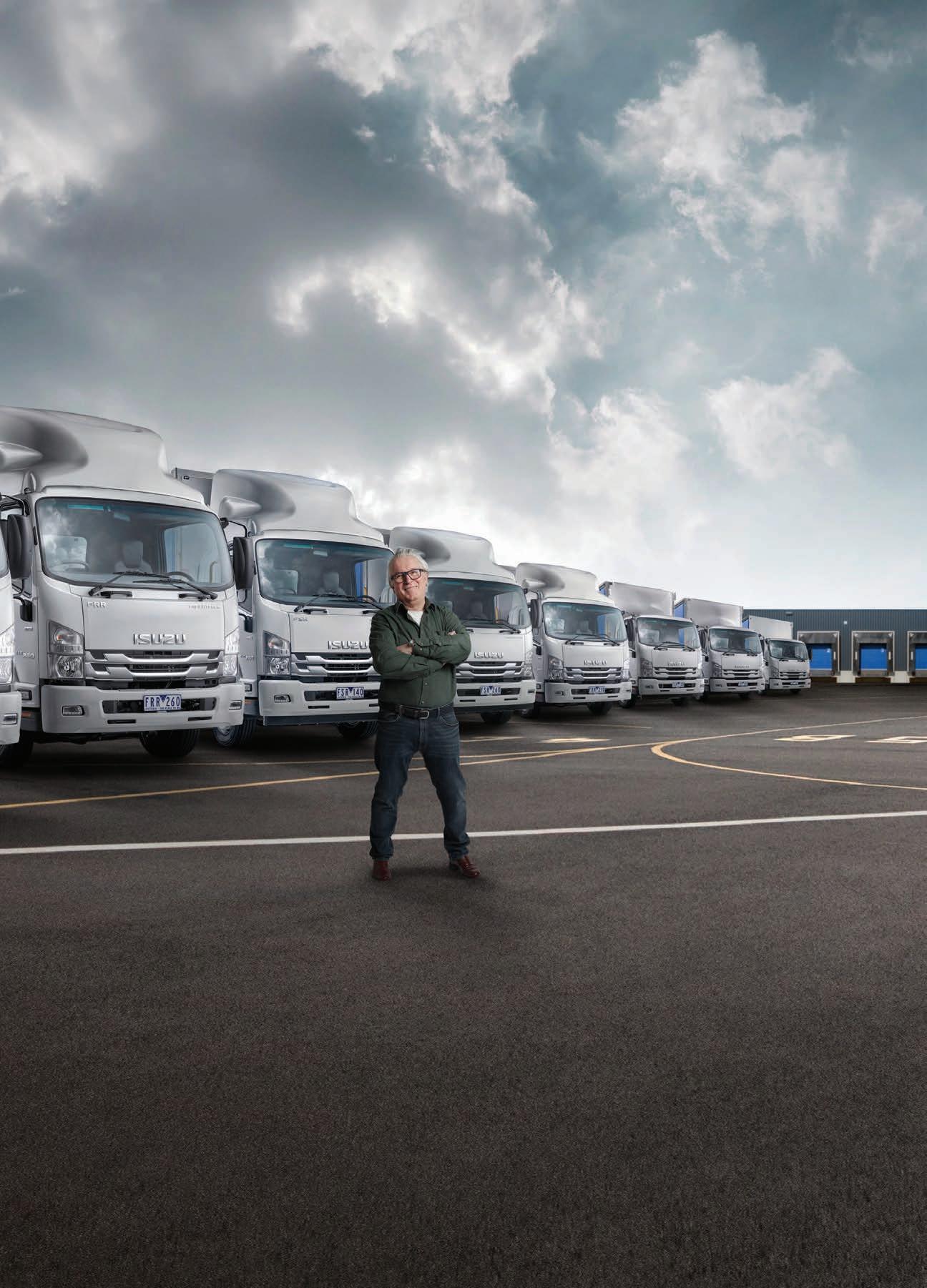














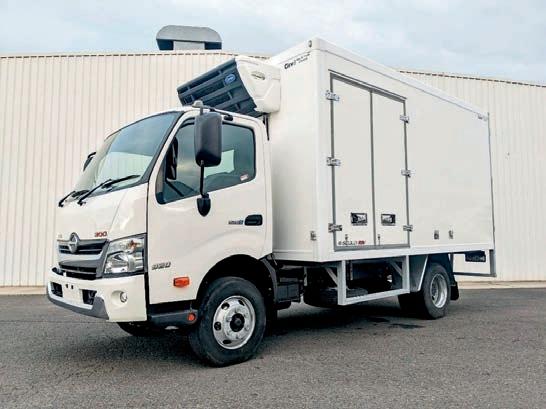























Deals Data – New Truck Sales
8 August records tumble as sales soar
Deals Showcase
10 Find out more about Caltex fuels and lubricants
12 2018 Isuzu Giga CXY 455
19 2016 Mack Granite
20 2018 Kenworth T610
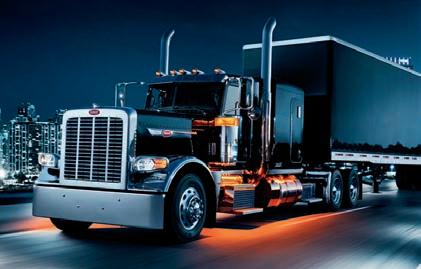
51 News
Comprehensive coverage from around the industry

ATN diagnostics
Warren Clark discusses the move away from fossil fuels
Is it time to apply low emission zones to our cities?
Queensland's apprenticeship scheme a win for QTA

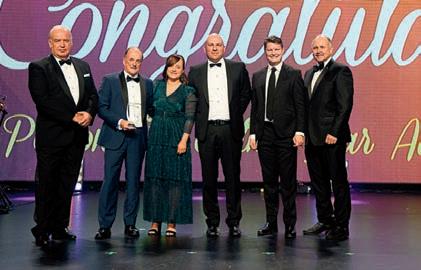
M AN’s new range of trucks features new designs focused on driver comfort, improved handling and –most importantly – a higher level of safety. Here we take a first look at what’s on offer
At the 2022 IAA Transportation show in Hanover alternative fuels is the name of the game
Casino Truck Show was back in style with nearly 400 trucks rolling into town
Loads of giant rigs were on show recently at the 43rd Walcott Trucker’s Jamboree at Iowa 80 truck stop. With so many huge trucks on display, it was a good time to ask the question of why American trucks are so much bigger than here in Australia
It was lucky number 11 for Brenden Cook of Dalrymple Landscape Haulage, who is the proud owner of the last of a limited edition set of Cheyenne Western Stars






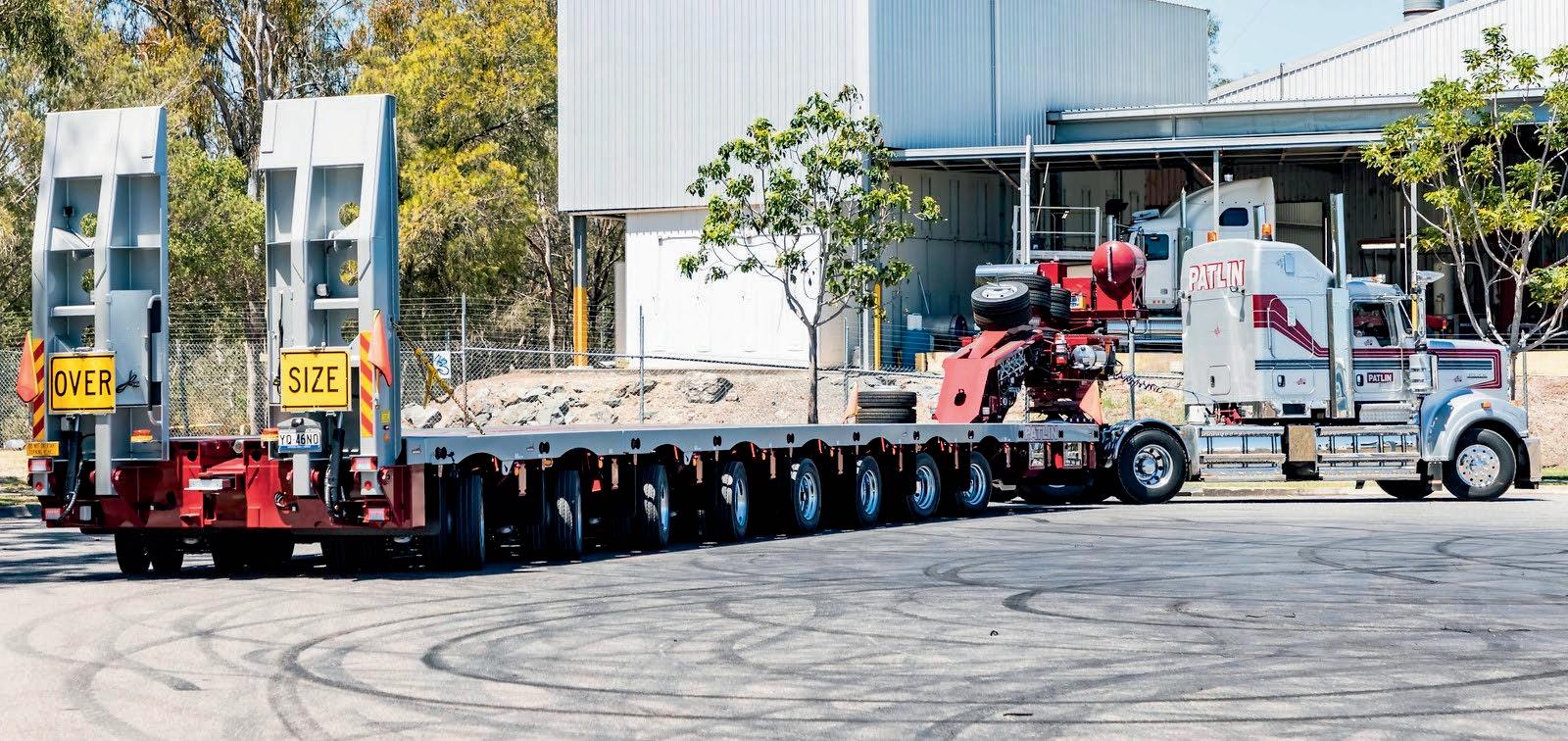
A new record was set in the heavy-duty segment with a total of 1,325 heavy vehicles delivered – up 232 on last year – bringing the segment to 9,308 to date. This surpassed August 2018’s result of 1,257 by 68 units and saw a 1.5 per cent growth in heavy vehicle sales in the January–August period.

Interestingly, Kenworth actually sold more units last August, dropping eight to reach 281 this year, but Volvo brought the goods with a jump from 129 in August 2021 to 216 last month. That brought them to 1,910 and 1,386 units respectively YTD. Isuzu remained in third, snapping at the heels of Volvo with an August total of 179 and a YTD of 1,312.
After a dip in July new
sales are back on track to beat 2018 numbers, with an August result of 3,926 beating the previous August record by 81 units. This was an 11.5 per cent gain on August last year and brings the year to date (YTD) to 28,307 – smashing 2018’s 27,159.
Scania and UD Trucks had a scrap in the early 100s, finishing up at 111 and 101 units, respectively for August, with Scania pulling ahead in the YTD numbers at 694 compared to UD’s 632. Both showed strong gains on last August’s sales of 74 and 59.
Of the remaining manufacturers, numbers were generally up but Mercedes-Benz saw a large decrease from 101 last August to reach 60 in 2022 and Western Star dropped from 42 last year to seven.
DAF
VOLVO
In the medium-duty segment a total of 669 units were delivered – an increase of 4.7 per cent over August 2021, to bring the segment to a total of 5,223, which is 513 ahead on 2021. Unfortunately the heady heights of 2018 have not been breached here, falling short by just over 200 YTD.
Surprising nobody, Isuzu strode ahead with 338, up 66 on last August’s result. This brings its YTD to 2,352. Hino was comfortably in second place with 174, though that was a decrease of 21 compared to August 2021, bringing its YTD to 1,600. Fuso brought the last of the triple figures with 109, down from 2021’s 123, to give it a YTD of 866.
Of the remaining manufacturers, SEA Electric continues to pick up speed, recording four units in August.
In the light-duty market, with records busted last month, it was a It’s better news in the light-duty segment however, with the 2018 record also being smashed – this time by a huge 278 to reach an August 2022 result of 1,432. This brings the light-duty segment YTD to 10,326; an amazing 1,033 more trucks than last year.
Isuzu’s total of 704 put it exactly 200 ahead of its August 2021 result and puts it at 4,690 units for the YTD, accounting for a squeak under 50 per cent of August’s entire light duty sales. Hino held onto second with 229 while Fuso brought up third with 216 – both down on last year’s results – while Renault swung the opposite way with a gain of 41 to reach an August 2022 total of 64. Mercedes-Benz also saw a gain, up from 28 last year to 56 this year.
The short version of a long story is that Caltex is a global brand owned by Chevron – one of the world’s leading integrated energy companies with a 70-year history in Australia.
The Caltex brand was previously used by Ampol under an exclusive brand licence, however that is now no longer exclusive and, from 2023, the Caltex brand will be solely used by Chevron.
Back in 2020, Chevron also purchased the Puma Energy fuel business in Australia. That’s why you might have noticed established Caltex stations rebranding to Ampol, and selected Puma locations rebranding to new Caltex service stations.
Techron, for example, is a specially formulated engine-cleaning additive that will be available across all fuel grades at the new Caltex service stations. It removes dirt and prevents deposits from forming, helping to improve performance and enhancing engine life.
On the lubrication side, Havoline (for petrol motors) and Delo (for diesels) continue to be available for every kind of industrial operation – from mining to agriculture, power generation to construction, trucking to global marine applications. And with a broad distribution network.
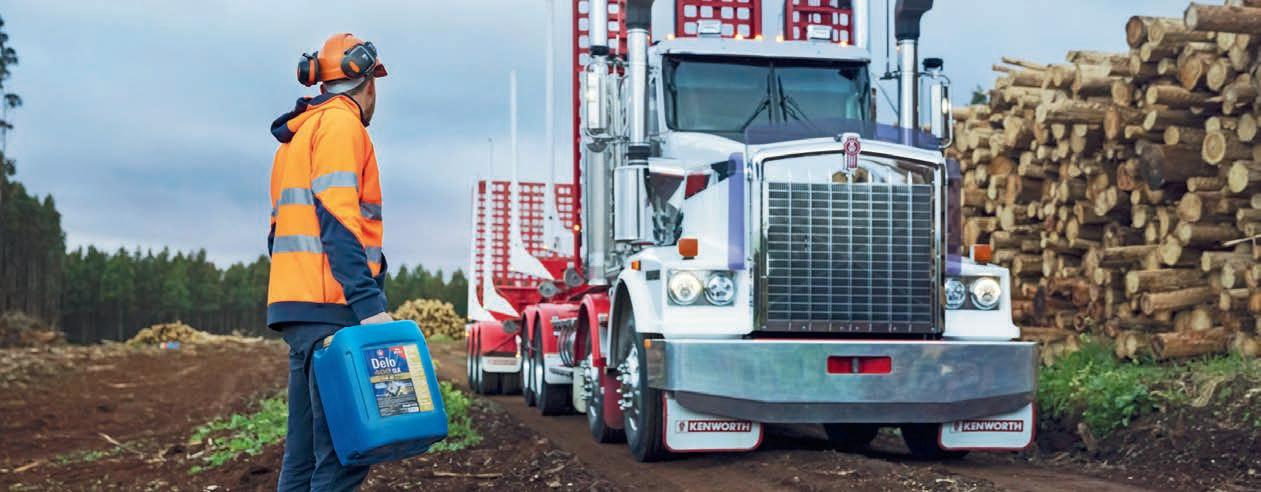
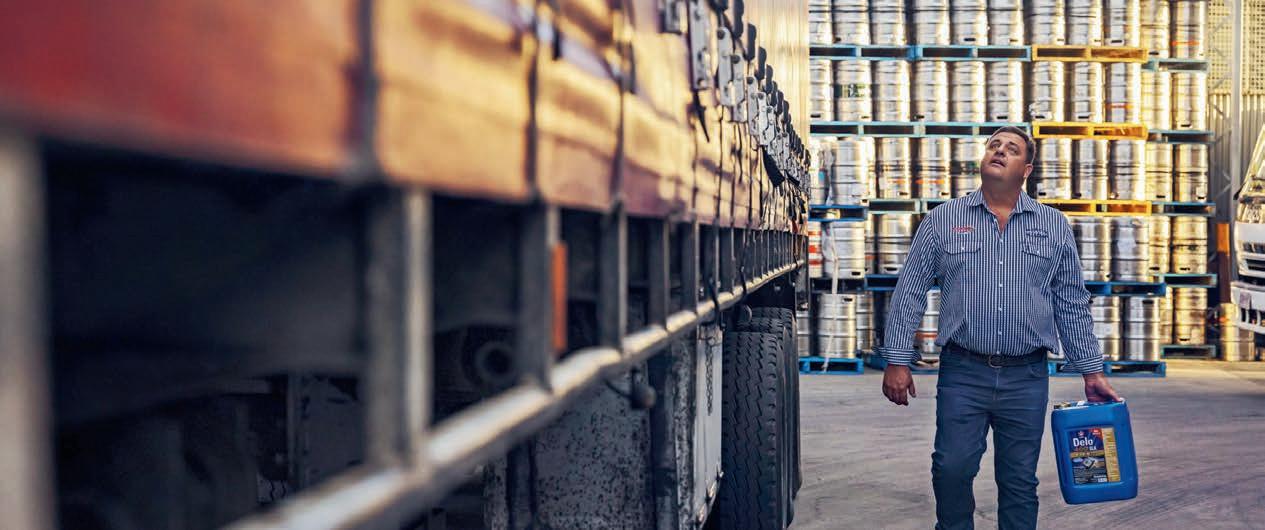
The Delo range covers a wide range of oils, transmission fluids, greases and coolants to handle every application
It matters because Caltex and Chevron plan to deliver high-quality products at fair prices through a wide-reaching distribution network.
Guided by the vision to be the global energy company most admired for its people, partnership and performance, it will offer quality fuels and industry-leading premium lubricants with great benefits.
Caltex is committed to the Australian market and making its products available to customers where and when they need them. Whether you’re running the family car, the farm or the company fleet, Caltex is there to support you with expert advice and fuel equipment solutions, quality bulk fuel supply, premium engine oils and reliable lubricants.
Talk to your local distributor or find out more about Caltex fuels and lubricants at www.caltex.com/au/business-solutions
Caltex is back – but really, it never went away, and it has big plans for the future


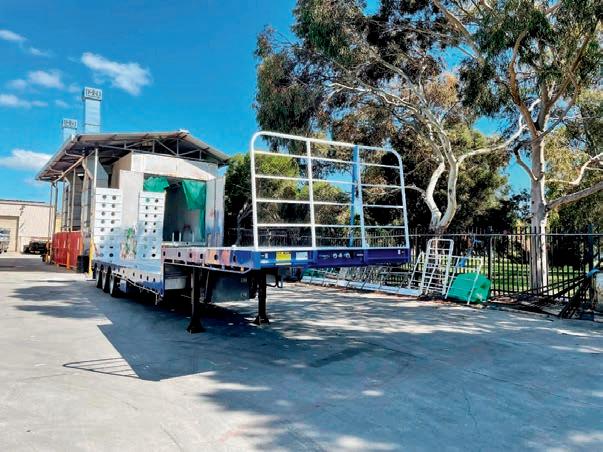
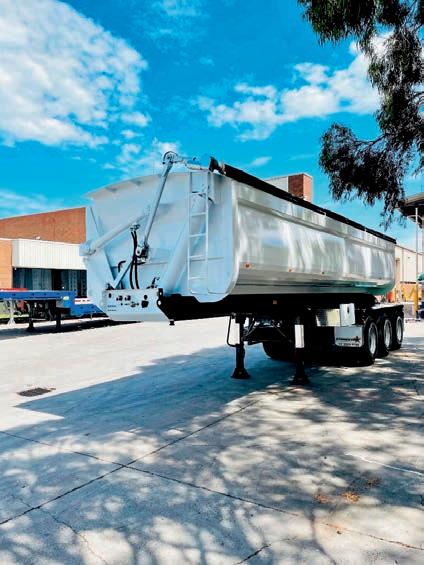
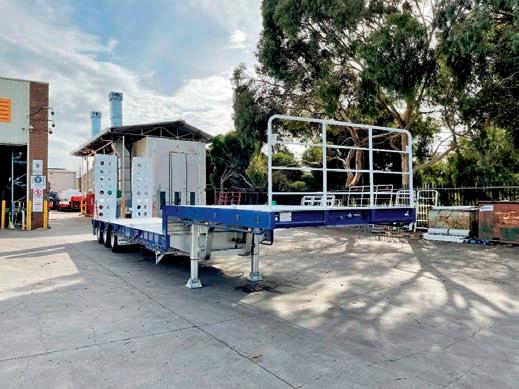
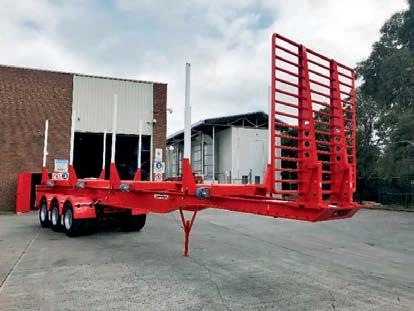
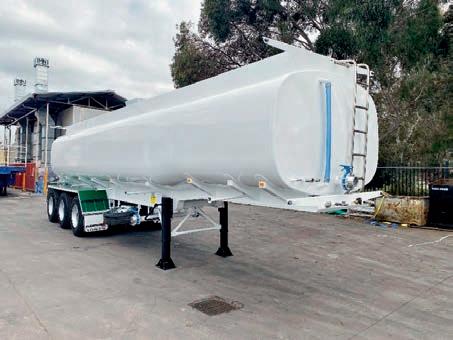

With Isuzu having just released a whole new range of Giga heavyduty trucks, it’s clearly a model that the Japanese manufacturer is maintaining faith in as it competes with the heavyweights of Kenworth, Volvo and Scania.
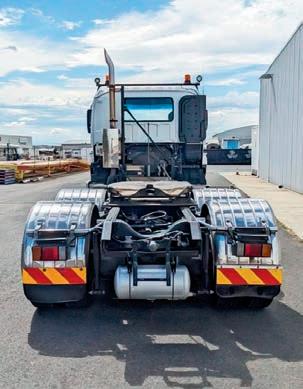



If you’re a sucker for a big bonnet this 2018 Giga CXY 455 may not necessarily catch your eye on the road, but the Giga was designed with a focus on driver comfort and fuel economy to suit those that need to get the job done and leave the polishing to somebody else.
With a GCM of 54,000 and a 455hp (339kW) turbo diesel engine the Giga CXY with its automatic transmission, Hendrickson airbag suspension and fixed turntable is idea for a range of shorthaul applications.
For more information, call City Bus and Truck Centre on 03 8373 7111.

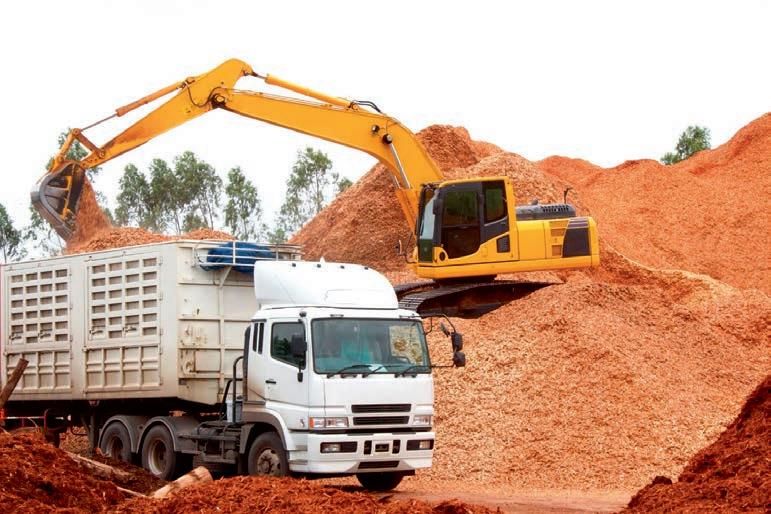

2022,paneltrailer.S26.
2022,Semiwithpins. HSD553. TA811006.
2022,SALE!BRANDNEW!. ZS100124.
AAATRAILERSTRIAXLETAG WIDENER 2022,New.Straightdeck
AAATANDEMAXLETAG TRAILER-EBS 2022,..S33. TA1051493. $47,000+GST
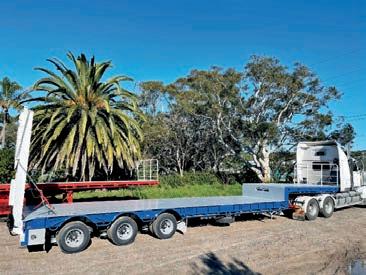
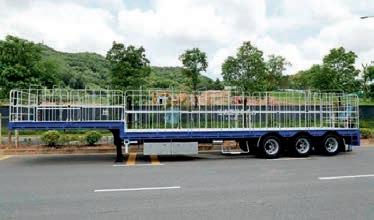
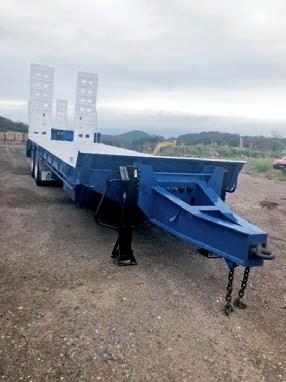
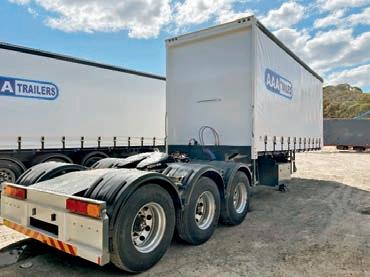


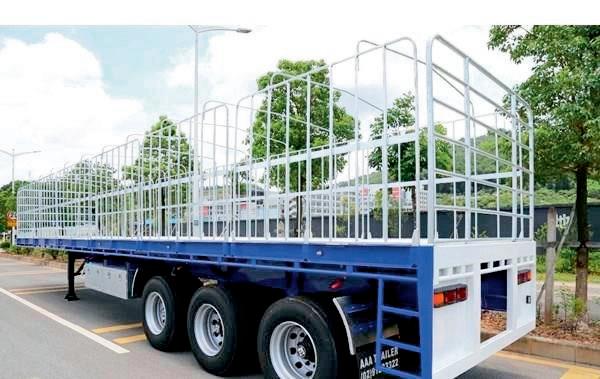
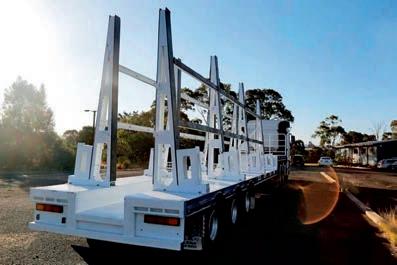
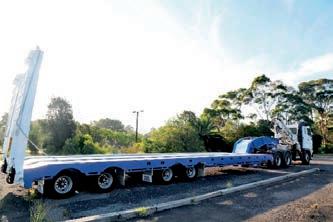

2022,..S16.
2022,..G0011236.
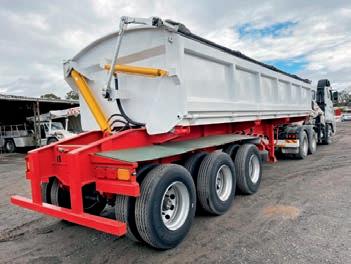
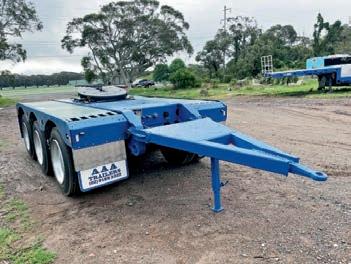
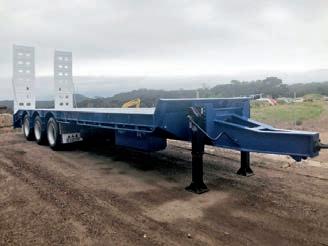

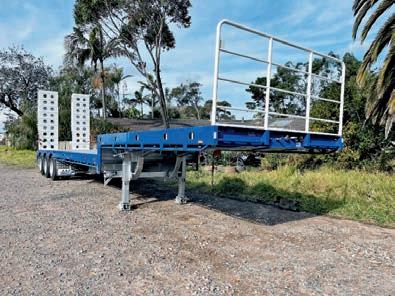



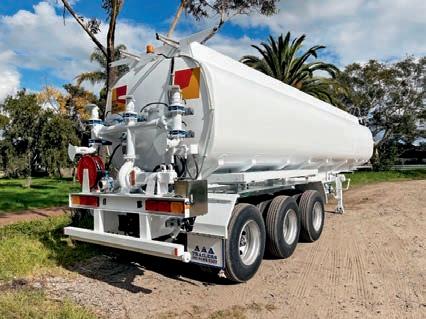
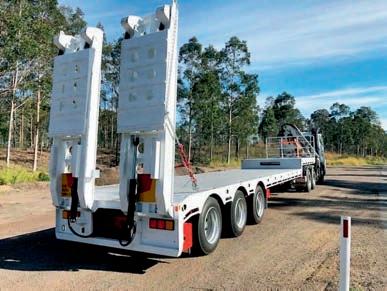
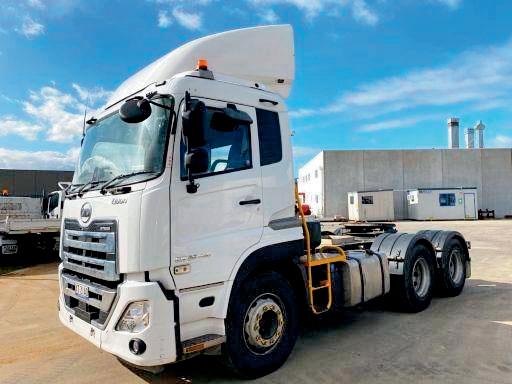

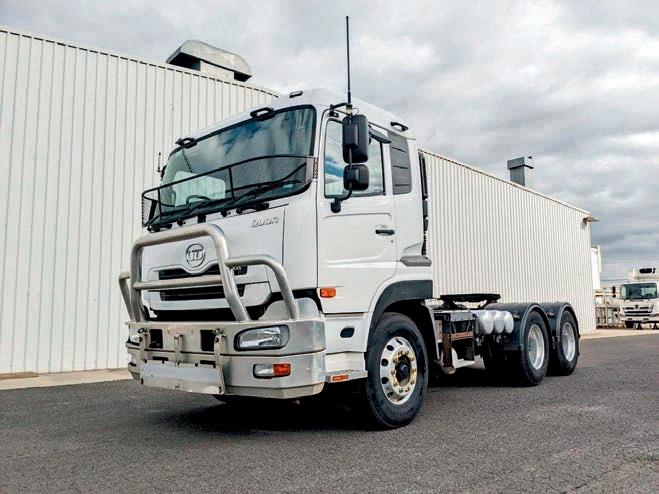

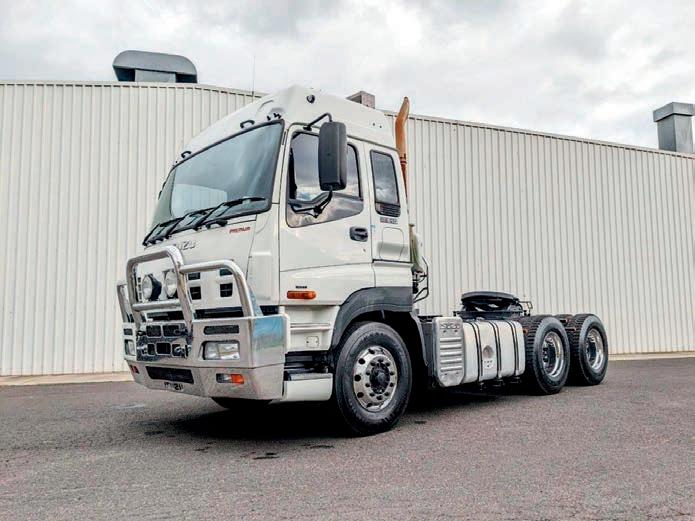

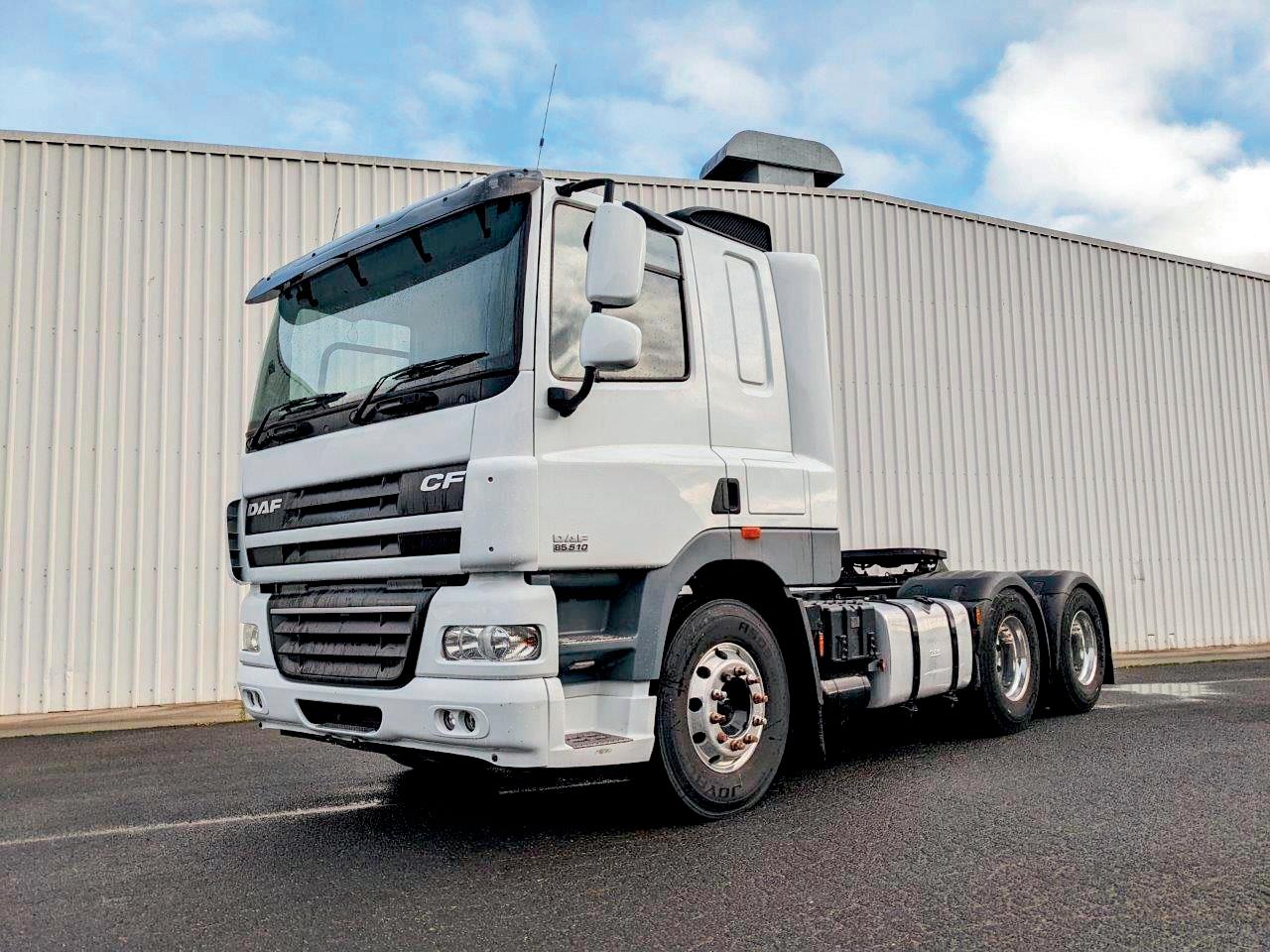
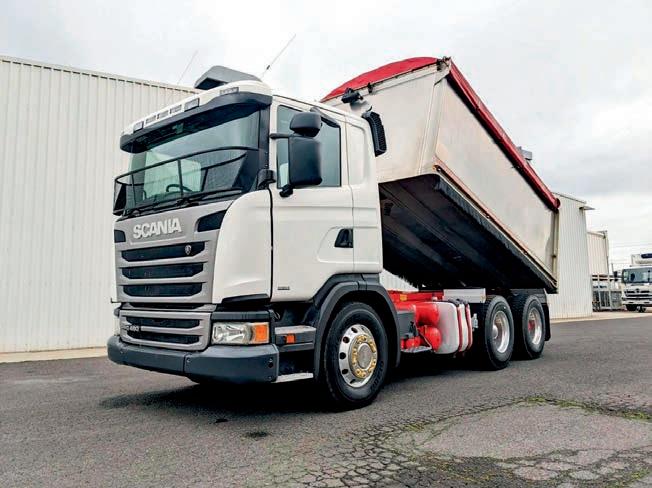
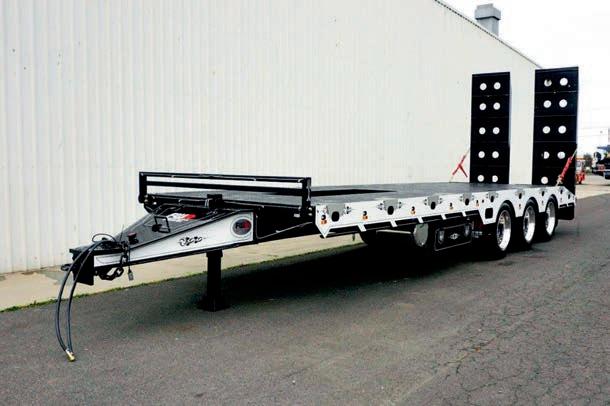
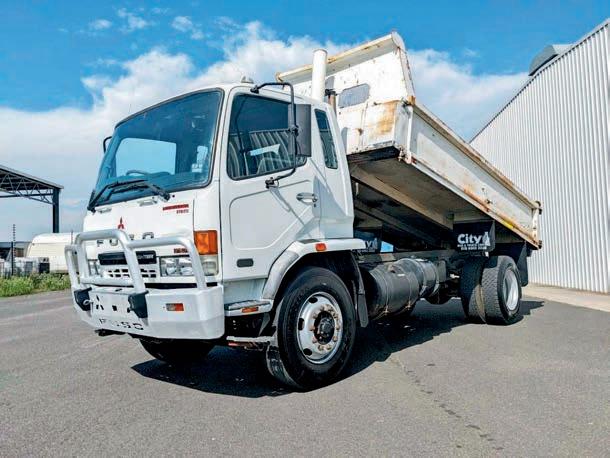
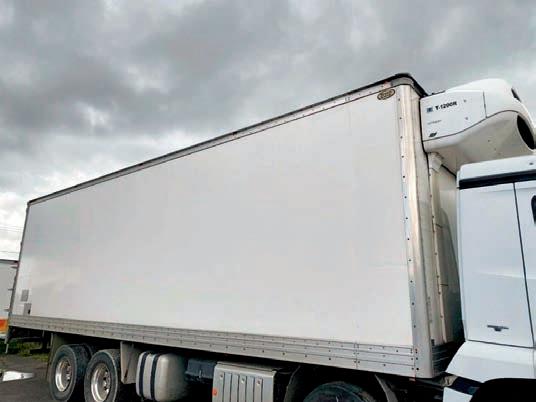
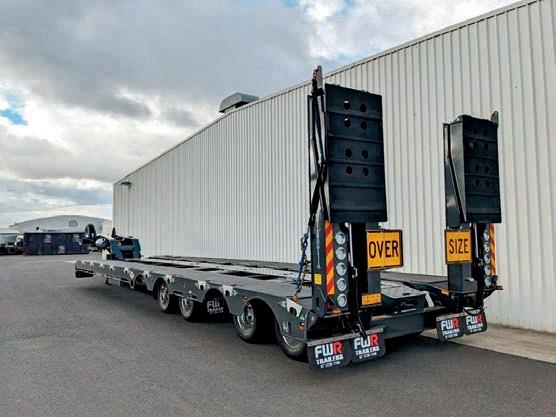

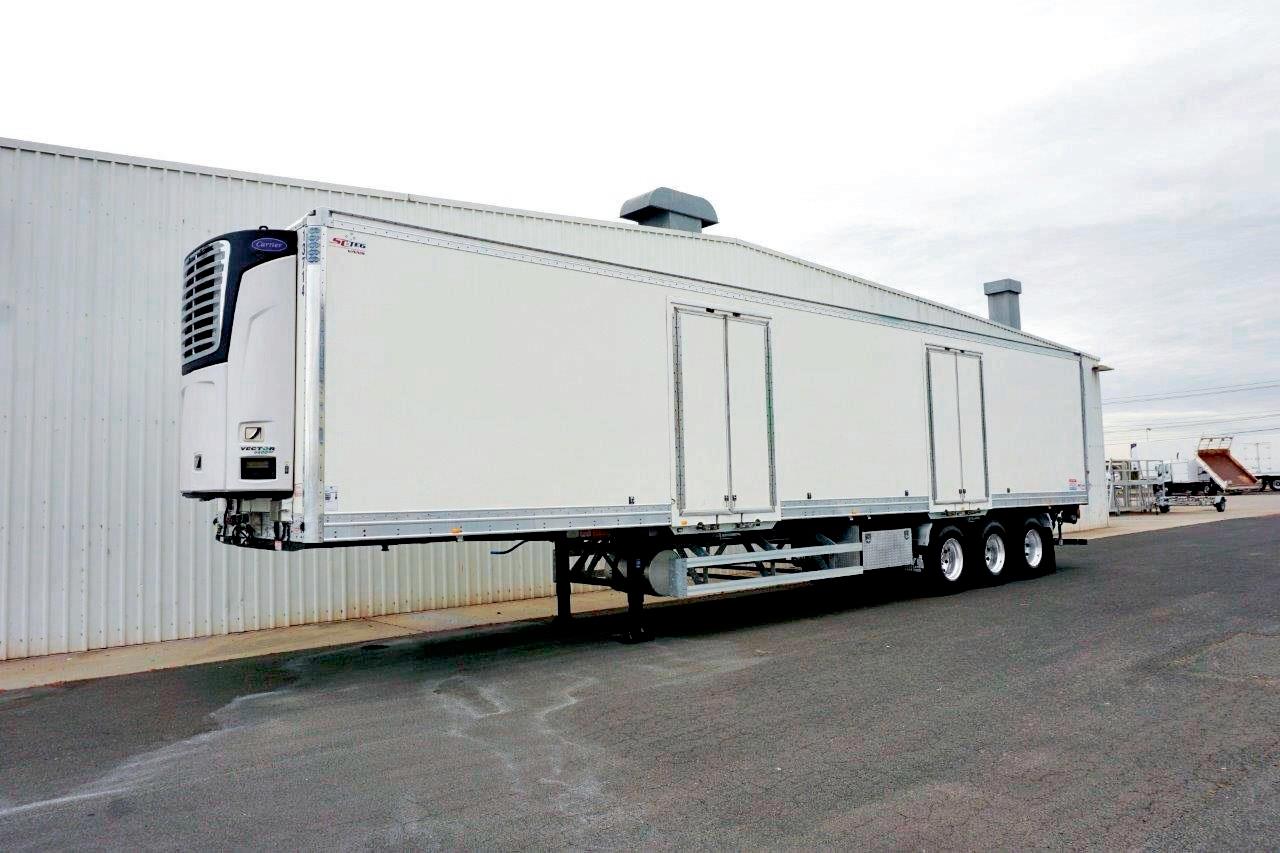


If you’re looking for a tipper with personality, it would be difficult to beat a Mack Granite for sheer heft and presence. Born to handle heavy, dirty work these were engineered for great vision down the sloping bonnet, plenty of grunt and dash that has everything conveniently within reach.

Having done its share of hard work over 775,296km, this 2016 Mack Granite comes with an MP8 and auto transmission, alloy rims and a FUPS alloy bumper. Behind it is fitted a new YLZ Hardox tipper coming in at 4.4m long by 1.15m high.
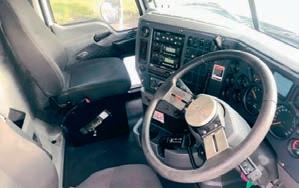


It is one smart-looking machine, so get in there now.

For more information, call CTR Truck Sales on 03 9998 4948.
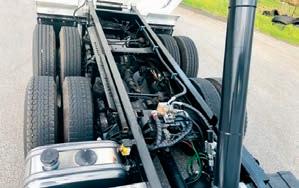 full auto transmission
full auto transmission
If stacks, shiny metal and a big, beefy bonnet are absolutely for you we have this 2018 Kenworth T610 all spruced up and ready to take on the kilometres. Still comfortably under the million km mark, a Cummins X15 E5 bring 550hp (410kW) is mated to an Eaton 18-speed Road Ranger, and an oil consumption rebuild was recently done.

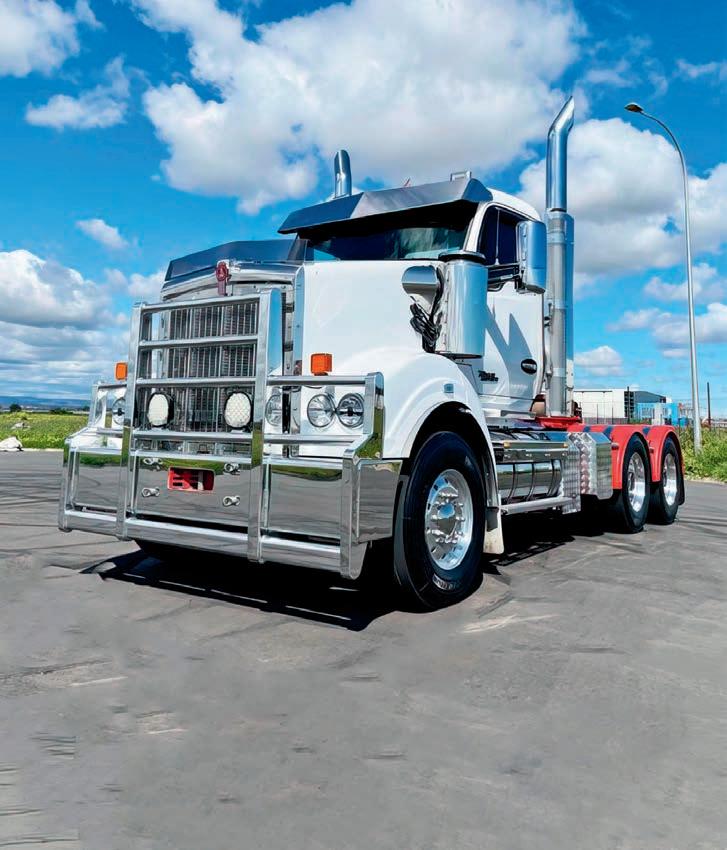
On the inside there’s the usual woodlook dash but a change of pace with grey padding as opposed to the classic maroon. Being a day cab there’s a large window in the back and storage between the seats.
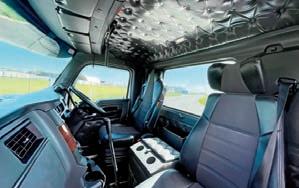

Rated for 97 tonnes GCM this is a mighty fine rig to cruise down the highway in.
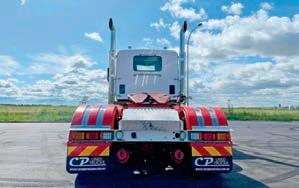
08 7007 6836.
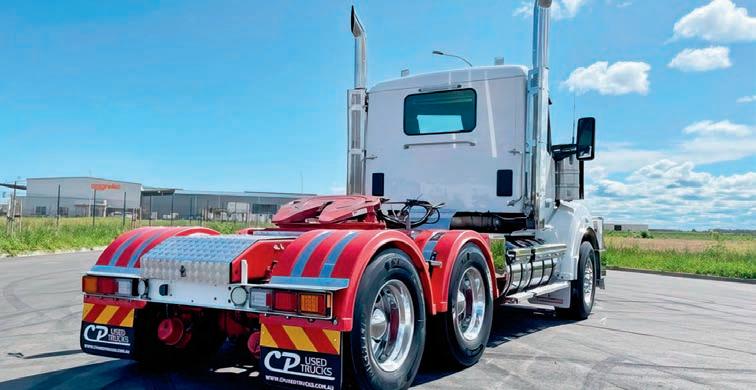
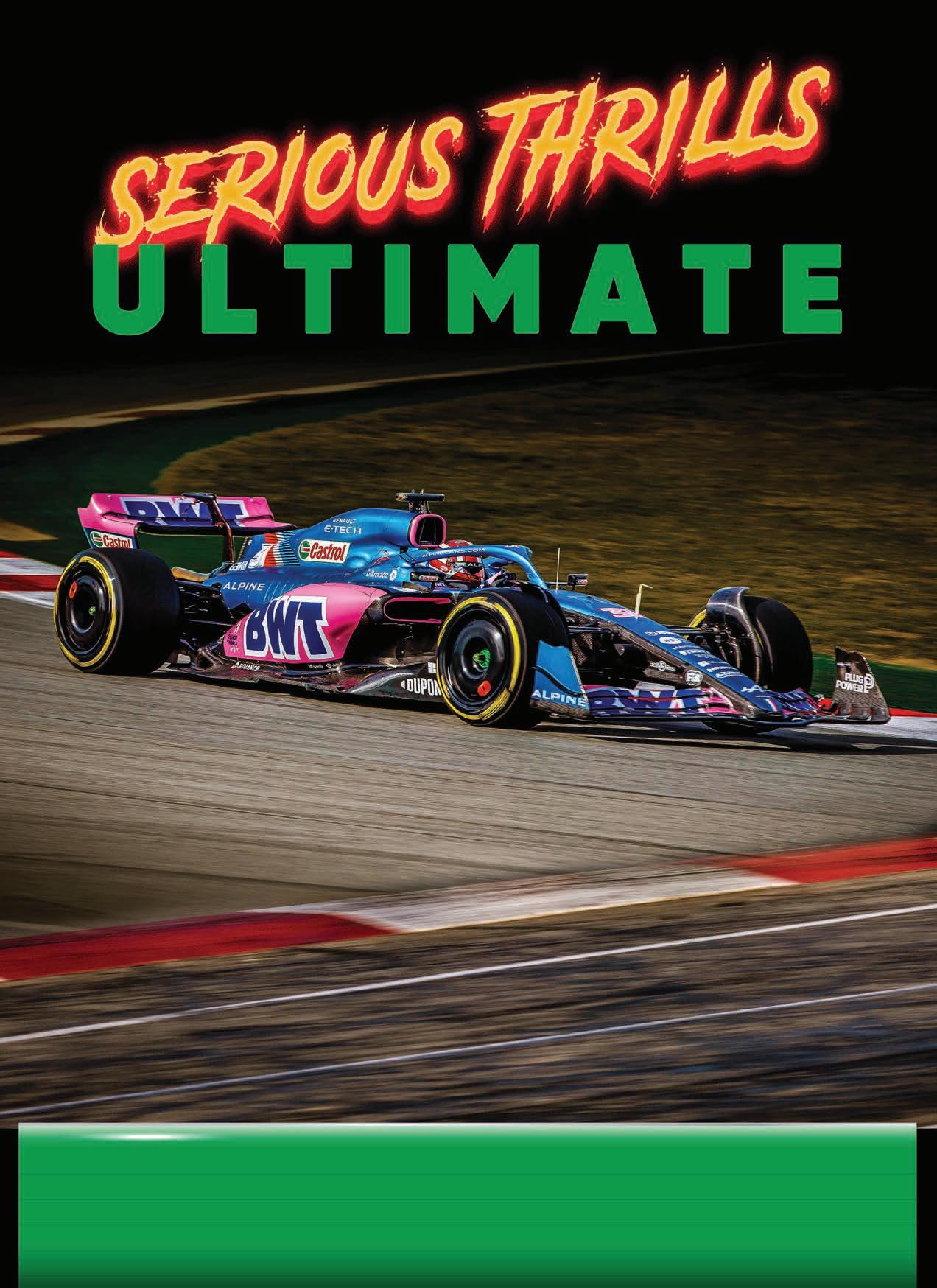
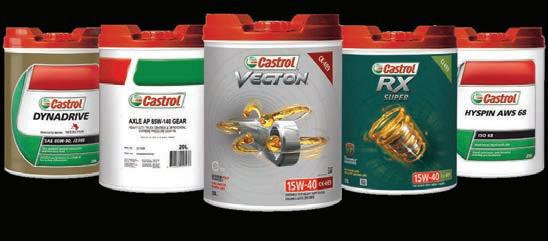

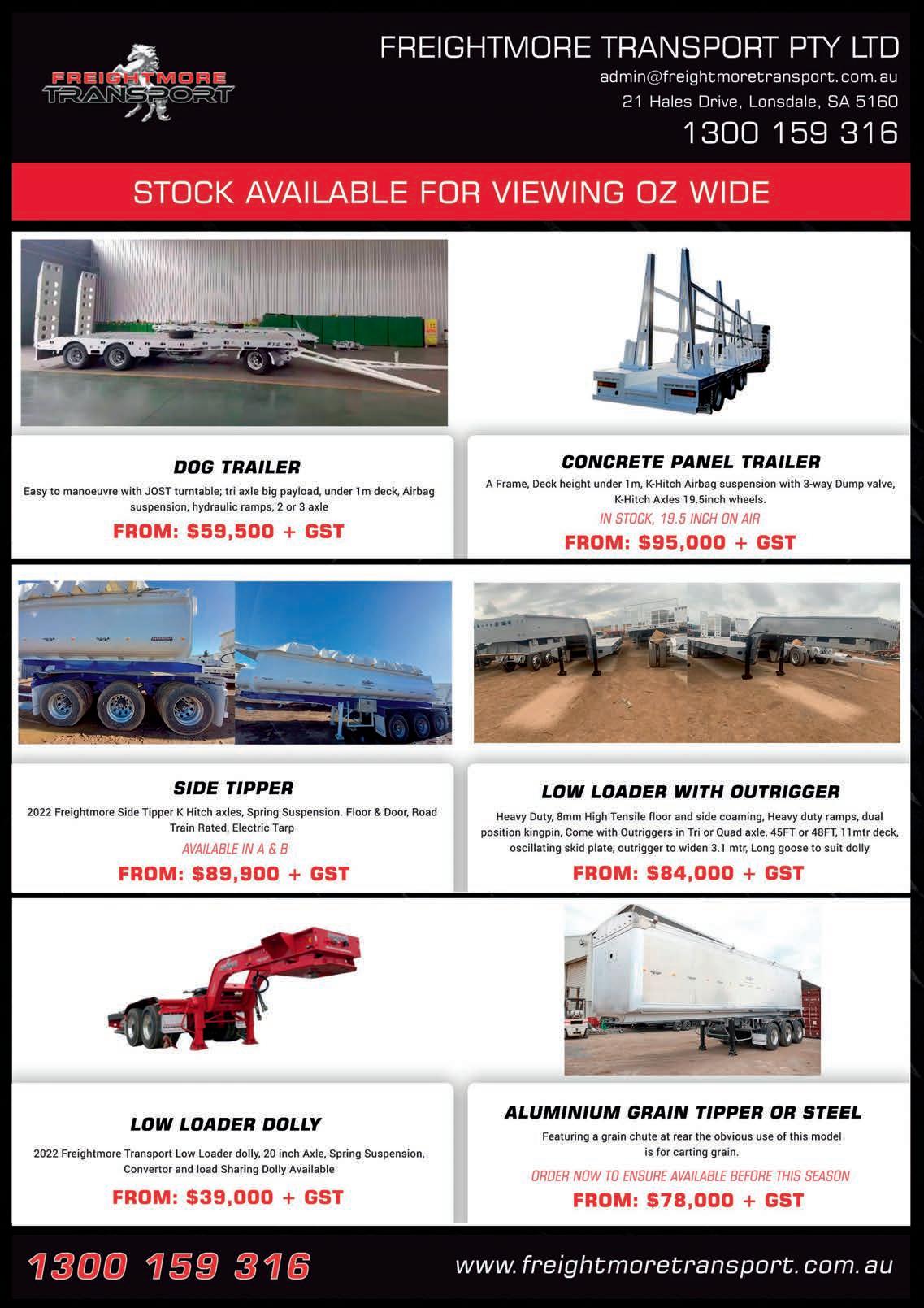
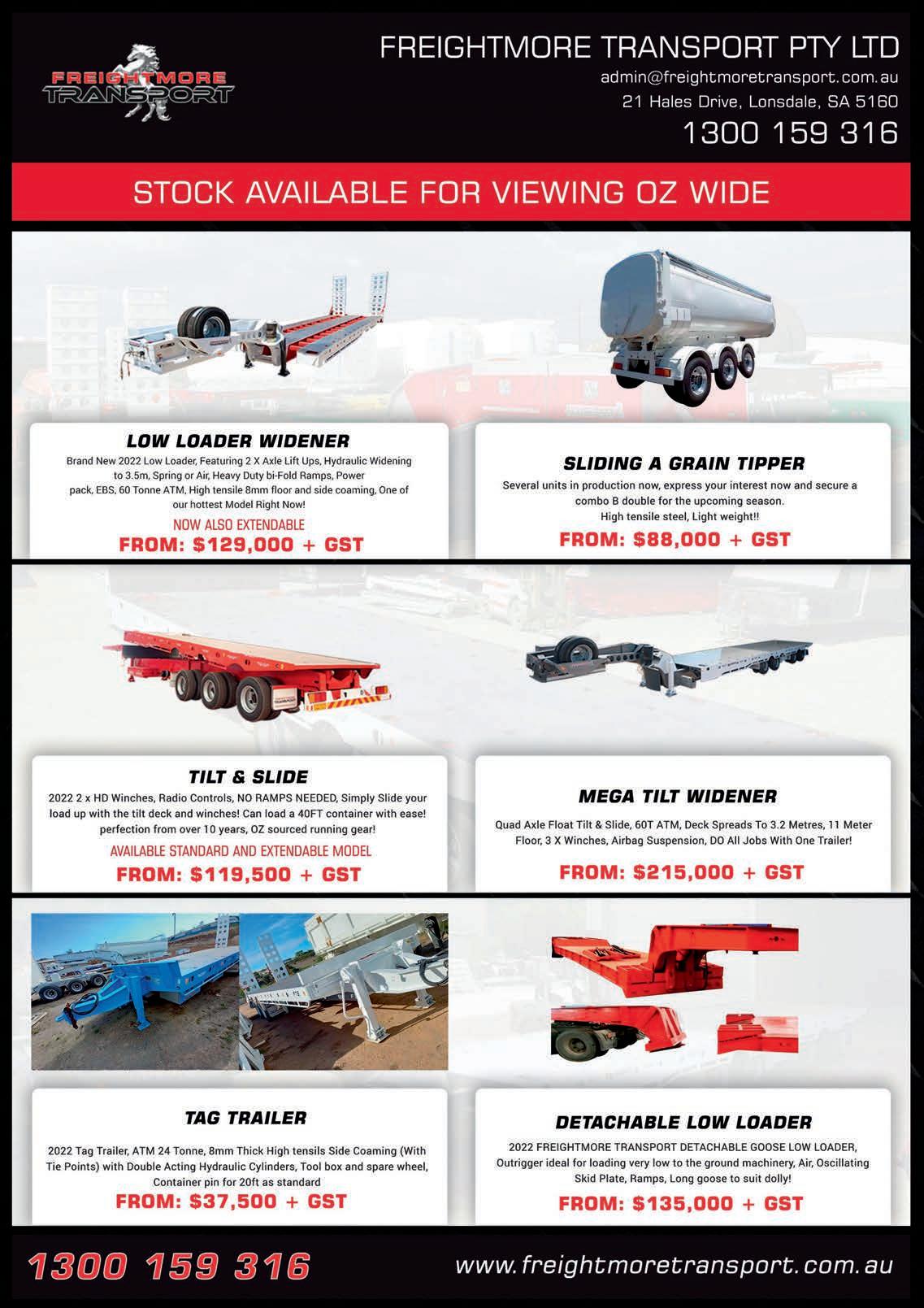
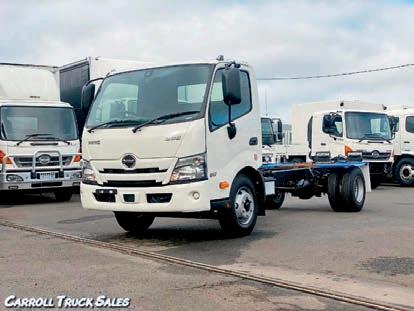
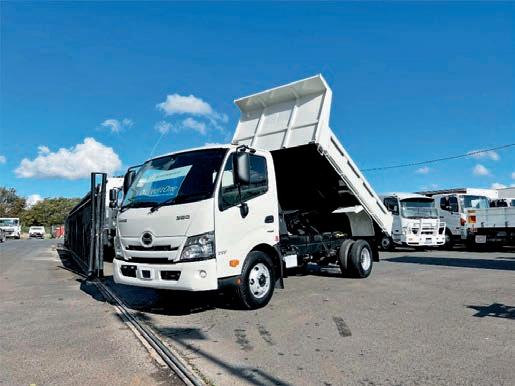
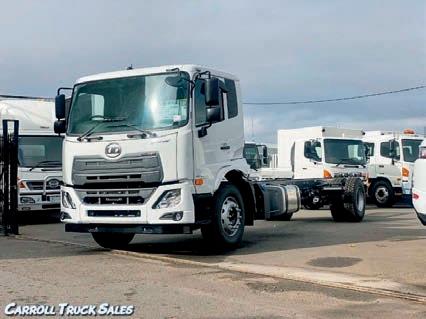
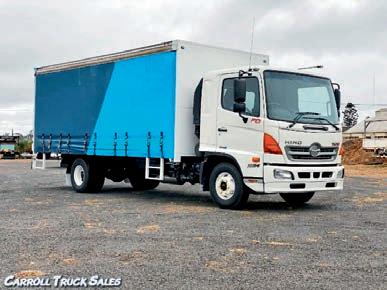
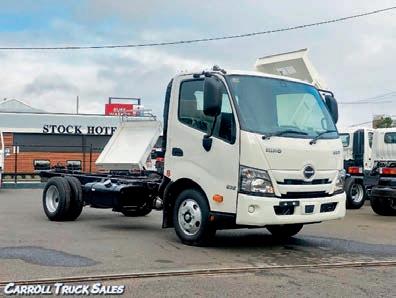
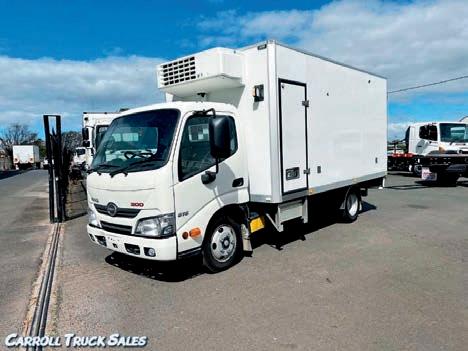
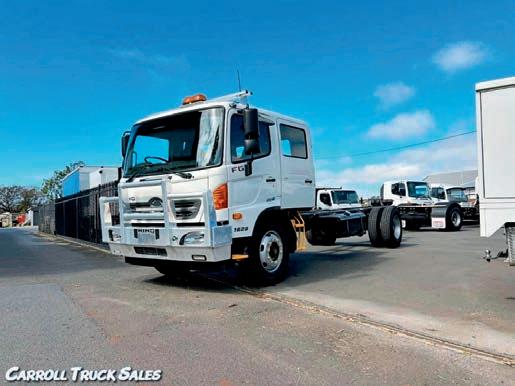
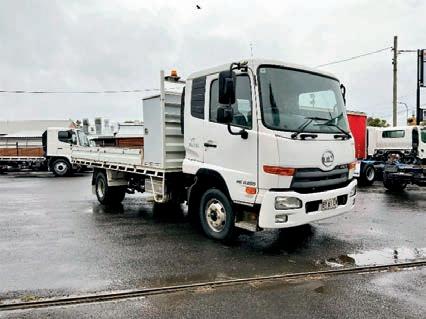
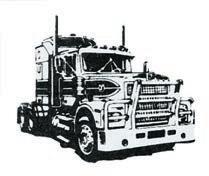

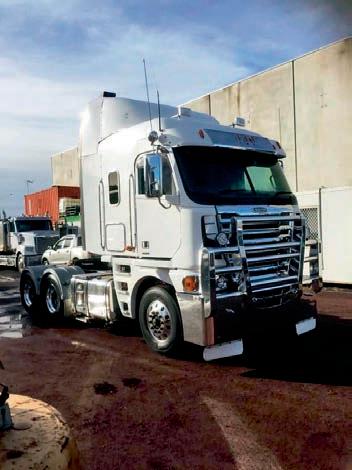
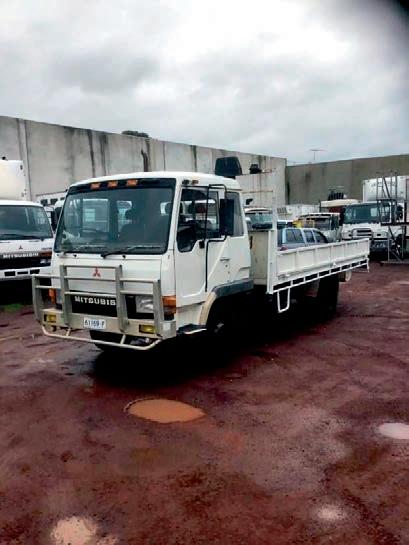
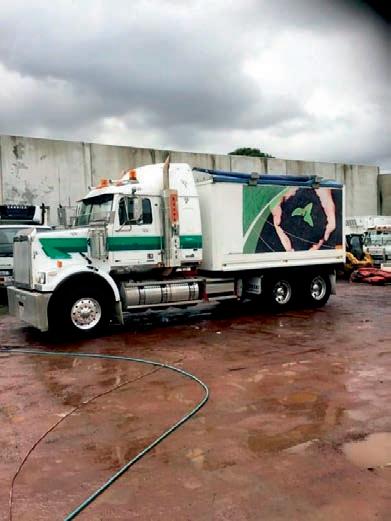



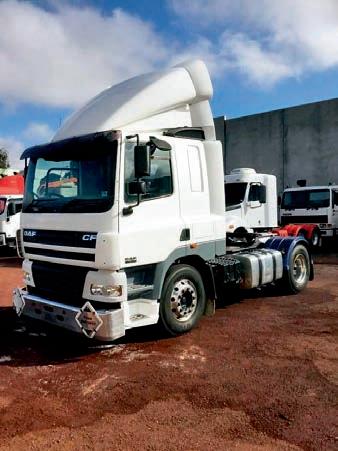








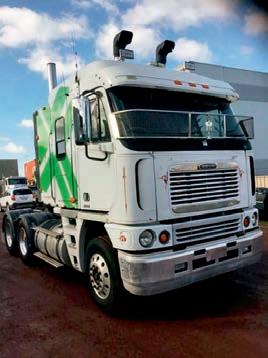

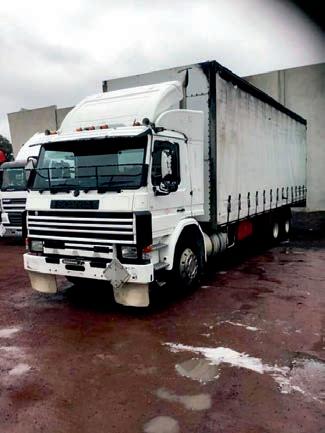

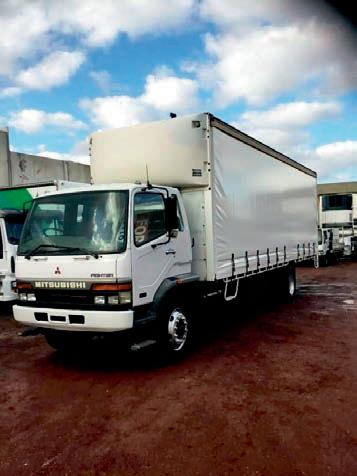
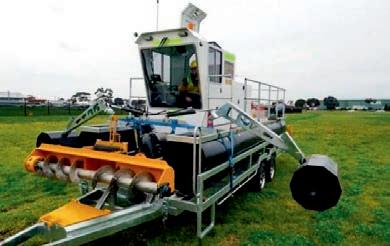
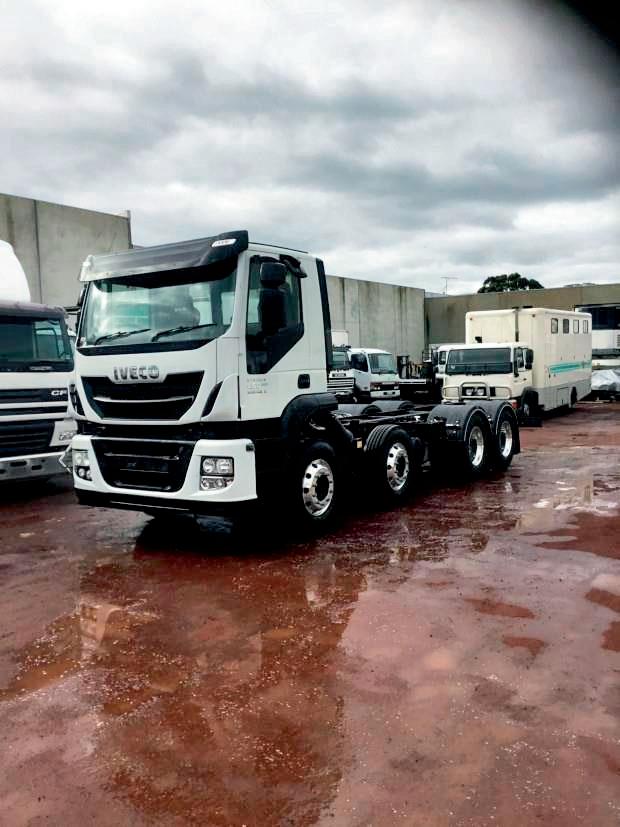
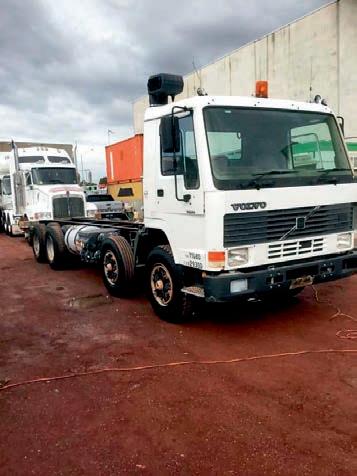

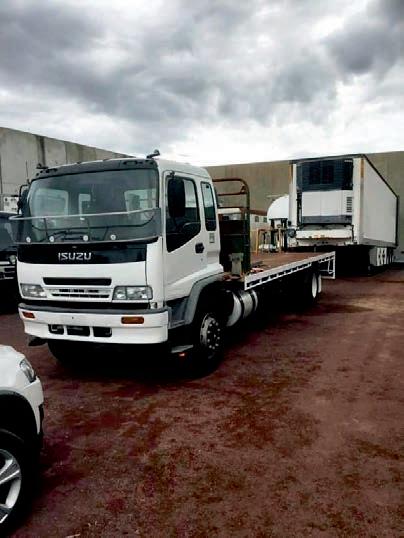



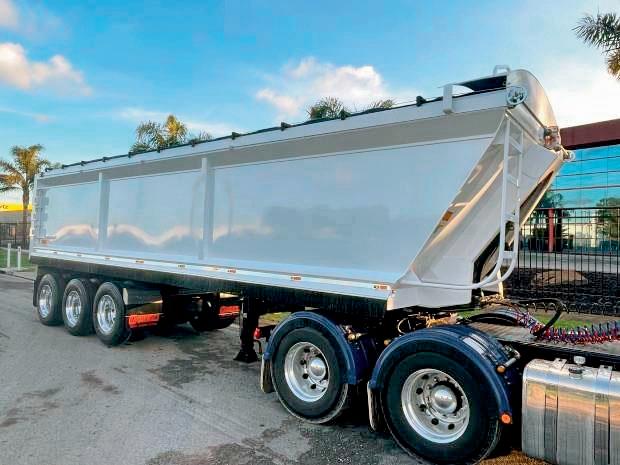
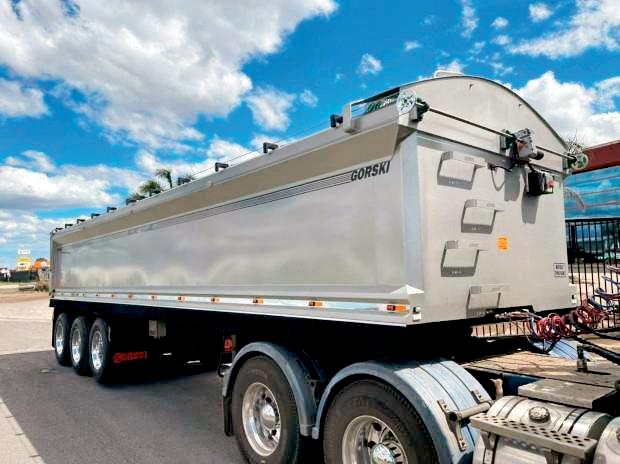

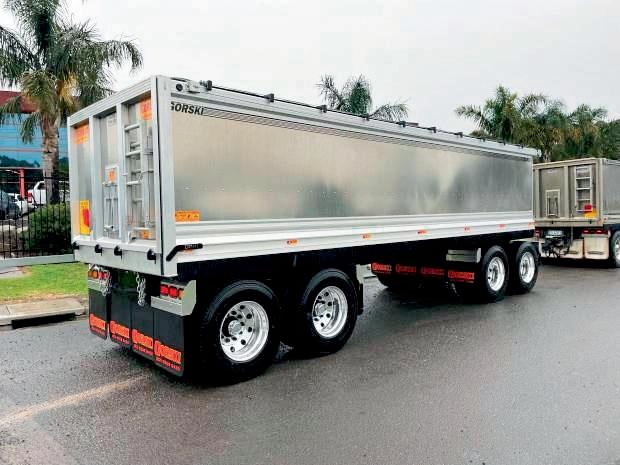
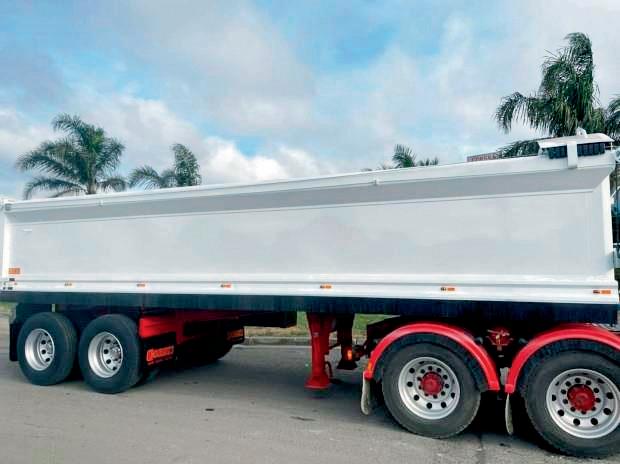


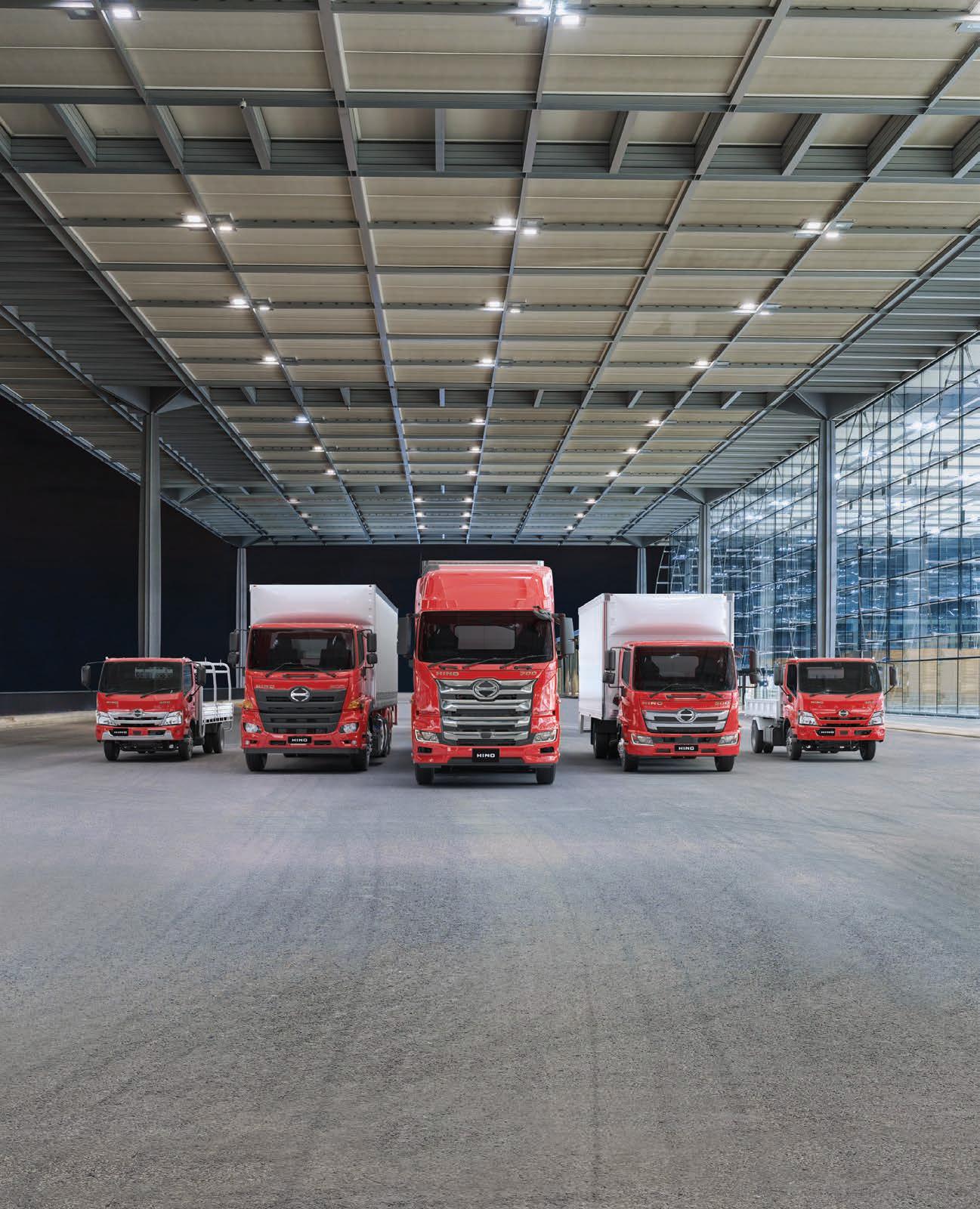
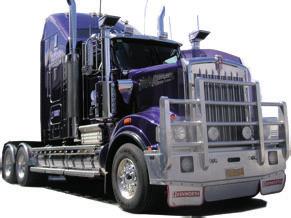
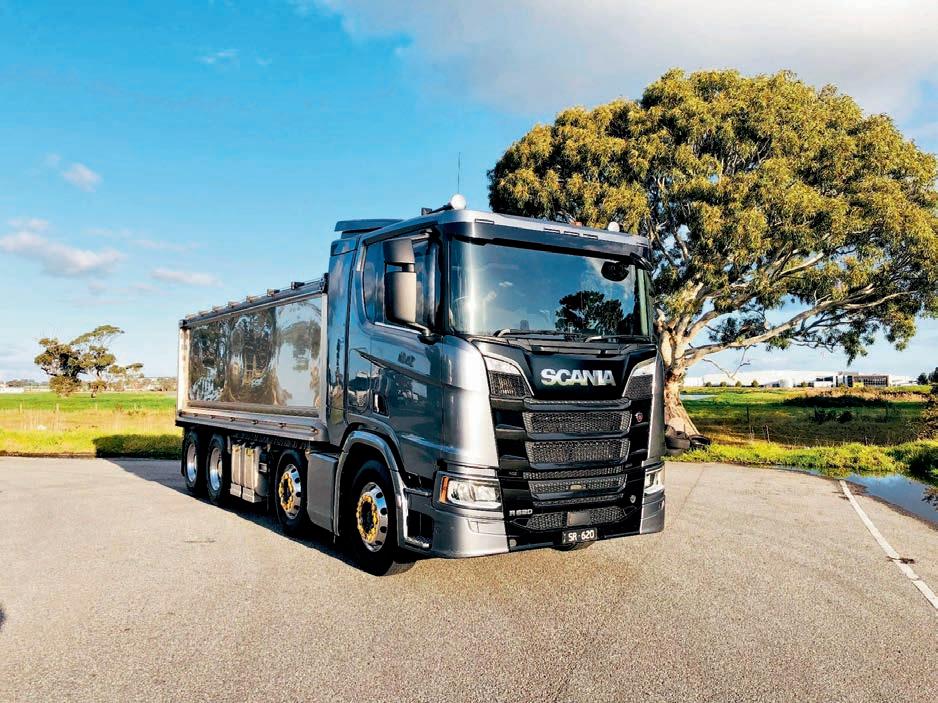
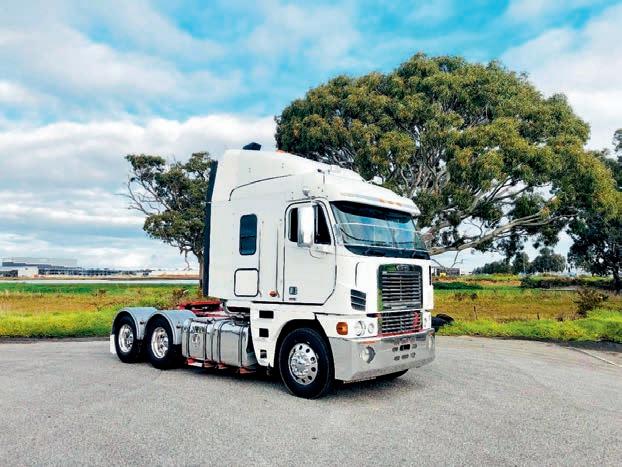

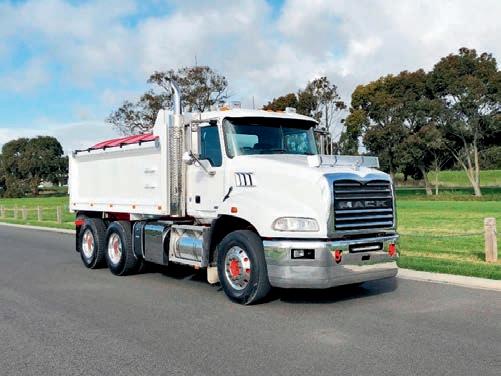
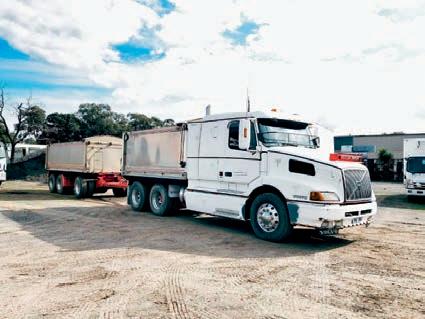
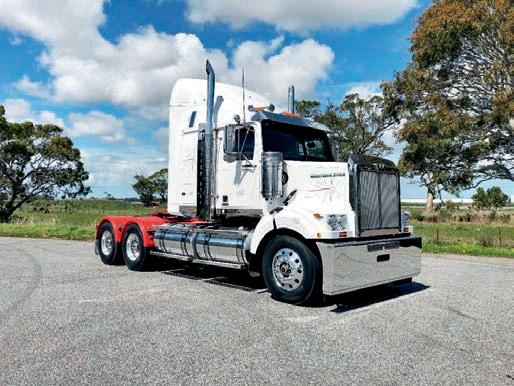
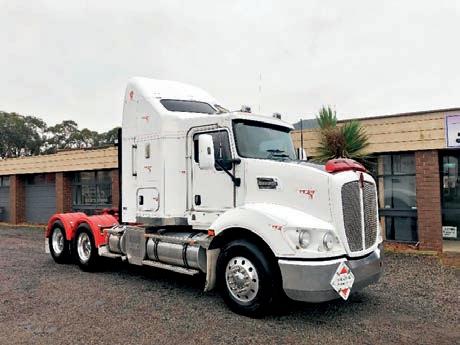

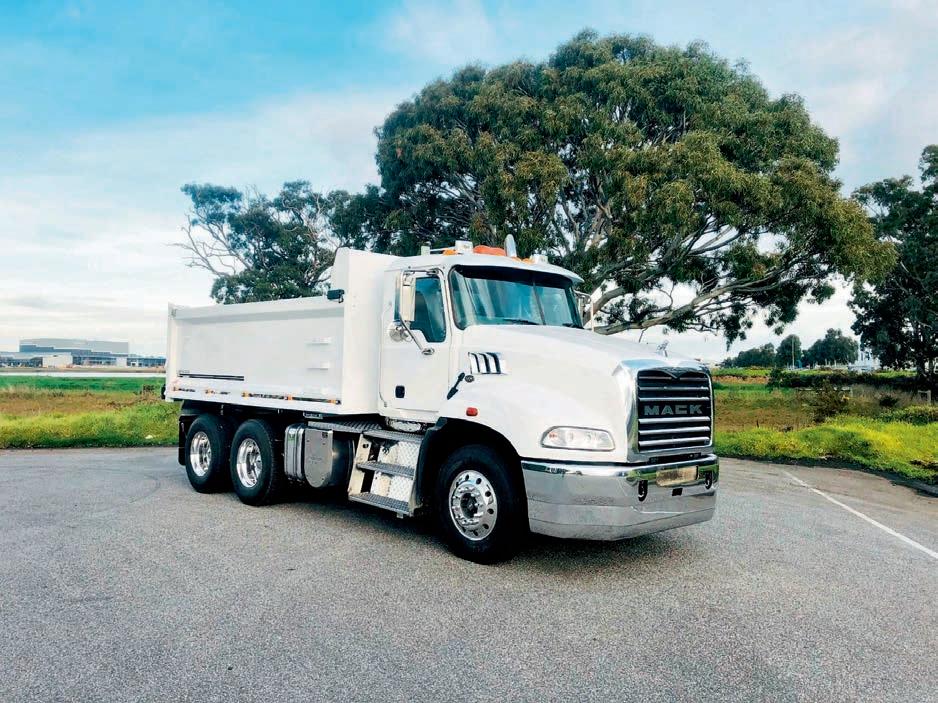
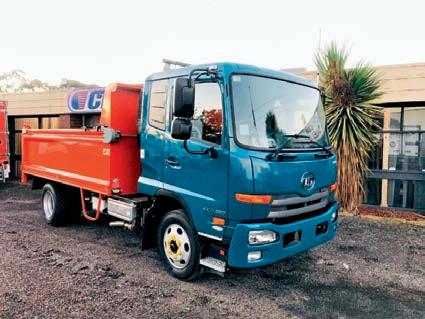
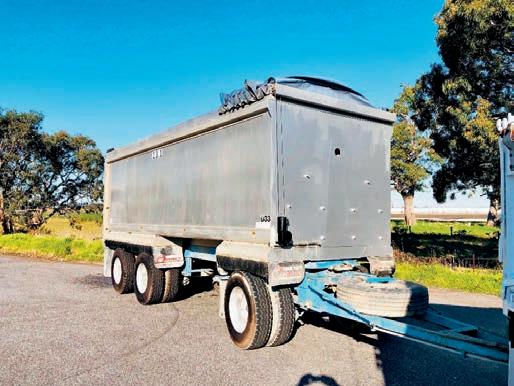

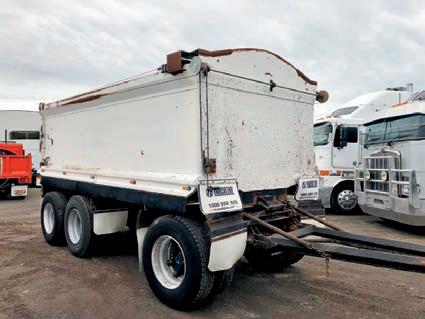
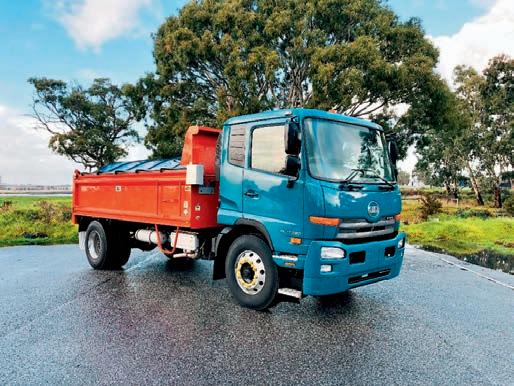
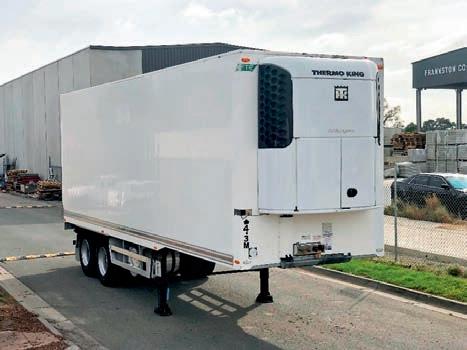

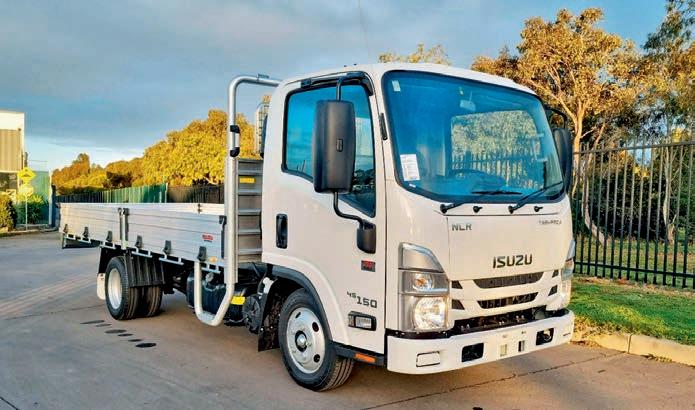
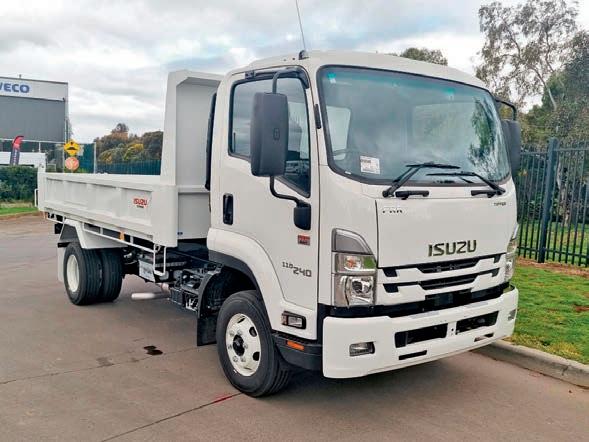
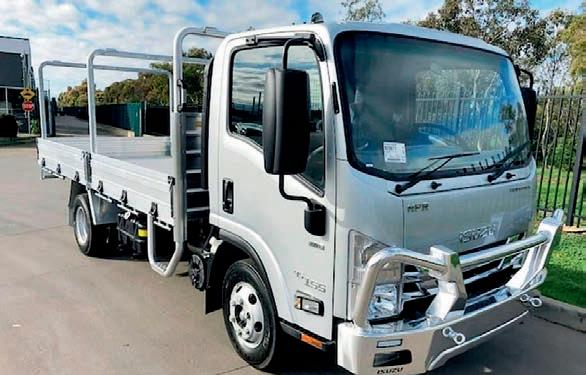
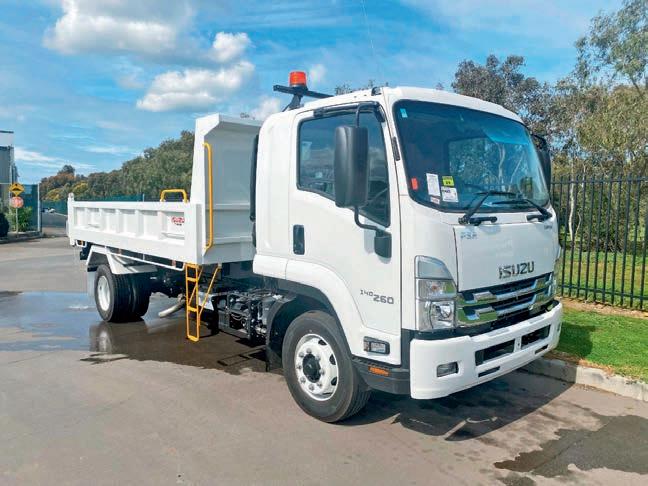


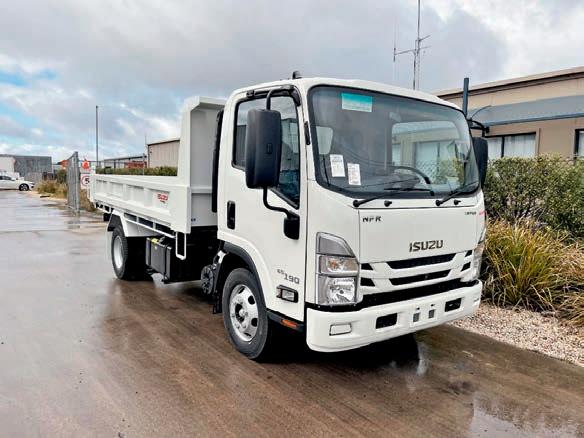



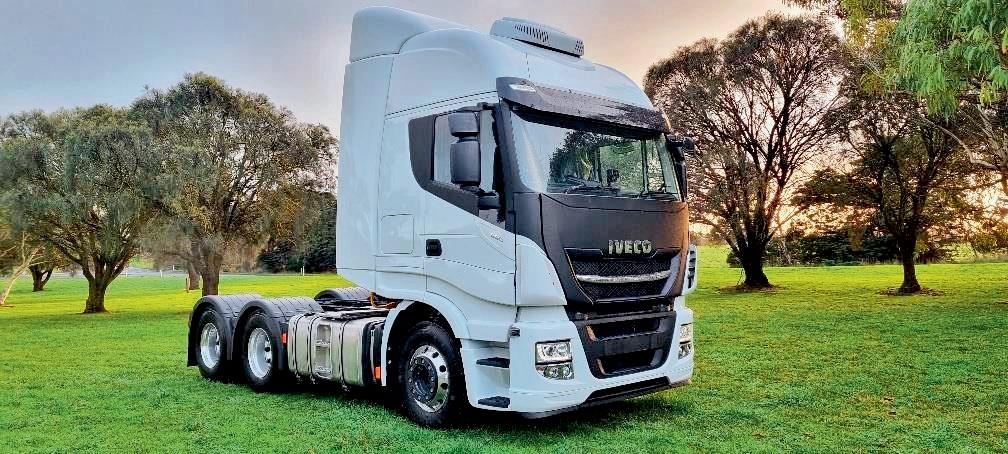


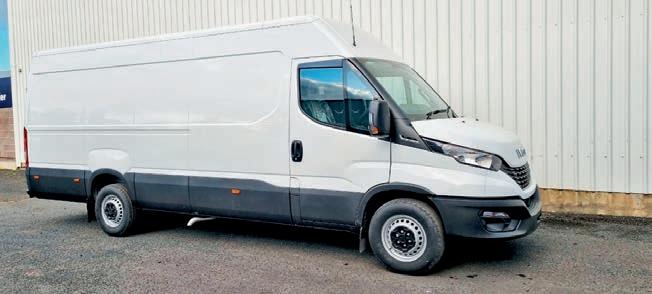
At Caltex, we are committed to providing the most advanced premium industrial lubrication technologies available for every kind of operation - from mining to agriculture, power generation to construction, trucking to global marine.

No matter what challenges you might face, the journey will be Smoother, Better, Together with Caltex.
Talk to your local distributor or find out more about Caltex fuels and lubricants.
www.caltex.com/au/business-solutions
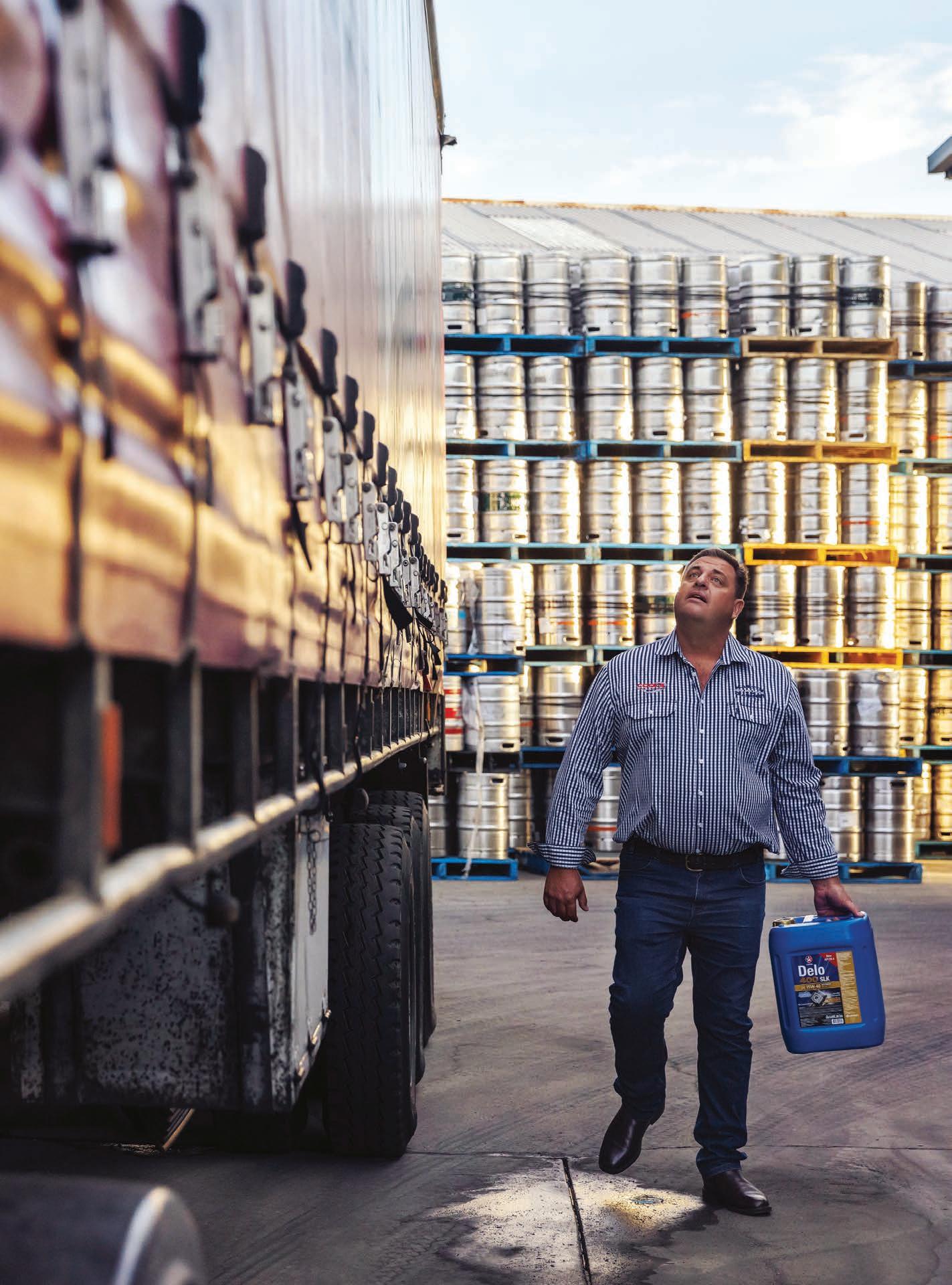
TA1141082.
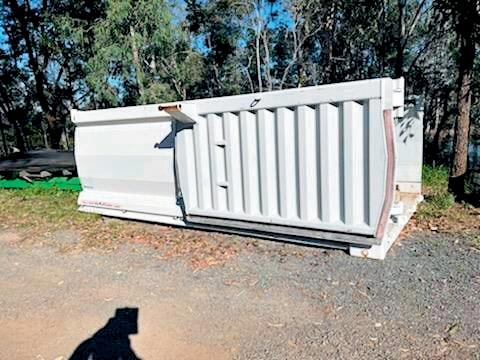
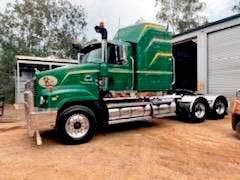
2004,HEAVYDUTY.160-200tonrating.CAT/C16600hp,(RECENTREPAIRSTOMOTOR).160TON+RATING(CAN BEINCREASED),18/speedMackheavyduty.Maxitorquegearbox.Onhubreductiondiffswithcrosslocks,on Newwayairbagsuspension.Allon10studdiscwheels,alloy/polishedonfront,100%newrubberallround.Long rangefueltanksfitted,ptopumpingcombo/suitableformultitipping.Powerseats,radio/stereo/c/dplayer/CB radioetc.Heavydutyalloybullbar,recentrespraytochassis,veryclean&tidyunit.Mackmediumriseheavyduty sleepercab,newdieselicecoldpackbeingfitted.Veryhardtogetthisquality&capacityunit.S129. TA1081077.
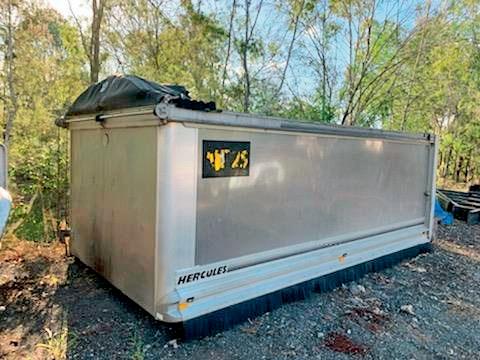
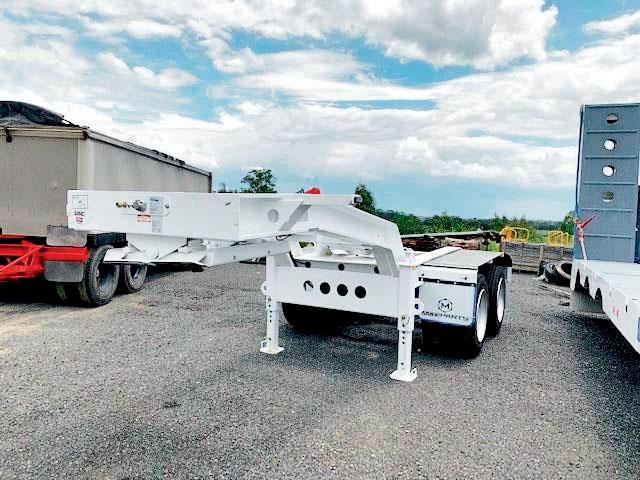



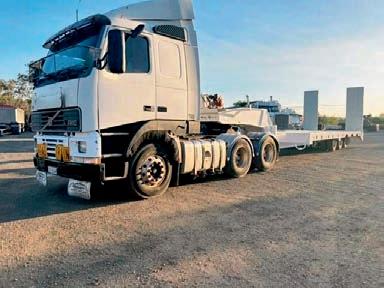

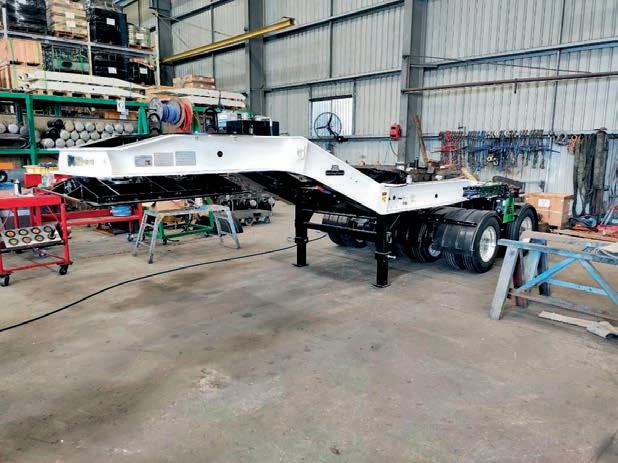

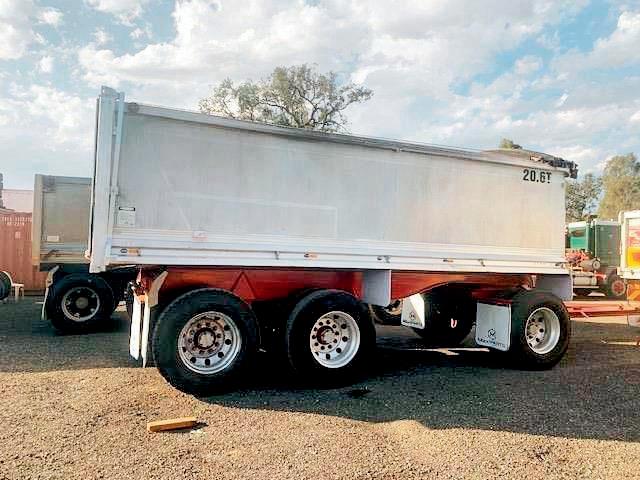

Major fleet upgrade, 2653 Streamspace Actros, in excellent condition with all Mercedes-Benz safety features & legendary fuel efficiency, powerful 530hp engine with 12 speed Automated transmission Fully workshop prepared with a 3 month / 50,000 klm driveline warranty need finance, discuss finance options with Daimler truck Financial T611973. $140,000 INC GST
2018 PANTECH FUSO CANTER
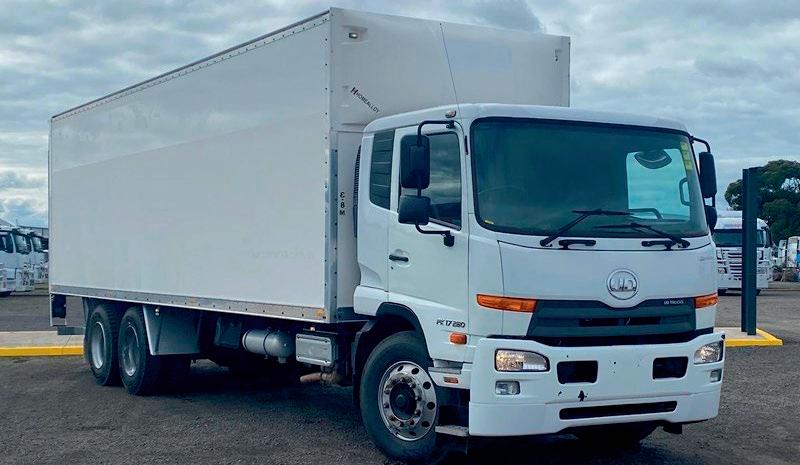
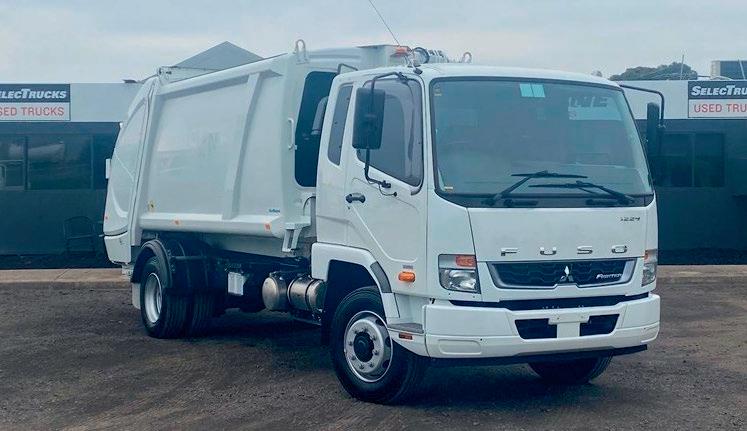
Currently in preparation, available soon late model low kilometre Canter 515 reverse camera factory navigation 150hp, auto, tailgate lift fully workshop prepared with a 3 month / 50,000 klm driveline warranty Discuss your repayments and finance options with Daimler truck Financial. No financier understands your business better T611965. $63,990 INC GST

2020 FUSO FIGHTER

1224 4x2 compactor, refurbished 2017 Japanese quality Shinmaywa GT106-5733 rear loading compactor body. Cubic capacity 10.2 m3 Hopper capacity 1.1m3 Sewage Capacity of 125 Lt, Comb type rear twin lift, only 1239km, Turbo diesel, 240Hp, auto transmission, rear airbag suspension, stereo system, reverse camera, bluetooth, ISRI drivers seat, T611843.
$189,000 INC GST
2015 PANTECH UD CONDOR PK17 280
Finished in White, this Pantech is a ready to work. Examples such as this are often hard to come-by; especially in this condition and at an outstanding price. In addition, this vehicle comes with the following value adding features: - DHOLLANDIA 2000Kg Tailgate Loader, 50 Cubic Mt Pantech body with side door 8.8 x 2.4 x2.4, aftermarket head unit with Apple car play and reverse camera, GVM 23500kg with rear air bag suspension - T611972.
$149,000 INC GST
List Price
charges




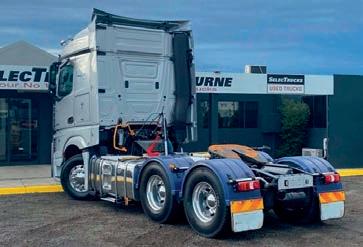




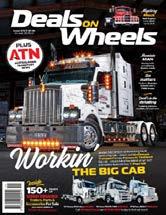





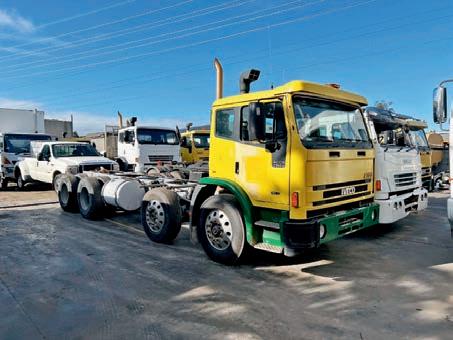
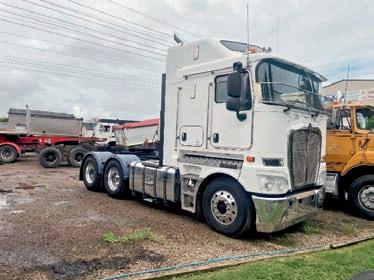
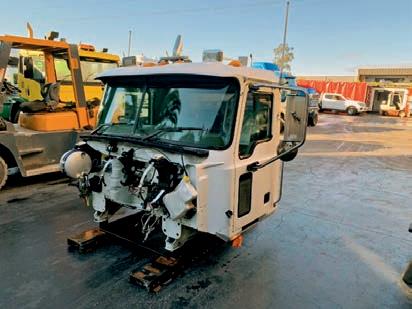



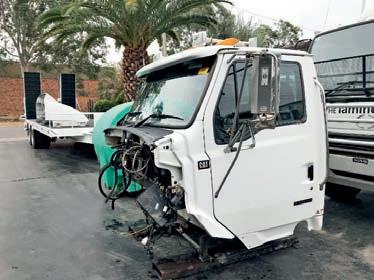

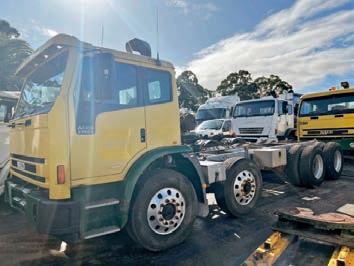

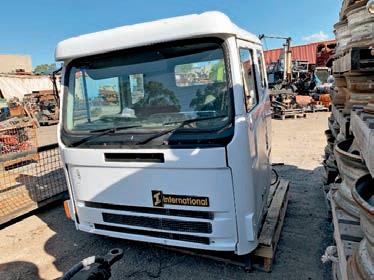
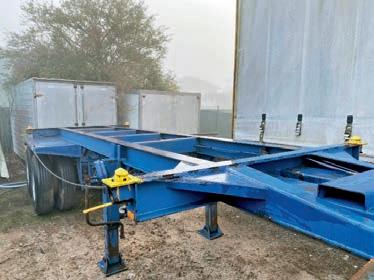
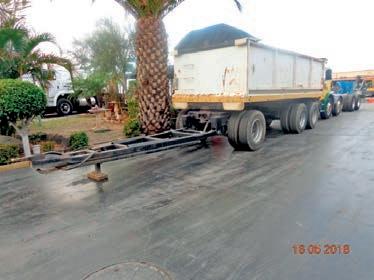


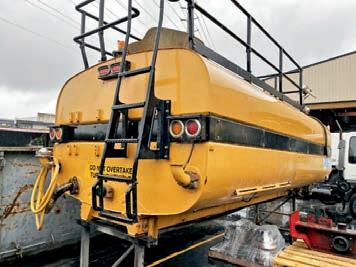
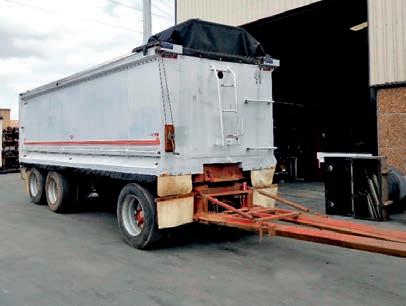

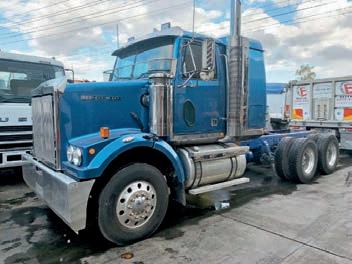
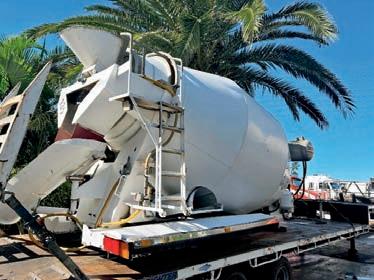



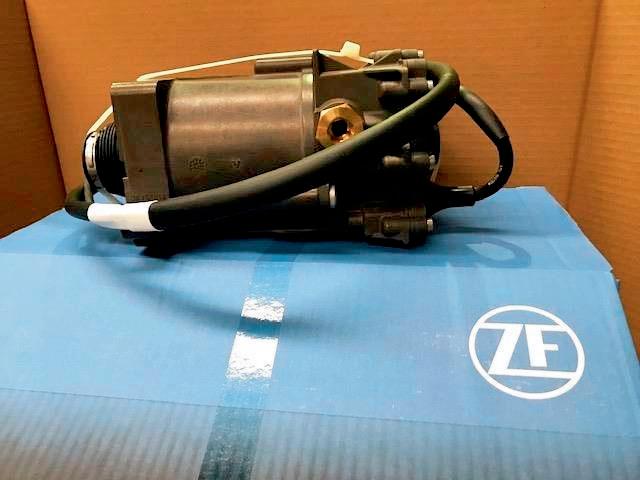

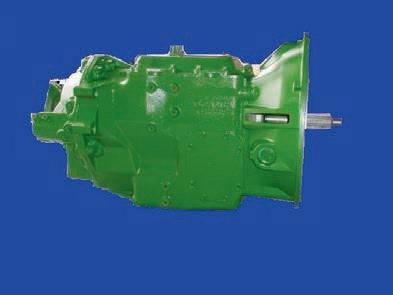
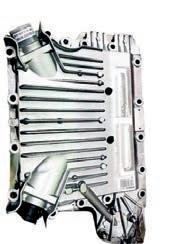

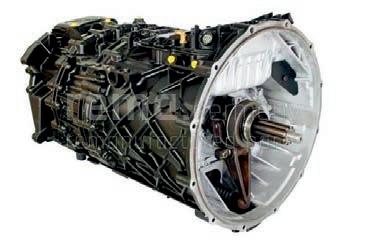
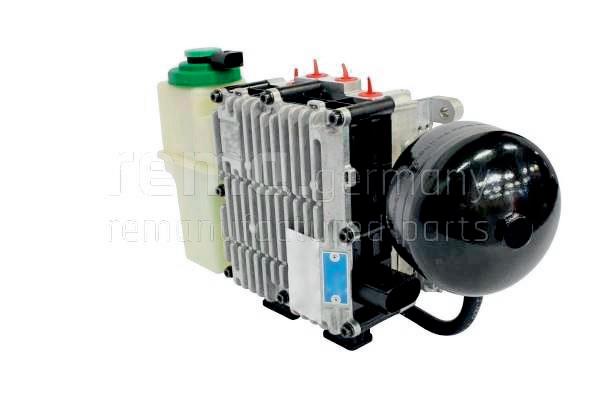

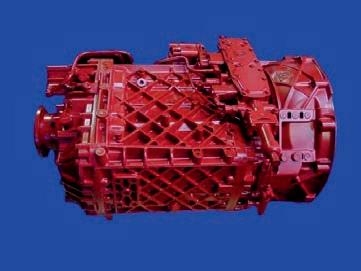
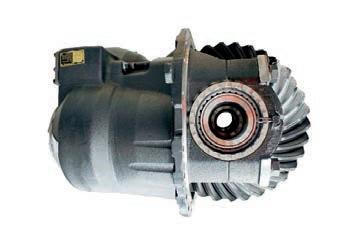
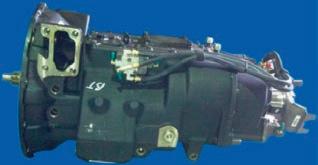

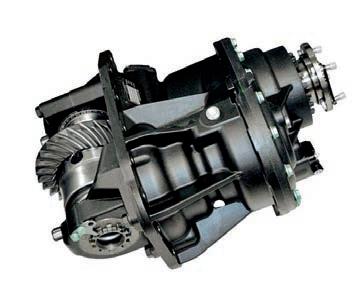
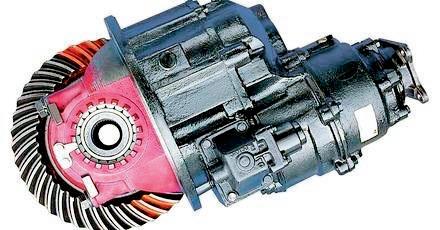
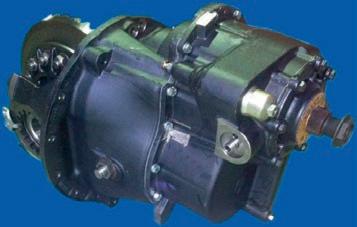
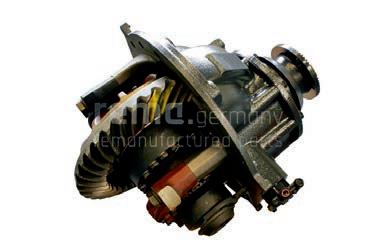
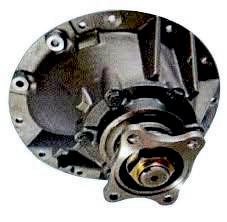
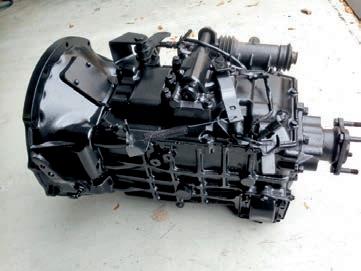
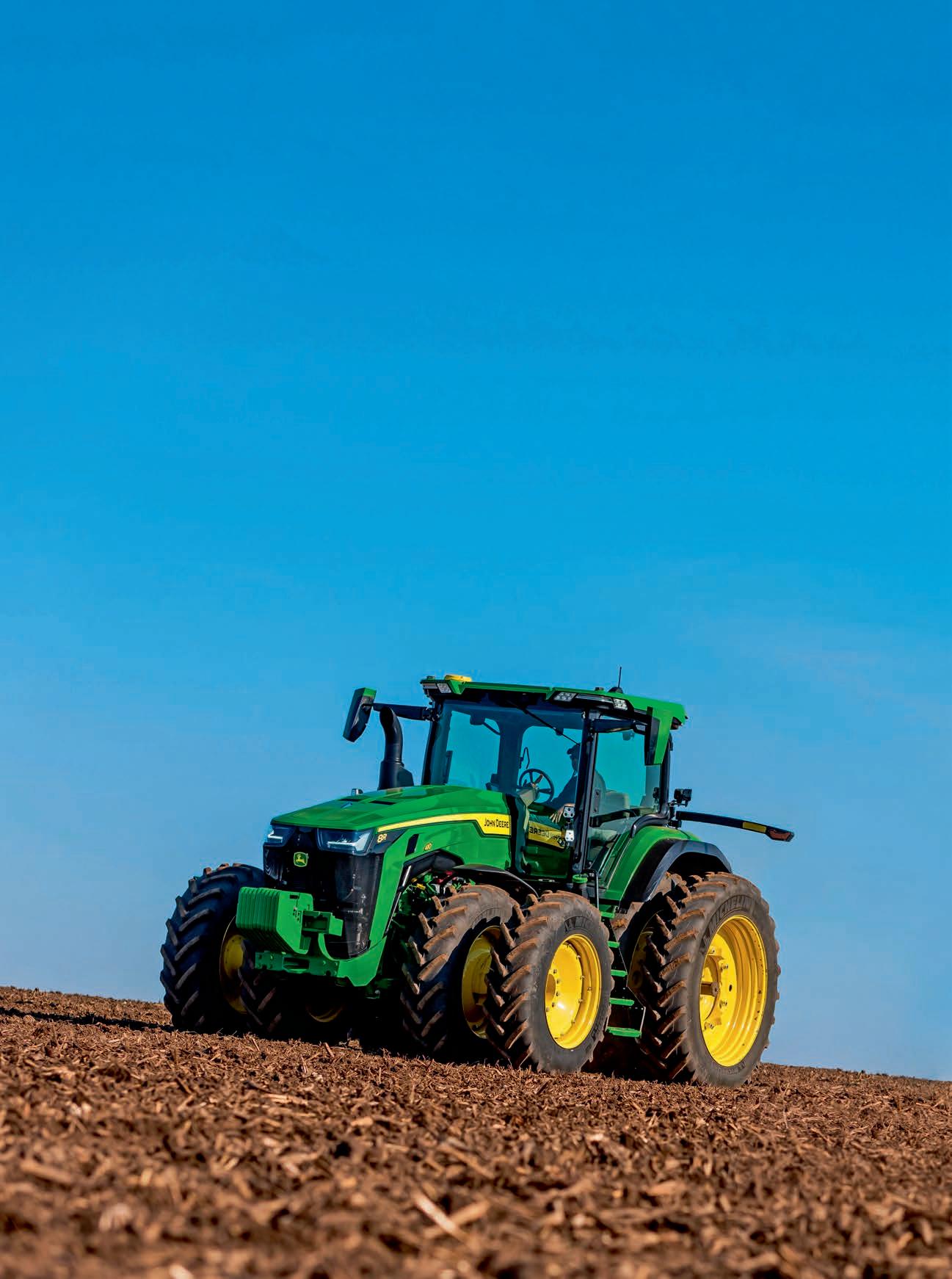








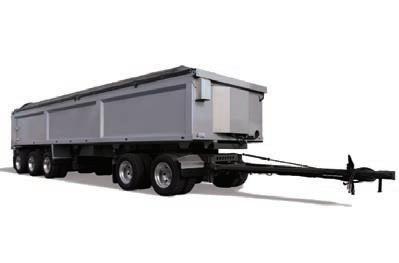
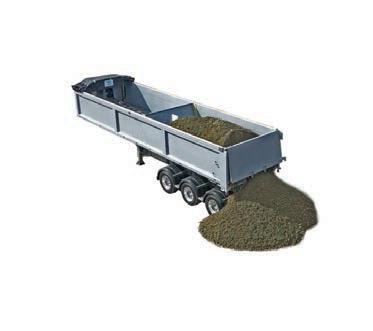





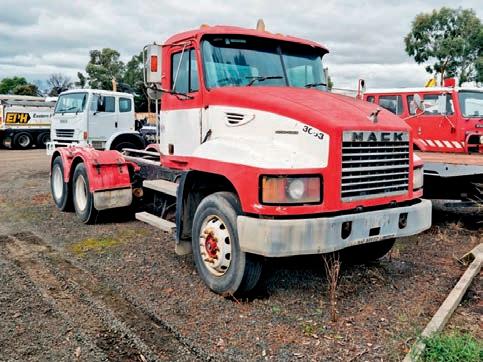
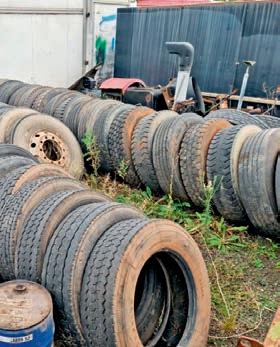
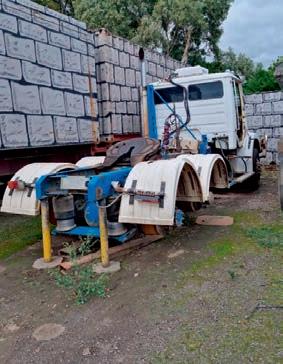




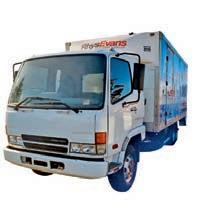
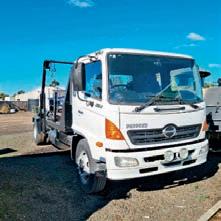

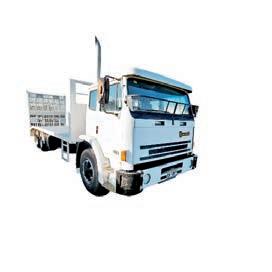
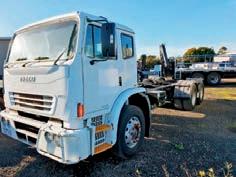


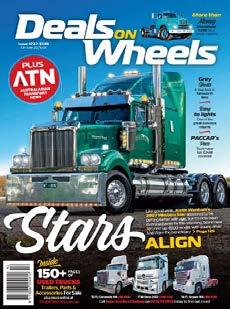
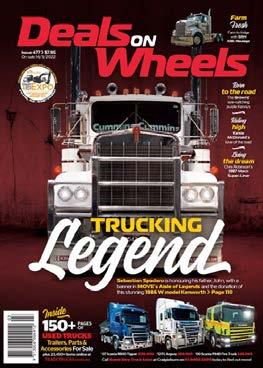

and starts from the four ton (4.06 tonne) class for overseas models.
MFTBC says the new version addresses even more diverse logistics needs with a significantly expanded vehicle line-up. Sales of the Next Generation eCanter in the Japanese market are scheduled for Spring 2023. MFTBC will also launch the new vehicle in additional overseas markets in the coming years.
MFTBC has adopted the eAxle in the Next Generation eCanter, integrating the motor with the rear axle and allowing for a more compact drivetrain structure.
The line-up includes 28 variants for the Japanese market and approximately 80 variants for overseas markets.
In addition to the current 7.5 ton (7.6 tonne) gross weight model, the new vehicle comes in weight classes ranging from five to eight tons (5.08 to 8.13 tonnes) for Japanese customers,
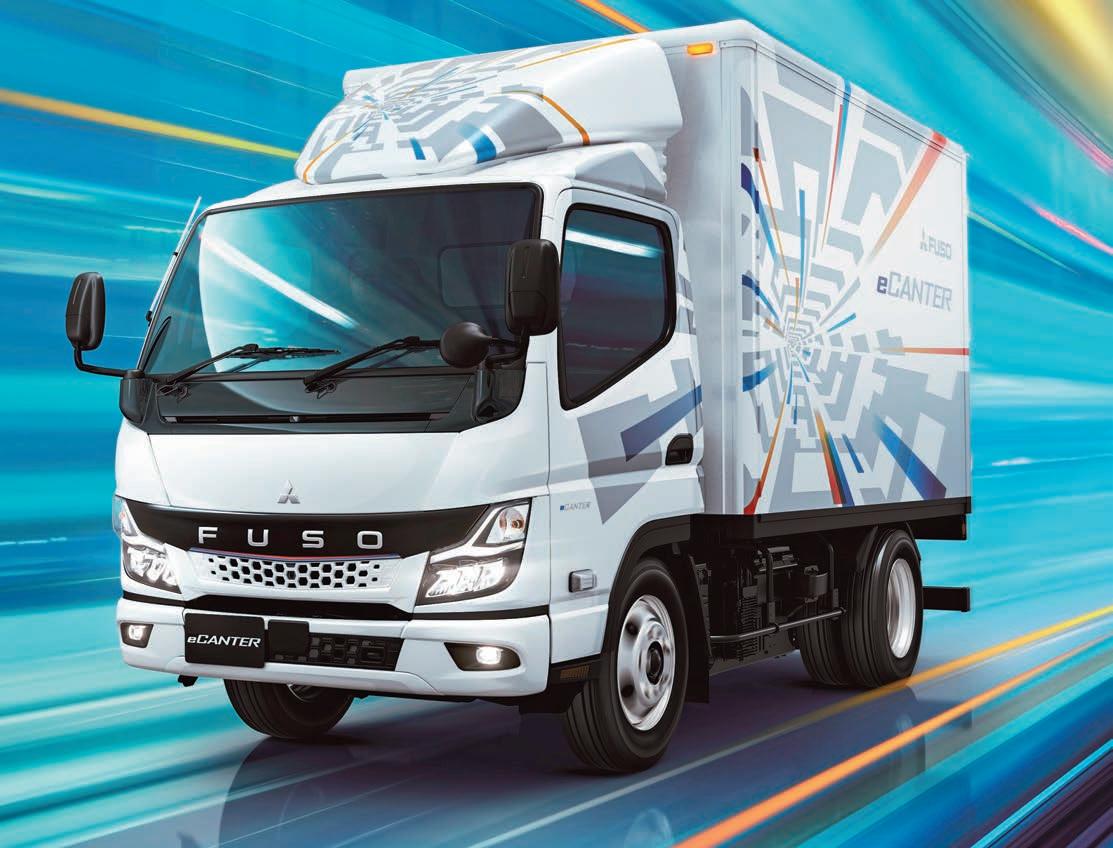
The cab variation has also been expanded with a wide cab (2,130mm) that can accommodate more cargo, in addition to the standard cab width (1,700mm) that brings more flexibility to routes covering narrow roads. The variety of wheelbases has also been expanded, from 2,500mm up to 4,750mm.
With the Next Generation eCanter, MFTBC is introducing a new modular concept for the batteries. The vehicle can house one to three batteries, based on the wheelbase.
The vehicles are equipped with a single battery with a rated capacity of 41kWh that can drive approximately 80km on one charge, while those with two batteries can be driven for approximately 140km, and those with three batteries around 200km.
In addition, Japanese customers have access to a V2X function that enables the eCanter’s batteries
The next generation of eCanter has been upgraded with a range of new safety and performance features
to supply power to homes and other equipment in the event of an emergency.
The new model is also equipped with the ‘ePTO’ power take-off unit that enables special purpose applications for customers wishing to operate their eCanter with a tipper, rear crane, or climate- controlled van body, among other various options.
The Next Generation eCanter also comes with enhanced EV-specific functions. Regenerative braking can be controlled at four levels, greatly contributing to power savings and enhanced drivability. Additionally, Battery Pre-Conditioning, which allows the battery to be preheated through a timer setting during AC charging, as well as the Heater Cut Switch feature to save energy consumption, are newly integrated.
The Next Generation eCanter
Mitsubishi Fuso Truck and Bus Corporation (MFTBC) unveiled the next generation model of the all-electric light-duty truck eCanter on September 7. Mitsubishi Fuso’s new electric light-duty eCanter has been unveiledalso comes with additional advanced safety functions to support safe driving, including:
• Active Sideguard Assist 1.0, featured for the first time in a Fuso light-duty truck, reduces the risk of accidents on turns by monitoring the blind spot on the side of the truck. When necessary, the feature activates a collision mitigation brake system
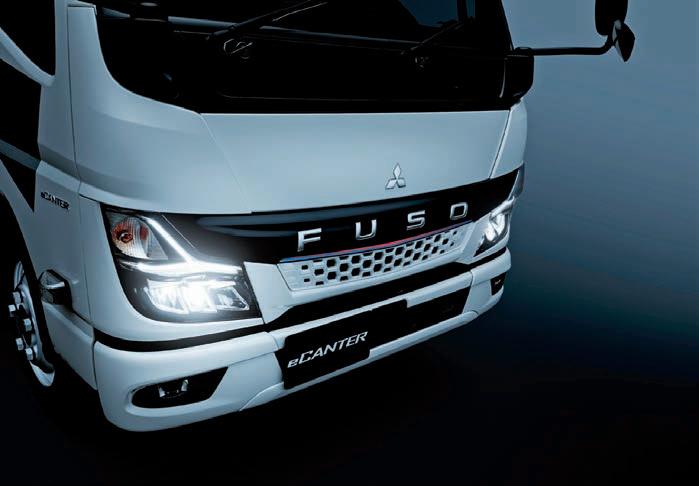
• Active Brake Assist 5 (ABA5), an emergency braking system with improved spatial recognition and pedestrian detection.
• The driver attention monitoring system, Active Attention Assist, supports the prevention of fatigueinduced incidents with white line recognition, various sensors and a facial recognition camera, warning the driver with a buzzer and dash board display
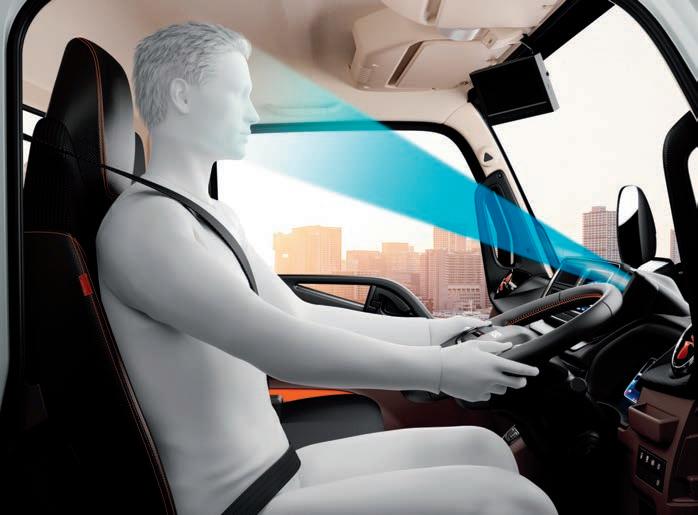
• I ntelligent Headlight Control, which automatically switches between high or low beams
• Traffic Sign Recognition, which displays traffic signs recognised by the camera on the dashboard, are also featured
• Other safety features include the electric parking brake that maintains stable braking force on hills, and the Back Eye Camera System that assists drivers in avoiding collisions while reversing.
The interior design has been upgraded for driving comfort. A new and slightly lower dashboard to provide more space, more vertical space inside the cab, and a new 10-inch full LCD panel linked to the steering wheel switches have been installed. The Fuso Easy Access Key is available for Japanese customers.
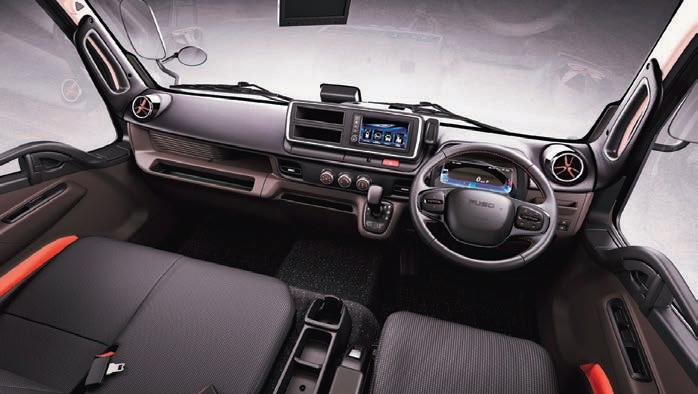
MFTBC’s telematics solution
Truckonnect delivers newly added EV-specific features. The eRange feature, which displays the remaining mileage, and remaining EV battery capacity, will also be available to track on the Truckonnect portal.
In addition, the new model will be compatible with the Charging Management System function, which allows operators to set a timer to charge vehicle batteries when electricity costs are lowest.
A B A Safety features include the Active Attention Assist driving monitoring system B There is more vertical space in the cabin and a 10-inch LCD screen C Intelligent Headlight Control automatically switches between high and low beams Ccell technology that is well suited to Australian requirements of longer distances at higher weights.
While hydrogen fuel cell trucks are currently being tested, they are still some years away from introduction.
Battery electric Mercedes-Benz trucks are already in production and out on the road with leading European fleets.
Assimo says Mercedes-Benz Trucks is excited to fulfill customer demand and bring the all-electric eActros to Australia and New Zealand.
Mercedes-Benz Trucks will begin a local evaluation program for the all-electric eActros in Australia and New Zealand early next year.
Initially, four eActros trucks will get to work in Australia and one unit will hit the road in New Zealand, with additional units to follow. MercedesBenz says the eActros, which has just been launched in Europe, produces zero local emissions and operates near silently.
Daimler Truck has extensive experience with electric commercial vehicles and was the first manufacturer with an all-electric truck when the Fuso eCanter broke new ground when it was launched locally in 2021.
Customers on both sides of the Tasman Sea have embraced the all-electric eCanter, appreciating the near smooth and quiet operation, active safety features, ease of use and original equipment manufacturer backing.
Mercedes-Benz Trucks Australia Pacific director Andrew Assimo says he is excited to start the local evaluation program for eActros as part of a drive towards CO2-neutral goods transport.
“We are excited to conduct this extensive testing program on the
roads of Australia and New Zealand for the advanced and innovative all-electric eActros – a truck that represents an exciting new chapter for sustainable road transport in our region,” he says.
“Mercedes-Benz Trucks always makes sure the advanced technology we introduce locally is tailored for our unique conditions and meets the specific requirements of our customers with extensive local evaluation and it is no different with zero emission electric technology.”
Daimler Truck says it is committed to advancing battery electric technology for trucks and buses, but is also working on hydrogen fuel
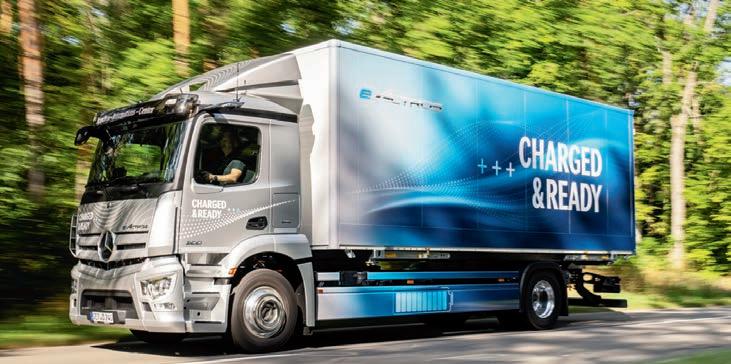
“Our key customers are very passionate about advanced electric heavy vehicles and we are thrilled to begin the evaluation program that will ensure our electric Actros will succeed in our market,” he says.
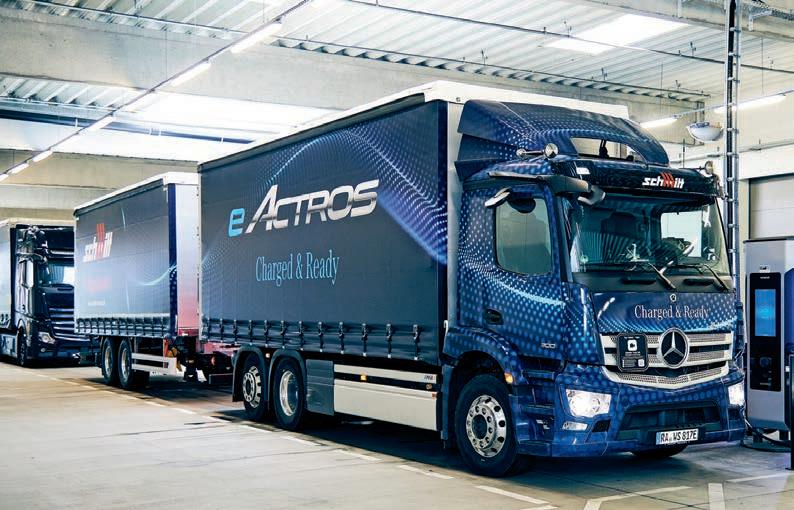
“We are excited to help our customers along their emission reduction pathways with classleading original equipment manufacturer trucks that are genuine workhorses and carry out their work in near silence producing zero local emissions.”
At this stage, Mercedes-Benz Trucks is not ready to announce when the eActros will be made available to customers in Australia and New Zealand.
Mercedes-Benz Trucks says its eActros models will hit Australia and New Zealand next year The new eActros is expected to reach our shores next year A local evaluation program will ensure the new truck meets Australian needs
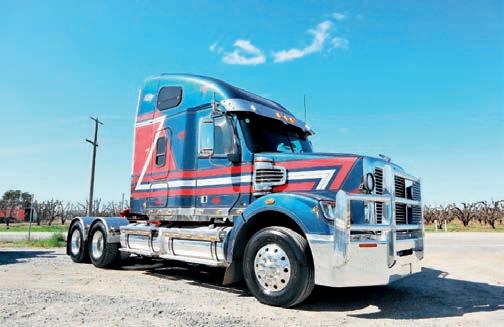
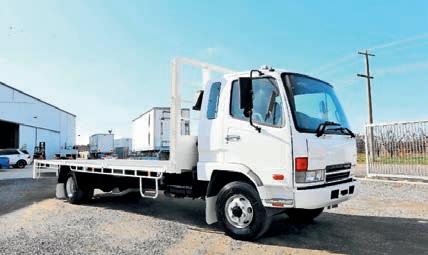
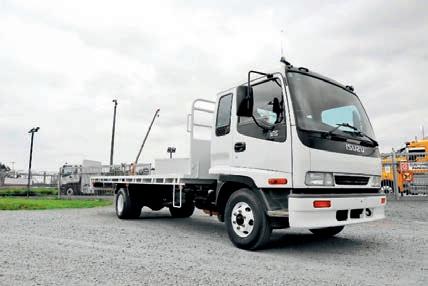


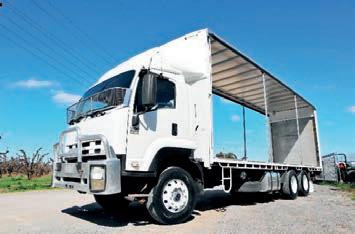
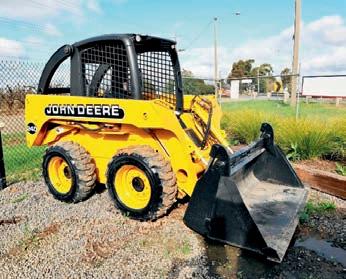
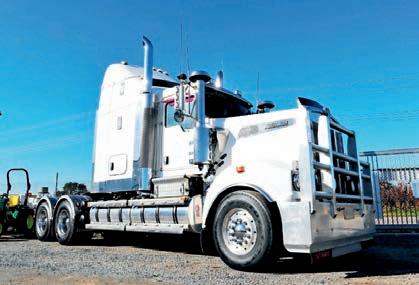
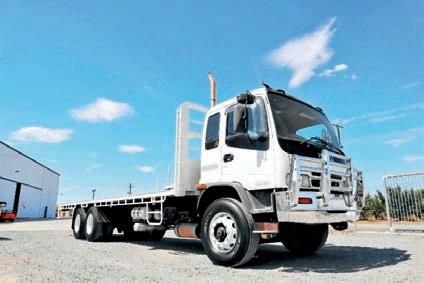

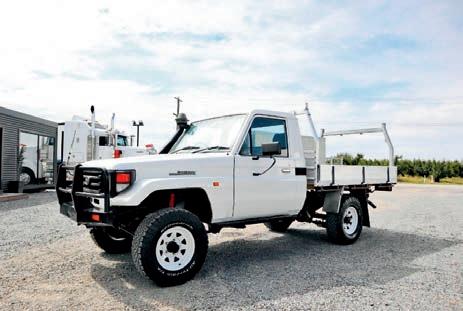
Isuzu says the truck’s fully integrated, factory-backed dual control functionality has been well received in recent years, with a number of waste and refuse fleets turning to the company for its transport solutions.
Isuzu Trucks returned to the Australasian Waste and Recycling Expo (AWRE) from August 24 to 25 and showcased its contributions to the world of waste management.
Isuzu Australia Limited (IAL) says it has long had a presence in providing road transport solutions to the waste
and recycling industries and the brand has enjoyed the privilege of being the best-selling Australian truck maker for 33 consecutive years.
On the stand this year, Isuzu showcased its FVY Dual Control model, which is specifically designed for kerbside waste applications.
Developed in Australia and with celebrated origins in Isuzu’s proven FSR 140-260 4×2 Dual Control model, the original equipment manufacturer (OEM) designed, and Australian Design Rule compliant FS and FV Dual Control range presents value and reliability, says Isuzu.
Isuzu says the OEM and body builder matched and supplied power take off system also provides a reliable and precise connection between truck and waste body.
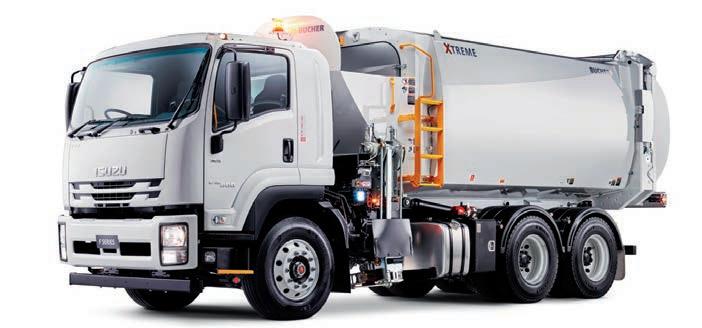
MAN will be showing the near-production prototype of its eTruck at IAA

heavy eTruck on a production line with conventional vehicles, so that we can produce electrified or diesel-powered trucks for our customers, depending on their wishes,” says Alexander Vlaskamp, CEO of MAN Truck & Bus.
“Our new eTruck will cover all areas of application when production starts, whether for regional distribution of organic milk or long-distance transport of green steel.”
A special technical feature of the pioneering electric lion, says MAN, is its preparation for future megawatt charging: high charging capacities with short charging times make the electric truck suitable for heavy-duty long-distance transport with daily ranges of between 600 and 800 kilometres, and at a later date even up to 1,000 kilometres.
DAF announced that its Next Generation XD truck series would be released at IAA Transportation 2022, which took place in Hanover in September, while MAN displayed its near-production prototype of the eTruck.
DAF hasn’t released much info yet about the new XD series but says it will “set the new standard in quality, safety,
efficiency and driver comfort and is fully prepared for ‘zero emission’ drivelines”.
MAN, meanwhile, is preparing for the market launch of its purely electric large-series truck in 2024 and had a nearproduction prototype on show that has a range of 800km.
“We are making our production more flexible and building our future
MAN will also be presenting its eMobility Consulting service for the first time at IAA, which “includes not only advice on the vehicle but also consideration of customer-specific operating conditions such as operating phases including cost optimisation, route analysis, fleet optimisation and, building on this, the necessary advice on the charging infrastructure”.
Isuzu says the truck is specifically designed for kerbside collection and Australian conditions DAF to release new XD while MAN will show off eTruck prototypeDAF and MAN to showcase new trucks at IAAThe FVY Dual Control model has been designed specifically for kerbside waste applications



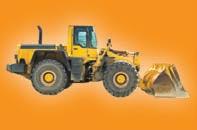




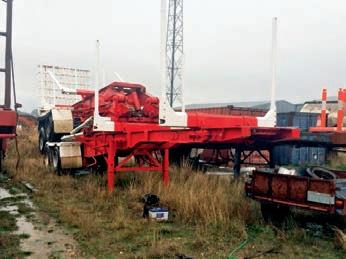


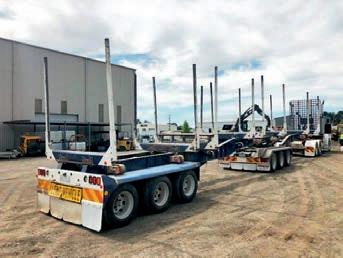

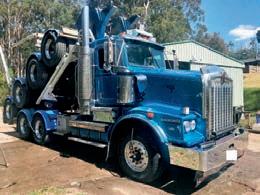
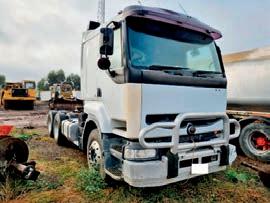
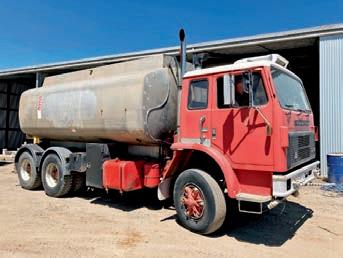

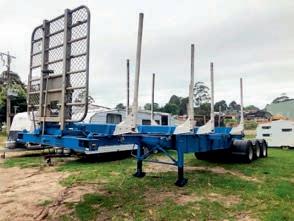

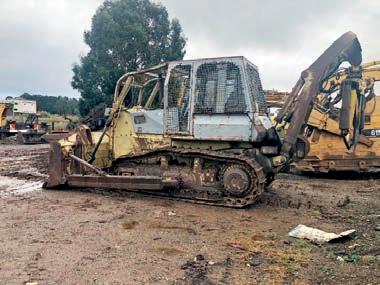
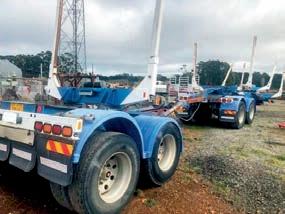

The new MiFi X Pro follows Inseego’s telematics relaunch
Inseego is continuing its momentum post telematics relaunch with a 10year anniversary and celebratory release of the MiFi X Pro
5G edge cloud solutions leader Inseego Corp. has announced a celebratory 10-year anniversary release of the MiFi X Pro following its telematics relaunch recently.
Inseego previously released details of its relaunch of its Ctrack telematics and asset tracking businesses in the UK, Europe, Australia and New Zealand under the Inseego name, offered through the company’s 5G Intelligent Edge business unit.
Inseego has now announced the launch of its next generation MiFi 5G mobile hotspot with Telstra to extend connectivity to the mobile workforce, including truck drivers on the go.
The new MiFi X Pro 5G mobile hotspot will bring reliable high speed 5G broadband and retain its all-day battery life, and is now available to be purchased at Telstra branded stores and selected partner stores, as well as through Telstra’s website.
“The invention of MiFi well over a decade ago revolutionised mobile broadband globally by empowering people to access WiFi on-the-go, and the new Inseego MiFi X Pro 5G once again sets the pace for innovation with superior performance, reliability and security,” country manager for Inseego Peter Adamovic says.
“Our 5G solutions are preferred for a reason – we are obsessed with developing technology that brings out the best in the network so that customers can truly experience the power of 5G, and we are thrilled to be partnering with Telstra to make the MiFi X Pro 5G available to businesses and consumers in Australia.”

The new mobile hotspot technology from Inseego features strong performance with advanced 5G features combined with WiFi 6, open VPNs, longer lasting power, easy set up and management processes and superior technology and flexible connectivity options.
Gatik’s autonomous driving system is being combined with Cummins’ advanced powertrain solution
US autonomous middle mile logistics company Gatik is collaborating with Cummins to incorporate its advanced powertrain solution into Gatik’s fleet of medium-duty trucks. In 2021, Gatik launched the world’s first fully driverless commercial delivery service with Walmart.

Under the collaboration, Cummins will utilise its suite of advanced software features to integrate its powertrain solution to enable driveby-wire (DbW) for Gatik’s industryfirst medium-duty (class 6) Isuzu FTR fleet with the Cummins B6.7 engine.
The integration of Gatik’s commercial-grade autonomous technology with Cummins’ powertrain increases functional safety and enhances reliability of the autonomous system, while improving fuel efficiency and offering superior vehicle performance on Gatik’s short-haul, B2B delivery routes.
Cummins will work closely with Gatik’s engineering team to provide additional technical expertise.
“As we commercialise our product offerings at scale across North America, ensuring that we integrate our technology with the world’s leading Tier 1 companies is critical to meeting intensifying demand for our solution safely and quickly,” says Gatik CTO and co-founder Arjun Narang.
“Cummins’ technological leadership in developing the world’s leading powertrains for over 100 years, and deep commitment to developing customer-centric solutions for the future of logistics
Cummins’ software is being applied to Gatik’s Isuzu fleet
mean the tangible benefits of our work together will be felt immediately across our customer base.
“Cummins is excited to integrate its powertrain solution with Gatik’s automated driving system,” says Cummins general manager Global Powertrain Integration Michael Taylor.
“Cummins powers nearly every type of application globally, so integrating our powertrain with automated driving systems like Gatik’s will allow our customers to choose the newest technologies to meet their needs.”
This announcement comes on the heels of rapid commercial and technical progress at Gatik. Gatik has one of the largest commercially deployed autonomous fleets in North America, operating for Fortune 500 customers across multiple markets including Texas, Arkansas, Louisiana and Ontario, Canada.
In the past 12 months, Gatik announced its industry-first partnership with Isuzu to implement OEM-grade redundancies for medium-duty trucks, collaboration with Goodyear to equip its fleet with tyre intelligence technology to improve stopping distances and monitor tyre pressure in real time for enhanced safety, and a strategic partnership with Ryder to leverage Ryder’s national leasing, servicing and fleet maintenance expertise.




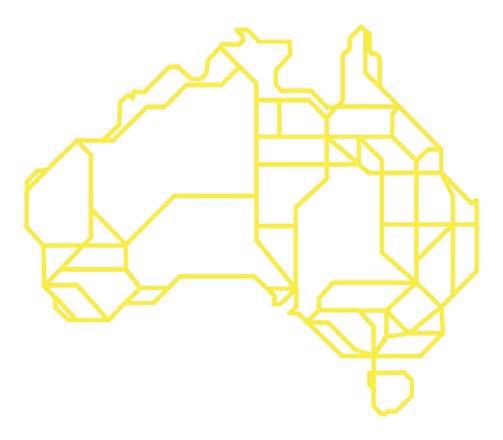



















































Peterbilt says the 389X embodies the heritage of the Model 389

Over in the US, the Peterbilt Motors Company has launched a limited-release Model 389X.
The 389X includes a highly polished hood crown surrounding a classic-style, louvered grille sheet inspired by the first 1939 Peterbilt.
The hood features a brightly polished centerline trim, exclusive side-hood chrome accents and polished hood fenders. Other features include cowl skirts, battery box, fuel tanks, sun visor, bumper and large, 7" chrome exhaust stacks. The light package includes LED amber light strips that highlight the air cleaners and under the rocker panels. In addition, the truck features 389X exterior badging on the mud flaps as well as on the cab or sleeper.
Inside the cab, dash panels feature a new Black Pearl burl woodgrain and special black-finish trim accents can be found throughout the cab and sleeper. Additional special features include bright chrome grab handles, a 389X emblem on the shifter plate, embroidered 389X badging on the headrests and badging on the sleeper backwall. Each 389X includes a serialised chrome dash plate with the production number of the truck to commemorate each special edition vehicle, as well as a kit of custom 389X merchandise.
“The new 389X is superior in every detail. From its classic design and high-quality craftsmanship to its exclusive chrome elements and details both inside and out, the 389X will quickly become the most desirable truck on the road,” says Robert Woodall, assistant general manager of sales and marketing at Peterbilt.
“I look forward to seeing this great truck and its proud owners on road across North America very soon.”
The Model 389X can be ordered as a day cab or in a 72” or 78” Sleeper configuration. The 389X production will be limited to only 1,389 trucks.
Truck manufacturer Hyundai has delivered its first hydrogen fuel-cell trucks in Germany
Hyundai has announced that its first hydrogen commercial vehicles for Hylane have arrived in Germany.
Hylane is a subsidiary of German insurance company DEVK and will use the trucks to begin a partnership with Hyundai.
“The first series-production trucks form the basis for a long-term cooperation with Hyundai, which we will continuously expand from now on,” Hylane managing director Sara Schiffer says.
“We rent the vehicles out at a fixed price per kilometre, allowing our customers to use the trucks as they need and with little risk.”
The arrival of these hydrogen trucks marks a milestone in the history of German mobility as the trucks have the potential to decarbonise heavy road transport.
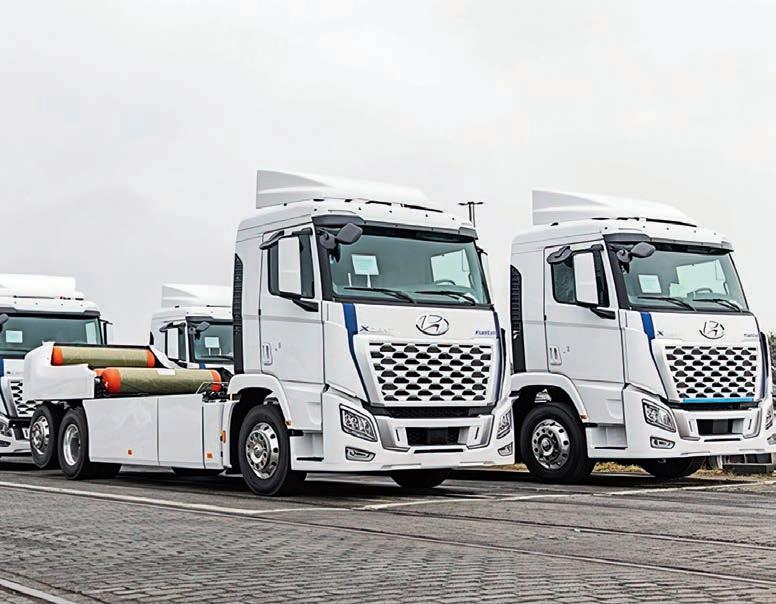
Hyundai hydrogen mobility COO Daniel Keller and chief strategy officer Hojun Suh travelled to Bremerhaven for the handover to the first customer in Germany.
“This is a historic moment. Following the successful launch of the Hyundai Xcient fuel cell truck in Switzerland, we are
The new hydrogen range has hit Germany for the first time
expanding our activities in Europe and focusing initially on Germany,” Hyundai hydrogen mobility CEO Beat Hirschi says.
“We were successful in convincing Hylane to participate, a young company that shares our values and makes a real contribution to environmental protection and the decarbonisation of heavy goods transport.”
The vehicles delivered were funded by the federal ministry for digital and transport.
Hyundai says the Xcient fuel cell vehicles have a range of around 400 kilometres and store hydrogen in seven tanks, with an average refuelling time of 10 minutes.
The Xcient fuel cell for Hylane is a further development of the first series-produced H2 trucks to be used in Germany.
As soon as the trucks leave the ship, they go to the bodybuilders where the customised versions are configured.

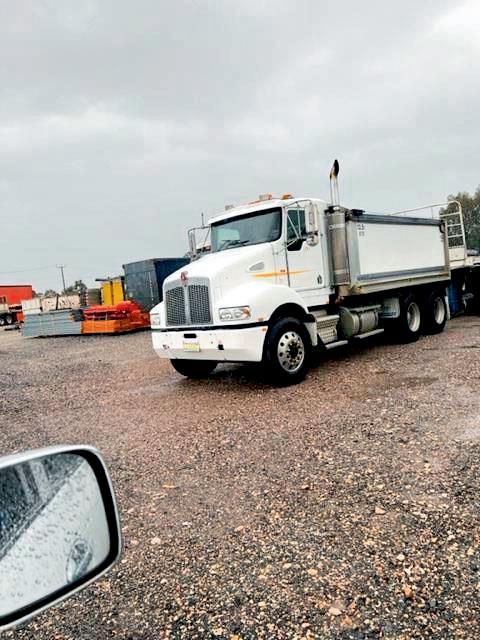
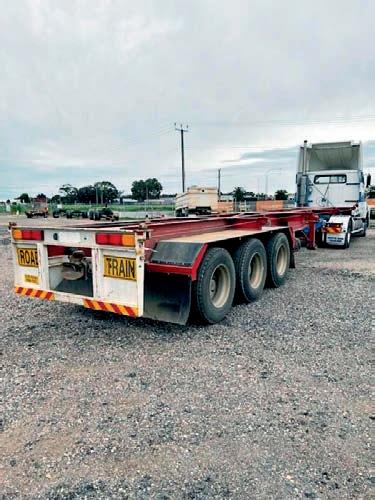
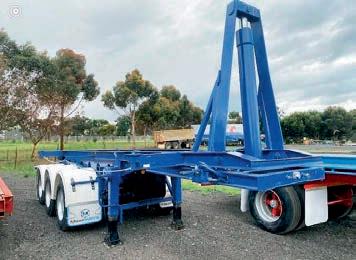




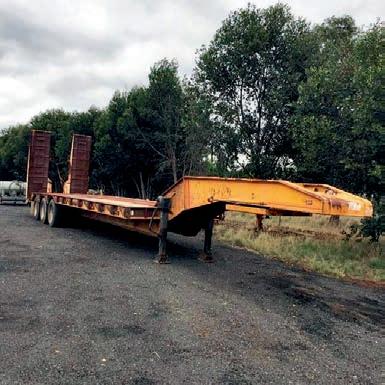
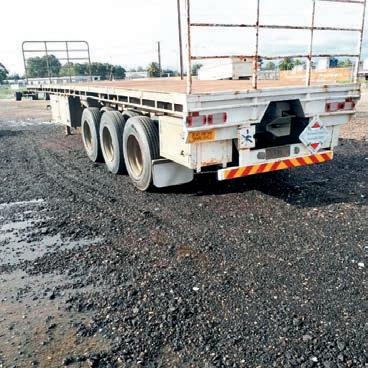

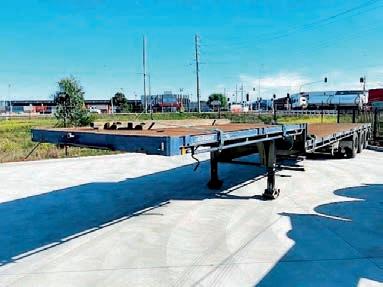
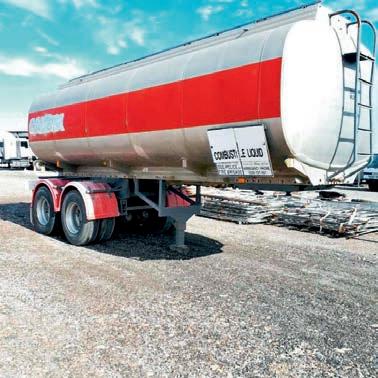
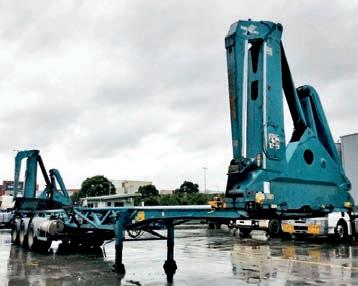
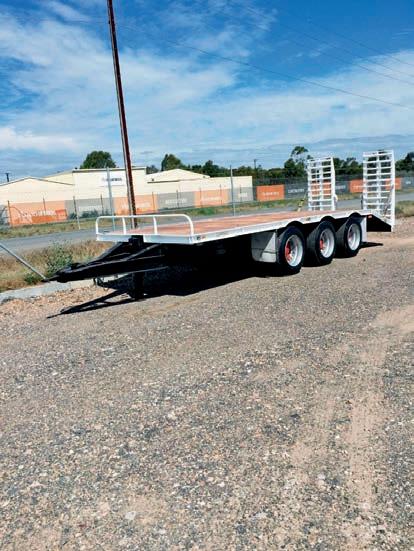
NatRoad says the truck ban proposal is the wrong way to go about cutting emissions
NatRoad says the Grattan Institute’s truck ban proposal is bonkers and unproductive
The National Road Transport Association (NatRoad) says the Gratton report’s proposal to ban pre-2003 diesel trucks from Sydney and Melbourne within three years would devastate the heavy vehicle industry and push the price of essential goods sky high.
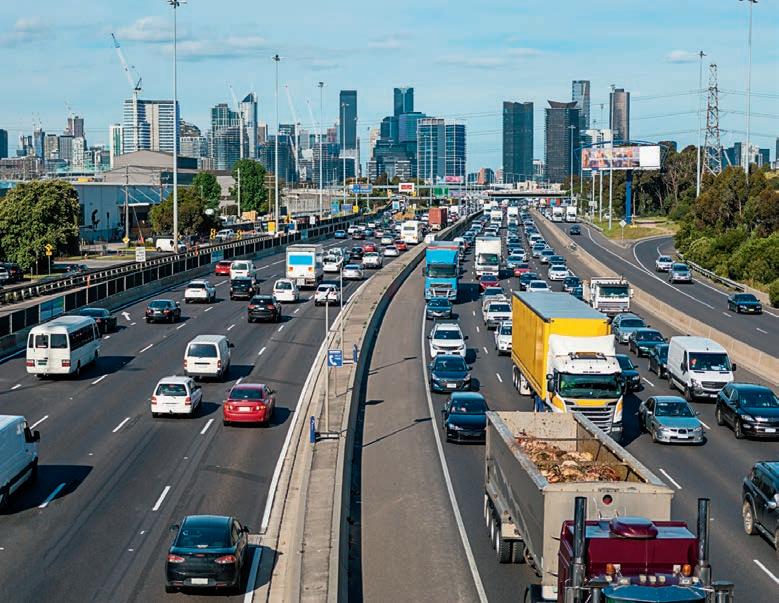
NatRoad says the report by think tank the Grattan Institute (see other story on this page) is a radical piece of ideology that flies in the face of the industry’s willingness to change.
“The idea of banning trucks from capital cities is bonkers,” NatRoad CEO Warren Clark says.
“There is no market for electric or hydrogen trucks in Australia yet, so forcing an industry out of the country’s most populous cities is mad.”
Clark says portraying trucks as the main problem in the air pollution issue is counterproductive, considering how important trucks are to the nation’s supply chain.
“Our own national research shows that 98 per cent of people regard road freight as an essential industry and 99 per cent consider it important to the economy,” Clark says.
Clark says NatRoad does support the move to Euro 6 emission standards along with mass concessions an axles.
He says he wants to see subsidies for those in the industry who do make the change.
“There should be subsidies for those who move to Euro 6 to accommodate reduced pay load,” Clark says.
“This needs to occur with all technical and economic issues clearly set out and dealt with in a carefully planned way.
“Nowhere does it call for the abolition of the three per cent stamp duty on new truck purchases, which should be the first thing to go to drive a move to alternative fuels.”
The Grattan Institute says more than a quarter of Melbourne and Sydney’s trucks should be banned in an environmentally conscious push to lower pollution
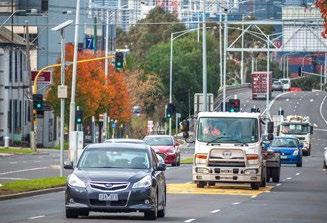
The Grattan Truck Plan: Practical Policies for Cleaner Freight says exhaust-pipe pollution coming from trucks could contribute to more than 400 Australians every year contracting diseases like lung cancer, stroke, heart disease, pneu monia, asthma and type-2 diabetes.
To keep the trucks emitting the most pollution away from the most people, the report calls for pre-2003 diesel trucks to be banned in Sydney and Melbourne from 2025, meaning more than 25 per cent of trucks would be taken off the roads.
The Grattan Institute says old trucks are polluting much more than newer models, with 14 per cent of Australia’s fleet being pre-1996 and emitting 60 times the particulate matter of a new truck and eight times the poisonous nitrogen oxides.
The Grattan Institute’s call echoes similar bans put in place in cities such as London, Tokyo, Beijing, Barcelona and Madrid.
“The work that trucks do is crucial for our economy and way of life, but we must do more to limit the harm they cause to our health
The Gratton Institute says trucks should be banned from Melbourne and Sydney
and environment,” says report lead author and Grattan Institute Transport and Cities program director Marion Terrill.
Terrill says even the new trucks coming into Australia aren’t as clean as they should be, with the Grattan Institute calling for the nation to catch up to international pollution standards by 2024.
The report suggests revoking regulations that require Australian trucks to be two per cent narrower than the global standard to end the limited range of lower-polluting trucks available in Australia.
While providing targets for zeroemissions trucks is the end goal, the report says ensuring new diesel trucks emit less carbon is an important start.
“Trucks make our lives better in so many ways,” Terrill says.
“But this report shows why and how Australia should do more to limit the damage they leave behind.”
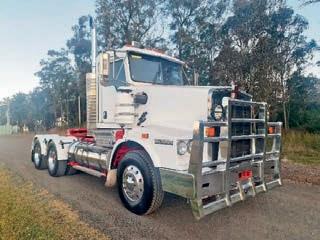
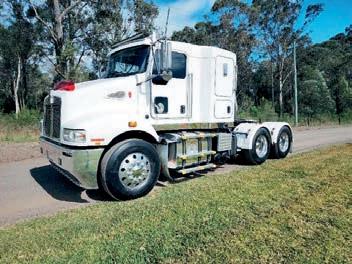
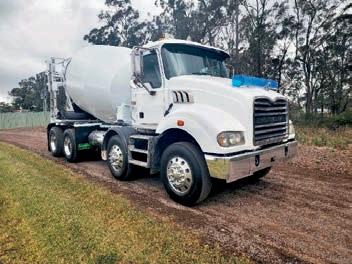
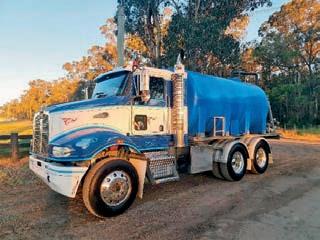
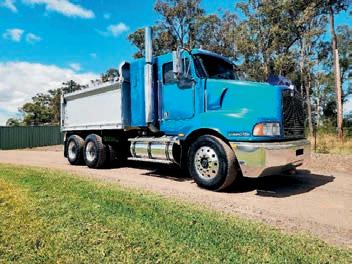
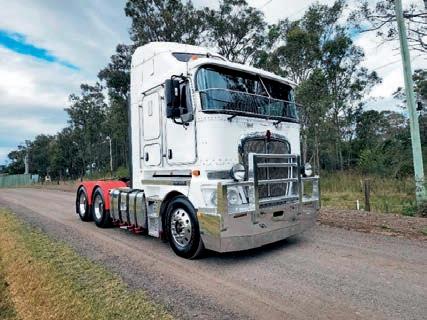
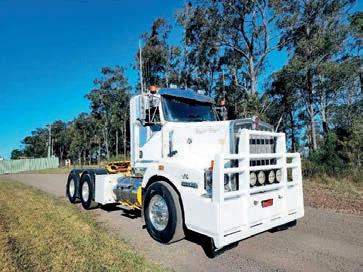
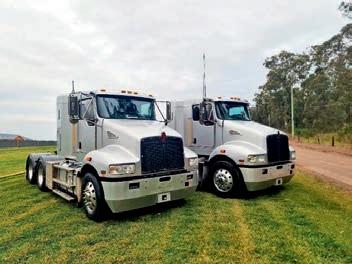
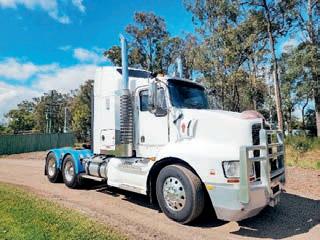
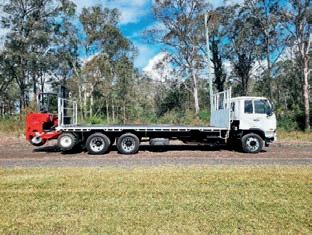
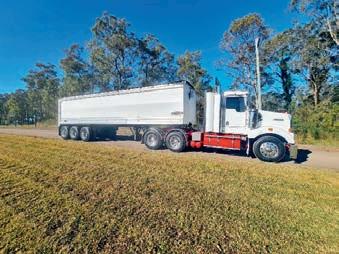
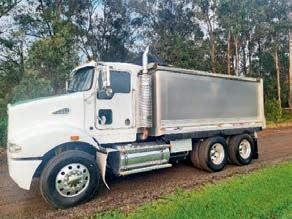

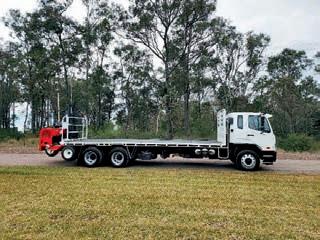


The NHVR has approved a new EWD option and another device for drivers to use
The National Heavy Vehicle Regulator (NHVR) has announced it is approving a new electronic work diary (EWD) option as well as an additional device for an existing EWD.
The NHVR says it has approved Logmaster Australia as the eighth EWD provider to further expand access to EWD technology for the heavy vehicle industry.
NHVR CEO Sal Petroccitto says the range of EWD options now available allows the industry to better manage fatigue risks and choose the most suitable solution for their business.
“Drivers are switching over to using EWDs since we approved the first system in 2020, and it’s great to see Logmaster is offering another new options,” Petroccitto says.
“The Logmaster platform includes features such as digital pre-start driver forms, night and day modes and national usability.

“It’s available on Android and iOS [Apple] operating systems, so drivers and companies can use most modern devices.”
While doing this, the NHVR also approved the use of Netstar Australia’s EWD option on an additional device.
Netstar Australia’s EWD can now be used on the Samsung SM-T575, also known as the Samsung Galaxy Tab Active 3.
“With more choice comes greater uptake and we are now working with technology providers to develop innovative ways to encourage increased use of EWDs across the industry,” Petroccitto says.
The NHVR has reminded drivers that when switching to an EWD, they must continue to carry their written work diary for a transition period to comply with the requirement to carry 28 days of records.
The NHVR says it’s also important to continue checking the NHVR website to ensure that a driver is using an NHVRapproved EWD.
The Australian Livestock and Rural Transporters Association (ALRTA) has released the reforms agreed upon by both ministers and industry bodies following a roundtable discussion on the current Heavy Vehicle National Law (HVNL).
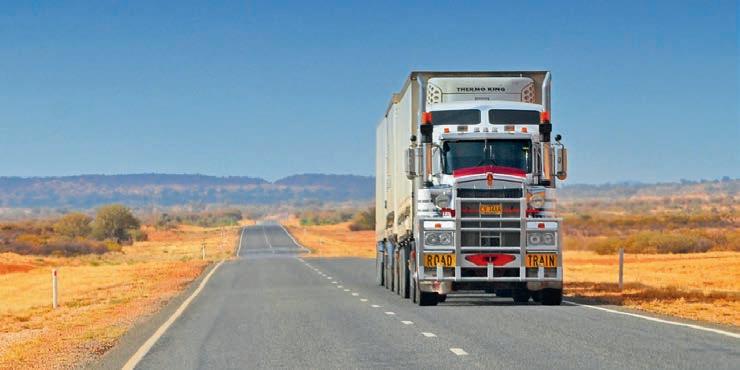
The proposals were supported uniformly after being developed by independent consultant Ken Kanofski following government and industry consultations.
The HVNL reforms revolve around maintaining the object of the law to be continuing productivity, with the law to be risk-based and outcomes-based.
Under the reforms, there’ll be more detail lowered to regulations and codes of practice as the HVNL adopts a Tasmanian-style access system, while it’s also proposed to explore a business case for opening as-ofright key parts of the National Road Transport Network.
The reform wants to improve performance based standards and provide more flexibility for the fatigue general schedule, including a 10-hour break reset option, with the idea being floated to possibly expand fatigue laws to include all 4.5t + vehicles.
This means BFM and AFM will essentially become merged so operators can demonstrate better risk management systems to get more flexibility, while fatigue record keeping will be moved to regs to make it easier to change prescriptive requirements with incentives to be added to adopt electronic work diaries.
The reforms are focused around making law risk-based and outcome-based
A change in perspective means fatigue enforcement will focus on immediate risks, not historic offences, with regular reviews of penalties and practices to determine a new approach to overall risk profiling.
When it comes to drivers, the review suggests new fitness to drive requirements and a singular voluntary accreditation system to be run by the National Heavy Vehicle Regulator (NHVR), making a national audit standard.
Along with raising general access, operators will also be able to rely on official network maps rather than gazette notices.
A new head of power would also be set to establish Heavy Vehicle Safety Obligations, with a new power set for prescriptive requirements and specific offences for off-road parties.
This means monthly registration charges can be considered by all jurisdictions, the codes of practice can be developed by the NHVR rather than industry and vehicle classifications can be moved to regulations.
The last points of the HVNL reform include establishing a delegation of powers to the NHVR board and enforcing a legal requirement for the NHVR to consult industry.
The NHVR has allowed an eighth EWD optionThe federal government has finally announced a restoration of the FTC
The federal government has finally made a call on the FTC while also announcing changes to other heavy vehicle user feesHave your say on proposed changes to the National Heavy Vehicle Driver Competency Framework
Austroads is encouraging drivers, employers and trainers to have their say on proposed changes to heavy vehicle driver licensing in Australia.
“With a growing freight task and changing vehicle fleet, Australia needs a lot of well-trained and capable heavy vehicle drivers. That starts with effective driver licensing,” says Austroads chief executive Geoff Allan.
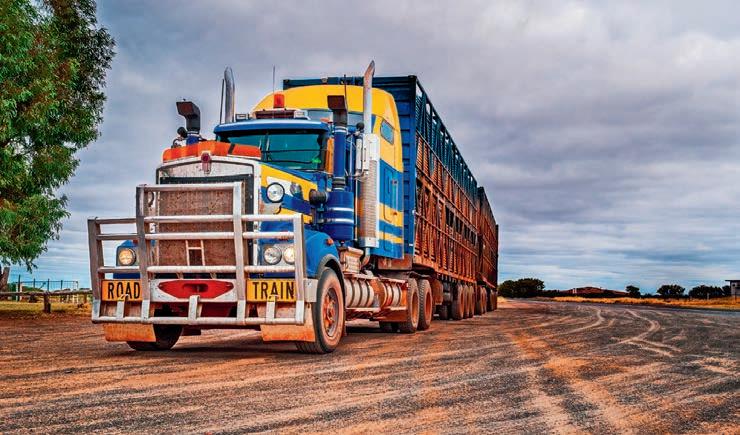
The changes are documented in a Consultation Regulation Impact Statement (C-RIS) that seeks feedback on proposed changes to the National Heavy Vehicle Driver Competency Framework (NHVDCF). The Framework was endorsed by ministers in 2011 but has only been implemented in four states and territories.
At the request of transport ministers, Austroads has been undertaking an extensive program of work to review and improve the NHVDCF. Austroads’ review aims to deliver a harmonised Australian licence training and assessment framework that produces safe and competent heavy vehicle drivers and reflects the current and future needs of heavy vehicle operators and the future freight task.
“Industry feedback, emerging research and evidence suggest we should prioritise strengthening driver competencies, skills assessment and licensing policy. National Cabinet has expressed a desire for fast-track licence progression,” says Allan.
Four key areas of change are proposed:
• Managing individual driver risk ensuring only drivers without serious driving offences are eligible to hold a heavy vehicle licence.
Austroads is looking for feedback from drivers
• Strengthening skill and knowledge making competency requirements specific to each licence class, setting minimum course length and recognising the extra skill needed to drive the most complex vehicles.
• Embedding behind-the-wheel experience requiring minimum behind-the-wheel time pre-licence and supervised driving sessions post-licence.
• Introducing experience-based progression options enabling those drivers who can demonstrate driving and work experience to progress to higher licence classes more rapidly.
“This is a particularly challenging time for employers and we know industry is hoping that any proposed changes will help to increase the number of drivers.
“The driver shortage is a broader problem than licensing alone can fix. But the proposed changes have been developed so that there are faster ways to progress through heavy vehicle licence classes. Making the pathway to licences faster may help expand the pool of drivers, and the improved competency standards should make new drivers more job-ready,” says Allan.
The C-RIS is out for comment until 28 October.
Visit austroads.info/c-ris to download the C-RIS, access fact sheets and videos summarising the proposals and provide feedback.
The federal government has finally made an announcement on the fuel tax credit (FTC) scheme as it released plans to finally restore the FTC payment for heavy vehicle users.
Federal transport minister Catherine King announced on 13 September that she will table the legislation allowing for the restoration of an increased FTC to federal parliament after consulting with infrastructure and transport ministers.
The new FTC rate will jump up to 18.8 cents per litre when it is restored on September 29.
But there’s a twist, as King also released plans to increase the heavy vehicle road user charge by 0.8 cents per litre from midnight September 28.

King says the increased road user charge will be counteracted by the FTC restoration and increase, as the transport minister says the FTC return will help offset the impact for heavy vehicle users.
The federal government says the road user charge intends to recover the greater cost of maintenance and repair as a result of heavy vehicles using the nation’s roads.
State and territory governments have also mirrored the decision to raise heavy vehicle registration fees.
The annual change to the heavy vehicle road user charge follows public consultation on the proposed increase which was undertaken by the National Transport Commission.
King says federal, state and territory ministers were mindful that an increase needed to be manageable for the industry.
The National Transport Commission will be consulting in September and October on heavy vehicle charge setting for 2023–24 onwards.
“We’ve worked closely with the UD Trucks team and CMV Truck & Bus Dandenong to build a model that meets our needs perfectly,” says John West, the managing director of John West Logistics, based in Brisbane.
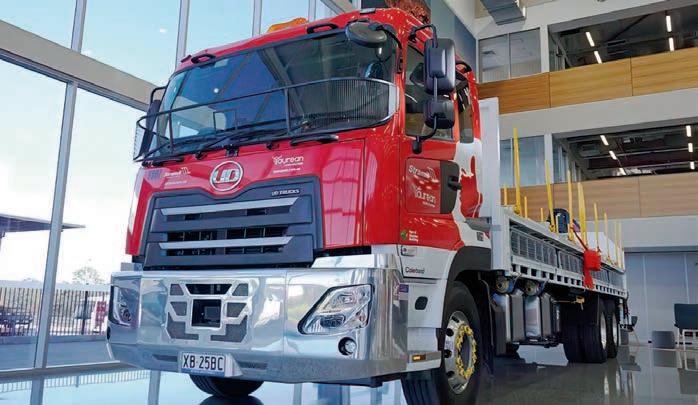
“These Quons are designed specifically to meet our need for a 9-metre body and crane.”
John West Logistics specialises in delivering steel building products to commercial and domestic sites in New South Wales, Victoria, Queensland and New Zealand.
“70 per cent of our contracts involve truck mounted crane units,” says West.
“Whether we’re delivering rebar, roofing, guttering or flashing, no two loads are the same size or shape and we have to deliver right into some tricky sites. This 6x4 Quon is ideal for our task.”
The John West Logistics Quons are a customer design that represents a departure from the standard Quon range, and it’s taken time to get the specifications right.
“UD Trucks Australia were great,” says West.
“We went to them with our requirements and they took them to head office in Japan and advocated for us. It took a while, but we got the result, and now UD Trucks here in Australia have a model that will appeal to a whole new sector of the market.”
John West Logistics have been
using UDs since the company started in 2000.
“We began in 2000 with an empty warehouse and we built up a business in dangerous goods and contract logistics,” says West.
“In 2018 we sold the DGL business to concentrate on the contract logistics side. UD Trucks have been with us all the way.”
The John West fleet of around 300 vehicles includes approximately 80 UDs, with the balance of the fleet mostly Volvos and Macks.
“We use the UDs for the work in metro and state rural areas,” says West, “and we’re really happy with them. The safety features and protocols are first-class, the fuel economy and emissions are good, as is the driver comfort. The drivers
speak highly of them, and when there’s a driver shortage, like the one we have now, that’s almost as important as safety, which is something we take very seriously.”
UD Trucks also handle all the servicing under long-term maintenance agreements.
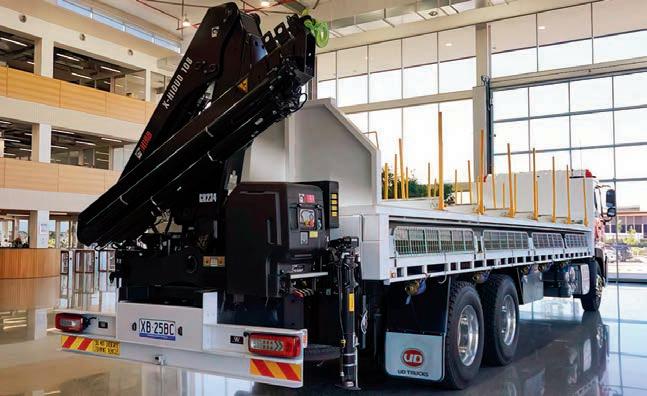
“We’ve never had a workshop,” says West.
“In fact, I often say we have never owned a spanner. I rely on UD [and our other suppliers] to keep us on the road and UD after-sales service is very good indeed.”
Some of John West Logistics’ clients keep their trucks at the production sites, so they can deliver direct to their customers from the start of each day.
“We’re putting the first three of these Quons into the Stramit site, and we’re wrapping them in the Stramit livery,” says West.
“As far as their customers are concerned, Stramit are delivering the goods.”
West says the new 6x4 Quons fit perfectly into a gap that providers like John West Logistics have been trying to fill for some time.
“We would have had 30 or 40 of these Quons on the road if we could have, there’s that much demand, and we’re definitely going to be ordering more of them,” he says.
“We’ve been loyal to UD for a long time now, and they’re loyal to us.”
John West Logistics recently took delivery of the first of five longwheelbase UD Quons fitted with a 6x4 bogie drive The trucks were designed specifically for John West Logistics’ requirements The first of five trucks to be delivered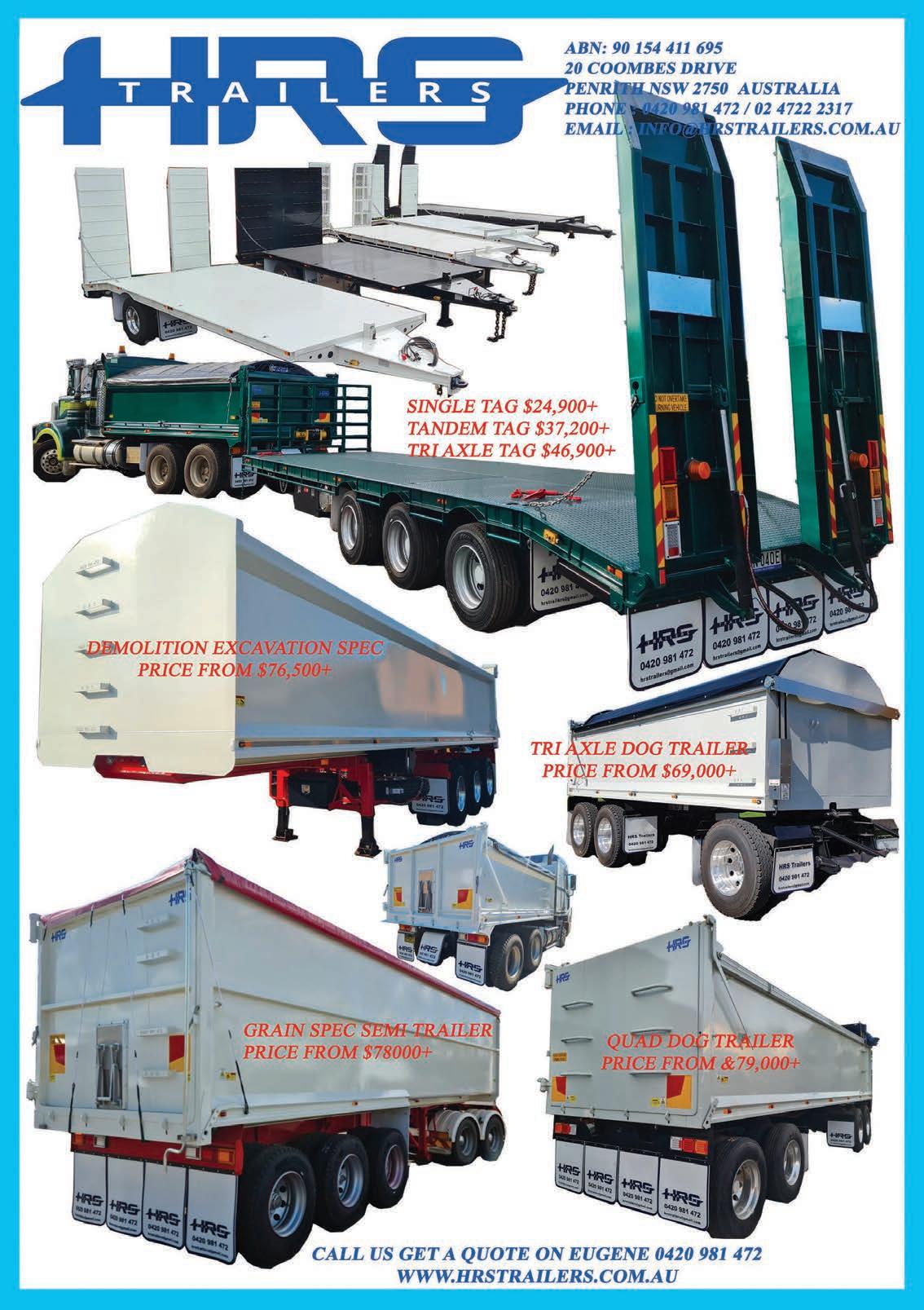
There’s a degree of inevitability about de-carbonising the country’s road freight industry, but so much relies on the will of government.
There is no sense in stopping sales of new diesel vehicles, or banning older trucks from capital cities, if there’s nothing to replace them with.
The ‘all or nothing’ approach to net zero smacks of cutting off your nose to spite your face. Let’s be sensible and make sure that mandates are balanced with incentives.
The road freight industry has been working with proponents of electric vehicles to map what’s needed. The transition to fossil-free fuels needs that sort of strategic approach. The destination we’re moving to is pretty attractive.
Diesel fuel accounts for 35 per cent of long-haul operators’ costs and 20 per cent of short-haul operators’ costs. It’s nearly seven times cheaper to fuel an electric truck than a diesel one. One study shows the average cost for a 300km journey is $117 in a diesel truck and just $18 in an electric truck.
Maintenance costs will be slashed and health and environmental outcomes enhanced. But making the leap from diesel to electric or hydrogen requires more than just good will. No emissions-free truck is going anywhere of any distance until there is an adequate network of charging stations.
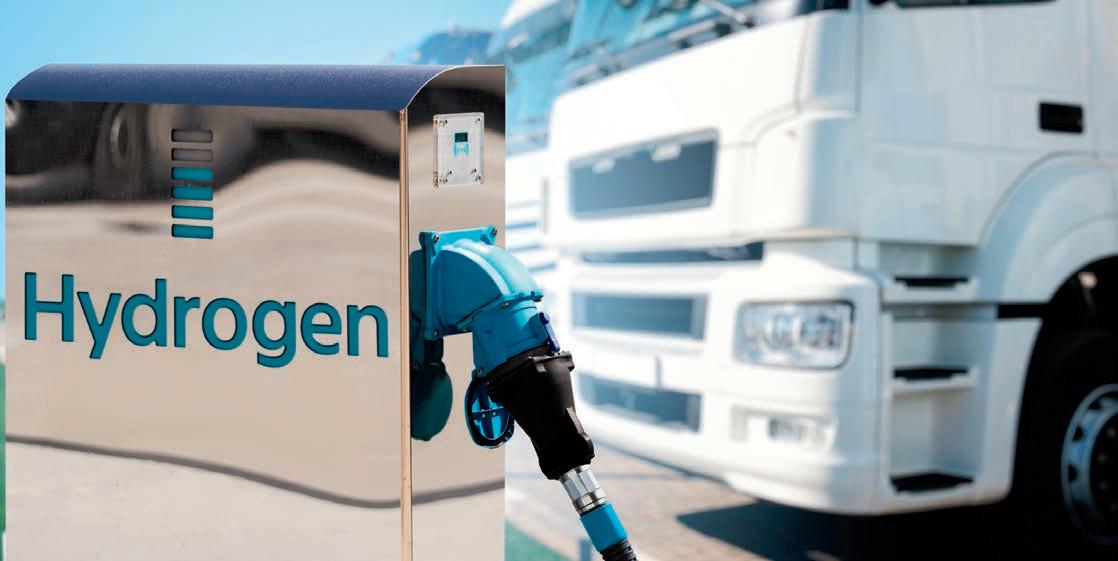
Manufacturers need to build a market for electric trucks in Australia,
Warren Clark, CEO of the National Road Transport Association
but we’re at the end of a very long supply chain, and that doesn’t happen overnight.
There’s something like 60 models available to buyers in the US, Europe and Japan. In Australia, the number is closer to 15.
The purchase price of a new electric truck can be twice that of its diesel equivalent. It’s a fact of life that owners of trucks in Australia hold onto them longer than in other places in the world. The lifespan of an Australian truck is between 10 and 15 years. In most of Europe, it’s under a decade.
The Albanese government has flagged it is taking action to bring down the price of electric cars. It pledged to exempt new electric cars from import tariffs and fringe benefits tax – a $251 million investment.
No such commitment has been made for heavy vehicles – so keep your eyes on the October Budget. Abolishing the three per cent stamp duty on new truck purchases would be a good start.
The government pledged $39.3 million to fast charging points, 1,800
of which will be publicly accessible. What’s in it for truck operators is still unclear and it’s not practical to queue behind cars. There has been lots of talk about emissions standards –especially for cars.
NatRoad supports moving to the Euro VI emissions standard. But there should be subsidies for those who move to Euro VI to accommodate their reduced payload. Our industry needs to hear how and when we need to get to Euro VI, so all technical and economic issues can be dealt with in a carefully planned way.
Being a federated commonwealth has its upsides and downsides. We’ve seen a few states leap ahead of the pack and introduce their own electric vehicle incentives and targets.
Western Australia became the last state to introduce an electric vehicle incentive in May this year and, in August, the federal government announced it was initiating a National Electric Vehicle Strategy.
You have to ask what’s to come of the Road User Charge when the majority of heavy vehicles are using renewable energy?
There are plenty of things to ponder about the trip to net zero, but governments need to factor in heavy vehicles and not leave trucks as an afterthought.
For the industry to invest in alternativelyfuelled trucks, there needs to be the infrastructure in place to fuel them Switching to a net zero future needs cool heads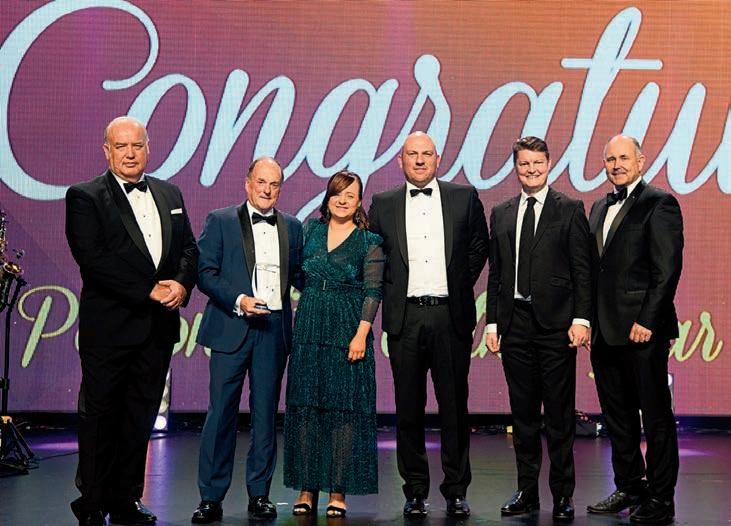
After a three-year hiatus, the Austral ian Freight Industry Awards – run by the Victorian Transport Association (VTA) and sponsored by TWUSuper and Viva Energy Australia – was cele brated in person recently, with close to 700 gathering at Crown Melbourne on Saturday, September 3 to recognise the achievements of transport opera tor and supplier companies and indi viduals across a range of categories.
Surpassing a record number of nominations lodged in 2020 – when the Awards were presented virtually –over 60 nominations were submitted this year from small, medium and large operators from all over Australia.
The winners were:
• Colin Rees, Personality of the Year Award – sponsored by CMV Truck & Bus
• Cara Spencer, Alex Fraser Group and Transport Women Australia, Female Leadership Award – spon sored by Viva Energy Australia
• Claudia Jenkins, Linfox, Young Achiever of the Year Award – spon sored by Daimler Truck & Bus
• SEA Electric, Sustainable Environ ment Award – sponsored by Nation al Transport Insurance
• K norr Bremse Australia, Application of Technology Award – sponsored by Transport Certification Australia
• Wettenhalls, Best Practice Safety Award – sponsored by Gallagher
• Qube Bulk Pty Ltd, Investment in People Award – sponsored by Logical Staffing Solutions.
“It was a pleasure to host dignitaries from state and federal governments,
along with VTA life members, councillors and hundreds of VTA members and transport industry operators and suppliers, who were keen to get together for a night of celebration unlike any other in our industry,” says VTA CEO Peter Anderson.
“Every one of our winners and finalists should be proud of their accomplishments, and particularly that they were achieved during a time of great challenge and uncertainty in people’s professional and personal lives.
“Their endurance, commitment and effort are reflective of every transport worker that has stood up and served our communities over the past three years, and it was terrific to recognise that in person at our awards presentation.”
Anderson also thanked guests for their hard work and tenacity in serving the Australian community during the pandemic.
“In front of our largest audience for over two years, it would be remiss not to acknowledge the women and men of the Australian transport industry who have worked so tirelessly during such difficult conditions.
“To our members, operators and their staff, industry suppliers and all the businesses in the supply chain that kept our country moving, thank you for your service, your endurance, commitment, and effort, and for delivering to the people of Australia no matter the challenge,” he says.
Australian Freight Industry Awards
Personality of the Year Award winner, chairman and owner of Colin Rees Group, Colin Rees (2nd from left) pictured with (l-r) VTA CEO Peter Anderson, daughter and Colin Rees Group office & marketing manager Kellie Rees, CMV Truck & Bus branch manager Ross Greig, Victorian Minister for Roads and Road Safety Ben Carroll, and AFIA chairman and VTA president Mike Lean
chairman and VTA president Mike Lean addressed guests, speaking of the many contributions the industry has made in recent times, as well as VTA advocacy for positive change.
“We’re continuing to help alleviate driver shortages, with the Freight Workforce Innovation project seeing 125 women trained, placed and mentored into building careers in transport and logistics, and our ongoing advocacy for policy change to attract qualified transport workers under the Commonwealth’s skilled migration program,” Lean said.
“Recognising the faster shift to decarbonising the community under all governments, our recent Alternative Fuels Summit tackled the issue head-on, and the Association continues to constructively work through its affiliations with ARTIO to develop and implement a new minimum standards framework.”
Lean congratulated award winners on behalf of the VTA Executive Council.
“Surpassing our previous record with over 60 entries is just a tremendous endorsement of what it means to win or be shortlisted for an Australian Freight Industry Award. I congratulate all of those companies and individuals who are working so hard to improve their businesses,” says Lean.
Following the presentation of awards, guests were treated to a night of fine food and entertainment from Australian rock royalty, including Taxi Ride’s Jason Singh, Boom Crash Opera’s Dale Ryder, Bachelor Girl’s Tania Doko, and The Choirboys’ Mark Gable.
“It was fitting to have this Australian Superband belt out classic Australian hits, in celebration of our award winners and everything great about our wonderful country,” says Peter Anderson.
The Australian Freight Industry Awards will return in 2023.
Transport industry celebrates 32nd Australian Freight Industry Awards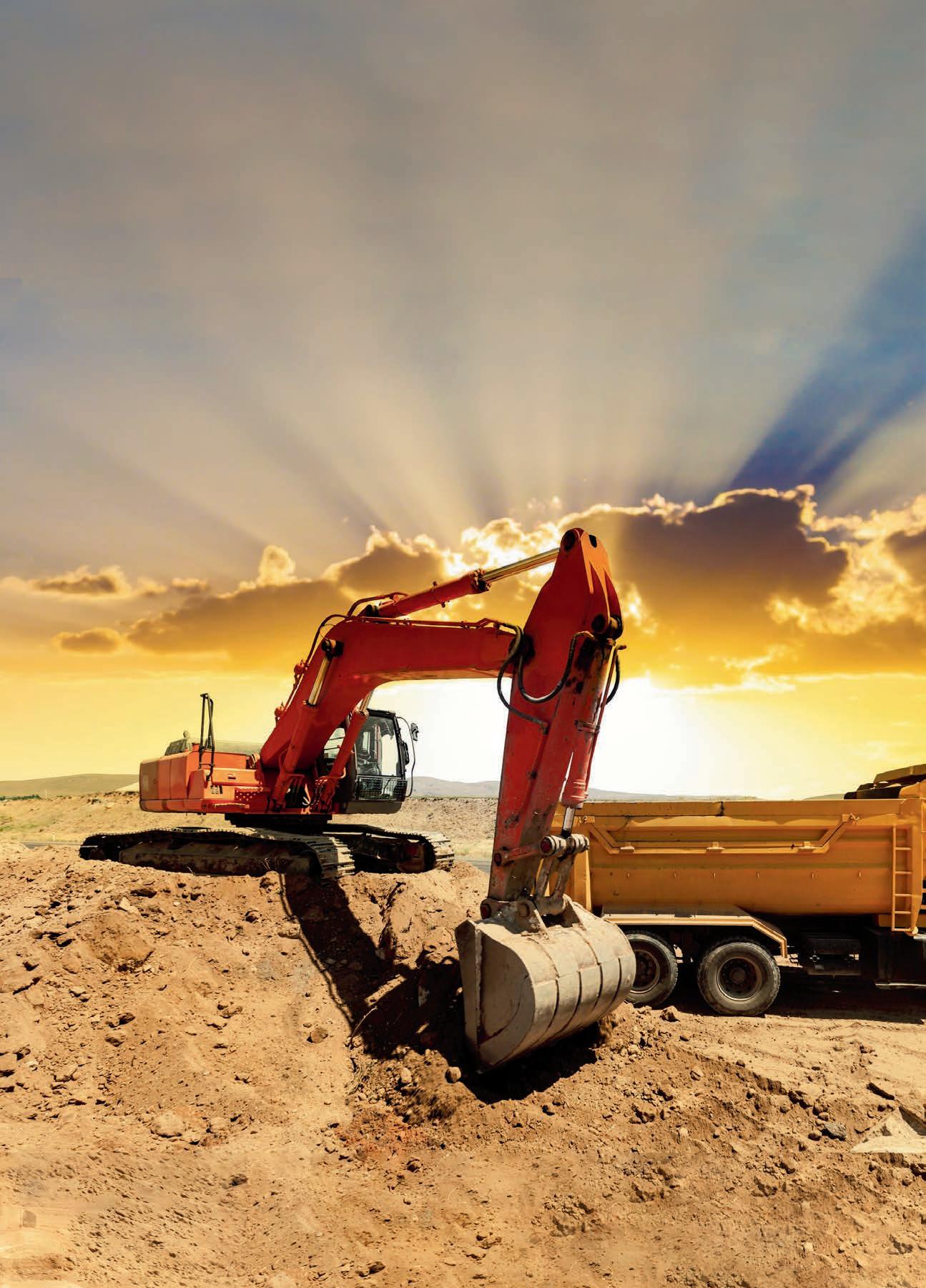 Powered by
Powered by

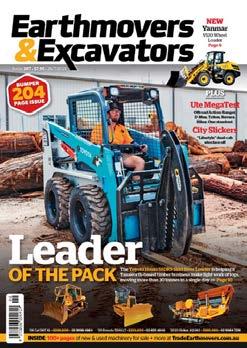

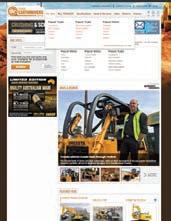

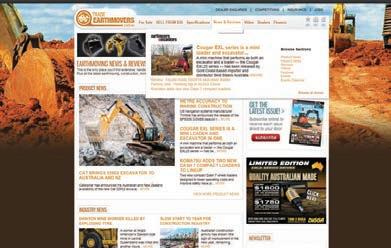



Hospitals and supermarkets are exempt from Clayton’s curfew but not pharmacies
NatRoad questions state government after truck curfews quietly reintroduced in Clayton
The National Road Transport Association (NatRoad) says it has many questions over the Victorian government’s recent move to reintroduce truck delivery curfews in Clayton.
“The Victorian government has quietly announced the reintroduction of truck delivery curfews amid baffling mixed messages from its Department of Transport,” NatRoad says in a press release.
“Or has it? The National Road Transport Association has sought clarification of what it terms ‘a Clayton’s announcement’, which appears to exempt deliveries to and from hospitals and supermarkets.”
NatRoad says that, on August 12, the Victorian Department of Transport broadcast an email announcement that curfews would re-apply from the following day, saying it had consulted with supermarket and road transport representatives.
The department says supermarket and transport industry representatives understood the Ministerial Order that had suspended ‘No Truck’ and ‘Loading Zone’ signs for vehicles transporting food and personal hygiene products would not be extended.
It says the ongoing Omicron COVID-19 variant and ‘Super Flu’ mean that trucks are taking longer to load and unload and will need to operate outside normal hours to keep supermarket shelves stocked.
NatRoad CEO Warren Clark says his organisation has questioned the logic in saying flexibility was needed in the same breath as announcing that curfews were back – only to be told that they did not apply to supermarket and hospital deliveries.
“This is a confusing situation that the Victorian government needs to fix as soon as possible,” Clark says.
“Given uncertainty about new Covid variants and the terrible influenza season, it makes sense to exempt hospitals and supermarkets but what about pharmacies?

“Who do the curfews affect and why announce an end to them in the first place?”
The ARRB is testing vehicle fires to determine how best to treat electric vehicle issues
The Australian Road Research Board (ARRB) says research is being undertaken into the safety risk of fires caused by electric vehicles (EVs) vs non-EVs in Australian road tunnels.
Senior professional leader of mobility futures Dr Robert Kochhan, and senior professional leader of safer smarter infrastructure Brendan Williams recently participated in a vehicle fire demonstration in the Sydney Harbour Tunnel.
A car (non-EV) was put alight in the southbound tunnel, in a controlled environment around 800 metres from the northern entrance to the tunnel where the tunnel management office is.
After an initial explosion that caused some vehicle parts, such as window glass, to scatter around the vehicle, the car fire started and triggered the tunnel sprinkler system, which kept the fire at bay.
The tunnel exhaust system was also engaged to remove harmful smoke from the tunnel.
Professional firefighters finally extinguished the fire.
The ARRB says the big question is how EV fires need to be treated. Considering the big batteries of EVs and their high energy content, an EV
ARRB is undertaking research into how to handle EV fires
fire can be hard to extinguish. Large volumes of water are required to suppress the battery fire. There is also a risk that the battery could reignite after the fire has stopped.
Kochhan says that Europe’s systems set a good example for other countries with their alpine tunnels.
“We should look at Europe where testing has already been undertaken and studies are available. The general consensus is that there are no significant concerns regarding EV fires there,” Kochhan says.
However, the ARRB says more detailed research needs to be conducted to investigate the applicability of overseas findings in Australia, and additional studies and tests may need to be carried out to ensure that our tunnels are fit for the wave of EVs coming to Australia.
If it is unknown whether the vehicle on fire is an EV or not, the EV’s high voltage systems are a safety risk. The ARRB says first responders need to be aware of the vehicle technology to manage the incident appropriately and not put anyone at risk, including themselves or vehicle occupants.

A growing roadworks and traffic control operation in regional New South Wales has added three Mercedes-Benz Actros trucks with Etnyre Falcon tri-axle walking floor trailers to its fleet.
The advanced 2653 models will perform asphalting work for WorkControl, which was founded in Forbes by Kevin and Colleen Gunn with a focus on traffic control.
Their sons, Ben and Joe, now run the growing business, which has six locations throughout western New South Wales, employs 300 people and has a fleet of 130 vehicles.
WorkControl has expanded recently to include roadwork services, prompting the purchase of the three Actros trucks that feature striking artwork celebrating the Wiradjuri heritage of the Gunn family.
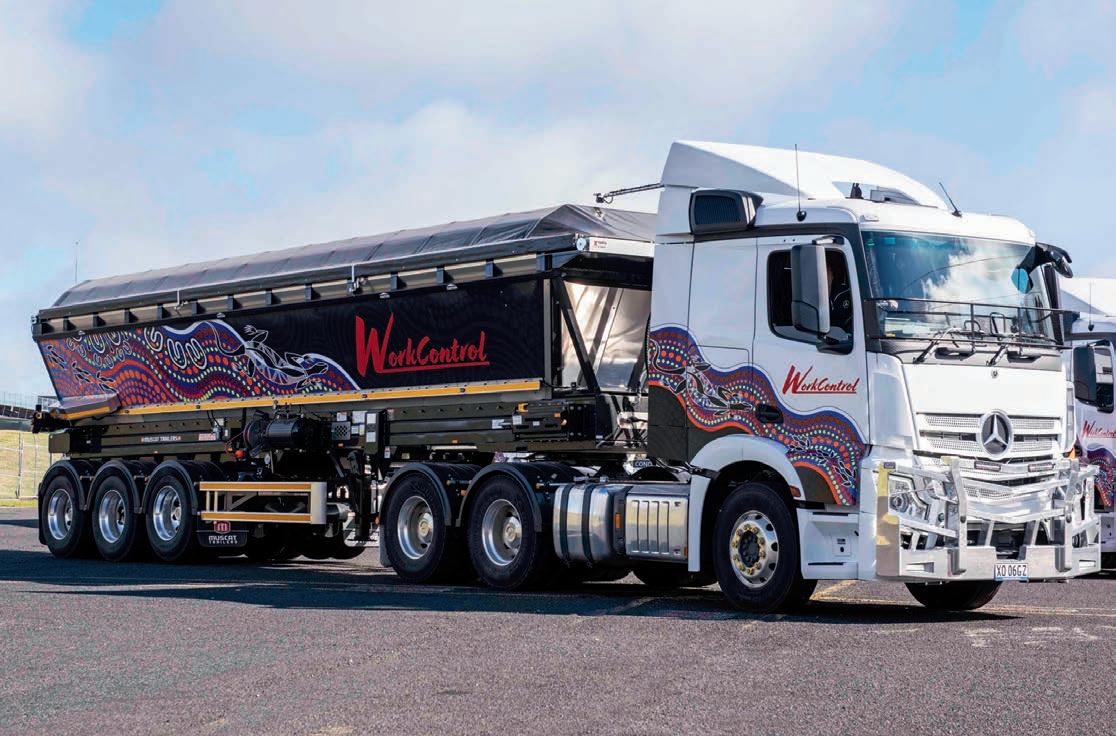
The advanced active safety features of the Actros, including the latest generation Advanced Emergency
Braking System (AEBS) called Active Brake Assist 5, which can come to a complete stop for pedestrians as well as vehicles, were at the centre of the decision to choose MercedesBenz trucks.
“Safety is at the very centre of everything we do at WorkControl,” says Ben.
“Keeping workers safe is the very reason our business exists, so it is only natural that we choose trucks like the Actros with all their safety gear.”
The Actros models were provided by Daimler Trucks Huntingwood by salesman Mark McKenzie, in conjunction with Troy Azzopardi from Muscat Trailers, which delivered the class-leading Etnyre Falcon trailers.
“We were very pleased to work with Troy and the team at Muscat Trailers, because we know their trailers are durable and tick all the health and safety boxes,” Gunn says.
One of the three new Actros 2653 joining the Work Control fleet
WorkControl selected the 2653 Actros, which features the muscular 13-litre six-cylinder Mercedes-Benz engine that generates 530hp (395kW) and 2,600Nm of torque.
The efficient engine, which meets stringent Euro 6 emissions standards, is paired with a 12-speed fully automated transmission. It features a special crawler gear for low-speed work.
The WorkControl trucks use Etnyre Falcon 33ft (10m) tri-axle live bottom floor trailers with 42-inch (106.7cm) wide conveyor belts that can empty a load with just half a rotation. This is a patented system but is simple and has low maintenance requirements.
The fully insulated trailers have been designed to be among the lightest in their class in order to drive down fuel consumption and feature rear twin barn doors with individual cylinders and steep side walls to allow for easy discharge of all materials.
NSW regional operation WorkControl has added three new Mercedes-Benz trucks to its growing fleetThis milestone Anthem was the 200th Mack for Ritchers Transport
Transport company Richers Transport’s latest Mack order makes history
Queensland company Richers Transport has made history, as it becomes the company to take delivery of its 200th Mack truck.
Richers Transport has a history stretching back nearly nine decades; the company started out with just one Model T Ford and has just taken delivery of its 200th Mack.
Richers took delivery of the first Mack Anthem to hit the road in Australia last year so it’s fitting that it’s 200th Mack truck also proudly carries the Anthem badge.
“We choose to go with Mack for drivability, they’re great for the drivers, for fuel economy, and are equipped with a good safety package,” Richers Transport operations manager Tom Richers says.
“They’re great from a maintenance perspective as well.
“The service and back up we get from the dealer network is fantastic.”
Operationally, Richers Transport covers the entire Australian eastern seaboard from Cairns to Adelaide transporting groceries, particle board, alcohol, and general freight.
“We often talk about durability when we talk about Mack trucks,” says Mack Trucks Australia vice president Tom Chapman.
“However, durability of customer relationships such as the one forged between Mack and the Richers family over many decades is perhaps even more important.
Chapman says productivity and efficiency in trucks is vital in a modern transport operation.
“But an enduring partnership based on trust in both people and product doesn’t just happen overnight, it’s built over many years,” Chapman says.
“I’m very proud to mark this milestone event with the Richers family, it’s a testament to the strength of both brands, Richers transport and Mack trucks.”
The distinctive green and white Richers livery of the milestone Anthem is complemented by custom stainless-steel work and signwriting.
The MP8 powered Mack Anthem also features a walk-through 36-inch sleeper cab, and an integrated Bendix Wingman Fusion safety system as standard equipment.
Diamond Brothers Transport is enjoying its newest Mack trucks
Adelaide-based Diamond Brothers Transport has earned an enviable reputation for tailored transport solutions over nearly seven decades in business.
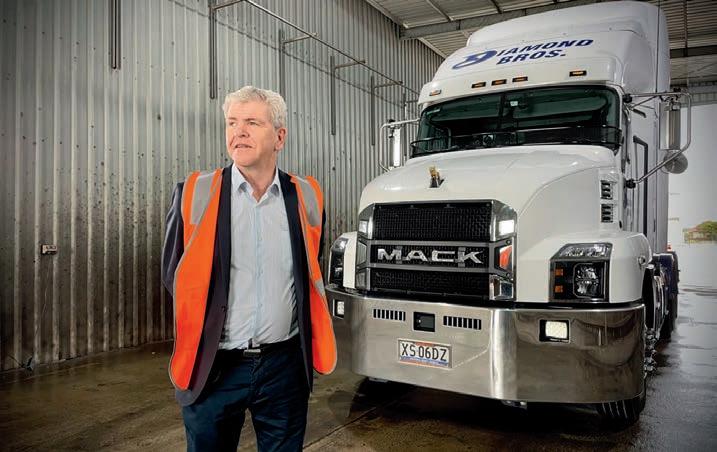
With an early history in car carrying the company has evolved to a dedicated interstate general carrier with a keen eye on both customer service and operational efficiencies.
The Diamond Brothers fleet services all east coast capitals as well as Perth Western Australia in predominantly B-double and B-triple applications.
In recent years more Mack Trucks has joined the fleet to satisfy the expectations of not only the company itself but also the drivers.
Kym McDermid, CEO of Diamond Brothers Transport, is a keen supporter of the bulldog brand.
“Mack in Australia has an incredible amount of history, I was brought up with massive Macks carrying Buntine road trains all over Australia,” McDermid says.
However, McDermid says it’s the new generation of Mack Trucks that are continuing to impress with their efficiency and performance.
“With more than 50 years of Mack being made here in Australia we have the Anthem that is a new generation, not only does it look fantastic it does the job too,” he says.
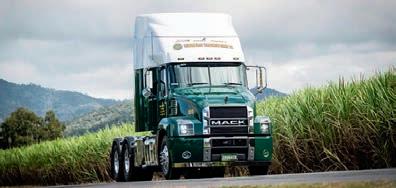
“We have a couple of Mack
Diamond Brothers Transport CEO Kym McDermidAnthems on linehaul now with a few more on order. We have better fuel economy with the Anthem, it’s really been exceptional fuel economy.
“Fuel efficiency is important for two reasons, one is obviously, the cost of fuel and you want to keep your costs down as much as you can. But it’s also about your carbon footprint as well, the less fuel so that’s been good for us also.”
While the bottom line is important, a driver’s perspective is also just as vital. Long-term Diamond Brothers driver, Andy Price, is a self-confessed fan of the Mack Anthem.
“I’ve been in the Anthem for over a year now. I find I’m actually less fatigued than I would if I was driving a more conventional truck,” Price says.
“With the eight-airbag system on the rear and the parabolic leaf spring suspension up the front, the ride in the Anthem is incredible.
“A lot of trucks would kick and buck like you were riding a horse but the Anthem is a lot smoother to drive. I’ve noticed it’s a lot friendlier truck, you’ve got the space, you don’t feel like you’re squashed, the Anthem seems to be just more driver friendly.”
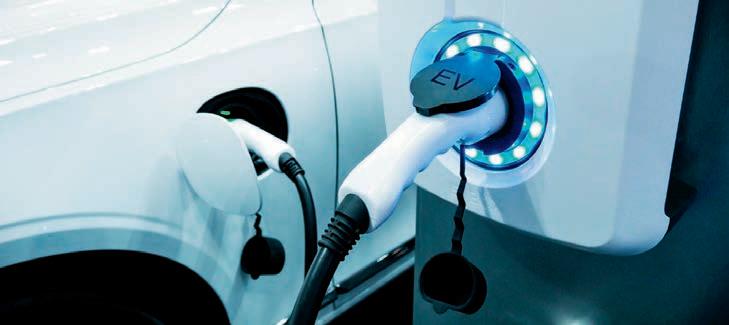
The federal government says it is unlocking the nation’s electric vehicle potential and putting in place the next steps to establish Australia’s first National Electric Vehicle Strategy.
A discussion paper on the National Electric Vehicle Strategy was due to be released for consultation as this issue went to press.
At the heart of the strategy will be a plan to improve uptake of electric
vehicles and improve affordability and choice by growing the Australian electric vehicle market.
The government says Australia is significantly behind the pack when it comes to electric vehicles – at last count, consumers in the United Kingdom could take their pick of 26 low-emissions vehicles under $60,000. In Australia that number is only eight.
At two per cent, Australia’s uptake of
Australia’s uptake of new lowemissions vehicles is also nearly five times lower than the global average
new low-emissions vehicles is also nearly five times lower than the global average.
The federal government says now is the time to have a discussion about whether vehicle fuel efficiency standards could help improve the supply of electric vehicles into the Australian market to address the cost-of-living impacts of inefficient cars and to reduce emissions from the transport sector.
The government says the development of a National Electric Vehicle Strategy is an opportunity to explore options and details about how an Australian fuel efficiency standard could work and the benefits of a standard – such as getting more affordable electric vehicles to market and reducing household transport costs from inefficient vehicles.
In recognition of the importance of all jurisdictions working together to tackle this challenge and opportunity, the climate change and transport ministers have written to state and territory ministers inviting participation in the development of the strategy.
The Australian Logistics Council (ALC) has welcomed the federal government’s commitment to an Electric Vehicle Strategy and called for the inclusion of heavy vehicles.
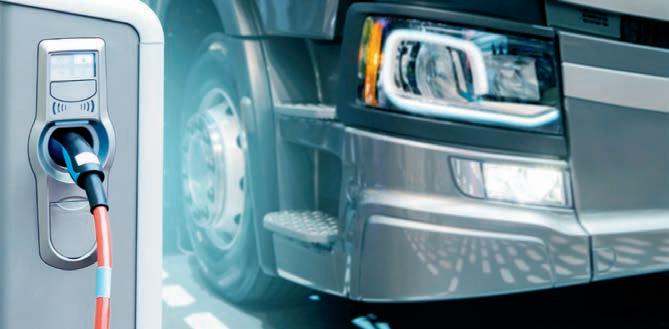
The ALC is also repeating calls for a discussion on the future funding of transport infrastructure as the uptake of EVs depletes fuel excise revenue.
ALC CEO Dr Hermione Parsons says the supply chain sector is on a path to emissions reduction.
“While the transport sector faces a number of challenges in reducing
emissions, it is an obvious focus for action to achieve Australia’s emissions reduction target. The ALC has developed recommendations to support our netzero transition,” Parsons says.
“The freight and supply chain sector is already on a path to emissions reduction with many ALC members committed to net zero targets. It is critical that the new strategy consults widely with the freight and logistics sector and factors in the needs of our heavy vehicle fleet.
“Across the end-to-end supply chain there is a varying degree of difficulty in
decarbonising activity. For example, with road transport, electrification is relatively straight-forward for smaller vehicles. Yet, long haul and heavy loads bring additional challenges around weight and the high-power needs for fast charging.”
Parsons says in the interests of the national economy, jobs and standard of living, the industry must make the transition to alternative fuels a success.
“This will be influenced by a range of factors including access to the right technology, industry incentives, customer expectations, regulatory settings and investor sentiment as well as global capital markets,” Parsons says.
The ALC is reiterating the need to address the impact on fuel excise revenue and called on all governments to start planning now for alternative road funding methods.
“Simply put, less petrol and diesel vehicles will mean less fuel excise revenue collected,” Parsons says.
“This source of funding is tied to road transport infrastructure funding and the ALC again calls for National Cabinet to address the uncertain future funding of transport infrastructure.”
The federal government says its EV strategy will make electric options cheaper for the transport industry
The ALC says the electric vehicle strategy must also include the heavy vehicle industryThe ALC wants to see the new EV strategy extend to trucks
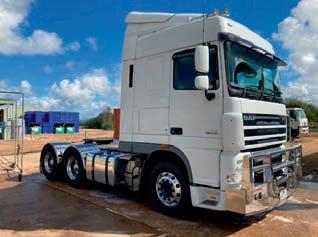

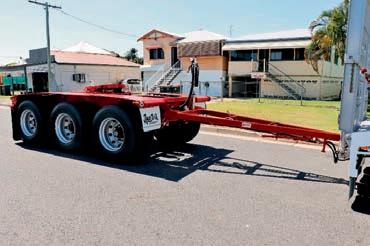
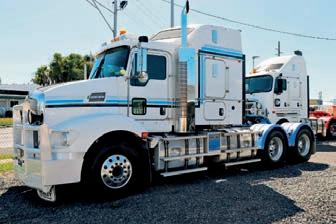
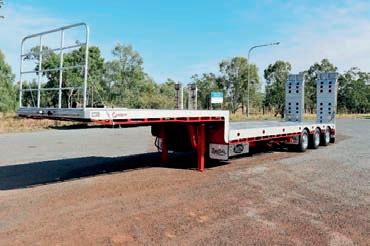



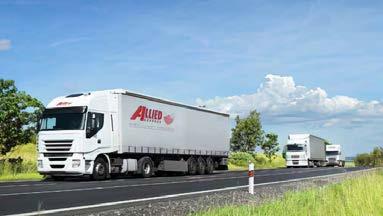
New Zealand company Freightways has bought Allied Express as it continues transitioning into Australia’s freight market
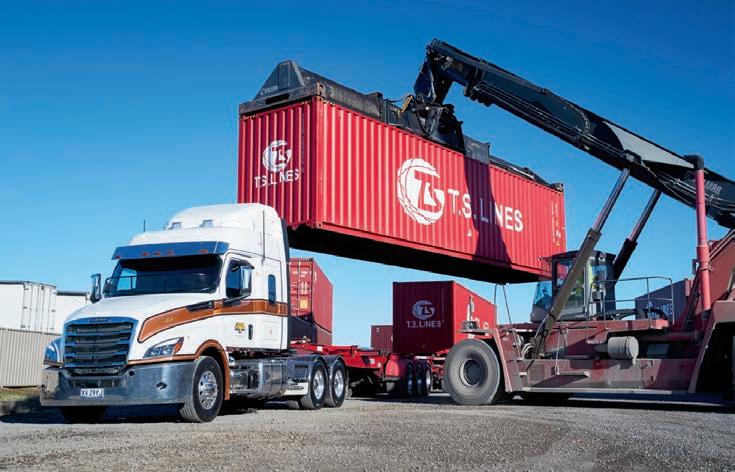
New Zealand express delivery group
A trucking fleet hauling in and out of a key Australian food bowl has bought two new Freightliner Cascadias.
Kreskas Bros has added to its fleet by purchasing the two new Cascadias to use in its day-to-day operations.
Demand is one of the reasons that Kreskas Bros Transport is the largest road carrier of shipping containers between the Port of Melbourne and regional Victoria.
Kreskas Bros has a mixed fleet of trucks that includes traditional cabovers, Mercedes-Benz Actros and some recently-arrived Freightliner Cascadias.
Its first experience with the Cascadia came about when the late John McCarroll, an industry icon and longtime friend of the Kreskas Bros team, took on a central role in the Australian test program for the new Freightliner.
‘Johnno’ drove a Cascadia test unit B-double five days a week for 18 months and stored it overnight in the Kreskas Bros yard.
A Cascadia 126 in Kreskas Bros colours joined the fleet just months after the Cascadia was officially launched in Australia in late 2019 and soon impressed the team running as an A-Double between Shepparton and Melbourne.
One of the first things that stood out was the comfort of the advanced bonneted truck that has a spacious
48-inch sleeper cap and the latest ergonomic interior design.
“Anyone who drives it will tell you how comfortable they are to drive,” says Kreskas Brothers Transport fleet manager Kevin Mutton.
“Keeping our drivers comfortable is very important to us, they spend a lot of time in the truck, so that is a really big positive.”
Another thing to standout early was the excellent fuel consumption.
“It’s clear that this is a very efficient truck,” Mutton says.
“After 290,000km we can say the Cascadia is clearly the most fuelefficient truck in our fleet.”
Kreskas Bros Transport also values the safety features that come standard on the Cascadia, including a radar and camera-based advanced emergency braking system that can automatically detect, and fully brake for, moving pedestrians in addition to vehicles.
Also standard is a radar-based adaptive cruise control system and a lane departure warning system in addition to an electronic stability program and a driver airbag.
The Kreskas Bros Cascadias are under Daimler Truck service contracts, which ensure they are maintained at a Daimler Truck dealership by factory-trained technicians using genuine parts.
Freightways has finalised a $160 million acquisition of courier and express freight provider Allied Express.
The acquisition shows Freightways is looking to continue expanding in Australia, as it will take over Allied Express’s delivery services through a network of leased depots in Australian cities.
Freightways says the deal will help increase its presence and range of services that it can offer in Australia as it will continue its activities in the neighbouring country.
The acquisition was set to be completed on or after September 30 and will establish a platform for Freightways to continue growing through its entry point to the Australian market.
As part of the deal, Freightways will pay the current Allied Express owners in the McDowell family $160 million for 100 per cent of its shares.
The deal will be funded by a $100 million shared issuance to the McDowell family, who will become substantial shareholders in Freightways.
“This transaction gives us a successful model for enhancing our offering on both sides of the Tasman, leveraging Freightways’ core capabilities in express pickup, processing and delivery while creating a niche in oversized freight at the same time,” Freightways CEO Mark Troughear says.
“Allied Express has established a strong and highly competitive position in the Australian market over 40 years in specialised logistics.
“Its ability to handle larger items sets it apart from others with a service that is highly desired by large corporates and has benefited from the recent acceleration of e-commerce.”
Freightways has made a move into the Australian market Two more Cascadias have joined the Kreska Bros fleetThe WRF says federal help is needed to build more successful women’s transport industry programs
The Western Roads Federation (WRF) in Western Australia says the Pilbara Heavy Haulage Girls program is helping to empower women, particularly older women and those who have survived domestic violence, find new careers and self-confidence in the WA transport industry.

The WRF says nearly a third of the 220 women trained to drive road trains over the past 20 years by the Pilbara Heavy Haulage Girls have come from backgrounds that include domestic violence incidents.
“We have found that domestic violence survivors find
empowerment in a safe space driving trucks, while gaining financial freedom in an incredibly supportive on-road truck driver community,” Pilbara Heavy Haulage Girls member Heather Jones says.
The WRF says the program has now graduated more than 87 per cent of graduates into jobs in the industry, with an increasing percentage of graduates being women.
A meeting of the leading women in transport was facilitated recently by the WRF to develop an urgent action plan to attract more women into the industry.
“As an industry we are recognising
that we can both offer life changing opportunities for women while addressing our critical skills shortages,” WRF board director Louise Bilato says.
The WRF says there are many career opportunities ideally suited to women in the transport industry, but says the industry needs to increase awareness and offer tailored training pathways that connect to employers.
The federation is calling for federal government support, saying it needs the government to build on the great training investment done by the WA government.
The WRF wants the federal government to offer support to women specific programs like Pilbara Heavy Haulage Girls and tailored training pathways into the other great career opportunities offered in the transport industry.
Gavin O’Sullivan’s strong support for rural trucking was acknowledged on August 12 when he was presented with an honorary life membership of the Australian Livestock and Rural Transporters Association (ALRTA) at its National Conference in Bendigo.
Serving as the inaugural President of the (then) Livestock Transporters Association of Victoria, O’Sullivan steered the state and national rural transport associations in their efforts to bring about many significant changes to improve
the safety, working conditions and productivity of livestock transport.
He represented members to local, state and federal governments, lobbying them on important issues like volume loading and crate heights.
Presenting the award to O’Sullivan was long time Livestock and Rural Transporters Association of Victoria (LRTAV) member Kevin Fechner, who discussed O’Sullivan’s ongoing and current personal support of the transport industry.
“Gavin has been instrumental in the formation and growth of our state and national livestock transport industry associations,” said Fechner.
He told the audience how O’Sullivan and his brother, Peter, built O’Sullivan’s Transport from a family small business carting sheep and cattle to and from farms, saleyards, feedlots and abattoirs, to a fleet of 70 predominantly Kenworth and Western Star prime movers carting a wide range of agricultural products across the nation.
It was an emotional moment when Fechner invited O’Sullivan to the stage to accept the honour and say a few words before ALRTA president Scott McDonald congratulated O’Sullivan and presented him with the Life Membership plaque.
Gavin expressed his gratitude for the unexpected award and spoke highly of the valuable life-long friendships he had made with transporters right across Australia through active participation in the LRTAV and the ALRTA.
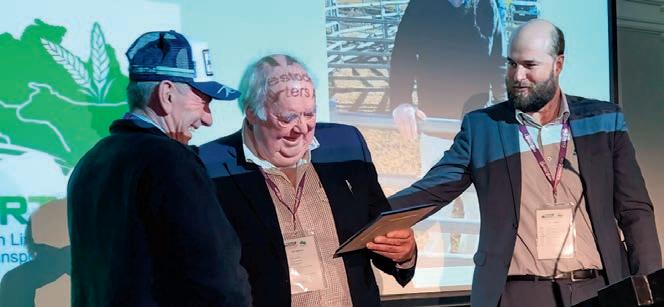 Gavin O’Sullivan received lifetime membership
The Pilbara Heavy Haulage Girls program has helped many women enter the trucking industry
Kevin Fechner (left) and Scott McDonald (right) congratulate Gavin O’Sullivan (centre) on receiving an honorary Life Membership of ALRTA
Gavin O’Sullivan received lifetime membership
The Pilbara Heavy Haulage Girls program has helped many women enter the trucking industry
Kevin Fechner (left) and Scott McDonald (right) congratulate Gavin O’Sullivan (centre) on receiving an honorary Life Membership of ALRTA
The QTA is celebrating after the state approved the apprenticeship program to attract new truck drivers into the industry
Queensland’s transport industry is set to receive a major boost as the state has approved the heavy vehicle driver apprenticeship program.
The Queensland Trucking Association (QTA), as the Industry Skills Advisor for transport and logistics in Queensland, says that the Department of Employment, Small Business and Training (DESBT) has approved the industry proposal requesting the establishment of a Heavy Vehicle Driver Apprenticeship in Queensland.
The industry proposal was developed by the QTA on behalf of industry and received widespread support gained through extensive consultation with employers, drivers and industry stakeholders.
“The Heavy Vehicle Driving Apprenticeship is a long-awaited recognition of the level of skill truck drivers require and must develop to be a safe and competent operator,” QTA CEO Gary Mahon says.
“This is a significant step towards sustaining the future workforce in the road freight industry with truck driving now offered as a professional trade.”
The apprenticeship will add to other workforce attraction strategies that are needed to solve the labour shortage in the road freight industry.
The QTA Jobs Ready Program, if funded, will provide an injection of truck drivers into the sector that is suffering from a lack of drivers with an appropriate level of experience.
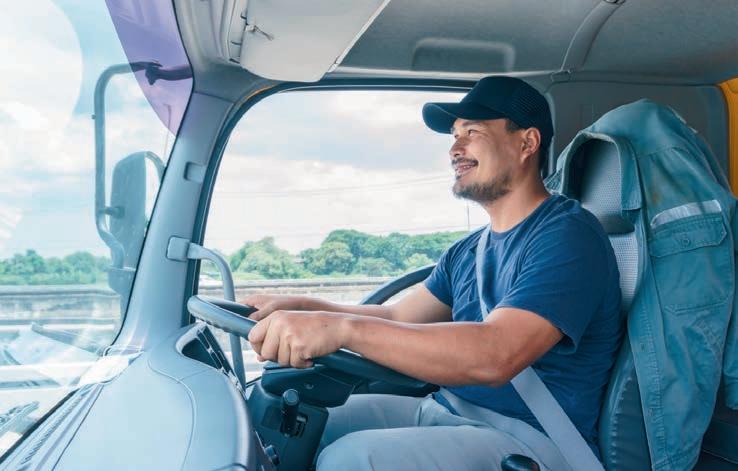
John West Logistics managing director
The QTA says the apprenticeship scheme is a valuable resource for tackling the skills shortage in the industry
John West says: “This is a great day for the transport logistics industry in Queensland. After many years of lobbying both federal and asste governments by industry and private operators the announcement of an apprenticeship scheme for our industry will help raise the levels of safety and skills in this vital industry segment.
“Workers in the road freight industry are essential to the success of this country and they should be recognised as essential workers. They have proved this beyond doubt over the past few years assisting the country through the Covid crisis. We are ready to start new entrants now.”
The apprenticeship will attract funding subsidies under the User Choice Program to assist with training costs however a co-contribution towards the training will be required.
The QTA will continue to lobby for heavy vehicle driver occupations to be included on the National Skill’s Commission Skill Priority List.
This announcement now provides employers an additional workforce attraction strategy to start managing the ongoing challenges of driver recruitment and growing the workforce. For more information, see our feature on page 87.
The NHVR says operators need to ensure their trailers meet standards
The NHVR says operators must be wary of following road train trailer requirements as offices find problems in current loads
The National Heavy Vehicle Regulator (NHVR) has issued a warning to operators about road train trailer requirements.
The NHVR has advised operators to ensure their road train trailers are fitfor-purpose and meeting basic rules.
The NHVR safety and compliance officers are reporting a significant increase in road train combinations using trailers that don’t meet the minimum safety requirements.
The NHVR says trailers designed for use in road train combinations are constructed and specified to be able to withstand the significantly higher loads and stresses to which the brakes, tow couplings and drawbars are subjected to.
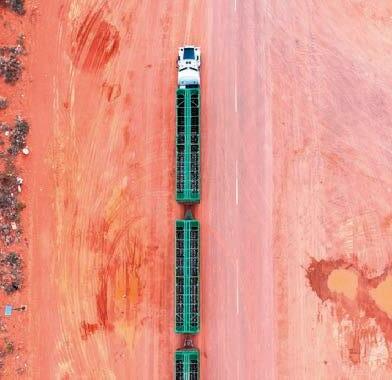
The NHVR has published information on road train trailer requirements to help operators in the Chain of Responsibility understand their requirements for these trailers.
Its road train trailer requirements section has details on how to ensure vehicles used in road train combinations are operating safely. Visit www.nhvr.gov.au for more information.
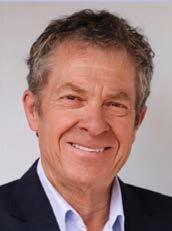
NatRoad’s new chair has a history of truck safety advocacy and is replacing Scott Davidson
The National Road Transport Association (NatRoad) has released details of its newly elected chair that it says is an advocate for a safer and more viable industry.
Paul Fellows has been voted as the new chairman of the National Road Transport Association.
A road transport veteran of 40 years, Fellows has worked as a driver, mechanic and business manager. He owns Fellows Bulk, operating a small fleet of tippers out of Deniliquin in New South Wales.
“I am honoured to take on the Chairman role,” Fellows says.
“I still keep my hand in, working as a relief driver and carting dry bulk to and from Brisbane so that enables me to experience things from a driver’s perspective.
“I’ve been part of the NatRoad Board for two years and thoroughly enjoy being an advocate for transport operators at every level.
“I’m equally comfortable talking to girls and guys on the road as politicians in Canberra.”
Fellows succeeds Scott Davidson, who has also stepped down from the board.
“Scott has shown outstanding leadership during unprecedented times for road transport,” Fellows says.
“I also want to acknowledge the contributions of Melanie Cosgrove and Maggie Welsh to an energetic board, and the election of Darren Nolan, Lyndon Watson and Steve Marley.
“We have truly broad representation and a great spread of members from right across the country.”
Fellows is the father of three boys, and one of them, Tom, works for him as a driver. His wife Jenny also works in the business. Fellows is also Deputy Mayor of Edward River Council.
“I have a genuine passion for safety and am serving as Chairman of Trucksafe,” Fellows says.
“My main focus is on promoting a safe workplace and a professional industry.
“My priorities are advancing the financial viability of our industry, recruiting and retaining talent and reviving Heavy Vehicle National Law reform so we can have meaningful change.”
The HVIA has provided a PBS reform update as the system finally begins to emerge
The Heavy Vehicle Industry Australia (HVIA) says pieces of the puzzle are finally coming together when it comes to Performance Based Standards (PBS) reform.
In its monthly column in sister publication Big Rigs, the HVIA says the PBS scheme has been the best safety, productivity and environmental innovation in the road transport sector since the introduction of B-doubles in the early 1980s.
Despite the PBS’s success, the HVIA has long argued for improvements to the PBS system. HVIA initially argued for fitting of advanced braking systems to PBS vehicle in 2016. The HVIA says it called for improvements to the certification process and access decision making processes, network access improvements and ADR exemptions in 2017, and first raised the issue of PBS tyres in 2018.
HVIA’s members, and in particular the consulting engineers and trailer manufacturers, have been a big part of bringing these benefits to the community.
HVIA says the PBS process is being streamlined further
The HVIA says the National Heavy Vehicle Regulator (NHVR) has introduced streamlined processes for some common combination types and the proportion of the network covered by PBS notices has increased in recent years but there is more work to be done.
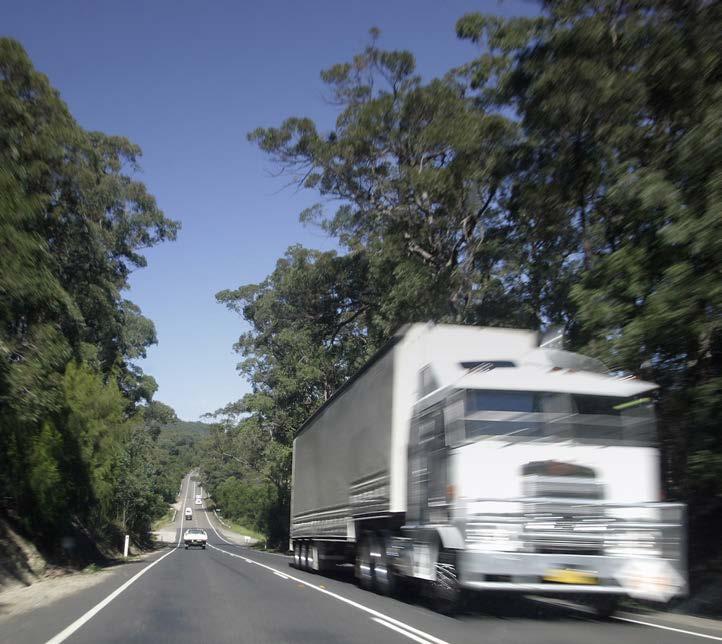
Ministerial endorsement towards improving certainty of access for PBS vehicles, and a move to take common and proven PBS combinations out of the PBS approval process are important steps forward.
Meanwhile, HVIA members have also continued the process of innovation, with new PBS combinations becoming available on a regular basis delivering vehicles and combinations that set new benchmarks for safety and productivity.
The National Road Transport Association (NatRoad) says New South Wales has made changes to its dangerous goods rules for trucks.

NatRoad says there are important changes to dangerous goods regulations in New South Wales with the NSW Dangerous Goods (Road and Rail Transport) Regulation 2022 having come into effect from August 19.
The new regulation includes changes to strengthen requirements relating
to safety, maintenance, inspection, packaging approval and incident notification. They include:
• Heavy tank trailers must have an electronic roll stability system fitted, maintained and operational, legislating a determination previously made by the EPA
• Prohibited routes specified in NSW Road Rule 300-2 are mirrored, enabling the EPA to regulate vehicles transporting dangerous goods on
prohibited routes, including tunnels
• Prime contractors must notify the Environmental Protection Authority (EPA) within one hour of becoming aware of an incident resulting in a dangerous situation – drivers must still notify incidents to emergency services and the prime contractor ‘as soon as practicable’ but do not need to notify the EPA
• The EPA or SafeWork, as competent authorities, may authorise a qualified engineer, NATA accredited laboratory, NSW government agency or statutory body to approve packaging designs on their behalf
• A p erson undertaking the maintenance, testing or inspection of a licensed dangerous goods vehicle must maintain the vehicle in accordance with the requirements of the Australian Dangerous Goods Code. NatRoad says language and layout changes have been made to better align the regulation with the national Transport of Dangerous Goods Model Laws, and licence and other fees will be adjusted for inflation from 2023–24.
The TWU wants port fees moved to shipping companies rather than trucking companies
transport associations, have been calling for wealthy heads in maritime supply chains to pay their fair share rather than pushing transport operators to the brink.”
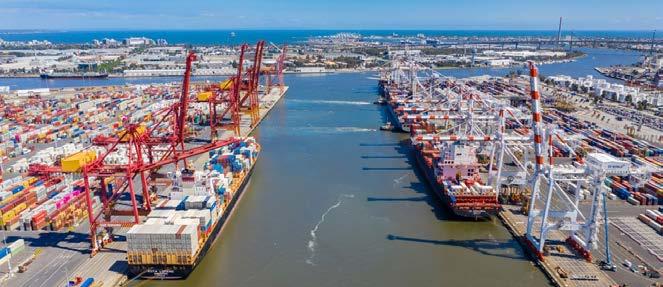
The Transport Workers’ Union (TWU) has responded to calls for shipping companies to be hit with port access fees instead of lumping them on truck drivers and businesses.
TWU national secretary Michael Kaine says the change to putting these costs on shipping companies will help make port access easier for truck operators.
“This a positive step towards ending the stevedores monopoly gouging scandal which has gone on for years,” Kaine says.
“Exorbitant fees have imposed major burdens on transport companies and owner drivers already operating on razor-thin margins.
“For more than five years, the TWU, along with companies like ACFS and
Kaine says the current system is making the transport industry more dangerous for truck operators.
He says costs should be alleviated to prevent dangerous situations being created where drivers work harder and risk their safety for small profit margins.
“The proposition of ‘flexible fees’ to create ‘efficient incentives’ undermines safety in Australia’s deadliest industry and should be abandoned,” Kaine says.
“When profits are squeezed, operators and drivers are pressured to delay maintenance, speed, skip rest breaks and drive fatigued. Imposing fees to make transport operators work faster will only result in more deaths on our roads.”
NatRoad says the NSW dangerous goods rules changes impact truck drivers and operators around the stateThe TWU has backed up a call to change the way port access fees are charged to operators around Australia The rules for dangerous goods in NSW changed in August
The transport industry criticised a recent Grattan Institute report calling for low-emission zones to be introduced to Melbourne and Sydney. This may remove some older trucks from driving in the area, but once understood, it may be a viable strategy to catch up with the rest of the world. Sean Mortell reports
When the Grattan Institute released its report on truck air pollution recently, it caused a storm. Yet, upon delving deeper into the report and its suggestions, the information presented may have been misinterpreted and misunderstood by the transport industry.
The Grattan truck plan: practical policies for cleaner freight report says that old trucks could be banned from Sydney and Melbourne to reduce deadly air pollution. The plan suggested removing more than a quarter of Melbourne and Sydney’s trucks from CBD roads to push lower pollution and limit danger to citizens.
Soon after the report’s release the National Road Transport Association (NatRoad) responded, then the Heavy Vehicle Industry Australia (HVIA) released its own response. While the HVIA said the report missed easy recommendations to reduce pollution, NatRoad CEO Warren Clark labelled the report as bonkers and unproductive, before saying that incentives and assistance should come before bans.
“The idea of banning trucks from capital cities is bonkers,” Clark says.
“There is no market for electric or hydrogen trucks in Australia yet, so forcing an industry out of the country’s most populous cities is mad.”
The Gratton report says trucks build before 2003 should be banned from Sydney and Melbourne to improve air quality

These are both very dangerous pollutants that have serious health effects. Not to be confused with emissions, which relate to the environmental damage it can cause, pollutants directly impact human health, and can lead to a wealth of serious health conditions such as fatal lung diseases, cardiovascular diseases, strokes, non-respiratory cancers and type-two diabetes, particularly in children.
The second type of old truck suggested in the low-emission zone ban are trucks sold between 1996 and 2003. These trucks adhere to the Euro 1 standard, which was the first generation of pollution standards in Australia.
But the Grattan Institute is quick to point out that the report was misunderstood by Clark and the industry. Grattan Institute transport and cities program senior associate Ingrid Burfurd says the first part of the report that was misconceived was that the report never once called for trucks to be completely banned from roads.
“Placing low-emissions zones in Melbourne and Sydney wouldn’t simply remove large numbers of trucks and change the freight task for the nation,” Burfurd told ATN.
“It would tweak the structure of it, but it would mean newer and cleaner trucks would do more of the urban freight task, while those older trucks do regional runs.”
Under the Grattan Institute report, all trucks brought to market and purchased before 2003 would be banned in suggested low-emissions zones in the CBD of Melbourne and Sydney. This is because Burfurd has identified two types of old trucks. With trucks made before 1996, they didn’t have to meet any pollution standards at the point of sale. Burfurd says Grattan Institute research determined that trucks sold before 1996 emit about 60 times more particulate matter and air pollution than a truck sold recently, and up to eight times more nitrogen oxide.
“Unfortunately, Euro 1 now reflects out-of-date technology,” Burfurd says. “Trucks sold in this period release about 20 times more matter than modern trucks and up to four times more nitrogen oxide.
“In comparison, a modern truck would need to drive up and down a street 60 times to emit as much pollution matter as a truck from before 1996 driving down the same street just once.”
Essentially, Burfurd says banning trucks sold before 2003 is like adhering to a Euro 3 standard, as pre2003 trucks were yet to include Euro 4 and beyond technology.
The report, like NatRoad and others suggested, doesn’t just simply call for trucks to be banned. Instead, Burfurd idealises a world where older trucks don’t drive in CBD low emission zones in order to protect the largest populations in the country. The Grattan Institute’s report was exter nally reviewed by industry bodies, agencies and government depart ments to ensure an appropriate plan was in place to support its position.
After trawling through regulatory impact statements, Burfurd says the report devised a two-point plan to help smooth the transition of these low-emission zones. The first element begins with providing relevant forewarning for operators
before introducing a secondary truck replacement support funds system to help operators pay for the upgrade in models.
“We’ve recommended introducing low emissions zones in 2025 with replacement programs to open in 2023 to signal the timing well ahead of the zones coming into place,” Burfurd says. “This means there is plenty of forewarning and funding arriving in advance for operators.
“We want people to replace pre2003 trucks with newer models. Some may choose to move outside of the low-emission zone while others may view the zone as an opportunity to expand its business into it, while some may exit the industry.
“At the bottom line, low-emissions zones bring forward plans in the industry.”
The report plans for the truck replacement support fund to be a state government initiative, while further air pollution reductions, such as introducing Euro 6 standards for all new trucks from 2024 and sales incentives for zero-emissions trucks, would be left to the federal government. Along with financial assistance from the federal government for zero-emissions trucks, Burfurd says the plan ensures both the public and businesses can benefit from buying new energy trucks.
Burfurd is well aware that considering life cycles of trucks and upgrading isn’t easy for every operator, hence why the institute devised the forewarning and funding strategy.
“Currently, old trucks are emitting disproportionate amounts of pollution with every kilometre they drive,” Burfurd says. “The goal is to minimise the health risks while keeping the wheels of the economy and society turning.
“At the moment there’s no consideration for health, so the balance needs to be shifted sensitively to better recognise the health outcomes possible. This involves removing most
Other cities around the world already have low emission zones in place, so why not Australian cities?
of the polluting trucks from the highest density areas while minimising disruptions.”
As previously pointed out in the report, the move also wouldn’t be the first of its kind. Similar restric tions have been in place in other countries for nearly 20 years. Tokyo first introduced a low-emission zone in 2003, while London followed in 2008. Burfurd says these zones, as also seen in Barcelona, Madrid and Beijing, are much stricter and are in place in more than 250 zones in Europe alone, as well as in both South and North American and Asia.
Burfurd says it’s actually unusual that Australia doesn’t yet have these zones to limit air pollution. While other cities revise iterations of the zones and even introduce zeroemissions areas, Burfurd finds the report’s suggestion for Melbourne and Sydney to be extremely moderate in comparison.
“In London, since 2021, all hired vehicles have had to meet Euro 6 standards, while we don’t even have that standard in new trucks here,” Burfurd says. “The proposal to limit trucks to Euro 3 standard or better in Australia’s two major capital cities with large and densely populated centres is very achievable and needs to happen.”
Despite NatRoad’s initial criticism of the report, it shares many similar thoughts as the institute. Clark says NatRoad does support the move to
Euro 6 emissions standards along with mass concessions on axles, with subsidies being a valuable part of the plan.
Clark also agrees on seeking regulations for trucks, with the report calling for the width regulation to be amended. Australia currently requires truck to be 2.5 metres wide at most, compared to 2.55 metres in Europe and 2.6 metres in other countries. This means Australia can’t buy trucks that are wider than 2.5 metres, barring many zero or low-emissions truck options from entering the Australian market.
“It’s frustrating, and not just for us,” Burfurd says. “It’s been raised time and time again. It’s a well acknowledged barrier to importing the best practiced technology.”
Although the report received fierce opposition immediately, many details of it mirror what industry bodies are saying. It may be a shock for many operators, but the lowemission zone idea may be heading towards reality in Melbourne and Sydney soon.

“We want to address the issue of transitioning to zero-emission zones and making this technology more widely available to the Australian market,” Burfurd says. “It’s not a complete ban, what we want is for trucks to be replaced with newer second or third-hand diesel options.
“It means upgrading sooner rather than later and encouraging a healthier change for our country and people.”
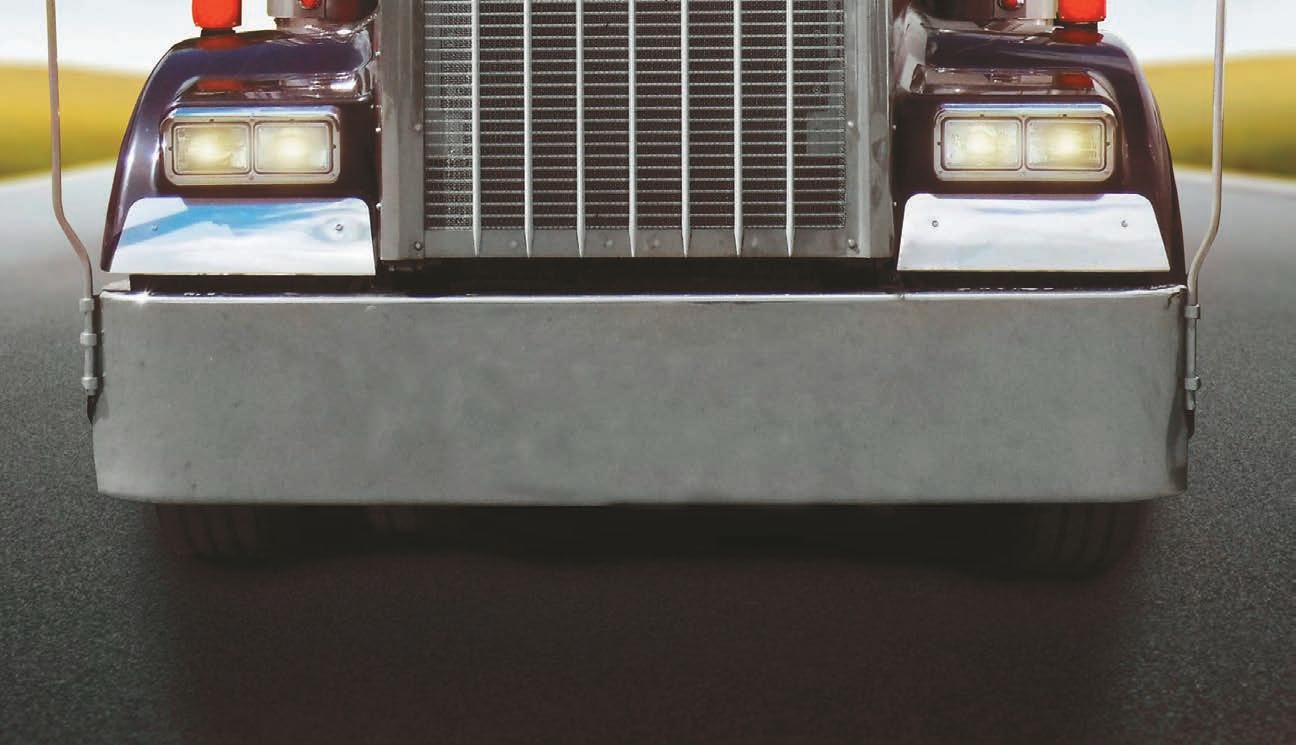
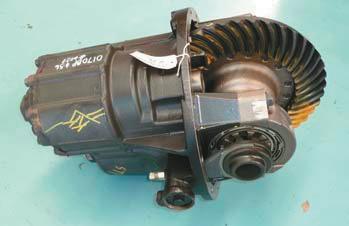
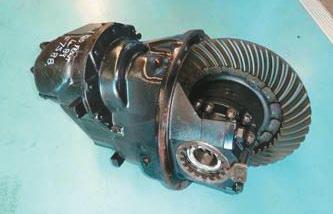
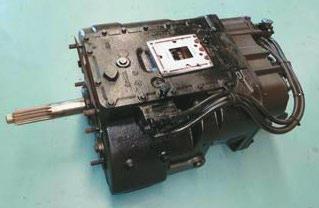
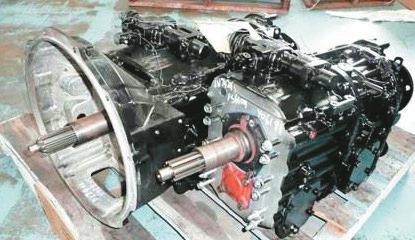

held the role of acting president and CEO for parts of 2015 and was appointed deputy CEO in 2016. Prior to his career in the Volvo Group, Jan Gurander held the role of chief financial officer in numerous automotive companies and has a background within finance.

Jan Gurander will step down as Volvo Group deputy CEO as of December 31, 2022. His other managerial assignments within the Group will gradually be distributed to other members of the Volvo Group Executive Board.
Jan Gurander has a long and successful career within the Volvo Group, starting as Volvo Group chief financial officer in 2014. He

“As deputy CEO, CFO and chairman of several business areas over the last nine years, Jan has been one of the key drivers to the positive growth and profitability development of the Group, as well as the strengthening of our financial position,” President and CEO Martin Lundstedt says.
“Jan has also been one of the main contributors when setting our strategic direction to lead the transformation into sustainable transport and infrastructure solutions. I want to express my appreciation for a significant contribution throughout the years, and I look forward to the continuous collaboration.”
Tim Hickman has been hired as Penke Australia and New Zealand’s chief financial officer, effective August 11 2022.
An MBA-qualified chartered accountant, Hickman has extensive financial experience and has held various positions within on- and off-highway industries, including transportation and mining.
Most recently, he was the finance director with Cummins Asia Pacific. Prior to this, he held senior finance positions at General Electric. He also spent more than 15 years working in the mining industry, including as financial controller of the gold division for Western Mining and CFO of Regis Resources.
“With the wealth of experience that Tim brings, I am thrilled to welcome him to our senior leadership team,” said Hamish Christie-Johnston, managing director of Penske Australia & New Zealand.
“Having worked in the same industries in which Penske operations will hold us in excellent
stead as we continue to expand our operations.
“A native New Zealander who commenced his career there, Tim also brings a cross Tasman approach that will be advantageous to our business.”
Hickman will be based at Penske Australia & New Zealand’s Melbourne office in Altona North.
Hyzon is now looking for a new CEO

Electric heavy vehicle manufacturer Hyzon Motors Inc. recently announced the appointment of Parker Meeks, most recently Hyzon’s chief strategy officer, as president and interim CEO, replacing Craig Knight, who is also departed from his role as a director.
The Board is now searching for the company’s next CEO.
“Parker Meeks has the depth and breadth of experience in the energy, infrastructure, and transportation sectors to provide the leadership and operational expertise Hyzon needs at this critical juncture in the global energy transition. The Board is confident Meeks brings the right skillset that we need at this time,” Hyzon’s lead independent director Elaine Wong says.
“I am honoured that the Board has entrusted me to lead Hyzon,” Meeks says.
“My priority is to ensure the company’s manufacturing capacity is in place with the ability to scale production efficiently. I believe our core fuel cell technology is a distinct competitive advantage, that will allow us to innovate and introduce high-performance vehicles that support the transition to clean energy.”
Additionally, George Gu has transitioned from his executive role with the company to the non-executive chairman of the Board.
Tim Hickman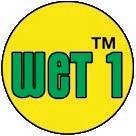


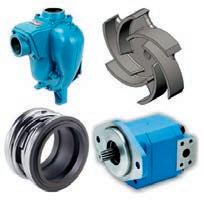

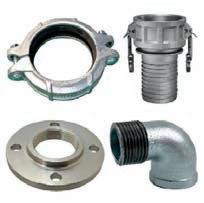

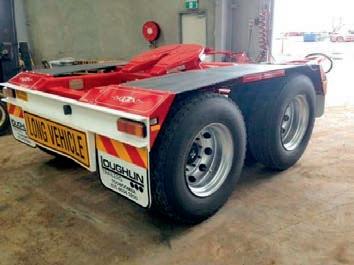
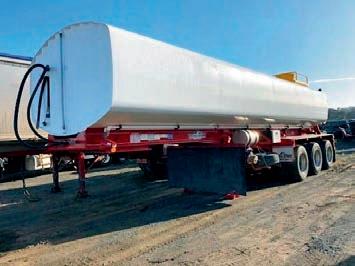
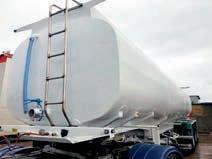
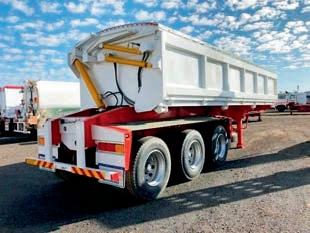

The Queensland Trucking Association (QTA) has been working hard to find solutions to the skilled driver shortage problem. Its latest apprenticeship scheme is the first answer to be approved by governments. Sean Mortell reports
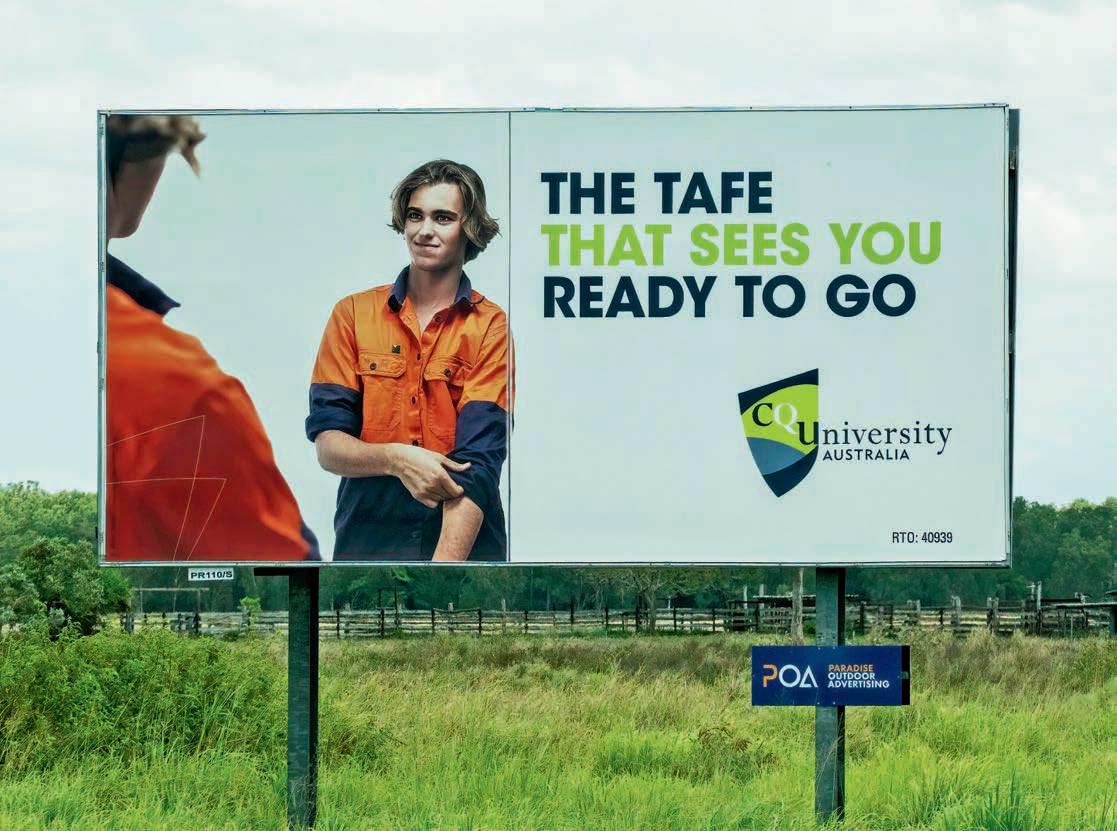
When skilled driver shortages became a constant problem for Australia’s transport industry, the Queensland Trucking Association (QTA) looked for solutions. Like many nuanced problems, QTA CEO Gary Mahon knew there wasn’t one single fix to the issue that would attract the numbers that trucking desperately needs.
A year after the previous federal government approved the QTA’s proposal for a heavy vehicle driver apprenticeship scheme, the QTA’s advocacy work has paid off as Queensland’s state government approved the scheme.
“It’s a very good and encouraging start,” Mahon told ATN
“There’s a number of people in the queue ready to get their fleet’s
recruitment drive underway.
“It’s an excellent foundation to give people the confidence to pursue a career in truck driving.”
Mahon admits the idea of an apprenticeship process in the industry isn’t a new concept, as people for decades have tried to get it across the line. Yet, when the skilled driver shortage first reared its head after the Covid-19 pandemic, Mahon knew Australia’s trucking bodies had to fight harder for the scheme. The previous federal government’s approval of the idea last year was a solid start, but it meant nothing unless Mahon and the QTA could convince the Queensland government that the scheme needed to be put into action in TAFE institutions.
The heavy vehicle driver apprenticeship scheme will be available in TAFEs across Queensland
Following the federal government’s approval, the QTA began the process of advocating for the scheme to be adopted in TAFE curriculum offerings for potential drivers. As the industry skills advisor for transport and logistics in Queensland, the QTA was able to give insight into how the system would work.
After advocating hard with authorities in respective departments to get them to endorse the program, Mahon’s association has finally seen its work come to fruition.
“There’s been a lot of good work
done by a lot of people in the industry,” Mahon says.
“We’ve also received lots of goodwill from operators who stuck by us and assisted with the lobbying and advocating process.
“We also had a department that was receptive to our argument being a long-time skills advisor to the government. These networks you put time into over many years come to the fore when these initiatives come along and you have already established a good level of trust.”
Mahon says the scheme is quickly becoming a very popular and wellreceived movement. He says all feedback has been positive, and that operators are only concerned about how to access the information and put it to use.
But there is one problem. Mahon says age restrictions were placed on the heavy vehicle driver apprenticeship scheme relating to current Queensland licensing rules. Under the rules, Queensland Transport and Main Roads rules say that people eligible to apply for the scheme must have an open driver’s licence, which they have to be at least 20 years old to be eligible for.
“We’re happy to get it underway and that’s a good start, but we’d prefer to bring in people younger than that as they leave school,” Mahon says.
“There’s been a little bit of disappointment that the threshold fundamentally starts at 20 years of age.
“People are still happy overall
to get underway with the formal apprenticeship so they can at least begin recruiting on that basis.”
Mahon says the QTA will continue looking to change the licensing age progression to allow for younger workers to begin apprenticeships as drivers. The issue was recently raised in a consultation undertaken by Australian Industry Standards and was highlighted as an opportunity to push for change from licensing bodies.
The QTA isn’t stopping at the apprenticeship scheme. The next area Mahon wants to investigate is getting the ANSCO codes specified to ensure heavy vehicle operations are listed at level three on the nation’s skilled migration list. If it fits into this category, it means truck driving will become a higher priority for the nation.
Alongside the initial apprenticeship scheme proposed by the QTA is a skilled migration initiative and a Jobs Ready program. The skilled migration move would see the nation emphasise bringing skilled workers over from nearby nations who are already licensed to operate trucks.
The Jobs Ready initiative would act as a mentoring program for the young drivers recruited using the apprenticeship scheme.
“The Jobs Ready initiative is a very popular policy proposal that can help bringing workers in with truck licenses and make them operators,” Mahon says.
“To have a licence allowing you to
drive trucks down the road is one thing, but to be an operator is another thing altogether.
“We’re looking at a blend of skilled migration, apprenticeship and advocating for the Jobs Ready move – across these three we think we have every opportunity to build a sustainable and diverse workforce.”
It’s the diversity that holds the key in Mahon’s eyes. He says these three programs will help to offer employees a wider range of drivers. The QTA will continue ensuring it considers potential drivers from beyond the traditional pathways to bring as many skilled workers into the industry as possible.
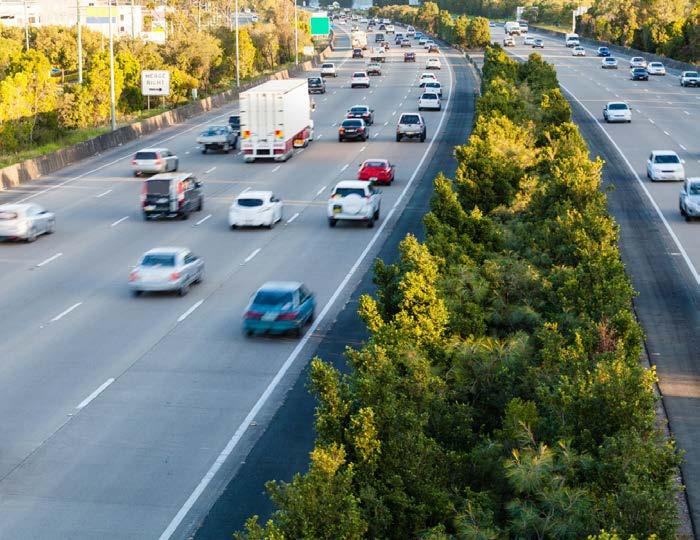
“To be able to offer prospective employees a qualification is particularly helpful as we move into the next decade,” Mahon says.
“It’ll bring lots of consistency to the industry in that people are being trained consistently within the same framework.
“We’ll look at these three strands of schemes to focus on a diverse workforce that uses different ways of attracting people to the industry.”
For those wondering how to get involved with the apprenticeship scheme, Mahon says the apprenticeship is subsidised in a co-contribution, meaning training providers decide how much to pay and split the costs. The expected duration of the apprenticeship is two years and providers of the training can be found on Queensland’s Skills Gateway website: www.skillsgateway. training.qld.gov.au
Mahon says the QTA will be touching base with training providers who expressed interest in the apprenticeship to confirm they’ll be offering the training. Employers may be eligible for a discount on the work cover premium and payroll tax rebates for their apprentices, while other subsidies may be available from an Australian Apprenticeship Network Support Provider. Visit www.australianapprenticeships.gov. au for more details.
The QTA is now pushing for truck driving to be classified as a level three skill2xMackprimemovers,1x20171x2018,mp10,685hpmdrive,auto primax,airbagsuspension,10studaxles,polishedAlcoaautogreaser, airdryer,hirisesleeper,dieselairconditioningandinverter,custom exhaustandoutbackkingbullbar,roadtrainandbdoubleratedfull guards,ledspotandstriplights, red premiuminterior,sattrackand handfreephone,Woodgraincupboardsandandbuiltins,thesetrucks havebeenonMackGoldfleetmaintenancesincenew,fullhistory available.S165. TA1141052.
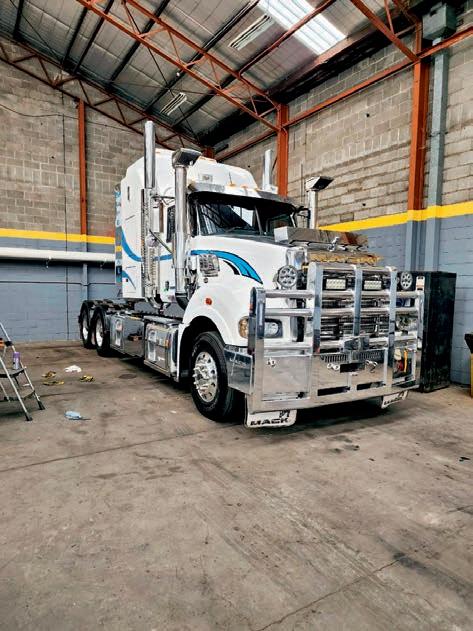
Cummins525,18speed R/Rangergearbox,Rockwells onNewayair(Hairesusp upgrade),spiderrims,alloy heavydutybullbar,quadalloy tanks,hyds,sidetipperx3 fullguard,AeroIIsleeper, dropdowndoor,new sandblastandpainted, straightchassis,originalRTA coloursHaultech.140tonne rated.S141. TA1038220.

stock.S134. TA1024432.
SARprimemover,highrise sleeper,alloyfupsbullar, alloytanks,Haultechsleepe, airconuni,fueltanke,spec autogreaser,Alcoarims,10 stud,allnewtyres,full guards,roadtrainrated 600hp,18spairbag suspension,redtriminterior, tidyreadytowork.S166. TA1144421.

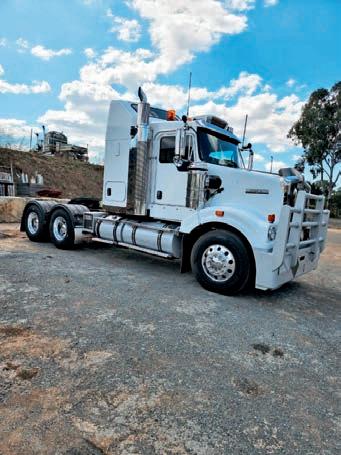
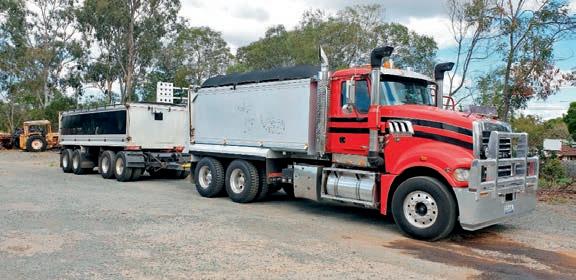
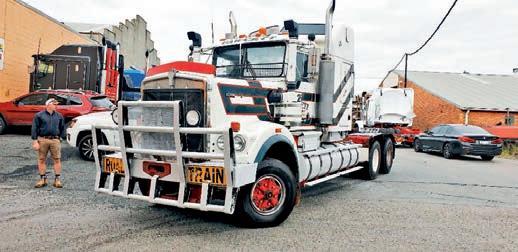
2012,MP818spR/RGearbox,46/100airbagsuspension,crosslocks newtyrespolishedalum10studrims9offsetsonsteer.Alloyfups bulbaralumbodyringfeederelectrictarpQldrego.2000Shephard alloybodyQuaddogrocksheetswearfloorelecttarptoolboxwater tanktyrecarriers10studalloys,c/skinsav80%.QldRego.S163. TA1115009.
Bifoldramps,hyd suspension,dollyneckpatrol, hydpowerpack,LEDlights,2 pacpainthingedoversize signs,LEDrevlightsand reversebeeper,lightson ramps.S158. TA1102880.
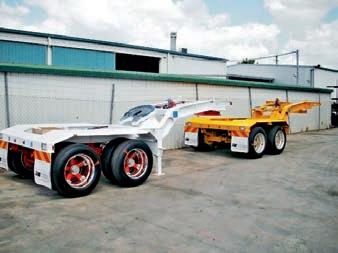
The new shop is part of the Main Roads and Department of Transport’s new WA facilities
A new transport one-stop-shop has opened in WA’s Mid-West, with Main Roads and the Department of Transport (DoT) opening the doors to its new facility in Geraldton.
Transport Minister Rita Saffioti was on hand to officially open the $14 million purpose-built facility located on Eastward Road, Wonthella.
The co-location of the two agencies provides the opportunity to improve collaboration between the portfolio partners, reduce combined office accommodation expenses and provides a one-stop-shop for Main Roads and DoT customers in the Mid-West. The existing Main Roads office was redeveloped by regional contractor Crothers Construction,
which completed the new premises in June 2022.
The 1,800 square metre facility includes a new Transport Service Centre with 11 customer service counters, 84 open plan work stations, eight meeting and conference rooms, more than 100 parking bays for staff and visitors, and infrastructure for the provision of EV charging stations.
The building has been designed to be energy efficient and incorporates a host of environmentally friendly design initiatives to reduce long-term operating costs and provide a more sustainable building.
Some of these initiatives include a 30-kilowatt solar array to supply the building with energy estimated to
The Geraldton facility aims to improve services for the transport industry in the Mid-West
save approximately $15,000 per year, as well as water and energy saving fixtures estimated to improve water efficiency by 20 per cent.
The new facility will provide all of the services that Main Roads and DoT previously provided in the region, including the delivery of licensing, maritime and transport functions.
“This is an amazing new facility that will provide critical services to the Geraldton and Mid-West community for many years to come,” WA transport minister Rita Saffioti says.
“The new facility will be a onestop-shop for all transport services for Geraldton and the Mid-West including licensing, maritime and transport functions.

“We invested $14 million to build this new facility, and the colocation of both Main Roads and the Department of Transport will provide opportunities to better collaborate on important transport projects and services in Geraldton and the Mid-West.”
The acquisition will boost Accenture’s supply chain capabilities
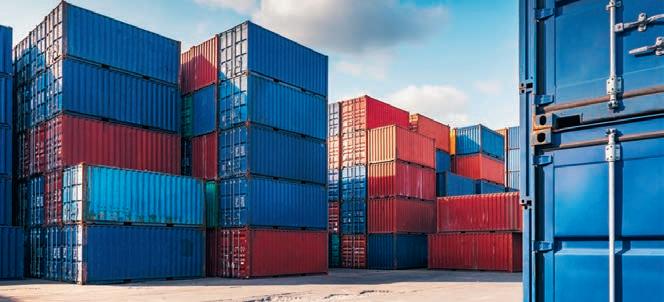
and supply constraints, companies need to reimagine, build, and operate supply chain networks that orchestrate change, simplify people’s lives and positively impact business, society and the planet,” says North American lead of Accenture supply chain and operations Renato Scaff.
Global business Accenture has announced it has agreed to acquire integrated supply chain specialist firm Inspirage.
Inspirage focuses on using Oracle technology, as the acquisition is set to strengthen Accenture’s Oracle capabilities in the supply chain.
The logistics-minded move will help Accenture innovate for clients with
emerging technologies in the touchless supply chain sphere.
Inspirage was founded in 2007 and is based in Bellevue, Washington state.
Once the acquisition is finalised, Inspirage’s 710 employees will join Accenture’s Oracle business group to expand its supply chain capabilities and create innovative supply chain networks.
“In a time of unprecedented disruption
“With the addition of Inspirage and its deep industry and systems experience, Accenture will be even better positioned to help our clients reinvent supply chain and manufacturing through Oracle technologies.”
CEO and co-founder of Inspirage Srini Subramanian says: “For 15 years, we have been highly focused on customer success and innovating to stay ahead of client and industry challenges.
“Our people take immense satisfaction in solving the most difficult supply chain problems and making a difference for our clients and Oracle partners. Together with Accenture, we can deliver these highly specialised capabilities at scale globally, while creating new growth opportunities for our people.”
The American-based supply chain business has been acquired by Accenture to enhance Oracle capabilitiesScania continues to drive the shift towards a sustainable transport system in Australia with it recently holding the Australia national finals of its famed Top Team competition at the Campbellfield Dealer Support Centre in Melbourne.
Seven teams from across the Scania network that had graduated from earlier rounds battled it out to claim the prize of representing Australia at the Bangkok regional finals of Scania’s global competition.
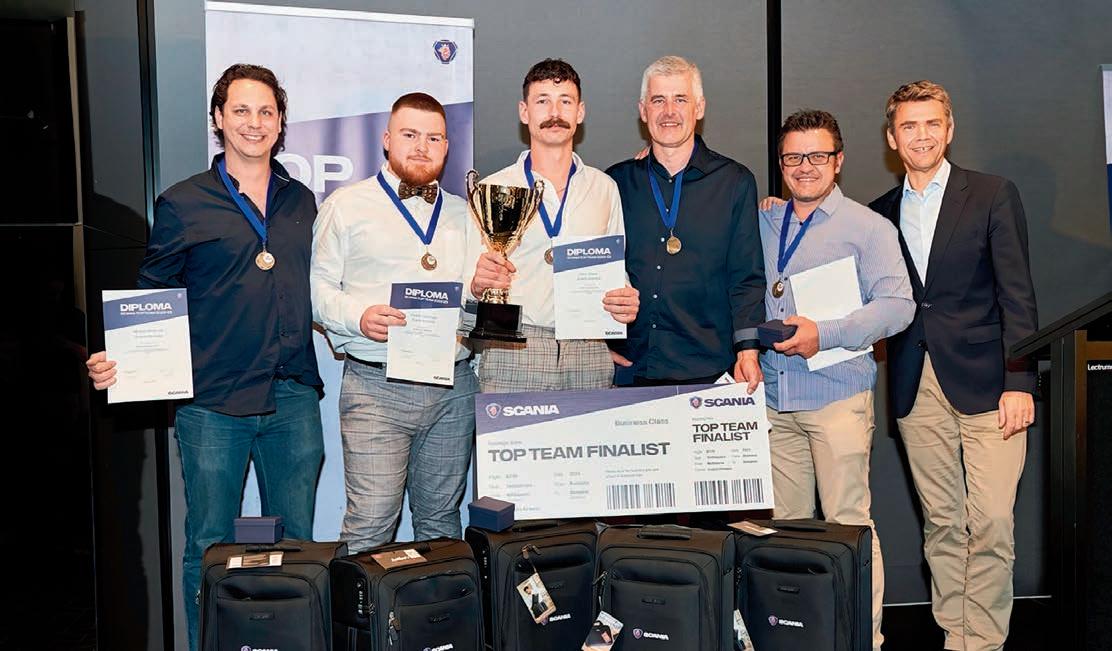
Every two years Scania offers its 1,600 global workshops the opportunity to field teams to compete, with national and regional rounds sifting the 12 best teams who come together in Sweden to fight for glory.
Scania Australia has fielded global winning teams from its Prestons NSW branch in 2011 and 2013, with a hotly contested second spot ceding victory by a whisker to the Kiwis in 2015.
This year, the Australian National Finals included for the first time a technical challenge involving the
very first Battery Electric Scania truck to arrive in Australia, a vehicle not yet released onto the road and a one few even within the business knew was in the country.
The Top Team challenge became an opportunity to put theory and training to the test. The seven teams were drawn from Scania companyowned branches in Victoria, South Australia, Queensland and three from New South Wales.
Armed with a mix of youthful enthusiasm and years of experience on the tools and computers, as well as having put in many hours of prefinals preparation on the books and in the workshop, the teams assembled early on September 4 and ploughed straight in.
Against-the-clock fault finding and diagnosis took place on a variety of Scania products, from an industrial and marine engine to truck and bus systems as well as the BEV, and included mechanical, electrical and procedural tests.
From the seven teams, the
“Dandenong AINACS” emerged victorious, heading off the ‘Prestons Pups’ as runners up, followed closely by ‘Eastern Creek Team 1’.
The team from Dandenong will travel to Bangkok to compete in the Asian regional finals from where two teams will progress to Sweden for the global finals.
The victorious Dandenong AINACS (‘Scania’ reversed) team comprised Chris Chilver (captain), Frank Jurinec, Cooper Castricum, Danny Manak, and Michael Petersen, and between them they have more than 80 years of Scania technical experience.
“It was nice to finally win,” Chris Chilver says.
“We have been runners-up several times before, and there was some pressure on us, so we’re very happy to take the win. We didn’t start very well, but we came home very strongly and teamwork and believing in ourselves got us over the line.”
A Victorian team of Scania workers have won the technical challenge competition The team will go on to compete in BangkokMajor construction on the M12 is scheduled to be completed in 2026
The federal government says the M12 motorway has begun construction as the freight route is set to revolutionise Western Sydney
The federal government says construction of the new $2 billion, toll-free M12 Motorway has commenced, with work beginning on the central and west sections to provide connectivity to the new Western Sydney International Airport.
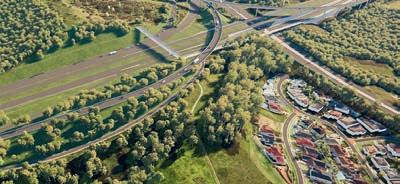
The central section between Cecil Park and Badgerys Creek is being delivered by Seymour Whyte, while the western section to the Northern Road, which includes the airport interchange and Elizabeth Drive flyover, is being delivered by the joint venture of CPB and Georgiou.
To acknowledge the transformation of the Western Parkland City area, the M12 is celebrating local heritage and culture in its design.
Major construction on the M12 is scheduled to be completed in 2026, prior to the opening of the new Western Sydney International Airport.
“Our government is contributing $1.6 billion towards the M12 Motorway project, which will create and support more than 2,000 jobs,”
Prime Minister Anthony Albanese says.
“Once complete, the M12 will provide a new east-west cross link, as well as access to the future Western Sydney International Airport.
“As well as providing new transport options, the project will help open up our suburbs and provide opportunities to create new local jobs and encourage economic growth in Western Sydney.”
NSW Premier Dominic Perrottet says the works getting underway marks a major milestone.
“Once complete, the M12 will provide an east-west link between the M7 Motorway at Cecil Hills and the Northern Road at Luddenham, as well as access to the future Western Sydney International Airport.
“The M12 will be a game-changer for motorists in Western Sydney and better connect the region with the rest of our state.”

The Road Safety Investigation Branch will make independent safety recommendations
The UK government will recruit a specialised team of inspectors to join the country’s first ever Road Safety Investigation Branch (RSIB), looking at how and why incidents happen and to provide real insight into how new technologies – such as self-driving and electric vehicles –can be rolled out.
The branch will investigate themes in the causes of collisions, as well as specific incidents of concern, to learn valuable road safety lessons. It will make independent safety recommendations to organisations, such as government and police forces, to better shape the future of road safety policy.
“The UK may have some of the safest roads in the world, but tragedies still happen and any injury or death on our road network is one too many,” roads minister Baroness Vere.
“That’s why we’re establishing the road safety investigation branch, so we can boost safety for road users even further and also bring safety measures in line with other modes of transport and the future of travel.
“Road collisions lead to significantly more deaths in Great Britain than those caused by other modes of transport, yet there is currently no independent body to investigate road incidents and their causes. The move taken by government will bring road safety into line with similar independent bodies that already
The new independent body will investigate road incidents and their causes
exist for air, maritime and rail accidents.”
Currently, data and evidence is collated using in-depth study programmes, the Collision Reporting and Sharing System (CRASH), Forensic Collision Investigation reports and Prevention of Future Death reports.
Government expects the RSIB to use this data alongside that from insurance companies, vehicle manufacturers, the emergency services and the NHS to deepen the body of evidence on incident causes and improve road safety interventions even further nationwide.
“Over the past four years, the Foundation has run the Road Collision Investigation Project with funding from government and National Highways,” RAC Foundation director Steve Gooding.
“We look forward to working further with the government to get the branch set up and make our roads safer still.
“The branch will not identify blame or liability and so does not replace police investigation. It will instead draw on all the available evidence to make recommendations to improve road safety and mitigate or prevent similar incidents in the future.”
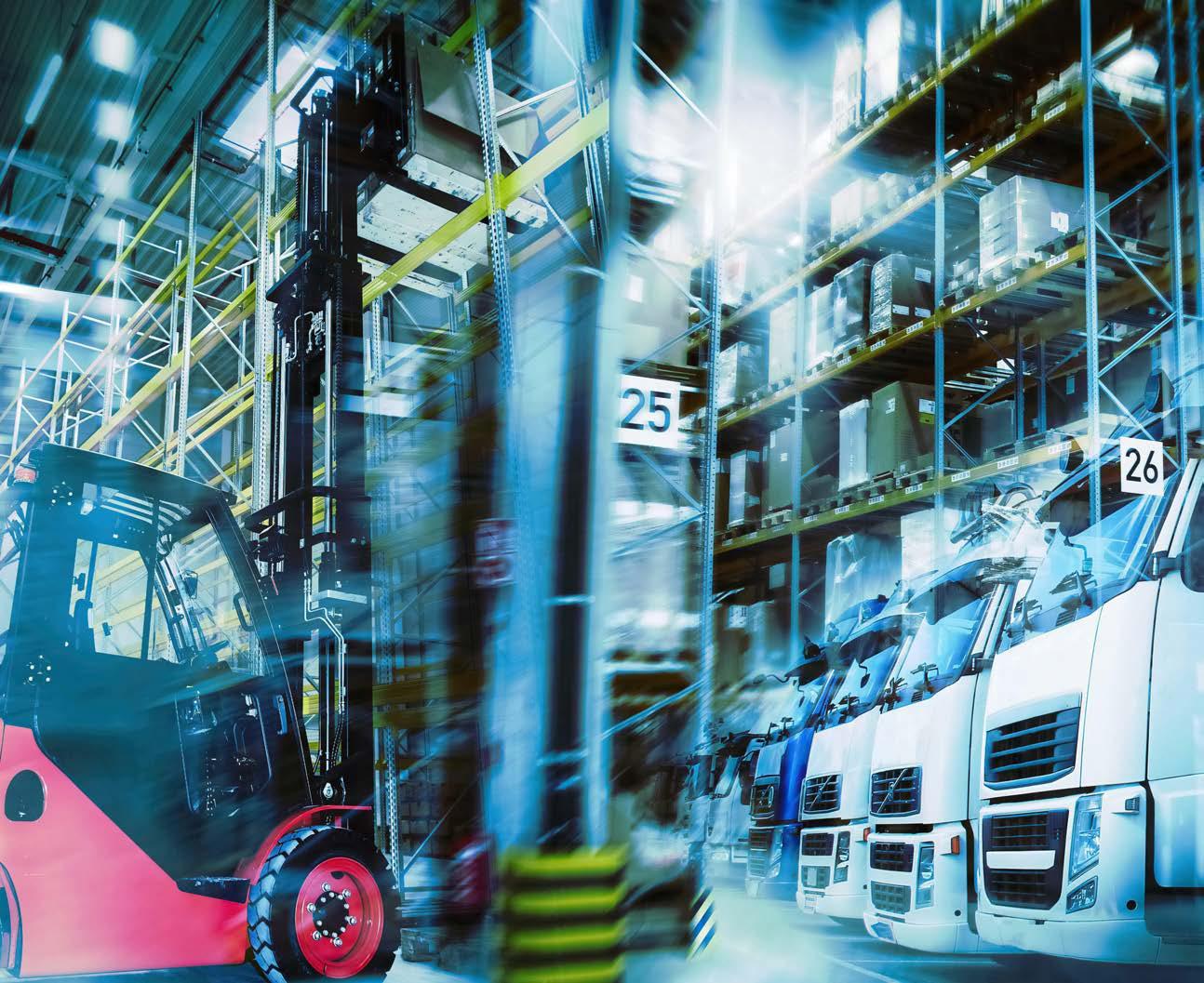






The campaign aims to educate other road users on how to share the road with oversize loads
The National Heavy Vehicle Regulator (NHVR) and Queensland Police Service (QPS) have launched the Sharing our Roads with Over size Loads campaign, with a series of videos to show road users how to stay safe when driving near trucks towing oversize loads this Queensland Road Safety Week.
Police escort more than 6,000 heavy vehicles with an oversize or overmass load, such as mining or construction equipment, in Queensland each year.
The Queensland Police Service Heavy Vehicle Road Operations Program Office provides the escort
service function for oversize loads in Queensland to ensure the safe movement of the heavy vehicle, and to direct traffic to slow down, pull over and stop for an approaching wide load.
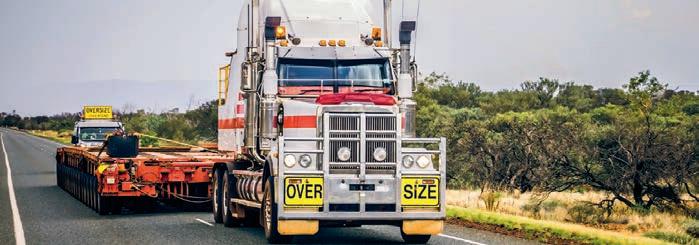
“Road safety starts with all of us; the route is planned to ensure the safety of all road users – we ask for everyone to do their part, take care and reduce their speed when driving around oversize loads,” says Federal Minister for Infrastructure, Transport, Regional Development and Local Government Catherine King.
Federal Assistant Minister for Infrastructure and Transport
The campaign aims to teach other road users how to drive safety around oversize loads
Senator Carol Brown adds:
“This campaign highlights the risks of reckless driving around oversize vehicles. Light vehicle drivers can make the mistake of trying to overtake and find themselves stuck in between the oversize load and the pilot or escort vehicle.
“This creates a risk for the drivers to try and safely transport and escort the load with a light vehicle in an unsafe position, putting themselves and others at risk.”
NHVR CEO Sal Petroccitto says that the campaign is an extension of NHVR’s We Need Space campaign, which spreads messages about giving trucks the space they require.
“In this campaign, we focus specifically on oversize vehicles –because they often need more space to drive down the middle of the road to cross a bridge, pass under powerlines or avoid guardrails to travel safely,” he says.
“By getting the message out there, we can help ensure everyone feels safe on the road and returns home safely to their loved ones.”
A Quon GK 4x2 keeps the Eye Van on the move
The St John’s Ambulance Eye Van is the first of its kind in the world, and thanks to the support of UD Trucks Australia, it’s bringing world-class facilities to rural and remote communities.
The Eye Van is an initiative aiming to substantially reduce blindness and visual impairment amongst Aboriginal and Torres Strait Islanders with diabetes, treating over 5,500 people since its inception in 2013.

UD Trucks Australia’s partnership with the Eye Van (formerly called the IDEAS
Van) involves providing and maintaining the prime mover that pulls the mobile ophthalmology clinic.
The IDEAS Van was independent before merging with St John’s Ambulance in January this year and becoming known as the Eye Van.
“UD Trucks’ mission is to challenge for better life so the partnership with the Eye Van is an extremely fitting one for the brand,” says UD Trucks Australia vice president Lauren Pulitano.
“UD Trucks is part of Volvo Group
Australia, Australia’s largest heavy vehicle manufacturer, who has been partners with the Eye Van since its inception in 2013, providing a vehicle for its mission for the past 10 years. A UD Truck has been supplied for the Eye Clinic to utilise since 2019.
“The Quon GK 4x2 is one of the safest and most comfortable trucks in its class. UD stands for ultimate dependability, so the reliability of the Quon makes it the ideal truck to tackle the harsh terrain and reach patients in remote rural communities.”
UD Trucks says diabetes and glucose intolerance affects 50 per cent of the Aboriginal and Torres Strait Islander adults who live in rural and remote communities.
Some of these conditions require treatment every eight weeks to prevent vision loss – this is challenging particularly with the elderly who, in many cases, aren’t able to leave their community to get the required care.
UD Trucks is continuing to supply the prime mover that pulls the Eye Van clinic along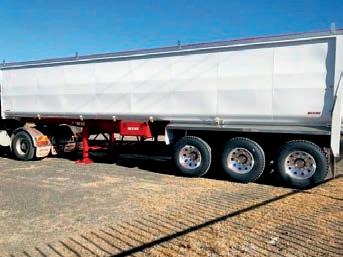

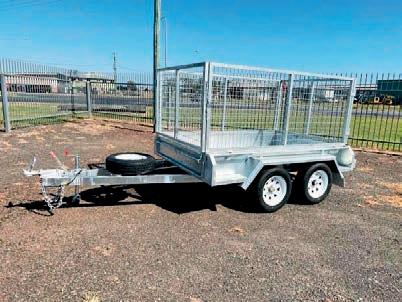
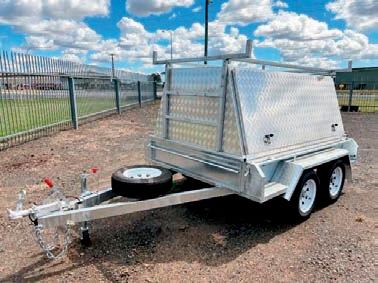


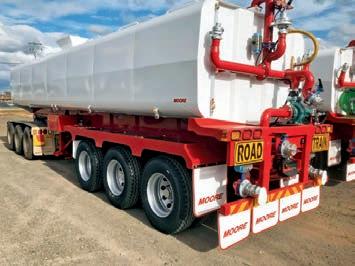
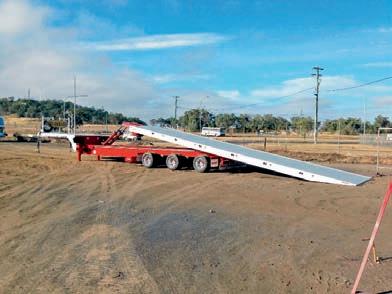
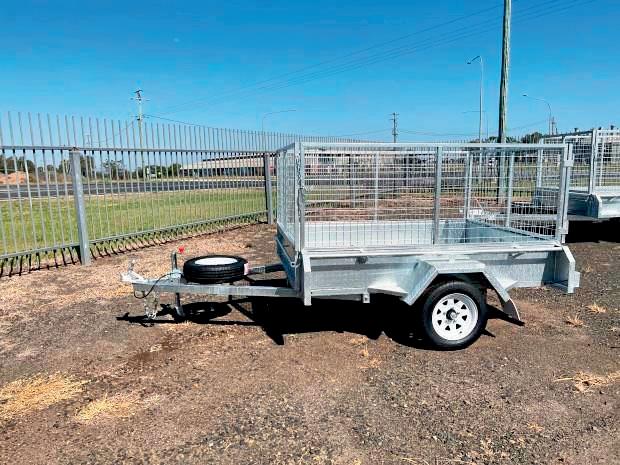
Nine crash sites across the Northern Territory will be addressed

The federal government says the Black Spot Program will help keep NT roads safe for drivers
The federal government says its funding of the Black Spot Program will substantially improve nine dangerous crash sites on Northern Territory roads in 2022–23.
The Territory will receive $2.4 million under the Black Spot Program’s 2022–23 funding round.
The federal government says the Black Spot Program funds safety measures such as traffic signals and roundabouts at locations where a number of serious crashes are known to have occurred or are at risk of occurring.
The nine Black Spot projects across the Northern Territory will make an important contribution towards reducing serious injuries and deaths on local roads and build on previous investments in the Territory.
Black Spot Consultative Panels provide the opportunity for stakeholders to have a say in the project selection process and ensure that nominations of the highest priority and importance to the local community are recommended for approval.
The panel that reviews priorities for the program in the Territory includes representatives from the Northern Territory Road Transport Association, Police, Fire and Emergency Services Northern Territory, the Automobile Association of the Northern Territory and territory and local governments.
“This major investment is part of the federal government’s commitment to building safer roads, of which we have already committed $110 million per year to improve road safety across the nation,” assistant infrastructure and transport minister Carol Brown says.
“In announcing these new projects, this government recognises the importance of working with the Northern Territory government to partner with councils to deliver the program in the Territory.
“This government is investing in road safety right across the nation to ensure Australians get home safely every trip.”
The NSW government says the additional funding proves its commitment to road safety
The New South Wales (NSW) govern ment says an extra $196 million will be delivered to improve road safety in the state as part of the Towards Zero Safer Roads Program.
Minister for Regional Transport and Roads Sam Farraway says the program is a key initiative of the new 2026 Road Safety Action Plan that aims to build a safer road network.
“The NSW government is securing a brighter future for NSW families through our investment in road safety to ensure people reach their destination when driving on our roads,” Farraway says.
“One death on our country roads s one too many and it takes a suite of measures to save as many lives as possible, like improving our road infrastructure.”
The extra funding comes after the NSW government already invested $640 million into the Saving Lives on Country Roads program that targeted regional locations where chances of accidents were greater.
“We’re also installing 2,700 kilometres of rumble strips – the equivalent of driving from Sydney to Adelaide and back again – along
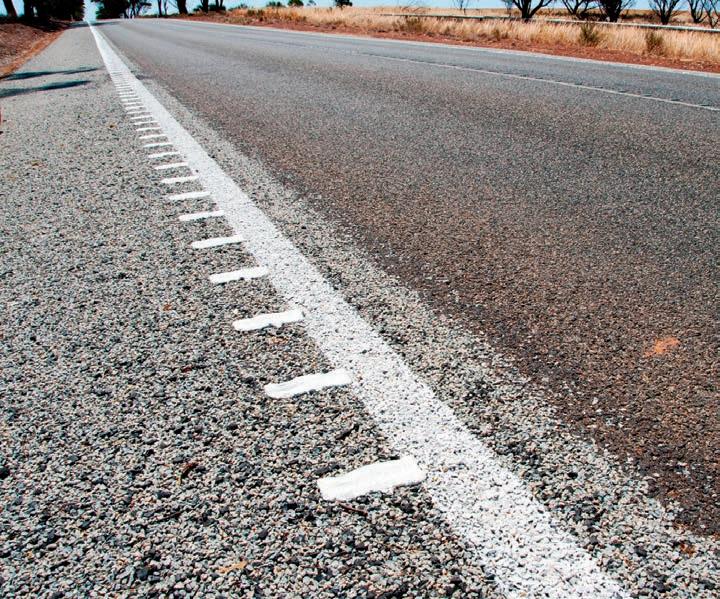
The NSW government has announced $196 million further in funding for road safety
regional highways to combat driver fatigue,” Farraway says.
“The extra $196 million means more rumble strips, more audio tactile line marking and more safety barriers. It means more lives saved on country roads.”
Minister for Metropolitan Roads Natalie Ward says the extra funding will build on the 630 projects already completed.
“This is a program that works, with the 2021 Safer Roads Program estimated to have prevented 1,500 serious injuries and deaths on NSW roads over 15 years,” Ward says.
“Funding will go towards intersection upgrades and the installation of safety measures such as pedestrian islands and traffic light upgrades.
“This is a government that is investing in local communities delivering projects to make sure we are safe on our roads and we get home to our loved ones.”
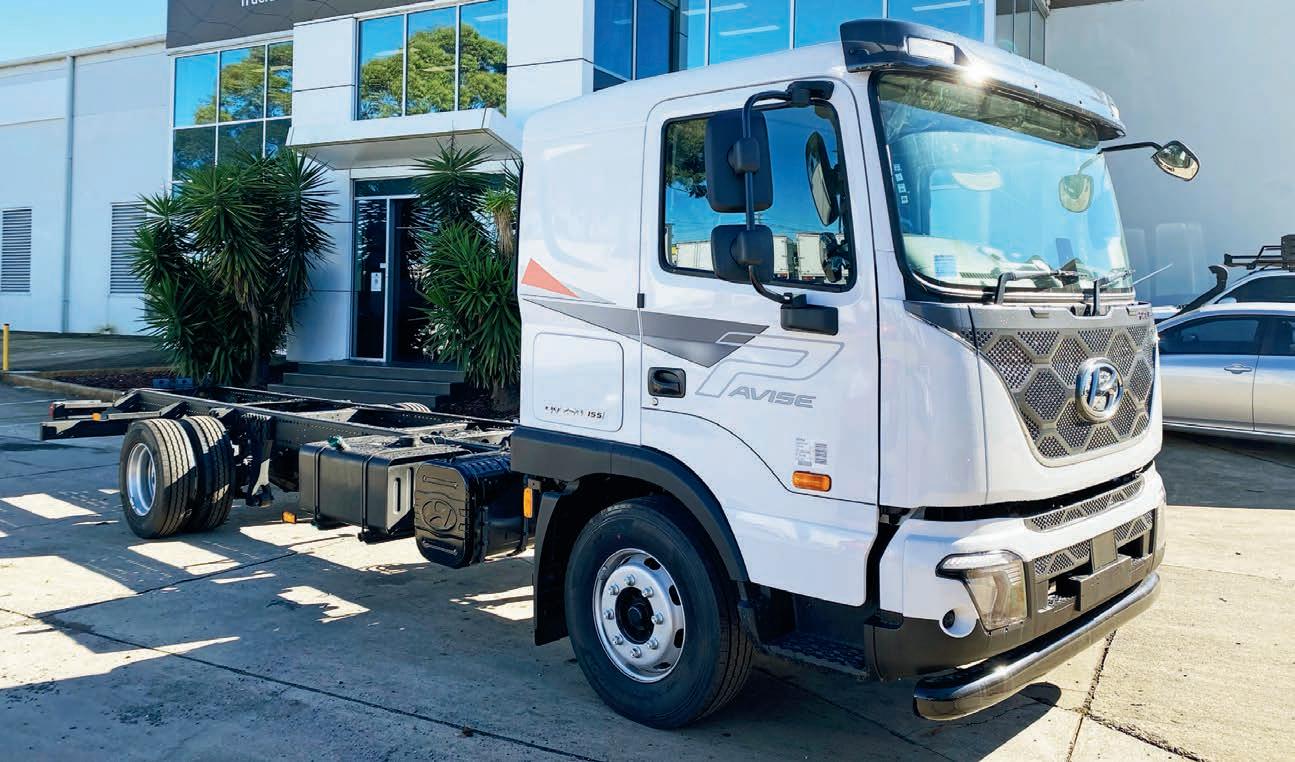

A new set of maps for mobile crane operators have been released
The NHVR CEO says the plan for crane maps is encouraging for heavy vehicle operators in Victoria
The National Heavy Vehicle Regulator (NHVR) has welcomed the Victorian government’s release of eight new preapproved crane maps as an important step towards delivering national automated heavy vehicle access outcomes.
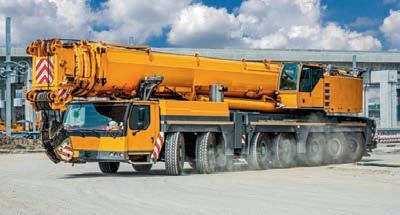
NHVR CEO Sal Petroccitto says that the NHVR’s National Spatial Platform will provide a single national dynamic map of state and local roads, providing transparency of all allowable access arrangements.
“The new map will remove the need for industry to access multiple state maps when planning their journeys and access requirements – with end-to-end and crossborder networks displayed in one location,” Petroccitto says.
“Pre-approved routes represent networks that have already been assessed by road managers and can act as an interim step before gazetting networks – they reduce permit turnaround times and provide improved certainty for industry.
“The new National Spatial Platform will allow for immediate approval of pre-approved routes by instantly adding the route to an operators permit as soon as the access application is submitted.”
Petroccitto says supporting pre-approved routes allows road managers to build networks and update data in real time, meaning access conditions can be changed by the click of a button.
“The platform will also provide operators with their full fleet of vehicle configurations from the NHVR heavy vehicle database and will automatically match assembled vehicles with up to date dynamically generated networks,” Petroccitto says.
The NHVR is taking an agile approach in enhancing its routing and mapping capabilities in stages as part of the National Spatial Platform.
The Next Generation Route Planner has been released and is providing more accurate routing outcomes for industry.
The Port of Newcastle says the official opening of its new cranes allows it to reflect on its future goals
The largest deep-water port on Australia’s east cost in the Port of Newcastle has commissioned two new mobile harbour cranes as part of the Port’s ongoing commitment to diversification and sustainability.
The cranes were opened by Port of Newcastle CEO Craig Carmody and Macquarie Group managing director and chief executive officer Shemara Wikramanayake, and commenced cargo and container handling in September
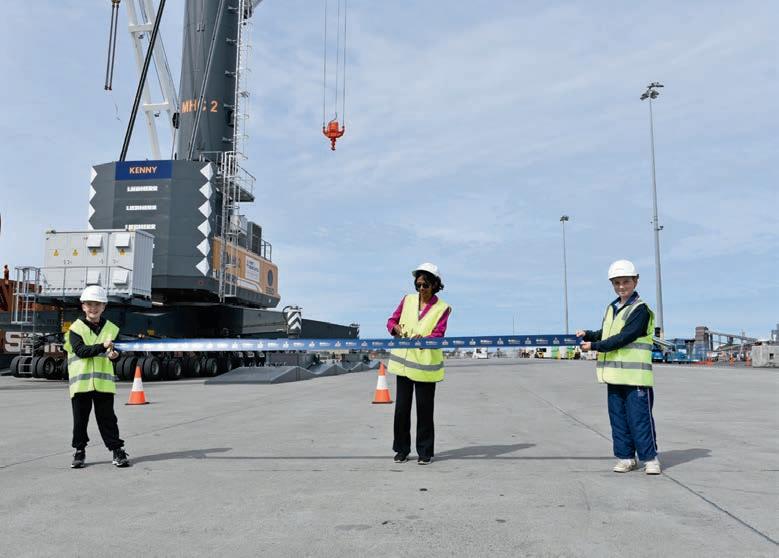
With an outreach of 54 metres, and a lifting capacity of 104 tonnes, Carmody says the $32.4 million crane investment marks a significant increase in an expanded and improved container, break-bulk and project cargo handling capability for customers at Port of Newcastle.
“For Port of Newcastle, the arrival of the mobile harbour cranes marks a significant step forward in our aim to diversify for the future,” he says.
It follows the announcement last November that the Port is partnering with Macquarie’s Green Investment Group to support the development of a hydrogen economy in the Hunter Region.
The Port of Newcastle Hydrogen Hub, part of a broader clean
Two new mobile harbour cranes are now in operation
energy precinct, will initially be underpinned by a large electrolyser and ammonia loop providing green product for domestic decarbonisation that is supported by a range of Project Partners including SnowyHydro, Jemena, Keolis Downer, Lake Macquarie City Council and Idemitsu.
The first stage of the $3 million feasibility study into the development of a green hydrogen hub at the Port has now been concluded.
Wikramanayake says diversification represents a significant opportunity for the Port.
“As the gateway to the second largest city in New South Wales, the Port will continue to play a key role in the future of the Hunter as a key region for economic growth,” she says.
Macquarie manages a 50 per cent shareholding in the Port of Newcastle on behalf of investors and is assisting the Port in its strategic realignment away from its historic reliance on coal export.
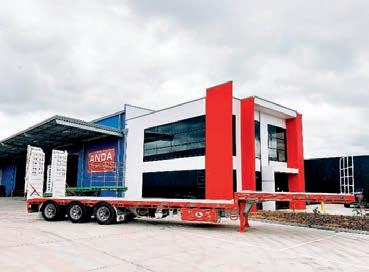
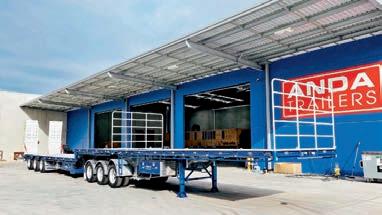


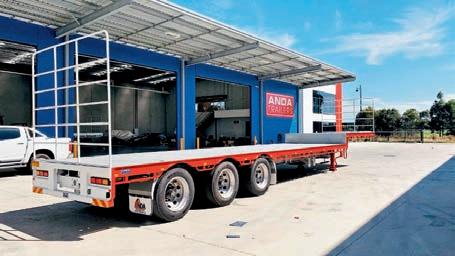
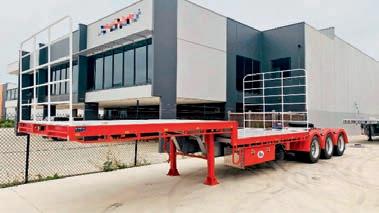

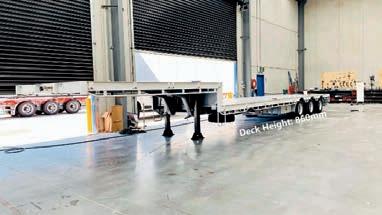
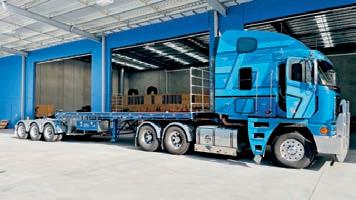
Container levels saw strong volumes in July
The Port of Melbourne’s container volume levels have bounced back after a slow start to the year
After container volume levels decreased earlier this year, the Port of Melbourne saw strong volumes in July.
Ahead of the peak season at the Port of Melbourne, July container volumes, both full and empty, rose by 3.7 per cent compared to volumes at the same time last year.
Rates were up across the board, as total empty container movements were also well above (16.2 per cent more) July 2021 levels, while full overseas imports increased by 3.9 per cent.
Following the aftermath of Shanghai lockdowns, most levels were up, except for full container exports, which were down by 5.7 per cent when it comes to miscellaneous manufactures.
Full container trans-shipments were also down by 11.1 per cent compared to July levels last year.
The Port of Melbourne says industrial action across European ports has resulted in overflowing volume at neighbouring ports, with international conflict and weather issues also influencing container volume levels.
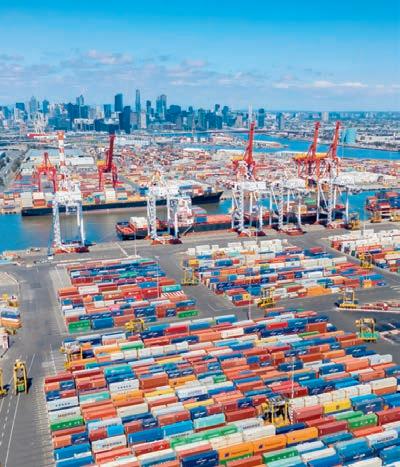
The Port says the Australian supply chains remains resilient despite congestion continuing in the Oceania region.
The ALC says it wants to see action to improve productivity
In a submission to the independent review of Infrastructure Australia (IA), the Australian Logistics Council (ALC) has called for action and implementation, rather than review and duplication.
The ALC says it has worked closely with IA and successive governments to deliver the National Freight and Supply Chain Strategy (NFSCS) and advance the development of the National Urban Freight Planning Principles (the principles), which together form a strong foundation for the future work of IA.
ALC CEO Dr Hermione Parsons says the review of IA should focus on ensuring the agency has the capacity to re-focus infrastructure investment on productivity uplift for the national economy and improved safety outcomes.
“It is appropriate for IA to take a whole of economy view and lead the other jurisdictionally based infrastructure advisory bodies to develop a coherent infrastructure pipeline for the entire nation,” Parsons says.
“The ALC strongly argues that it is critical the review delivers action and
ALC says IC should assess every major project to ensure freight needs are taken into consideration
implementation, rather than review and duplication. There is already cross-jurisdictional agreement in place, in the form of the NFSCS and the freight planning principles.
“It is important that investment decisions are made through the prism of implementing these two important pieces of work.”
Given the tight fiscal environment governments are operating within, the ALC says constrained labour market conditions and global material shortages is more important than ever to ensure strategic project investment.
“IA should embed the principles into project assessments to ensure any major infrastructure investment takes into consideration the needs of freight,” Parsons says.
“From the work government and industry has already done, we know that we need to continue to deliver transport infrastructure, optimise the way we move freight and better plan for the future.”
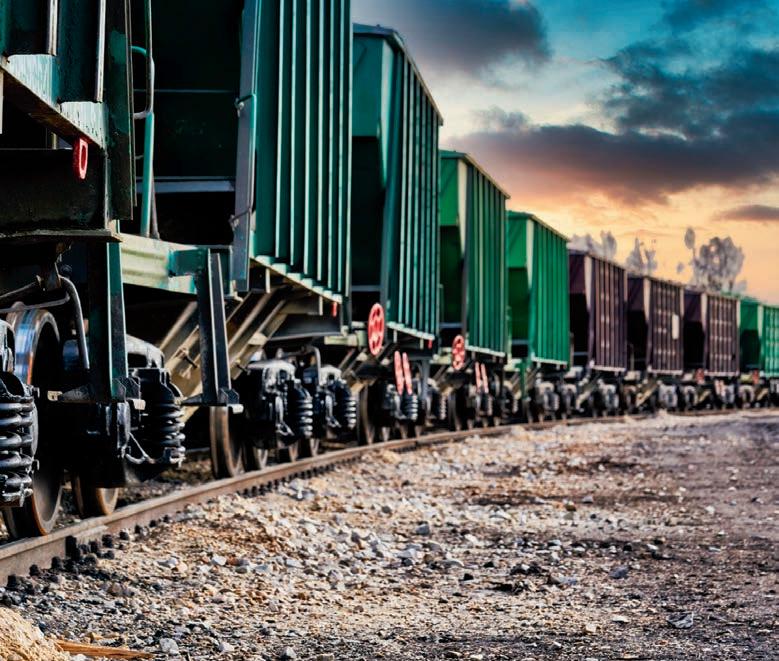
The federal government’s productivity commission is calling for Australia’s port system to be reformed in a report on the sector’s current underperformance.
The report, titled Lifting Productivity at Australia’s Container Ports: Between Water, Wharf and Warehouse, was released after industry members put forth 79 different submissions earlier this year.
A primary point made in the report says that Australia’s container port
inefficiencies has cost the nation around $605 million each year.
After analysing system performance and technology uptake in the sector, commissioner Stephen King says the inquiry proves Australia’s major container ports underperform.
“Underperformance on Australia’s ports directly costs business and consumers,” King says.
“Any sustained disruptions to imports or exports magnify these costs across the
The report says changes are needed to improve the performance of Australia’s ports
Transport for New South Wales (TfNSW) has announced that safety upgrades on the Ourimbah rest area have finished, allowing more truck drivers to manage fatigue while travelling on the freight route.
Motorists travelling on the M1 motorway in NSW will benefit from a major safety upgrade at the Ourimbah rest area according to TfNSW.
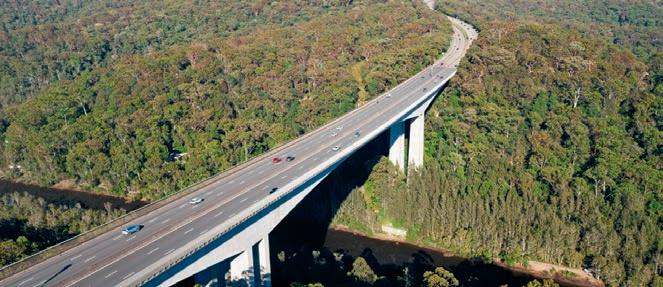
Parliamentary secretary for the Central Coast in Adam Crouch says the $1.5 million project funded by the NSW government offers safety benefits for all motorists using the Pacific Area.
“The Ourimbah Rest Area, located 79 kilometres north of Sydney, is popular with motorists and holidaymakers,” Crouch says.
economy because of the critical role of ports to trade and commerce.”

The productivity commission says that increased productivity at ports is still possible, despite the nation’s container ports having slower ship turnaround times.
The report also says workplace arrangements are reducing the efficiency at ports, with Fair Work Act changes being recommended.
Commissioner Julie Abramson says workplace arrangements at container terminals are holding back productivity.
“Highly restrictive clauses in terminal operators’ enterprise agreements limit the ways that workers and equipment can be deployed,” she says.
“Changes to the Fair Work Act and operation of the Fair Work Commission are recommended to tackle protracted enterprise bargaining in container ports and the disruptive industrial action that comes with it.”
Also mentioned in the report was lack of competition in the market, meaning customers face increased fees.
The M1 rest area has been upgraded
“The upgrade has also boosted the local economy with the upgrade supporting 10 jobs and an additional 15 contractors through constructions.”
Minister for Regional Transport and Roads Sam Farraway says the facilities were designed to enable drivers of long vehicles including those towing caravans and trailers to take a break, with new parking bays for vehicles up to 14.5 metres long.
“Driving tired is the second biggest cause of deaths on NSW roads and rest areas are an effective way of combating driver fatigue and reducing fatalities,” Farraway says.
“Through projects like this, we are keeping motorists safer on the regional road network and helping to make sure everyone gets home safely – just one way we are securing a brighter future for NSW.”
Other features include new shelters, footpaths, pedestrian crossings, and enhanced lighting.
The federal government’s productivity commission says Australia’s port system is underperforming
The NSW government says the upgraded rest area will keep truck drivers safe
MAN’s new range of trucks, launched recently in Brisbane, features new designs focused on driver comfort, improved handling and – most importantly – a higher level of safety. Here we take a first look at what’s on offer
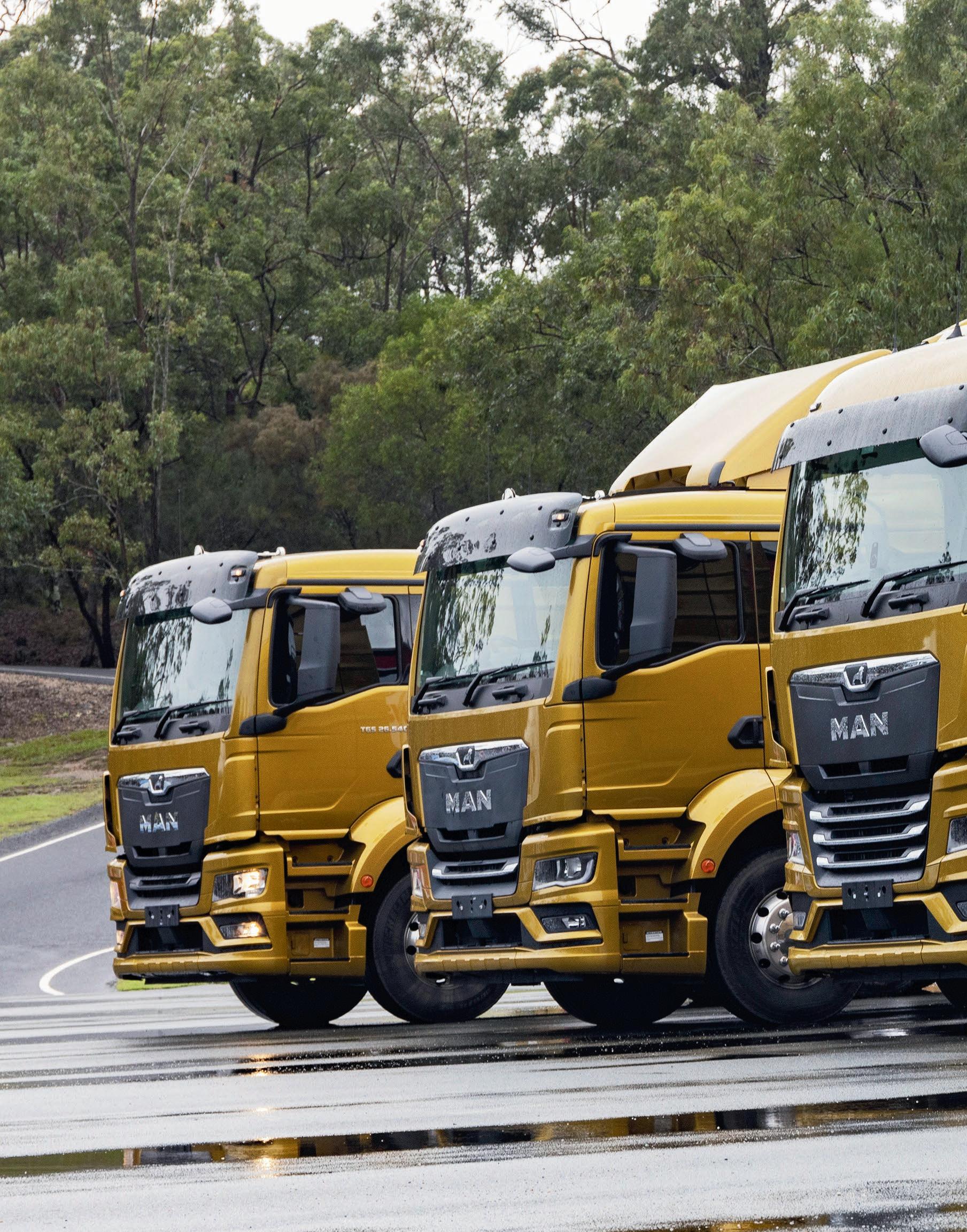 Words | Greg Bush
Words | Greg Bush
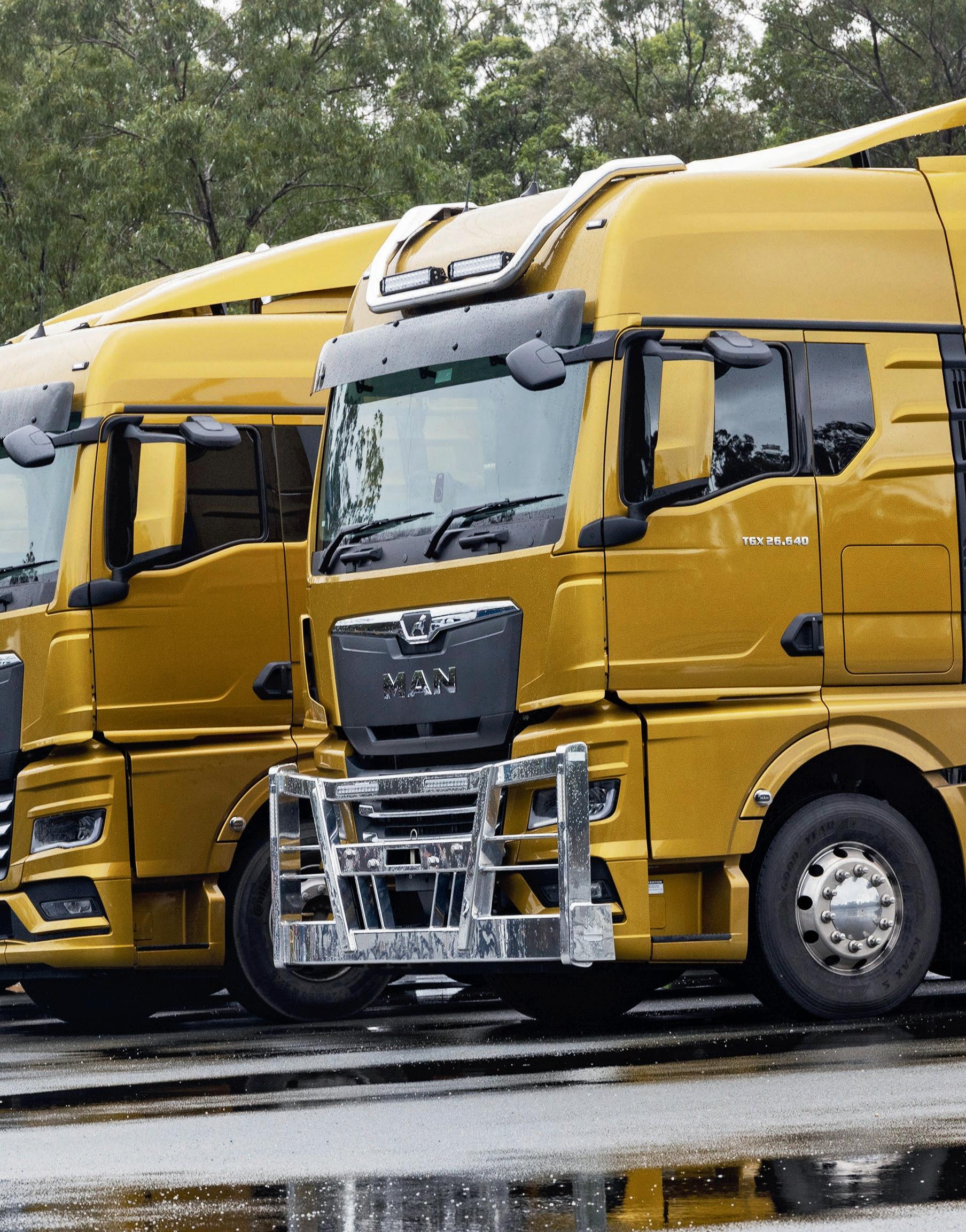
Hailed as the first newly-developed MAN truck generation (TG) in two decades, Penske Australia and MAN Truck & Bus launched its new range of German-built trucks amid much fanfare at the RACQ Mobility Centre at Mt Cotton near Brisbane in early August.
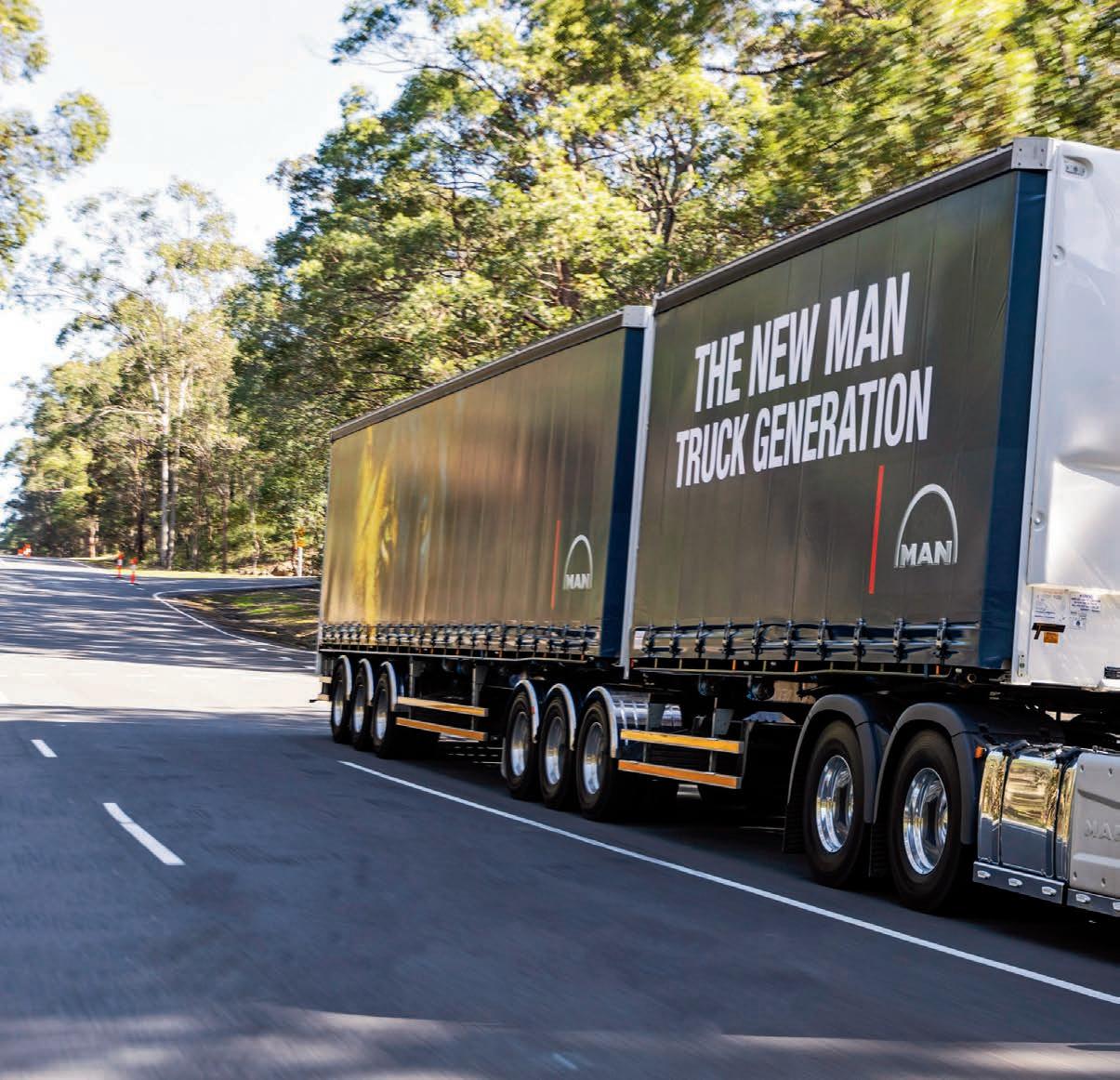
With its line-up of TGL, TGM, TGS, and TGX trucks on display, the all-new MAN truck generation launch enticed Randall Seymore, executive vice president of global commercial vehicles and power systems at Penske Automotive Group, back to Australia … albeit briefly.
Although mostly static displays, the TGS
and TGX trucks with trailers in tow were available for short drives around the centre’s winding circuit. The presentation made no bones that Volvo, Scania, Mercedes-Benz and Kenworth were in MAN’s sights.
However, the emphasis was on what both Seymore and general manager of on-highway at Penske Australia, Craig Lee, described as the “four pillars” – driver fit, efficiency and economy, optimised uptime and a strong partnership.
For the latter, Seymore emphasises the relationship between Penske and MAN, pointing to MAN being under the umbrella of the Volkswagen Group. He ties that in with
Penske’s 85 automotive car dealerships in the US selling Volkswagen Group-owned products such as Audi, Porsche, Bentley and, of course, Volkswagen. More importantly though, Seymore says it’s the relationship between Penske and its customers.
“Ultimately that’s the biggest pillar that Penske has control over and that we are constantly striving to improve our support of our customers,” Seymore explains.
“We survey about 300 customers a month and ask them for feedback. And it’s something that we’re reading through every single one of those surveys and striving to continue to improve.”
However, it’s the ‘driver fit’ pillar that holds the major importance for prospective drivers and owner-drivers. In addition, MAN Truck & Bus, along with the other manufacturers, are concerned about the ongoing shortage of drivers in Australia and globally. Seymore says the aim of the new range is to have drivers emerging from the truck feeling less fatigued after being behind the wheel for between eight to 12 hours a day.
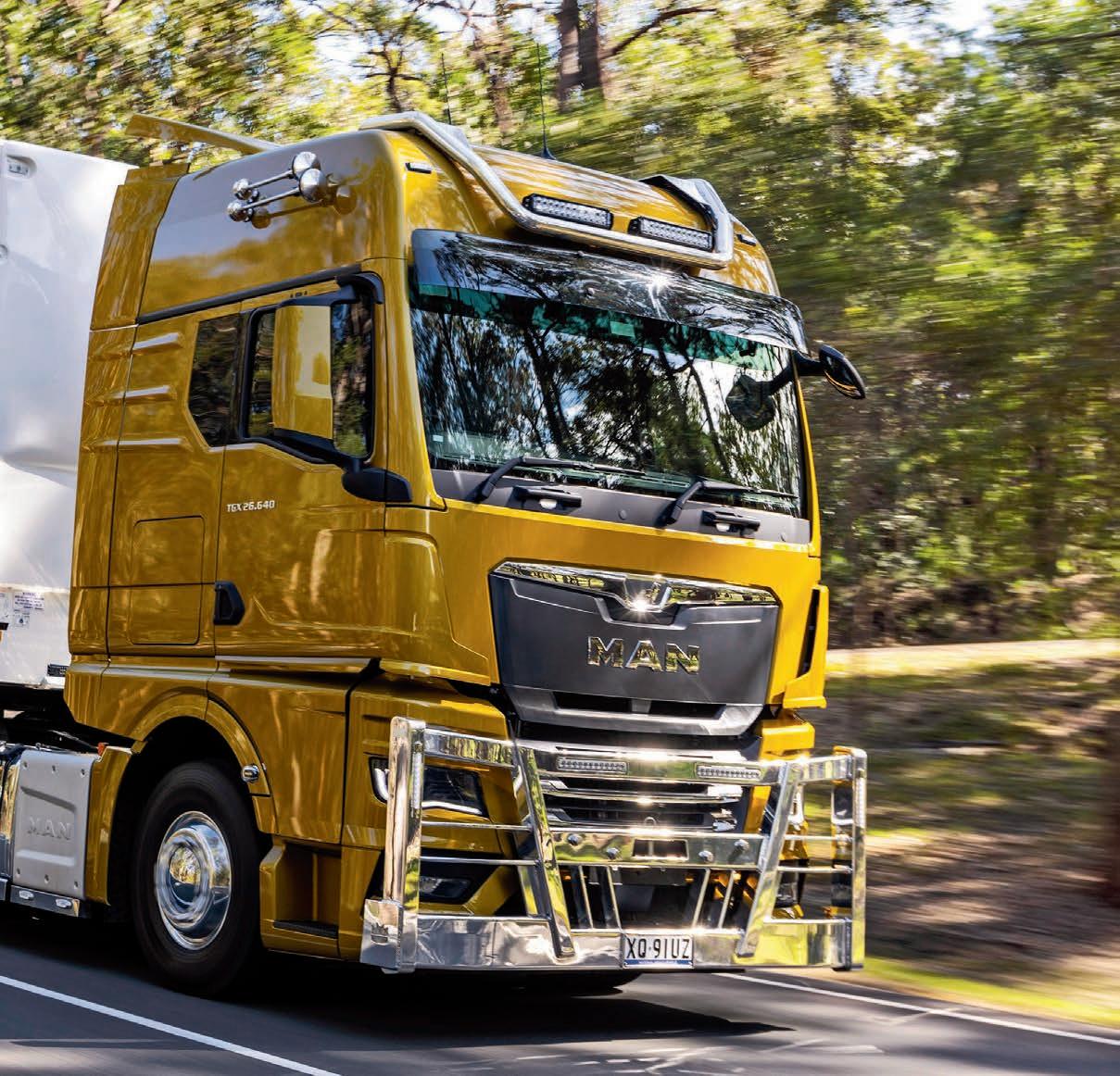
Sergio Carboni, MAN Truck product manager at Penske Australia, points to some of the niceties in the updated cabs. He says the improvements starts before the driver sets foot in the cab, the door opening up to
Penske Australia believes the new MAN line-up will take a slice of the action away from its competitors
Randall Seymore, executive vice president of global commercial vehicles and power systems at Penske Automotive Group
89-degree angle for an easier ingress and egress and the with the vertical staircase.
The driver’s side door also houses an easy control system where you can select various functions, such as PTO (power take-off) engine start, among other features.
“So you don’t have to get into the truck to do those sorts of basic things,” Carboni says.
Once behind the wheel, he believes drivers will be struck by the quality of material in their work surrounds.
Storage space is in abundance, although opting for an extra bunk means there’s a loss of storage in that area. Still, Carboni smiles when he says that there are “more storage compartments in this truck than you’ll find in an Ikea superstore”.
Extra space for the driver is available in the rotating passenger seat which can double as a desk or a dining table.
A new range tackles the RACQ Mobility Centre circuit
“When you settle down into the driver’s seat and turn on the ignition, you can see the digital dash both for the instrument panel, the infotainment system and the like.”
Carboni compares the layout to that of prestige cars, notably the ability to toggle through the SmartSelect navigator system. And although, the new TGX models may not compare with some other brands on the market in view of cab space, he says the 2.1 metre-long bed is the best in class.
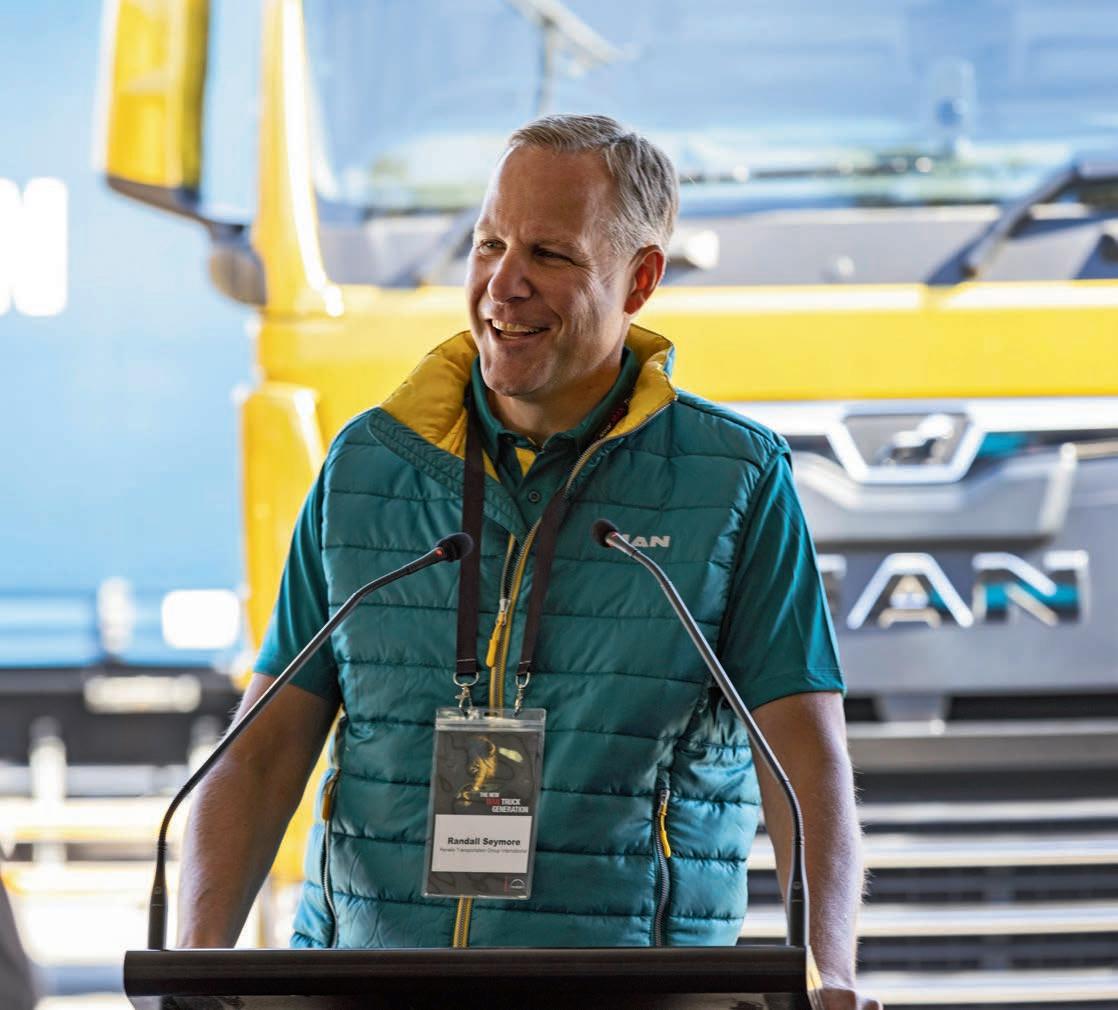
Looking at the safety angle, side mirrors have been improved to be the point of eliminating blind spots, one of the bugbears for some cab-over drivers. This leads to what MAN says is the truck’s “safety cell”.
“A safety cell is a unique part of the MAN safety features where on a severe frontal impact, the whole cab moves rearwards up to 750mm, ensuring the integrity is kept with the doors so that the driver and passenger and/or essential services can get in and out of the vehicle in a safe manner,” Carboni says.

“That now complements the driver’s side airbag as well. So, there’s an argument that says, along with the emergency brake assist, adaptive cruise control and all the other standard features, you could argue that the MAN is the safest truck going around today.”
The impact of the cab’s insulation was noticeably during the short drive around the track – engine noise was almost non-existent
while the air bag suspension made for a firm but smooth ride.
Getting down to the ‘efficiency and economy pillar’ and the MAN’s integrated driveline, the power range starts with 250hp (186kW) D08 engine up to the 640hp (477kW) D38 Euro 6e engine. These are coupled with the MAN Tipmatic gearbox shift system uses software to determine the optimum moving off and gearshift strategy in all situations in conjunction with load and inclination detection.
MAN says that, coupled with ‘SmartShifting’ and the ‘idle speed driving’ functionality, it delivers the ultimate transmission.
“Additionally, with the engine, it’s got the class leading engine brake in Australia, a whopping 840hp [626kW] engine break – in metric that 630 kilowatts,” Carboni says.
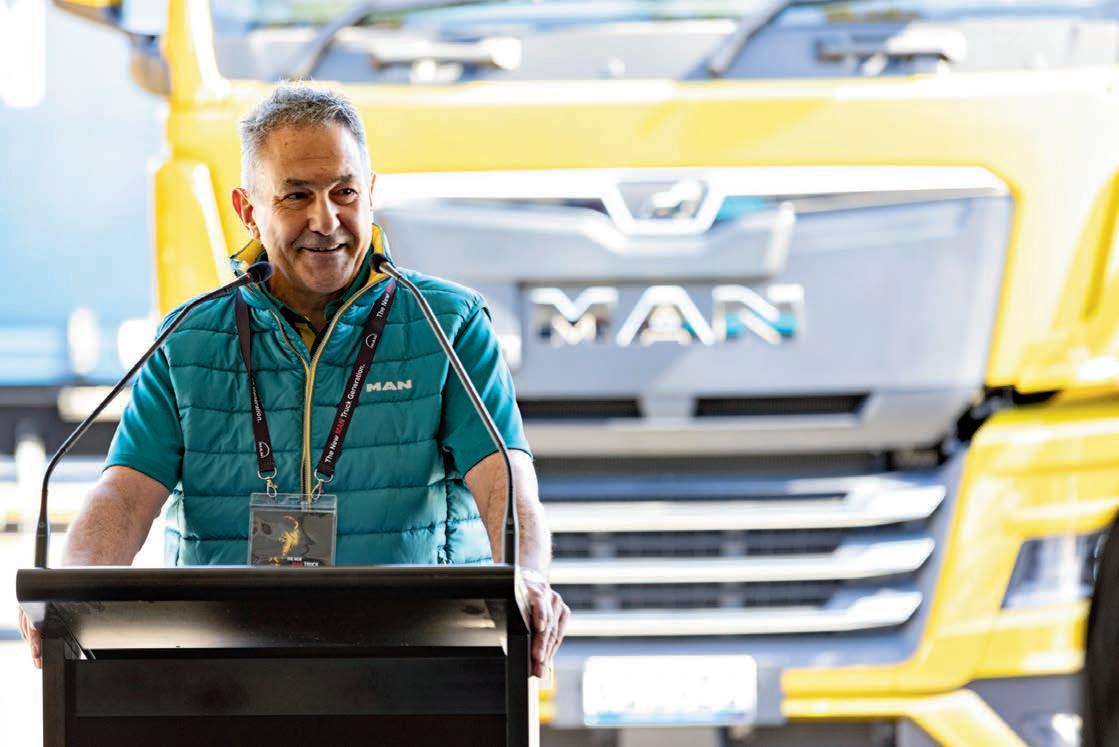
“That’s something like around 20 per cent more than our competition out there today.”
As far as the ‘optimised uptime’ is concerned, MAN points to extended oil drain intervals and low tare weights equating to possible higher payloads. And then there’s the extended driveline warranty in the TGX range of up to 1 million kilometres or five years, which MAN says is a pointer to its product reliability.
 Craig Lee, general manager of on-highway at Penske Australia
Sergio Carboni, Penske Australia’s MAN Truck product manager compares the new truck’s digital dash to that of a prestige car
Craig Lee, general manager of on-highway at Penske Australia
Sergio Carboni, Penske Australia’s MAN Truck product manager compares the new truck’s digital dash to that of a prestige car

 The 2.1 metre-long bed is said to be “best in class”
The ergonomically-designed workplace is not only aimed at reducing fatigue, but attracting new drivers to the industry
The 2.1 metre-long bed is said to be “best in class”
The ergonomically-designed workplace is not only aimed at reducing fatigue, but attracting new drivers to the industry
Overhanging trees proved an obstacle for the TGX’s big cab
It’s been quite a wait for the new MAN with unusual weather patterns, Covid and more recently Russia’s invasion of Ukraine impacting the supply chain. In March, MAN’s plants in Munich, Germany and Krakow, Poland reopened following a six-week standstill due to shortfalls because of the Ukraine war.
“We are very confident that our existing customers will see the value and see the benefit in this truck, but more importantly than that, we’re very confident that new customers will see the brand and will benefit from those features and benefits that we’re bringing to the market.
MAN says it is confident the new release will double its market share
With that in mind, Craig Lee says it’s an understatement to say that Penske Australia and MAN Truck & Bus Penske are excited about the new generation of trucks.
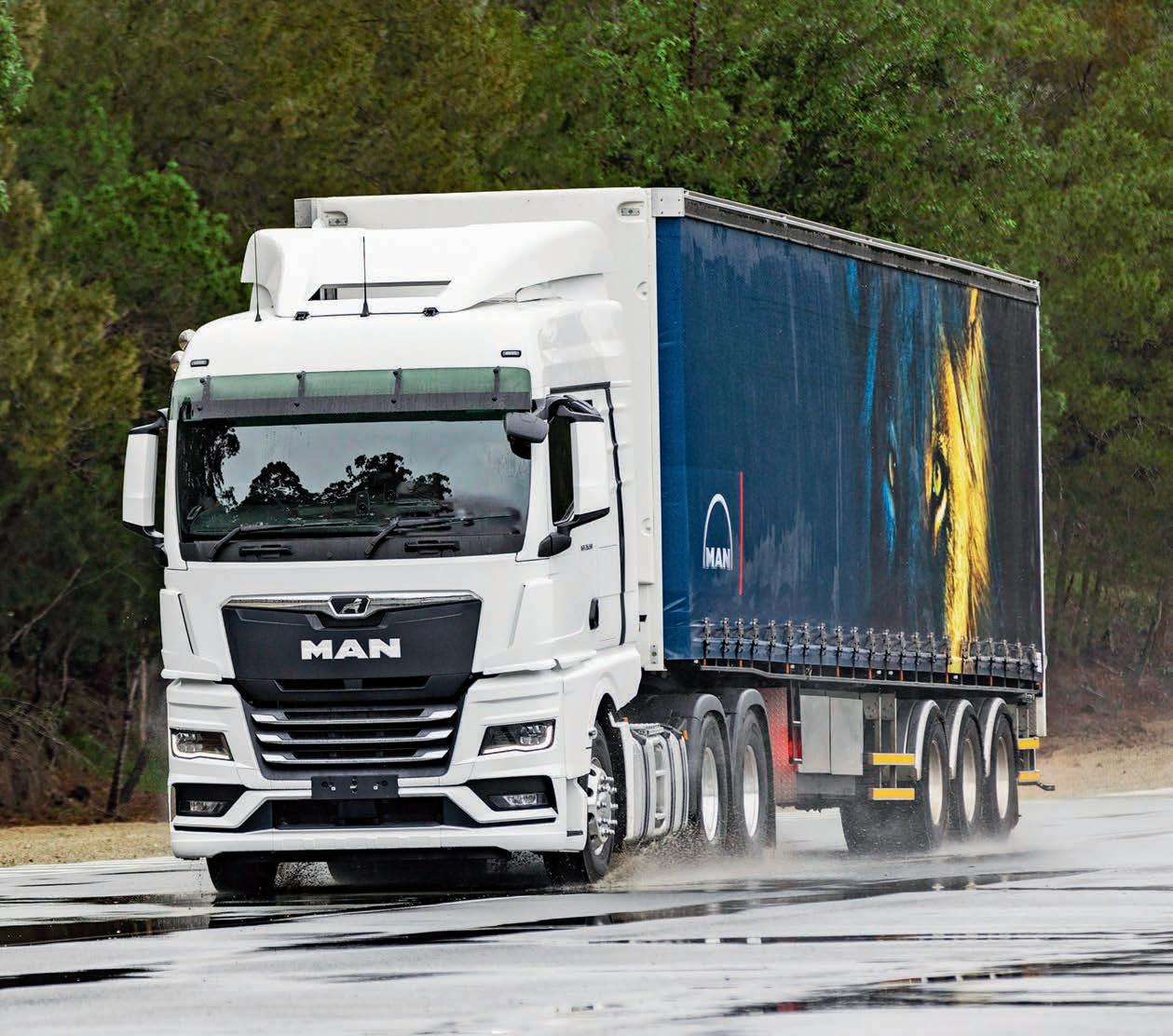
“So, we’re here to express our confidence that our intention is that over the next 18 to 24 months, we will more than double the market share that we enjoy today,” Lee says.
“And we are going to actively take it to our competitors.”
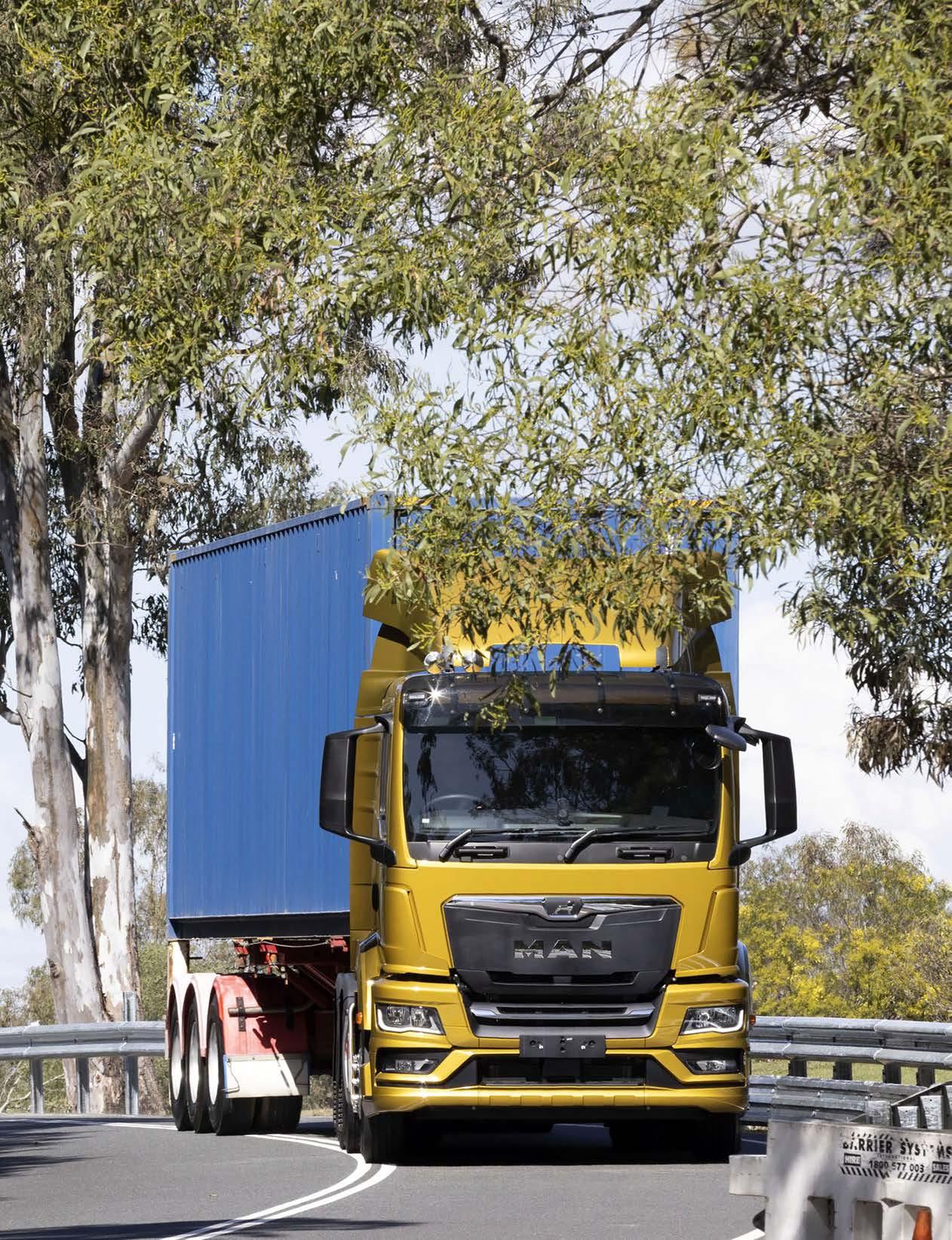
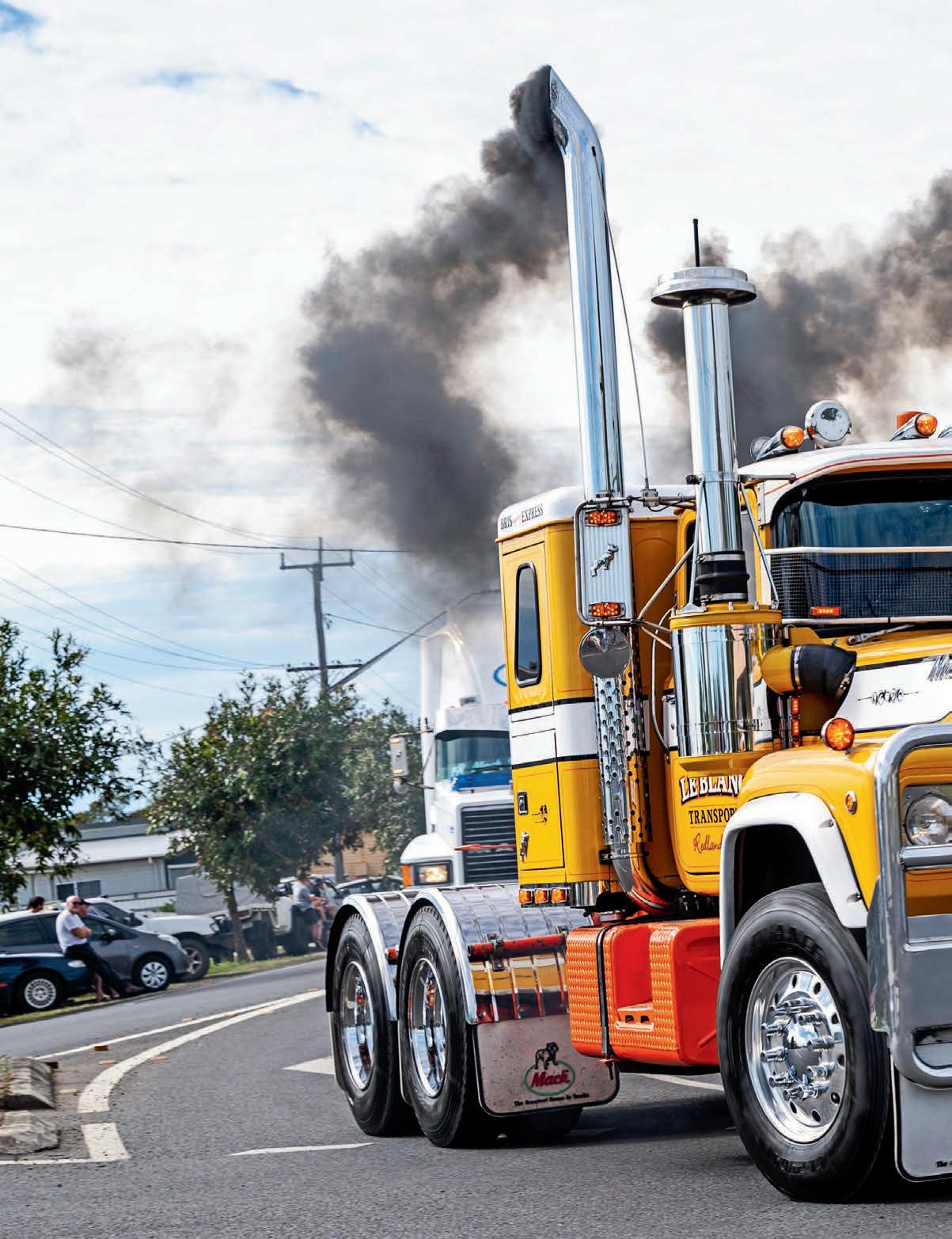 Words & Images | Warren Aitken
Words & Images | Warren Aitken
The Casino Truck Show was back in style with nearly 400 trucks rolling into town, complemented by stalls, entertainment and prize giving
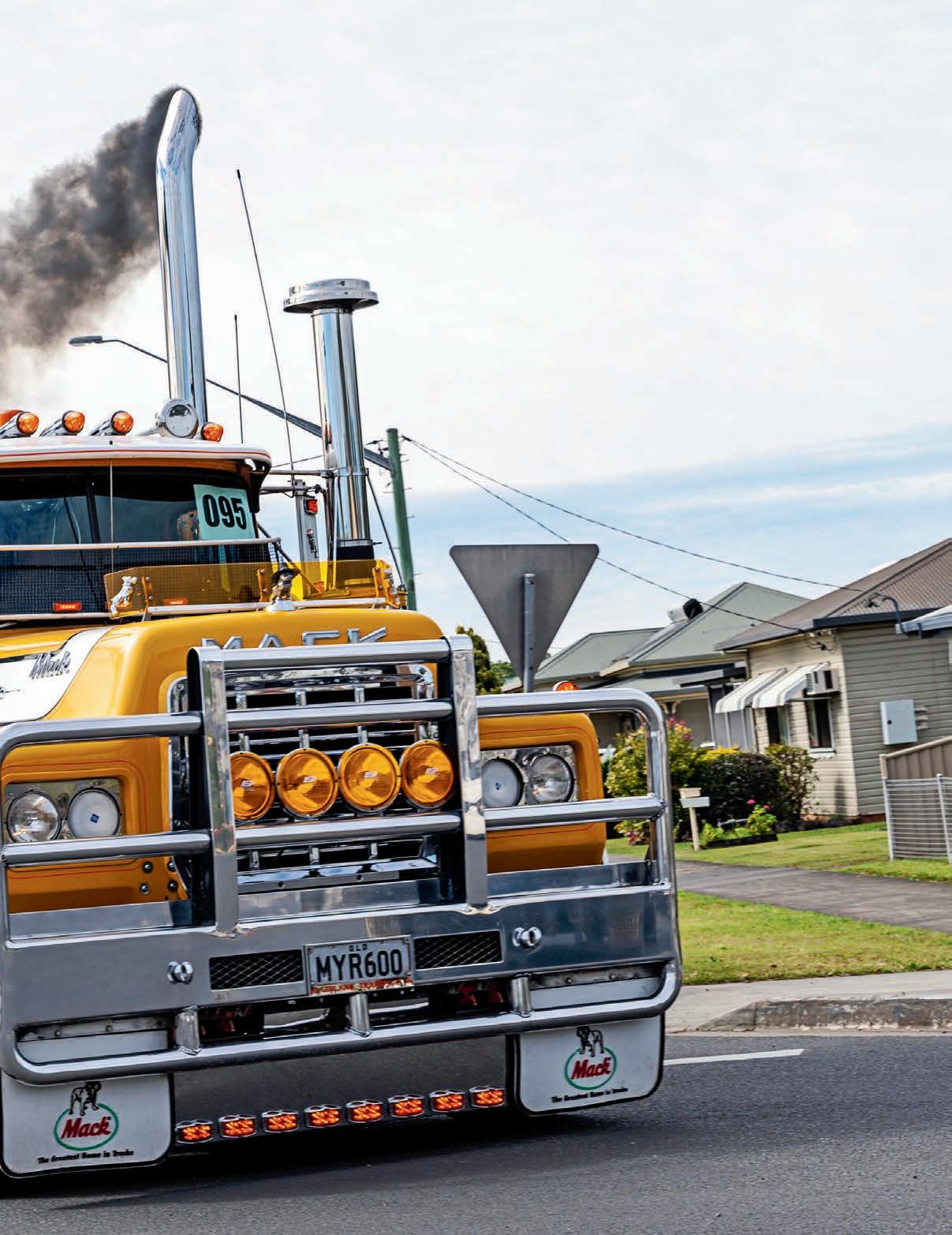
Ballinger's impressive Kenworth 9-0 leads the convoy for 2022 followed by Jason Whitty’s Peterbilt
Massive! That’s the word that comes to mind as I sit in my motel room reflecting on the 2022 North Coast Petroleum Casino Truck Show. I’m not regurgitating the Ali G slang from a couple of decades ago (if you are unfamiliar with him, don’t Google – just appreciate the fact you are lost on this reference). No, I am using the term MASSIVE, in capital letters because that really is the only way to describe the return of this community-driven truck show.
For those who are unaware, Casino is a New South Wales town in the Richmond Valley, inland from Ballina. Over the past
few years it has been decimated by floods, fire and drought. It is a tough little town famous for its Beef Week celebrations.
In years past, during that week, the town also played host to a high calibre truck show. Unfortunately, like most fun things recently, the Casino Truck Show was a victim of that dreaded ‘C’ word and has been off the calendar for a bit. On August 6 this year, however, the show returned with renewed enthusiasm and boost in prize money for the truck category winners.
With the support of the Richmond Valley Council, many local businesses and what seemed like all 11,000 residents of Casino, the 2022 truck show was a massive

All the way from Hughenden, the MFT boys put on the shine. Jon in the Lone Ranger here took out King Rig for 2022
It is very hard when there is only one Best Kenworth prize and trucks like this one turn up


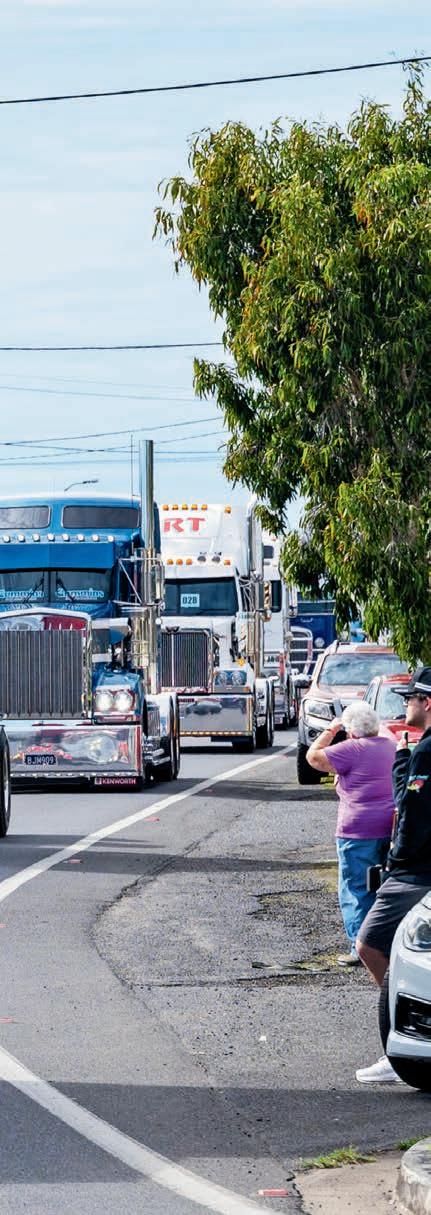
Gold Coast-based Reiners Transport had a couple of their trucks make the trip inland for the show as well

event. To quote a line from the Hollywood blockbuster Field of Dreams: “If you build it, they will come.” The 2022 Casino Truck Show epitomised that perfectly.
showing exactly how far you can push the envelope when you’ve had your fear glands surgically removed. Right opposite the commercial hotel was a tautliner doubling as a stage for the class music acts that were performing throughout the day. It was enough to almost get me up on the dance floor. Thankfully my lovely assistant from Michelle Williams Photography pointed out I have zero rhythm and stopped me before I embarrassed myself.
It was good to see so many little ones out watching the return of the Casino Truck Show convoy
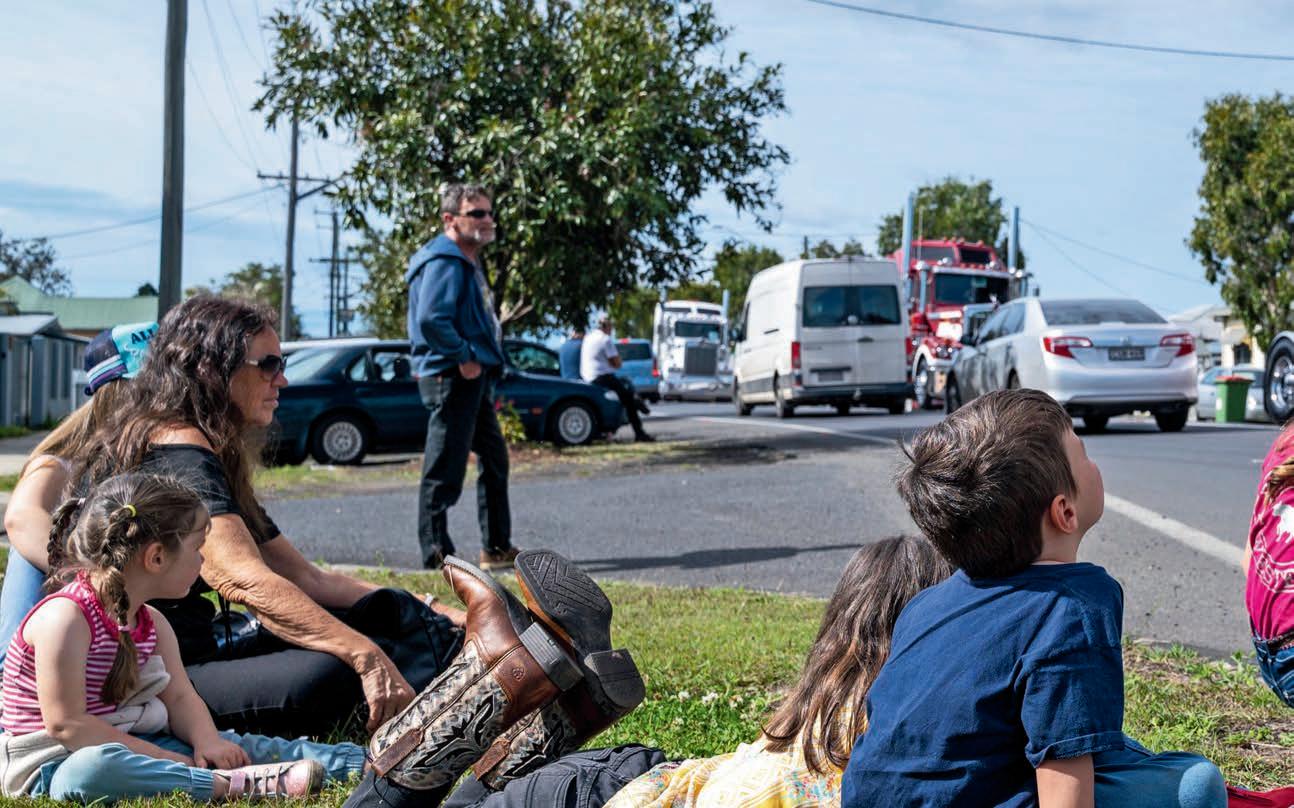
Show spokesperson Darren Goodwin may be the go-to man at the top of the truck show’s food chain, but he couldn’t do it without a great team of volunteers, and what they built this year attracted loads of supporters.
Before we address the turnout of trucks we need a shout out to all the off-truck entertainment. There was an FMX crew
The kids were also well catered for with plenty of bouncy houses, slides and rides to keep them entertained. Luckily, I got kicked off those rides early and was able to catch up with the ever-popular strongman Troy Conley-Magnusson, who had popped into the show to help with parking. He didn’t need truck keys, he was literally dragging the trucks around.
There were plenty of stalls dispersed between the trucks so you never went too far without finding something you didn’t
Tobin Transport is always a crowd favourite at truck shows and, as usual, Troy led the Tobin fleet in this immaculately restored Kenworth
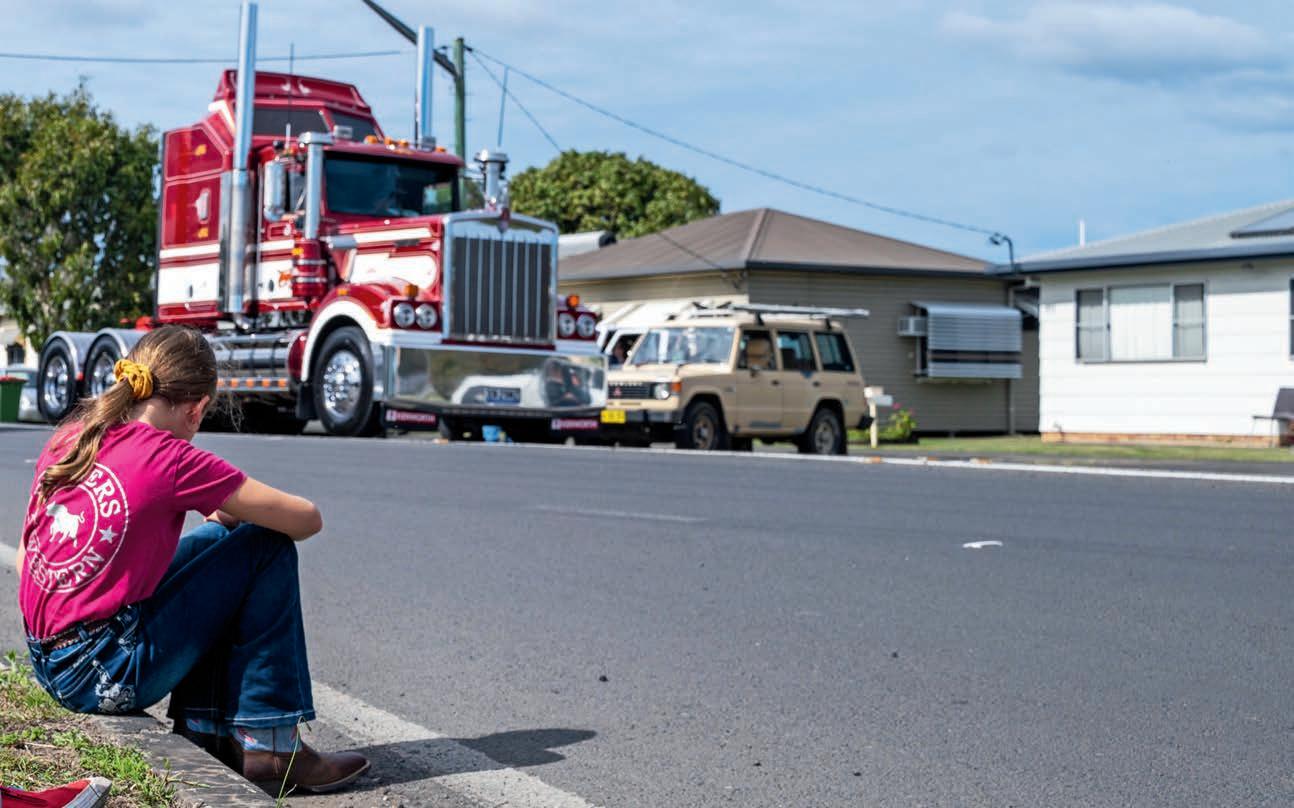
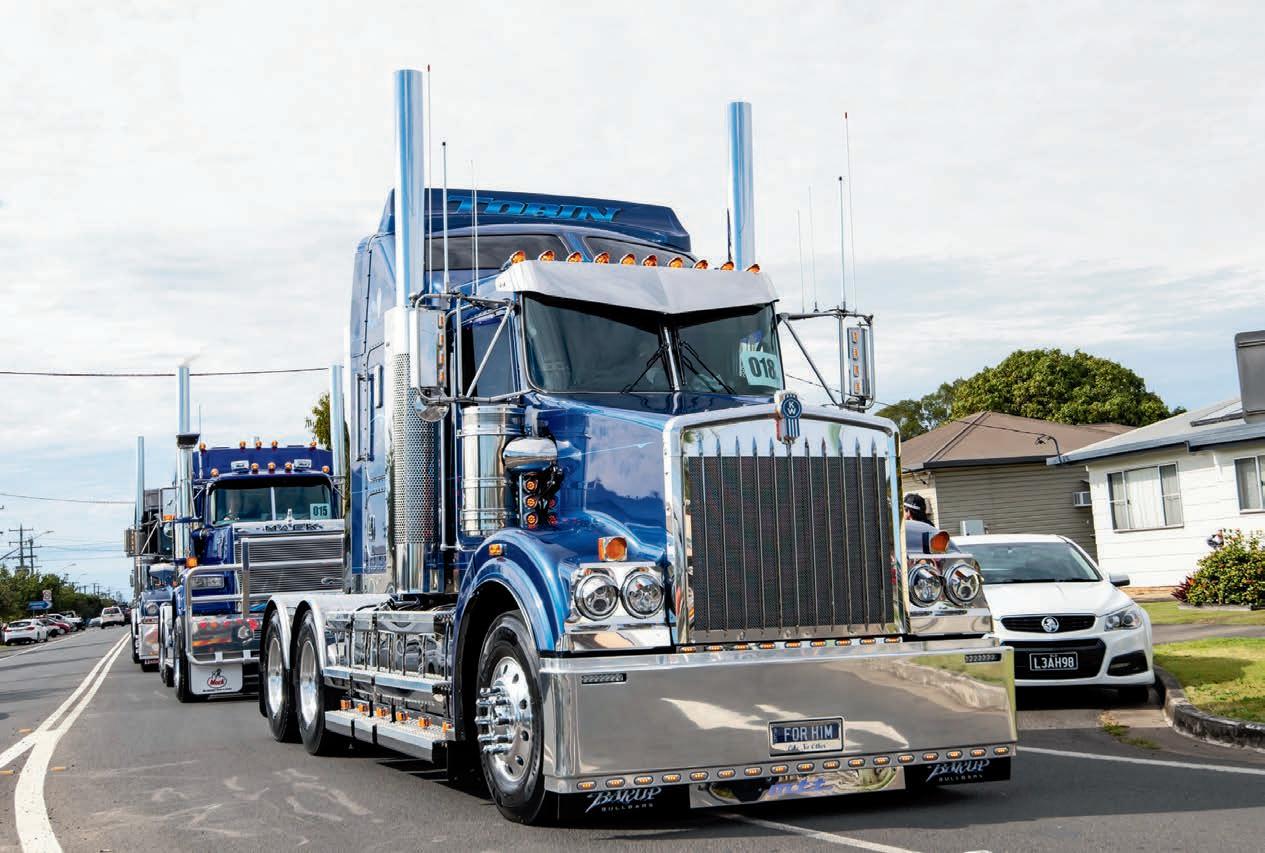
Wants Transport of Lismore had a fleet of the new Freightliner Cascadias on display. These things had more space in them than my motel room
The show was open to all ages. This tow truck may have been out of his depth if someone was stuck, but it still looked the goods
By about the halfway point of the parade, old mate realised he was going to have to start rationing his hydration. It was a bloody long convoy


I didn’t envy the judges, especially those who had to choose best Kenworth. Rightfully so Imeson’s T659 took the honour. It deserved it
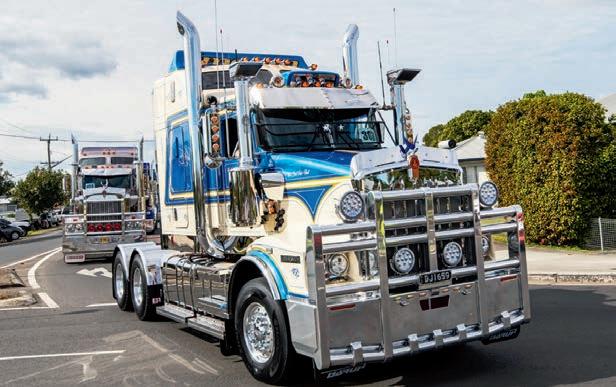
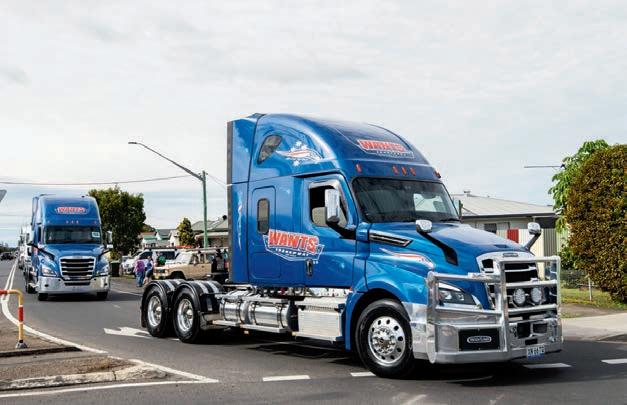
No stone left unturned and no spots left unpolished. Young Joshua Manhood made sure every part of his T909 was up show condition while his fellow workers (supposedly) shouted out words of encouragement

It was great to see the Seccombe family turn up with young Tom’s truck. They were very busy selling shirts and hoodies to raise money for Lifeline North Coast
I spent a fair bit of time enjoying the artwork and number plates; this Kenworth took the cake – ‘YEHRGHT’

It was great to see the variety of trucks at the show. Didn’t matter what it was they were presented beautifully. A pure example was this stunning UD
MidCoast Trucks sent its stunning Scania up from Coffs Harbour, I’ve been trying to catch this truck since pre-Covid and it never stops. Credit to it for finding the time to support the show

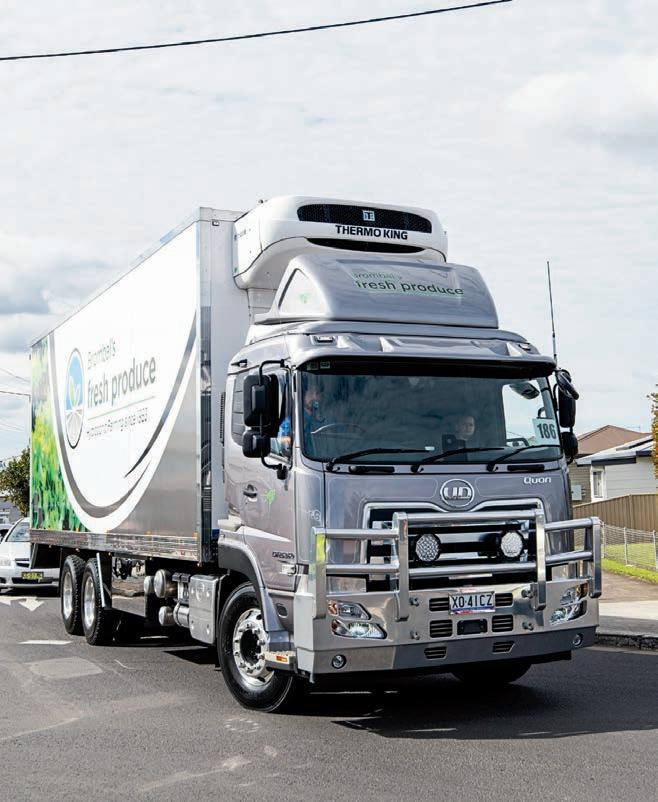

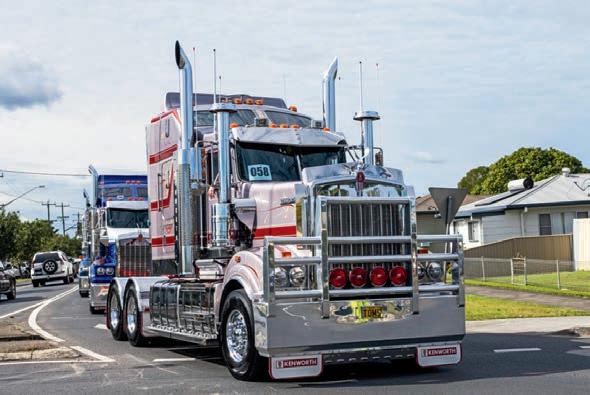
Another big fleet to make the journey and turn up in style was the big boys from Dawsons Haulage. It actually took out second prize for Best Fleet
even realise you really needed. My wardrobe has been replenished with a new range of Dawsons Transport T-shirts, as well as a couple of new Campbell Transport shirts all the way up from Bathurst. I even managed to get my hands on one of the amazing Tom Seccombe memorial hoodies that the Seccombe family are selling to raise money for Coffs Harbour’s Lifeline. If you haven’t had a chance to support Brooke and the family I urge you to check out their gear at the tomseccombe.bigcartel.com website.
In summary there was more stalls and entertainment than ever before, which is extremely fitting. It pairs up with the fact that the show itself was bigger than it’s ever been.
This year a total of 375 trucks were on display in the streets of Casino. As I watched and waited for the convoy to roll into town, I began to feel extremely glad I wasn’t helping Darren and his team park the trucks up. It would honestly have been like watching one of those terrible family magicians pulling the never-ending handkerchief out of their sleeves.

Every time they looked down the road there was another line of stacks and chrome as far as the eye could see. Half an hour later it would be the same thing. Stacks and chrome, stacks and chrome.
When the convoy finally finished rolling
The SRV boys always look good. This year they were led by the new Legend in the fleet. The SRV boys can be very proud taking out third place for Best Fleet
I had to take several looks at this stunning Gooden Transport Kenworth. It’s got 1.3 million on the clock but looks better than new
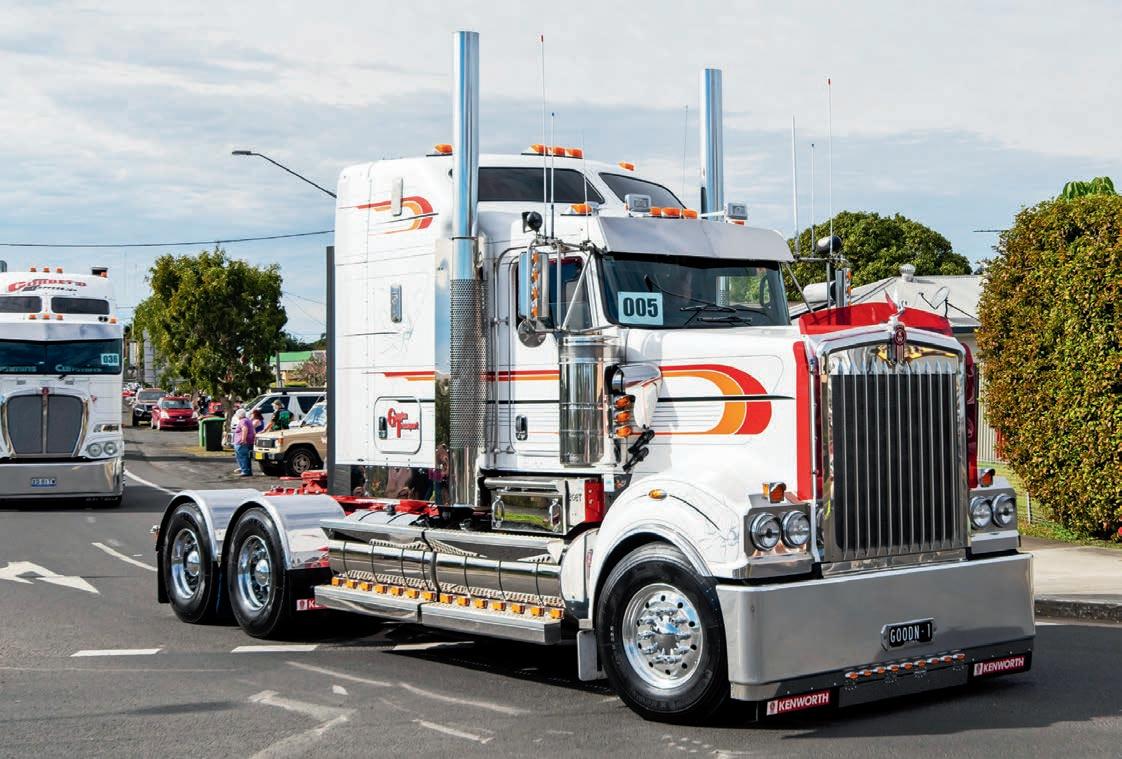
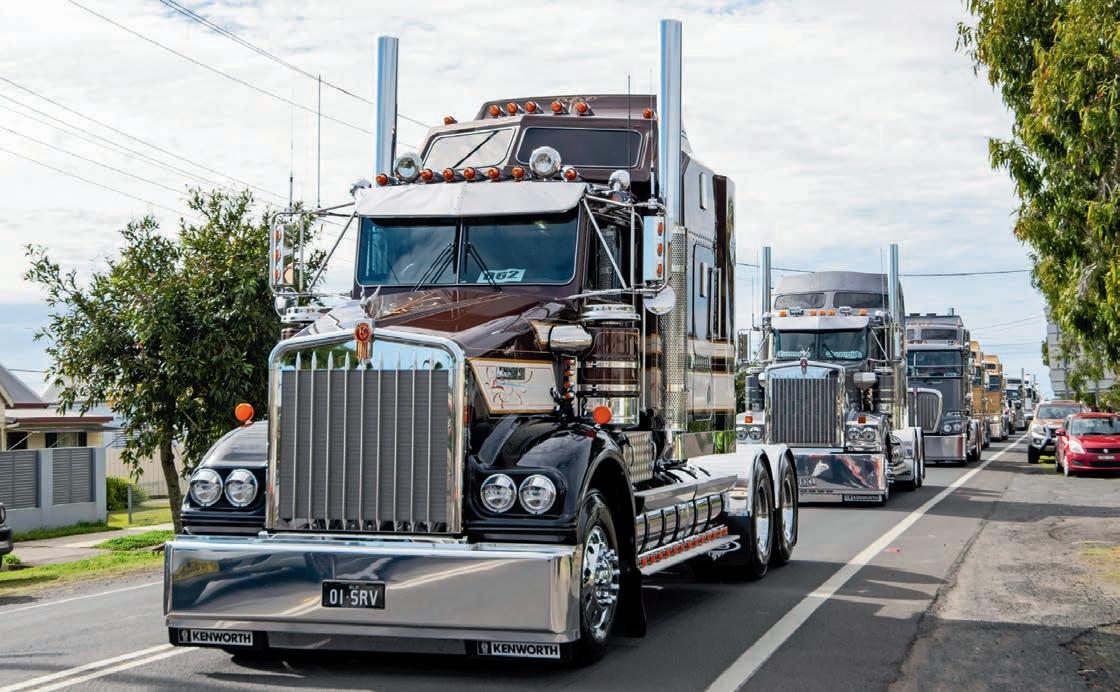
This stunning 100-year Mack of DNV Transport lead of a convoy of Macks for DNV
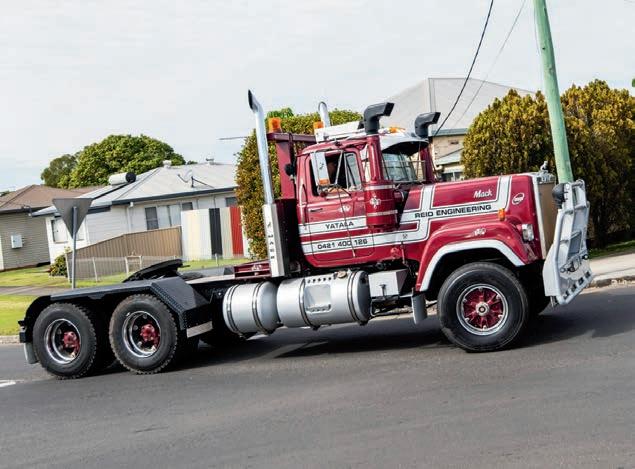
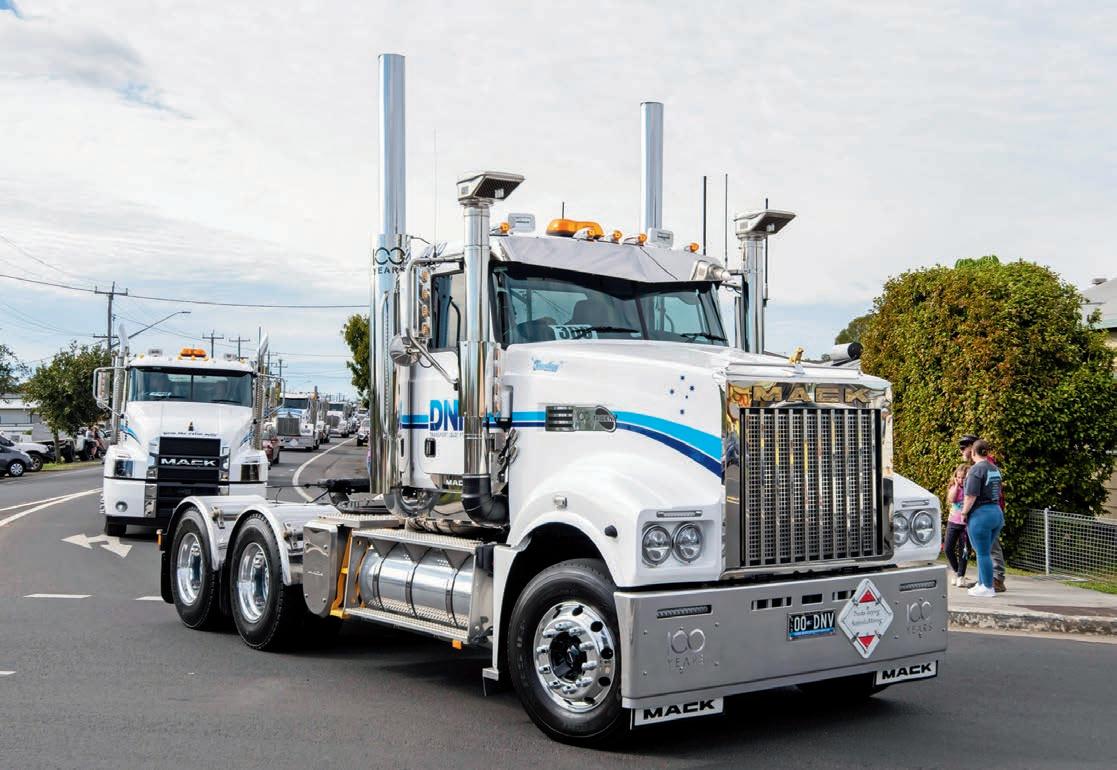
past me, my shoes were out of fashion and I was in need of a haircut. My cameras had run flat and my assistant’s camera was starting to smoke. The locals that lined the streets were still beaming and the hundreds of kids had worn out their air-pumping arm.
It’s not always about the new and shiny. Sometimes it’s just about toughness
A big thumbs up to everyone out watching the convoy. With nearly 400 trucks it was no 10-minute convoy; even the final truck got a warm reception from the locals.
It’s worth noting as well that it wasn’t just locals packing the street. There were truck
nuts and ‘truckarazzi’ from far and wide. Some big names in truck photography had made the pilgrimage. It was great to see the likes of Chris and Stephanie Serone from Loaded Media down there, with their drones and cameras capturing the action. Budding photographers like Cody Nowlan from Aussie Trucking Photography who had trekked across from Nabiac were there as well as the likes of Mackay truck photographer Kirsty Llessur from Freeze the Moment photography. There was a huge turnout of truck fans from far and wide.
Throughout the day and well into the evening the local pubs and eateries were brimming with patrons and there was a positive vibe that just radiated throughout the town. TV sensation, MC royalty and, when he has time for it, truck driver Glen ‘Yogi’ Kendall was there to host the prize giving and sign autographs. Along with Followmont legend Mork, the two of them ensured there was almost as many laughs as there was trophies given out.
All in all, I stand by my opening statement. The 2022 Casino Truck Show was massive. The number of entrants was massive. The quality of the entrants was massive and the porterhouse steak from the Commercial Hotel? You guessed it – massive!
Bring on August 5, 2023. At this rate they’ll be closing down streets in Lismore to park up next year’s entrants.
Show spokesperson Darren Goodwin kept his hat on all day as it stopped his hair from falling out. He anticipated a big turnout but even he was shocked by the numbers that just kept rolling in
The Auswide Transport Solutions team of Ranjit, Darryl, Tom, Mark and Damian were a lot happier to be at the show than they were to pose for me – but they did
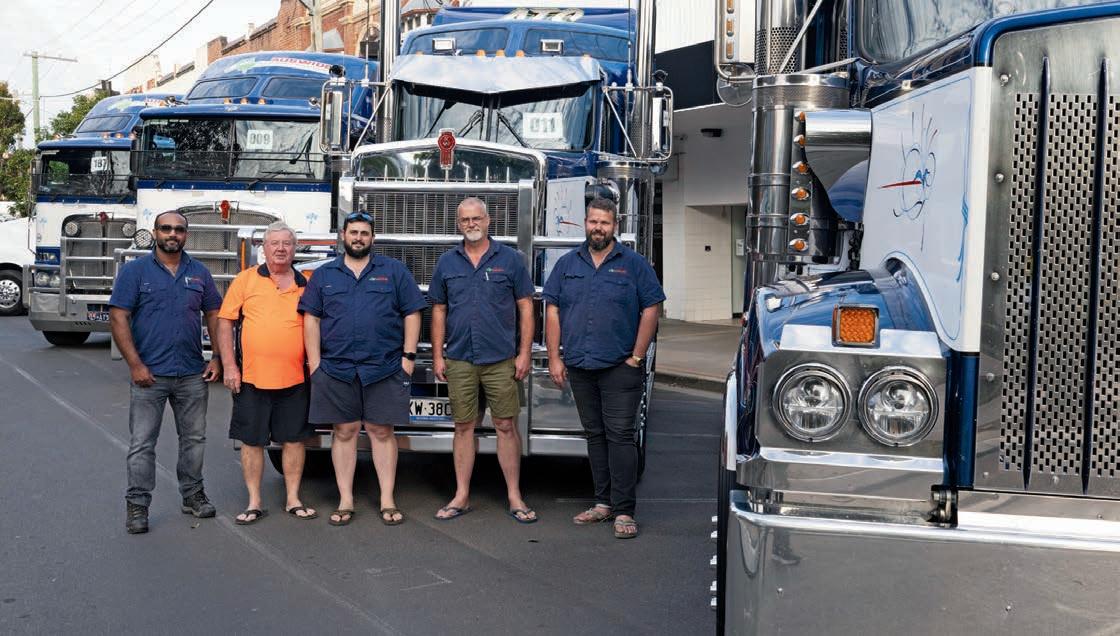

supporters what they built this year attracted lots of
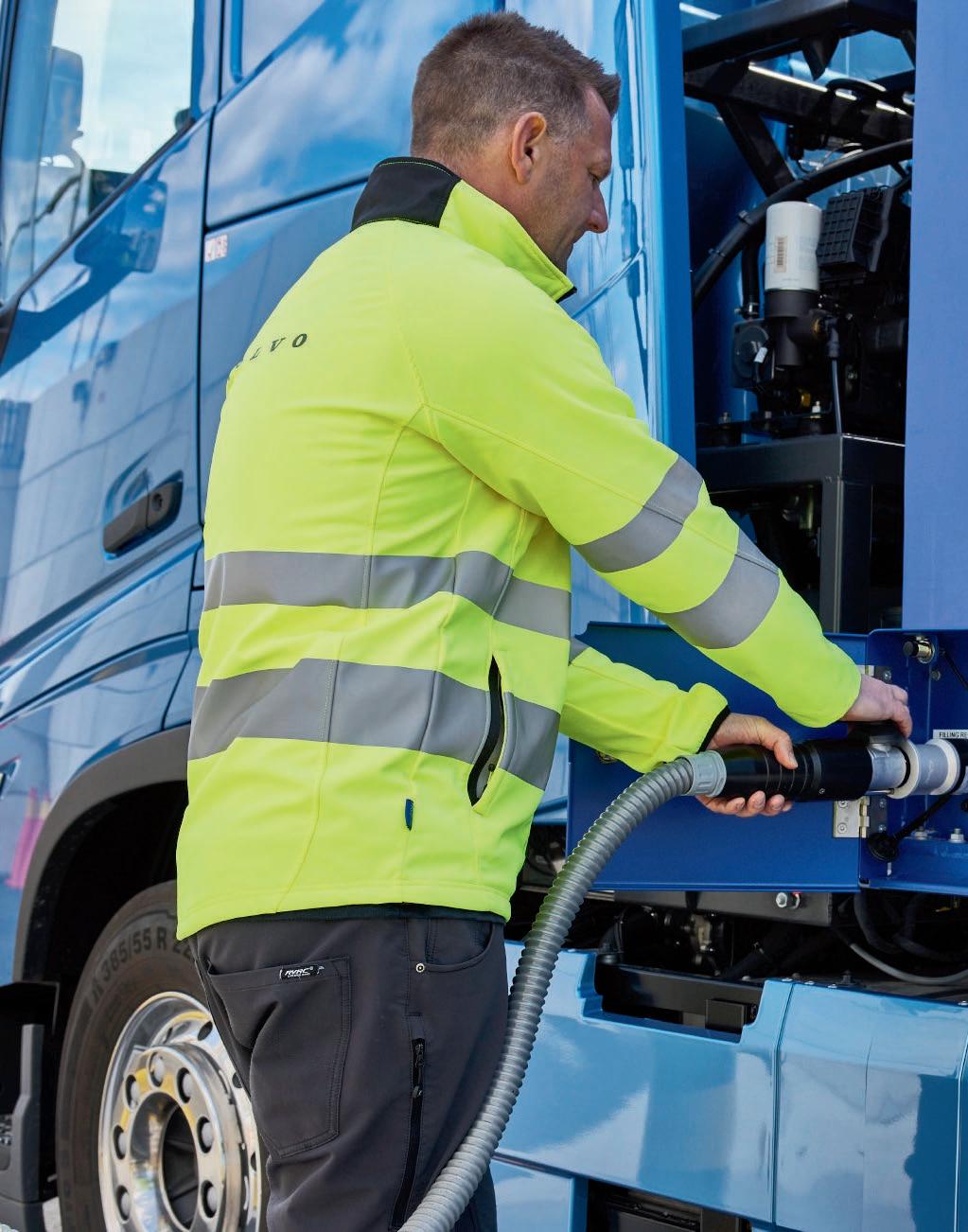 Words | Steve Brooks
Words | Steve Brooks
At the 2022 IAA commercial vehicle show in Hanover there will be the latest advances in trucking technology on display, with Daimler and Volvo showcasing their electric power, fuel cells and alternative fuel solutions. We may not be moving away from diesel quite yet, but the change isn’t too far away

Have no doubt, the automotive world is undergoing a change of epochal proportion, from motorbikes to massive mining machines and everything in between. And it’s happening right now, faster and more certain than perhaps any period in industrial history.
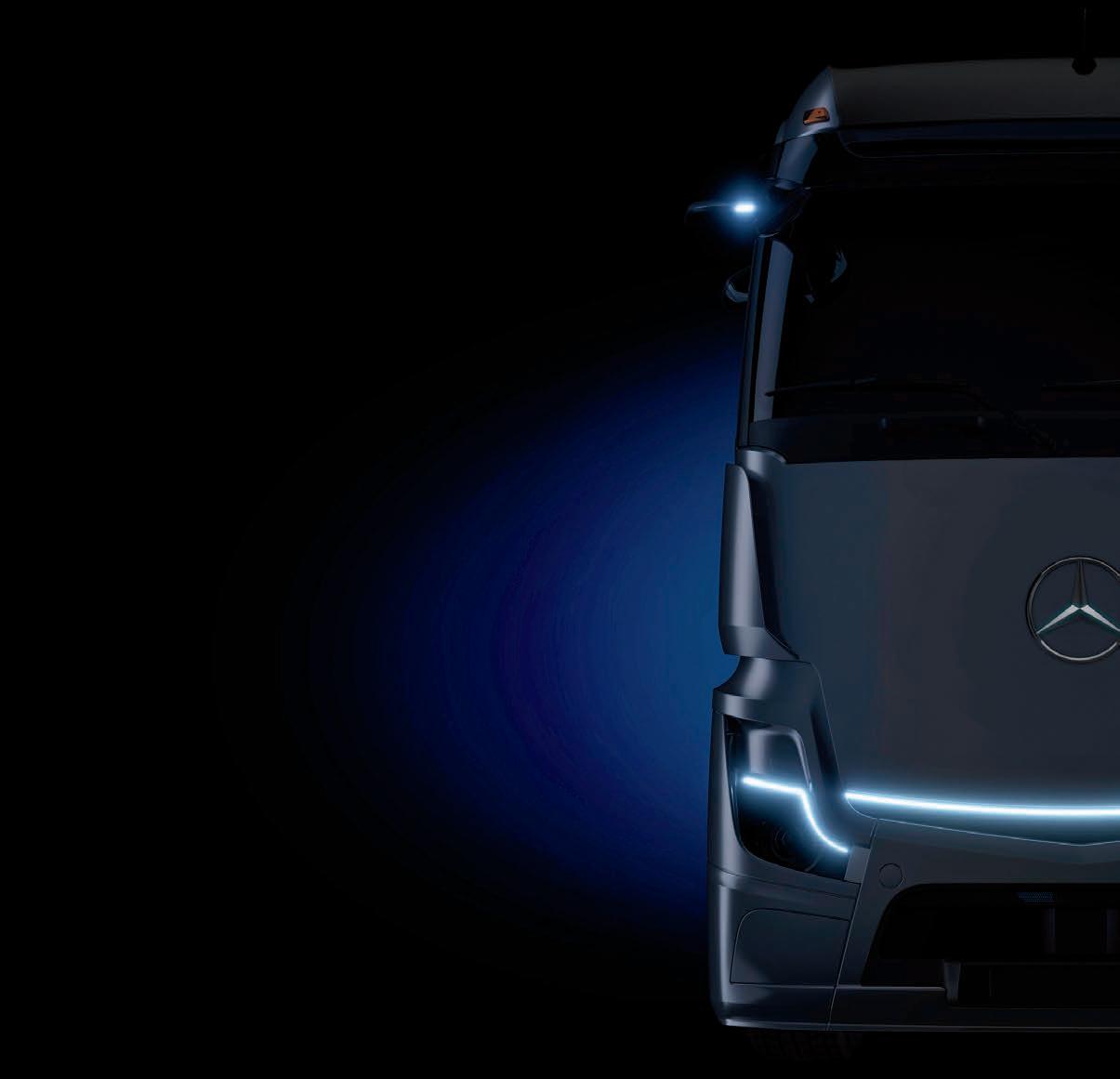
Driving the change are climatic geopolitical events. Delivering the change is climactic corporate resolve.
In both cases, the change is evident and inevitable, and accelerating at a pace few could have imagined just a decade or so earlier.
The ultimate goal is carbon neutrality and
in its most fundamental form, that means no more fossil fuel. No oil, no gas, no coal.
Of course, such earth-shaking change after much more than a century of total reliance on Earth’s extracts won’t come without inherent criticism or significant cost, especially in commercial enterprises such as freight haulage. But change is coming, absolutely, and 20 years from now it’s entirely likely that only trucking’s old timers with ever more muddled memories will recall the days when there were things like manual gearboxes, drum brakes, paper log books and the need to pour vast volumes of diesel into fuel tanks.
Sure, there’s little doubt diesel will be still in use for some work for at least the next few decades, particularly in countries like Australia where long, heavy hauls across thinly inhabited regions are likely to remain part of the national landscape for at least another generation or two. However, in the great majority of applications involving commercial vehicles of one sort or another, working in shorthaul roles in urban or regional areas, the energy for road freight will almost certainly be derived from plugging in rather than pouring in.
It is, quite simply, indicative of a global automotive industry striding through
a technological revolution of immense magnitude and what we’re witnessing right now is the evolution of that revolution. Step by step. Piece by piece. Bit by bit. And yes, there have been, and will continue to be, mistakes and missteps along the way, complete with grievances and complaints of every sway, but the path is now set.
Equally, the great drivers of this technological advance in the commercial vehicle world are the giants of the business, Daimler’s Mercedes-Benz and Volvo Group, individually and collectively creating the platform for a tectonic shift in the power sources that move freight across Europe,
The shape of things to come? Daimler Trucks’ concept design for CO2 neutral trucks. The future is racing into focus faster than we might think
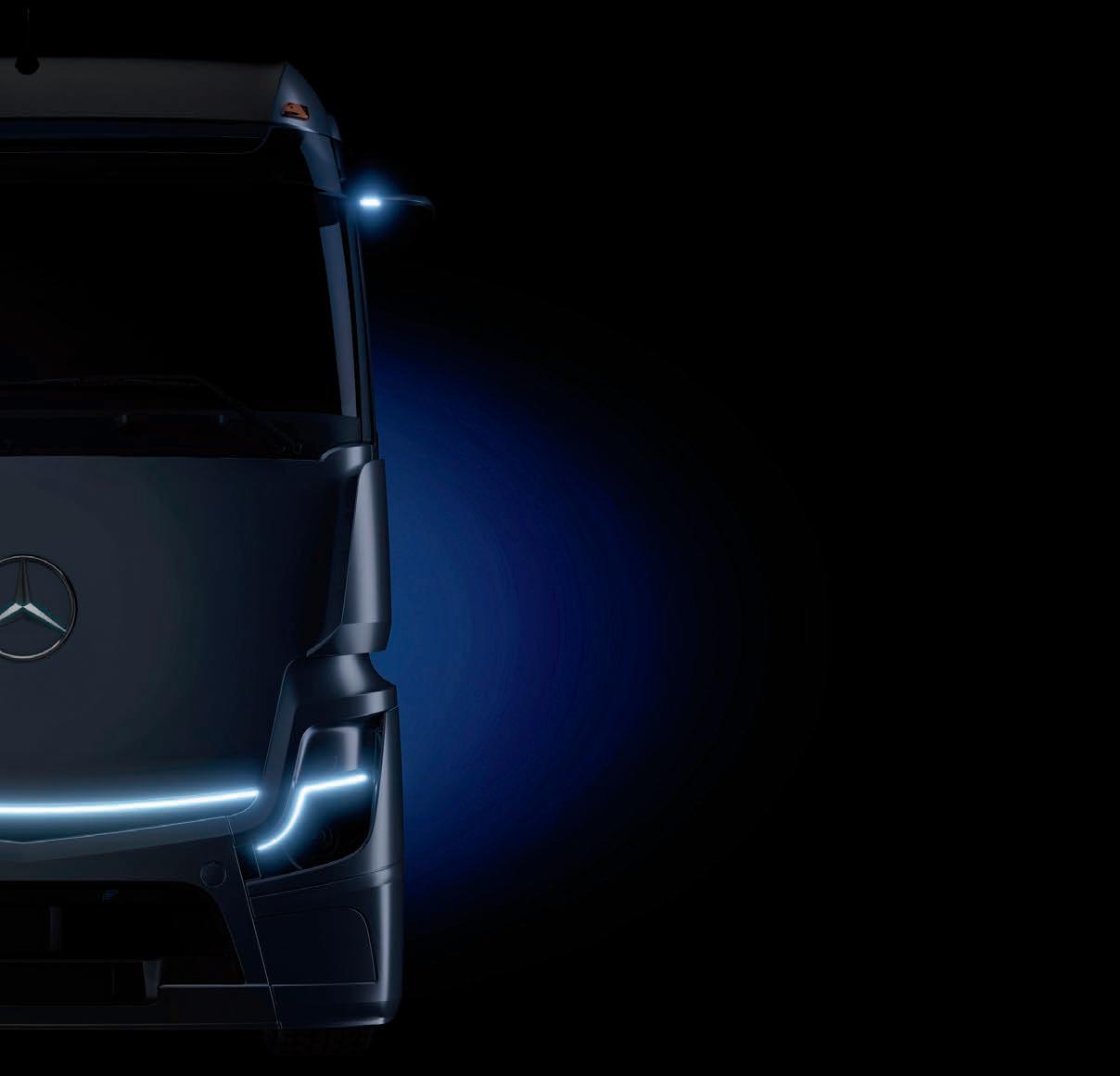
Battery-electric eActros has been on sale in Europe since late 2021 and will soon start trials in Australia and New Zealand. Meantime, at Germany’s IAA commercial vehicle show in Hanover this September, an eActros Longhaul version will make its first public appearance
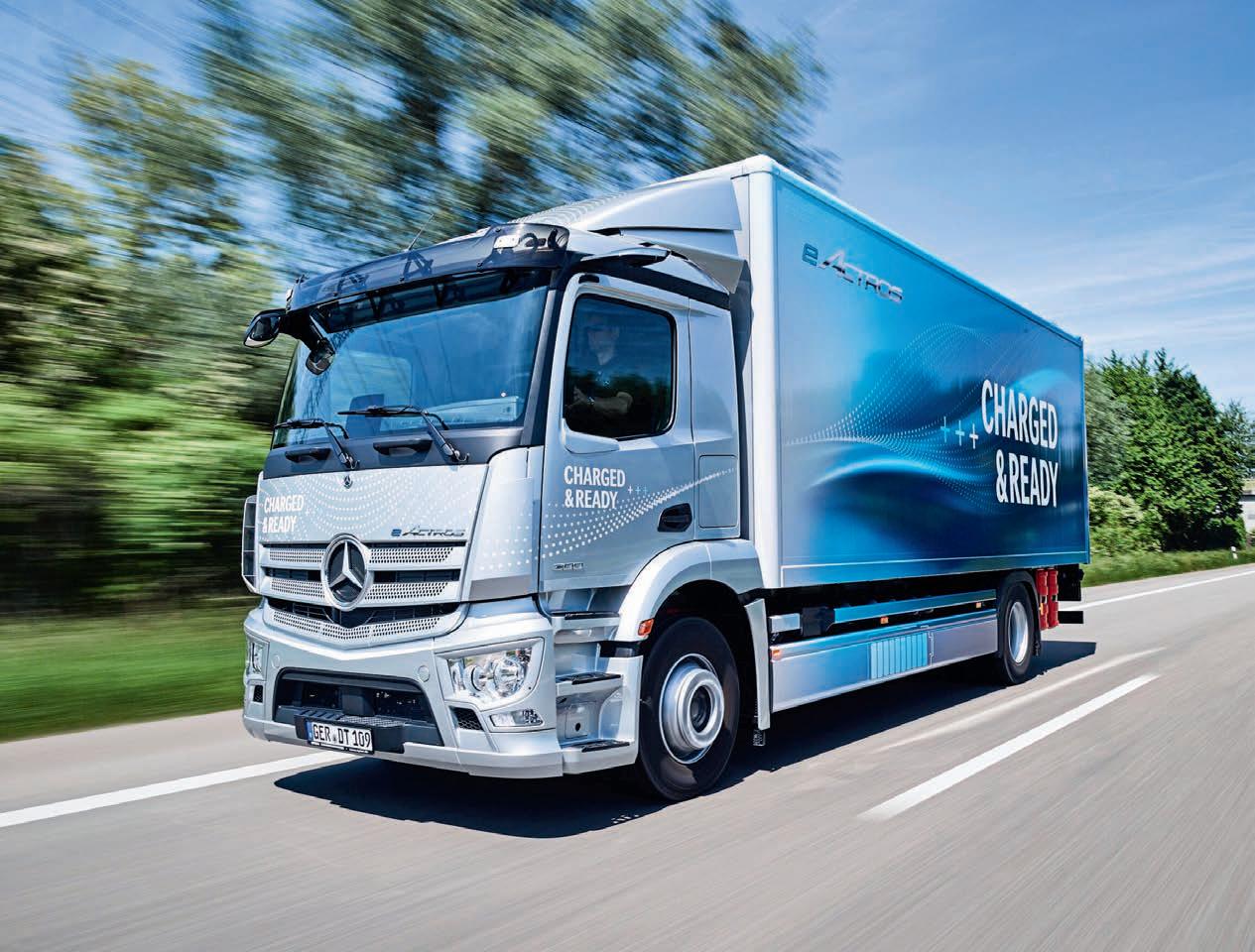
North America, Japan and, eventually, everywhere.
Perhaps most vital and indicative in this corporate camaraderie between Daimler and Volvo is the 2021 formation of a company called ‘Cellcentric’ which, as the name implies, specialises in the manufacture and supply of fuel cell systems. Make no mistake, this is high end technology that will ultimately play an intrinsic role in meeting road transport’s environmental responsibilities. Moreover, by combining their respective strengths, the two powerhouses are effectively easing the technological and economic burden of such immense change.
By its own definition, Cellcentric is “a 50:50 joint venture of Daimler Truck and Volvo Group to take advantage of the expertise and extensive experience from several decades of development work on fuel cells within its predecessor companies. Cellcentric’s ambition is to become a leading global manufacturer of fuel cells, and thus help the world take a major step towards climate-neutral and sustainable transportation by 2050.”
To achieve its lofty goals, Cellcentric’s primary focus is to develop, produce
and commercialise fuel cell systems for use in heavy-duty trucks and, according to a recent Volvo statement, “build one of Europe’s largest series production facilities for fuel cells”.
Already, several hundred highly specialised technicians and engineers are working at facilities in Germany and Canada, with the company stating: “Around 700 patents have been issued, underlining the leading role played by the company in terms of technological development.”
There is, of course, so much of this story still to be explored but, rest assured, with many billions already committed to being invested by corporate super-powers, the race to the future is moving at a frenetic pace.
Critics and doomsayers are plentiful but, again, nothing will stop the tide of technological advance now pulsing through every element of truck development, performance and efficiency.
From all indicators, this year’s Hanover truck show will reveal the tip of the technological iceberg.
After several years of Covid-induced hiatus, the 2022 IAA commercial vehicle show in
alternative the message is all about
Hanover, Germany, will be a stellar showcase of how dedicated and determined the trucking world’s global powerhouses are in development of battery-electric and fuel cell technologies, and specifically the close links they have forged to bring fuel cells to commercial reality.
Be assured, though, Mercedes-Benz and Volvo will not be alone in featuring a cleaner, greener future at Hanover. But then, nor will developments in diesel-powered trucks and their significant impact on Australian interests be completely on the backburner.
Nonetheless, it is no coincidence that, on the same day in June this year, the German and Swedish entities issued press releases outlining their aspirations and goals for carbon neutrality in future products, with Mercedes-Benz announcing that it will unveil its eActros LongHaul electric truck at Hanover.
Meantime, taking a further step up the technological ladder, Volvo Trucks announced that it has started testing vehicles with fuel cells powered by hydrogen, with a driving range of up to 1,000km.

But the Hanover show is, of course, slap in Mercedes-Benz heartland and, typically, the three-pointed star makes a sharp point of being the biggest and brightest exhibitor.
This year, however, the message is all about alternative power sources and, appropriately, the eActros LongHaul will be Mercedes-Benz’s show highlight.
According to Benz’s press release: “The eActros LongHaul to be shown at IAA provides a preview of the design theme of the series-production vehicle.”
In effect, an indication of what to expect when the truck actually goes into production, planned for 2024.
Daimler Trucks’ hydrogen fuel cell prototype snapped recently in Germany. Trials are well advanced, with production planned for the second half of this decade
Step by step. Volvo is well advanced with batteryelectric and fuel cell electric technologies for longhaul trucks. Daimler and Volvo have joined forces for fuel cell manufacturing
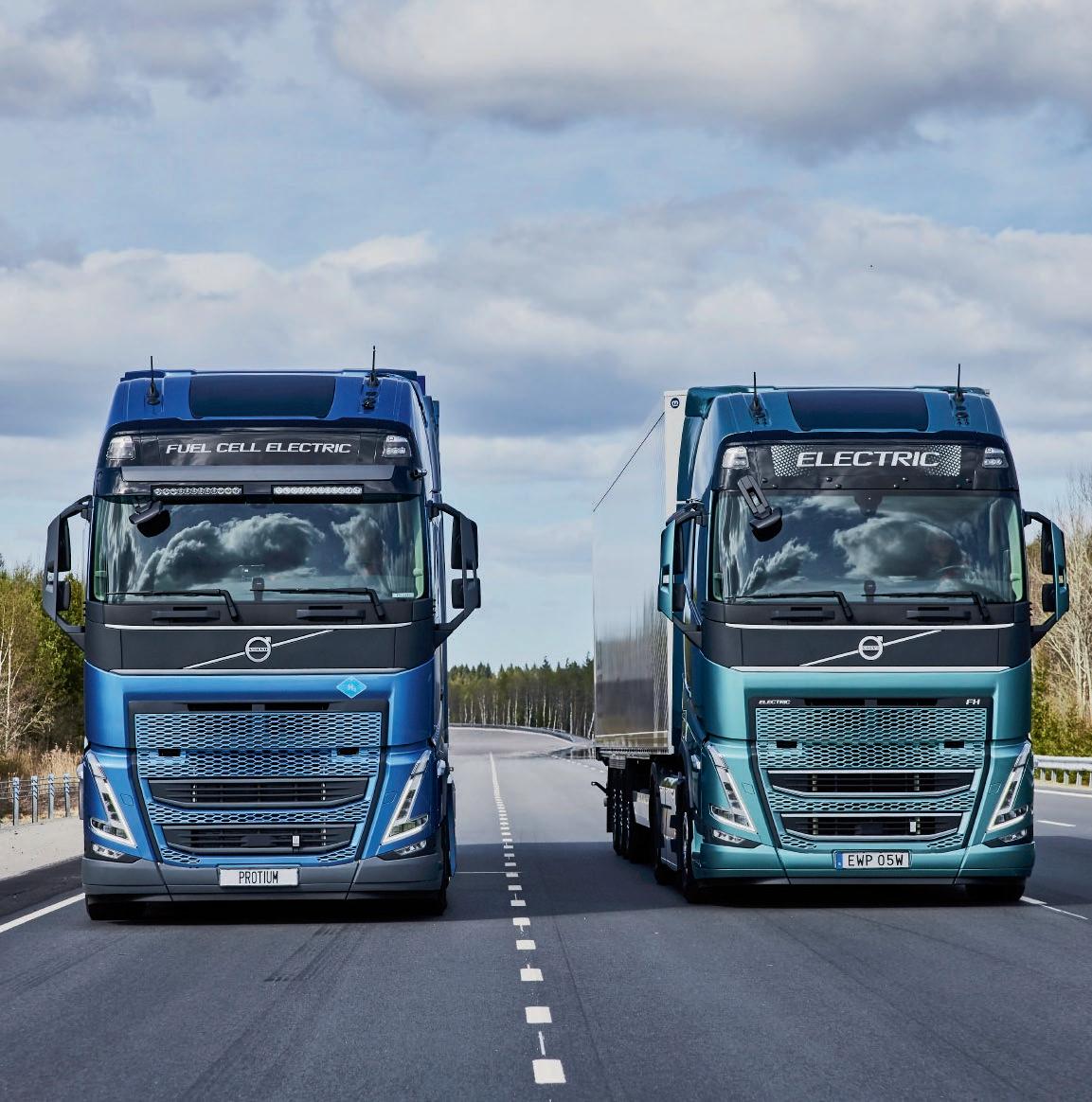
“The tractor unit is also part of the eActros LongHaul test fleet,” MercedesBenz continues.
“The first prototypes are already undergoing intensive testing and the eActros LongHaul will be tested on public roads this year. In the coming year, near-production prototypes will go to customers for realworld testing.
‘On a single battery charge the eActros LongHaul will have a range of around 500 kilometres,” it’s claimed, with batteries using lithium-iron phosphate cell technology that not only provides long service life and more usable energy, but the ability for batteries to be charged from 20 per cent to 80 per cent in under 30 minutes.
While the LongHaul version is still being refined and tested, Mercedes-Benz explains that “eActros for heavy-distribution [shorthaul] transport has been in series production at the Worth plant since October 2021” and was followed in July this year by the eEconic model, largely for municipal use in waste collection.
In the same press statement, Karin Radstrom, chief executive officer of Mercedes-Benz Trucks, was unequivocal: “The electrification of heavy long-distance transport is the next milestone on our road to CO2 [carbon] neutrality.”
Effectively, eActros LongHaul is just the latest in a long line of future milestones planned by the German giant and a vivid
start a few years from now
indication that battery-electric technology has matured far beyond light-duty, local delivery trucks.
Additionally, Mercedes-Benz further asserts: “Battery-electric drives have the highest efficiency among alternative drives [and] eActros LongHaul provides a high level of energy efficiency with its purely batteryelectric drive.”
The key, however, is the availability of charging stations and as the MercedesBenz press statement explains: “Daimler Truck, Traton Group [Volkswagen, MAN, Scania, Navistar] and Volvo Group have signed a binding agreement to establish a joint venture for public charging for long distance transport.
“This provides for the establishment and operation of a public high-performance charging network for battery-electric heavy-duty long-distance trucks and coaches in Europe.”
Accordingly, it’s all part of Daimler Truck’s ambition to only offer new vehicles in Europe, Japan and North America by 2039 that are CO2 neutral.
“In the second half of this decade,” the Mercedes-Benz statement concludes, “the company aims to add series-production trucks with hydrogen-based fuel cell drives to its range of vehicles.
“Putting CO2 neutral transport on the road by 2050 is the ultimate goal.”
But as already explained, when it comes to fuel cell technology, Daimler certainly isn’t acting alone.
Volvo doesn’t pull any punches when it comes to proffering the benefits of commercial vehicles powered by a hydrogen-based fuel cell.
“Imagine a truck,” the Swedish giant enthuses, “that only emits water vapor, produces its own electricity on-board and has a range of up to 1,000km. It’s possible with fuel cells powered by hydrogen, and Volvo Trucks has started to test vehicles using this new technology.”
Already offering battery-electric trucks and models running on renewable fuels such as biogas, Volvo says its plans to decarbonise road transport will take a big step in the second half of this decade when fuel cell electric trucks powered by hydrogen are added to its product portfolio.
“We have been developing this technology for some years now, and it feels great to see the first trucks successfully running on the test track,” says Roger Alm, president of Volvo Trucks.
“The combination of battery-electric and fuel cell electric will enable our customers to completely eliminate CO2 exhaust emissions from their trucks, no matter the transport assignments.”
The fuel cell electric trucks will have an operational range comparable to many diesel trucks – up to 1,000km – and a refuelling time of less than 15 minutes, with the two fuel cells said to have the capacity to generate 300kW of electricity on-board.
Customer pilots will start in a few years from now and commercialisation is planned for the latter part of this decade.
With Volvo citing the potential to haul gross weights of 65 tonnes and more, Roger Alm asserts: “Hydrogen-powered fuel cell electric trucks will be especially suitable for long distances and heavy, energydemanding assignments.
“They could also be an option in countries where battery charging possibilities are limited.”
Incidentally, Volvo Trucks Australia openly states that (battery) electric trucks and their assembly at the company’s Wacol (Qld) production facility are firmly on the local agenda.
Further down the technological track, though, Volvo explains that a fuel cell generates its own electricity from the hydrogen on-board instead of being charged from an external source. The only byproduct emitted is water vapor.
Moreover, while the Swedish powerhouse reinforces the fact that fuel cells will be supplied by ‘Cellcentric’, the technology is still in an early phase of development and although there are many possibilities and benefits, there are also challenges ahead.
One of the big challenges is large-scale supply of green hydrogen, simply explained as the hydrogen produced by using renewable energy sources, such as wind, water and sun.
Another is the fact that refuelling infrastructure for heavy vehicles is yet to be developed.
“We expect the supply of green hydrogen to increase significantly during the next couple of years, since many industries will depend on it to reduce CO2,” says Alm.
“However, we cannot wait to decarbonise transport, we are already running late.
“So, my clear message to all transport companies is to start the journey today with battery electric, biogas and the other options available. The fuel cell trucks will then be an important complement for longer and heavier transports in a few years from now,” he concludes.
New DAF XG+ model.
We’re tipping this premium Dutchman will be the platform for a bold new model being developed specifically for the Australian and New Zealand markets, punched by an all-new Cummins 15-litre engine
Still, as insightful as the 2022 IAA show will be as a showcase of advanced new power systems, it is also sure to be a revealing platform for upcoming developments in diesel-powered hardware, with perhaps none more notable or indeed exciting for the Australian market than Paccar’s DAF Trucks and its new generation XG+ flagship model.
The second half of September might be a difficult time to find a few of Paccar Australia’s top product people toiling away at company headquarters in Bayswater, Victoria.
In fact, a handful of the company’s most senior engineers and product executives are more likely to be found wandering around the IAA show in Hanover, probably not too far from the stand of corporate colleague, DAF Trucks.
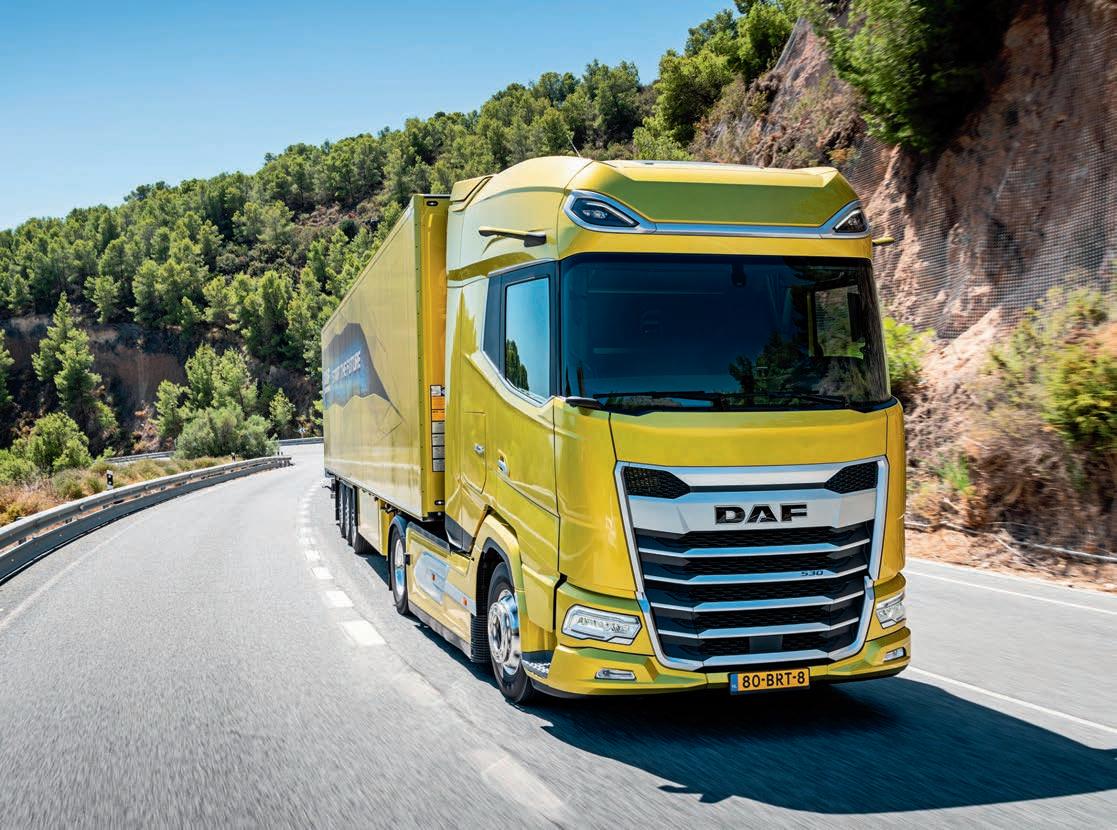
Likewise, it’s a fair bet that at least one senior Cummins executive from Australia might be also seen tramping around Hanover’s vast exhibitor halls.
What takes them to Hanover is a very
special project combining the formidable resources of DAF Trucks, Paccar Australia and its chief engine supplier, Cummins, working collectively to develop a unique cab-over variant specifically for the Australian and New Zealand markets.
None of this, however, should come as an Earth-shattering shock. We’ve reported numerous times on the increasing likelihood of a premium DAF model being tailored specifically for Australia’s heavyduty requirements, powered exclusively by an all-new, relatively lightweight 15-litre Cummins engine with up to 660hp (492kW) and 2,300lb-ft (3,118Nm) of torque.
For instance, in the ‘Evolution of an Icon’ story in our previous issue, detailing the launch of Kenworth’s new K220 cab-over, we referred to “the growing inference of a boldly unique cab-over being developed in Europe specifically for our part of the world”.
Even so, to date we’ve had no official confirmation of the new model’s introduction to the Australian market,
Best known for its fully automatic transmissions, Allison points out that it is also “a leading designer and manufacturer of conventional and electrified vehicle propulsion systems for medium and heavy-duty vehicles”.
Mid-way through this year, for instance, at an industry event in Germany and just a few weeks before Mercedes-Benz and Volvo issued statements about their latest battery-electric and fuel cell developments, Allison Transmission introduced a new electric axle known as Allison eGen Power.
At this initial stage, the electric axle is specifically designed for fire and rescue vehicles, with one of the first installations of the eGen Power axle going under an MAN TG-M model operated by Emergency One, a British manufacturer of fire and rescue vehicles.
Allison Transmission describes eGen
Power as a bolt-in electric propulsion system compatible with existing vehicle frames, and features two fully integrated electric motors, a two-speed gearbox, oil cooler and pumps.
Power certainly isn’t lacking in the twin-engine 100D version, with Allison Transmission claiming a continuous output of 454kW and peak output of 652kW, making it one of the most powerful electric axle systems on the market.
The design, Allison continues, prioritises starting and climbing capabilities, as well as high speed and efficiency, giving fire and rescue vehicles unsurpassed performance and reliability, strong acceleration and excellent manoeuvrability.
A variant of the eGen Power 100D is the 130D model, designed for European and Asia Pacific markets where many commercial vehicles require a heavier 13-tonne gross axle weight rating.
 A schematic impression of Allison’s eGen Power electric axle fitted under a typical truck chassis
A schematic impression of Allison’s eGen Power electric axle fitted under a typical truck chassis
probably in 2024. But nor have we had any denials or refutations.
Similarly, questions emailed recently to DAF Trucks senior product executives about aspects of the Australian model’s development had gone unanswered when this article was being written.
It is our belief, however, that DAF’s new XG+ model is the platform for what will be a major milestone in Paccar Australia’s product history by formally and powerfully establishing DAF as the keystone in the company’s heavy-duty cab-over future.
Yet, despite the lack of comment on the Australian version’s development, the XG+ has been at least well received by northern
hemisphere commentators, citing a cab that is 330mm longer and 200mm taller than its XF counterpart.
What’s more, the model’s late release is said to have allowed DAF to create the biggest cab on the market and, in the process, take full advantage of broadened EU regulations on mass and dimensions.
Reports further suggest high levels of storage space, a clever fold-away passenger seat to significantly enhance interior space, and improved levels of fit and finish which were already of a high standard.
As photos show, there’s also the availability of digital mirrors while under the cab, the top European rating is 530hp (395kW) from

Paccar’s MX-13 engine coupled to a ZF Traxon 12-speed automated transmission.
Of course, with a big bore 660hp Cummins underneath, an Australian derivative will require vastly greater cooling capacity. As for the transmission, there’s no indication if an Australian version will continue with the ZF Traxon or Eaton’s new heavy-duty Endurant 18-speed automated shifter.
It’s unknown at this time if a Cumminspowered XG+ with up to 660hp will be also launched in Europe. Whether it is or isn’t, there’s nothing particularly new about a Cummins-powered DAF.
In fact, from 1994 to around mid-1999, Cummins N14 engines were used to push DAF to higher horsepower heights.
In the northern spring of 1994, for example, DAF’s Super Space Cab 95.500 model used a Cummins N14 at 500hp (373kW) for some markets. Then in 1997, the 95XF model offered a Cummins N14 at 530hp until early 1999 when the N14 was dropped from the range with the introduction of the Euro 3 emissions standard.
As for any other expectations on what the future might hold for DAF in Australia, right now we simply expect to be amazed.
Inside views of DAF’s XG+. Reports suggest it’s the roomiest cab on the European market, taking full advantage of EU increases in mass and dimensions. Digital mirrors are optional
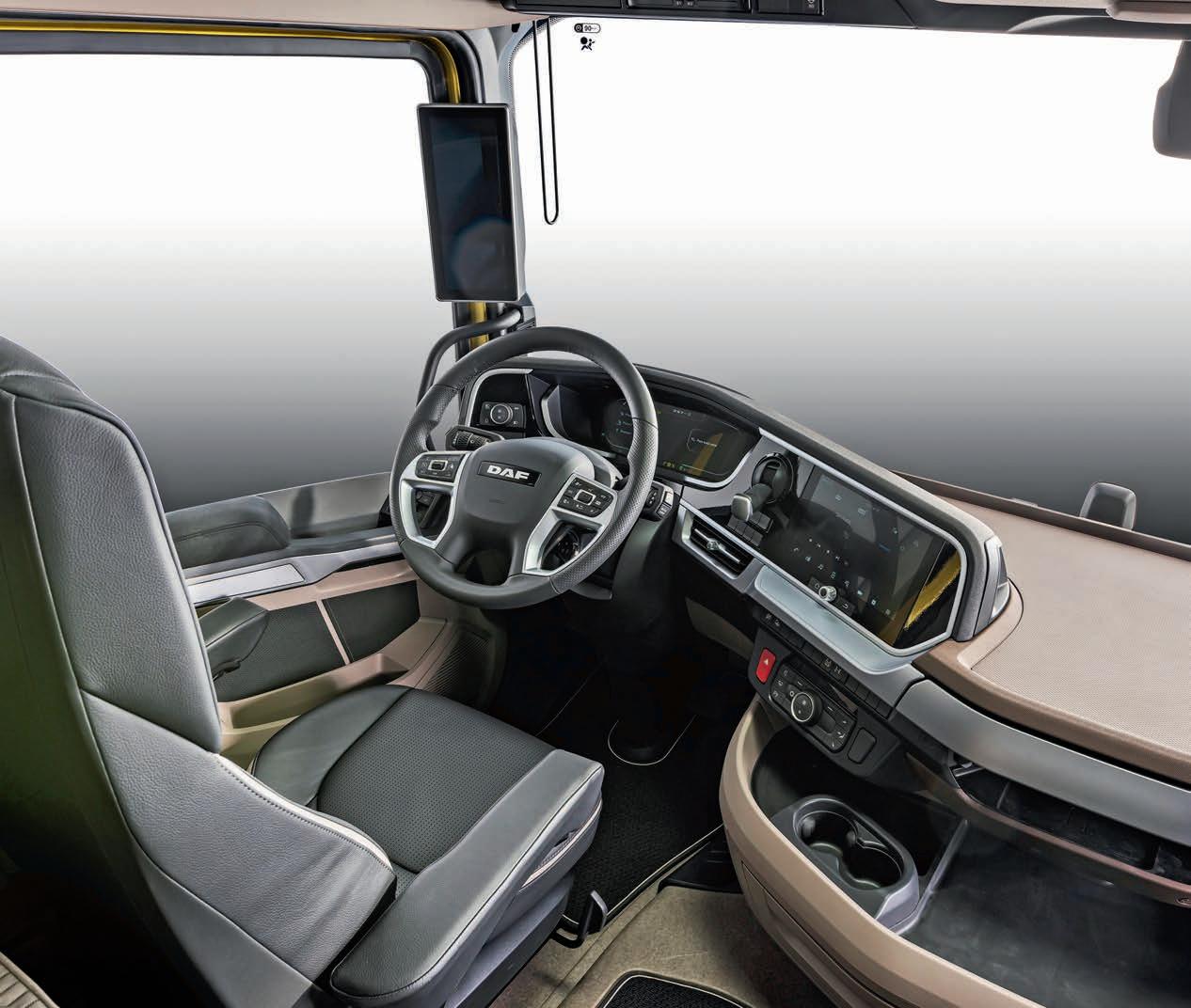
 Words & Images | Warren Aitken
Words & Images | Warren Aitken
The world’s largest truck stop – Iowa 80 – was the site of the 43rd Walcott Trucker’s Jamboree recently. With so many giant rigs on show, it was a good time to ask the question of why American trucks are so much bigger than here in Australia
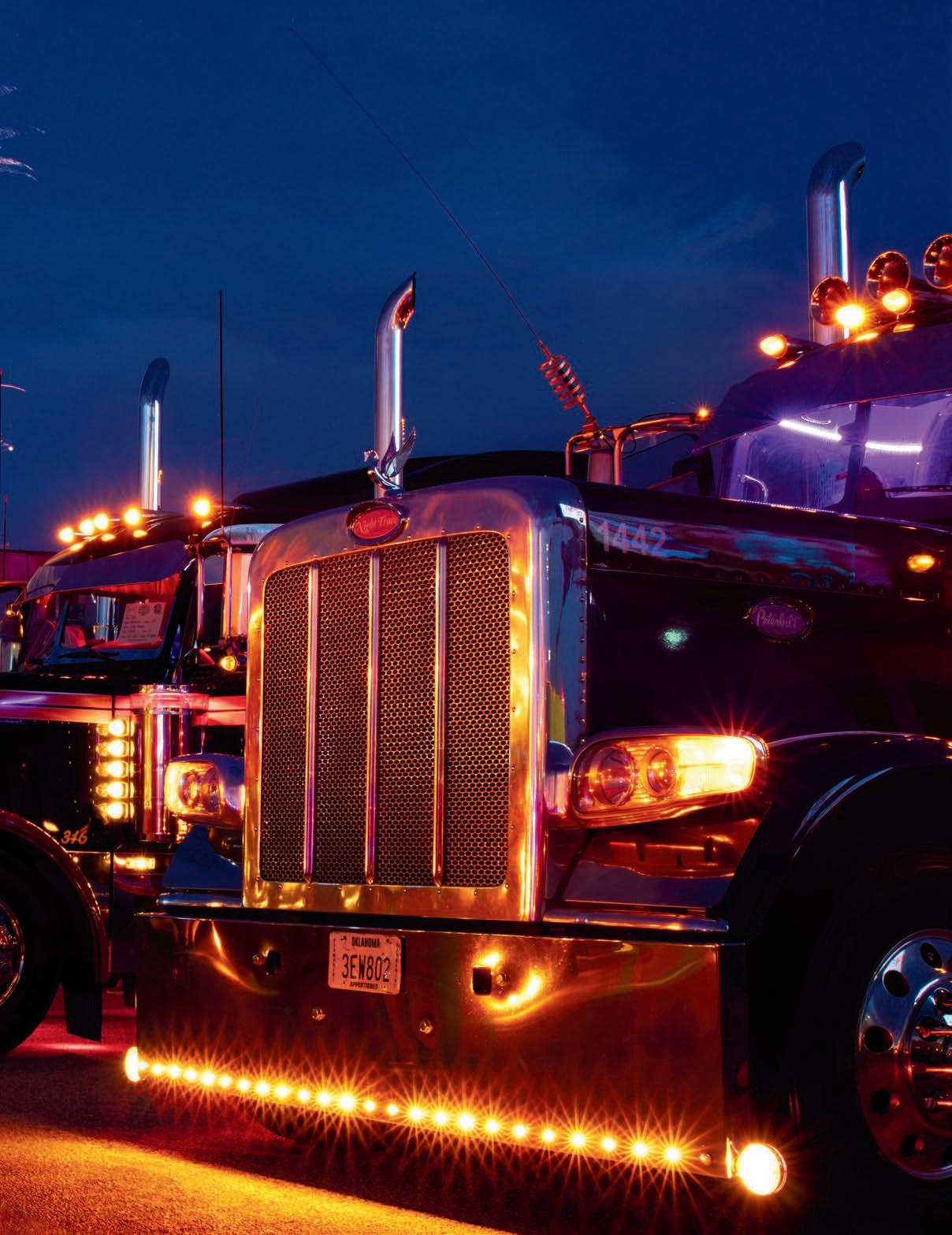
A nice Ennis Corp Peterbilt in position at the World’s Largest Truckstop
Iowa 80 – the world's largest truckstop

If you are anything like me, you have most likely eyeballed the ensuing pages before reading my carefully composed waffle. That’s understandable, the trucks on the following pages are outstanding! I’m continually distracted just trying to write this piece. You have most likely also deduced that this story is not a locallysourced exposé. Once again, kudos to you.
None of the trucks you’ve been perving at can be found on this great continent of ours. Even this story was written abroad. I in fact started writing this while crammed into a seat built for a much smaller individual, dining on meals served at an eighth of the standard size while cruising along several thousand feet above the Pacific Ocean with my knees in my ears.
Here’s the kicker, though. If you think this story is about a truck show you would be completely wrong. It’s not. It is my attempt to impersonate an investigative journalist. Stop laughing, it’s true. I ‘Cirque du Soleil-ed’ myself
into a cattle class seat and travelled for 20 hours to investigate the living conditions of the average North American trucker (that’s American for truckie). I put myself through all of that for you guys, so you are welcome.
I understand there will be a few cynics out there calling “BS”, claiming: “If that’s the case how come all the photos are from the Iowa 80 Truckers Jamboree?” To which I say, just because the 43rd annual Walcott Truck Show was on the same weekend I was over there investigating how length regulations play a part in driver fatigue. It doesn’t mean I did all that travelling just to go to a truck show and take thousands of photos of extremely cool trucks. It very easily could have been a happy and lucky coincidence.
Okay, cards on the table. It wasn’t a coincidence. The cynics were kind of right. I had saved all my coins to experience the 43rd annual Walcott Truckers Jamboree. That’s a fancy name for a big ass truck show by the way.
Just like the amazing feed that was
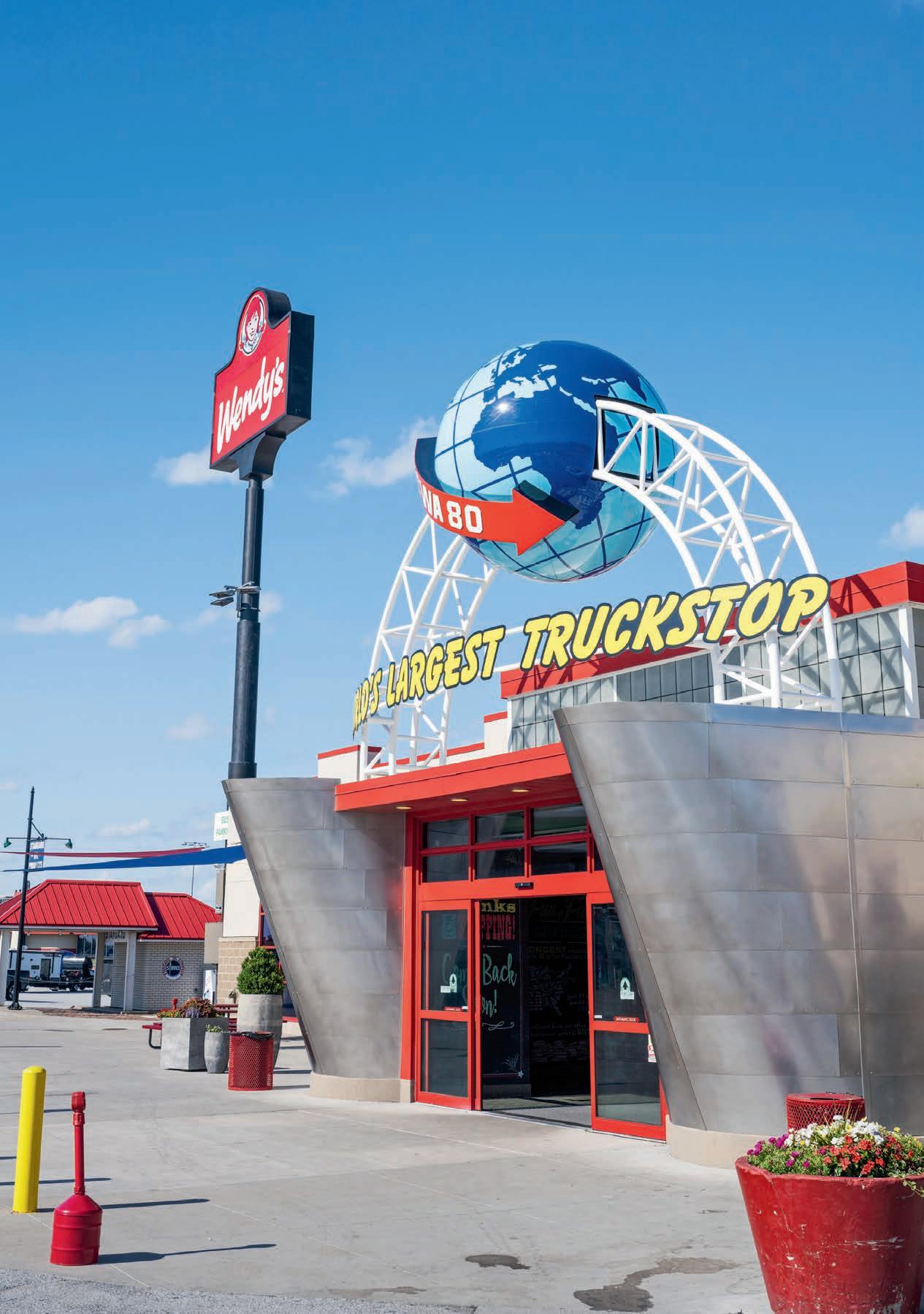
Just to go to the opposite end of trucking luxury was this old girl, found in the Iowa 80 Truckers Museum
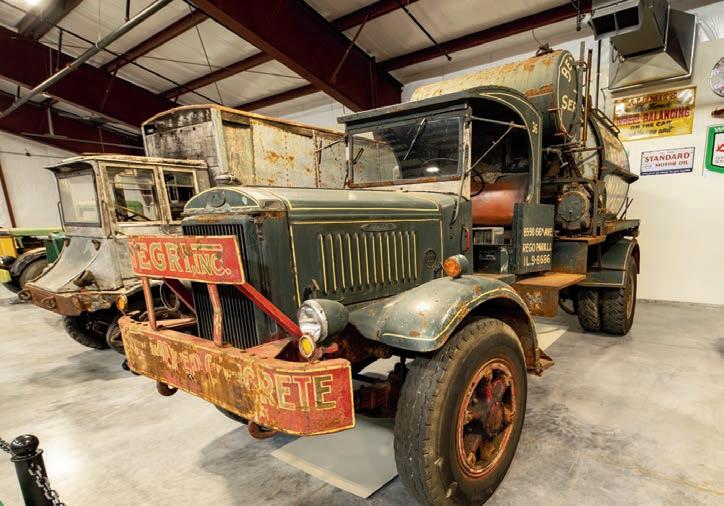
available courtesy of the Iowa 80 Pork Chop Cookout, it did not disappoint. It doesn’t mean I lied about the investigative stuff. I really was motivated to see how the length laws effected the lives of everyday truckers. I really wanted to investigate how the Americans can get away with not just decent sized sleepers, but in some cases extraordinary sleeper setups. I wanted to find out why.
locations as an Australian outback trucker would. So, as I said at the start, there was more to my trip than just the amazing shine applied at Iowa 80.
If I’m honest then, I would say this story is 90 per cent investigative journalism and 10 per cent truck show, although I will also be delving into all the activities that went on during the three-day Jamboree event. Let’s say its 25 per cent truck show and 75 per cent learning about the US length laws.

Big thumbs up to all the cool kids that posed up for a photo before rolling out on Saturday afternoon
It’s not like US drivers spend any longer on the road than the average Southern Hemisphere driver, but I was pretty sure they were not venturing into as many remote
However, I can’t write this without telling you about the massive Truckers Museum that’s on site at the Iowa 80 Truckstop. Let’s call it 35 per cent an expose on what decent bunks look like and 65 per cent about the show. But looking at all the images I took, there is only a few actual ‘sleeper’ photos compared to the dozens of truck show photos. I guess 10 per cent investigative journalism and 90 per cent truck show is probably more on the spot. Let’s go with that, OK? In that case I shall start with a bit of a roundup of the show.
It wasn’t all about the trucks in the show, the carpark and in this case the Motorhome Park was worth visiting. I caught up with Carol Smith, Doug Fetterly and Wolfie. Along with their 1987 R-model Mack that they use to tow their motorhome around


It wasn’t all about the low and large units. Working company trucks were involved and young Sean Roe picked up an award for the Kenworth he treats like his own
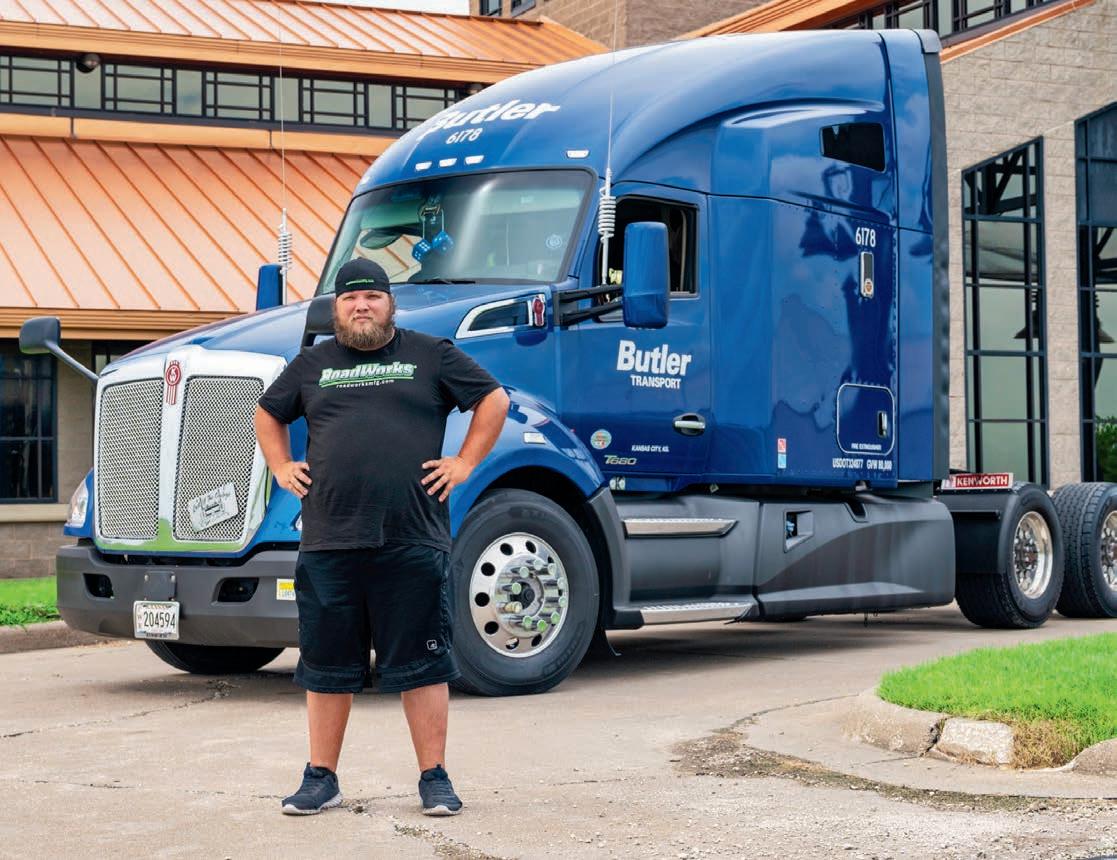
This was the 43rd annual running of the Truckers Jamboree at the ‘World’s Largest Truckstop’ and my second field trip to this Mecca of all truck stops. I know my memory is fading a little, but my take was that the numbers were down a bit on the previous trip I did.
gallon. For those not up on the exchange rate, that works out to be about $1.85 per litre over here. Pretty much on par with us.
You can never accuse the Americans of lacking in patriotism
When I broached the subject with a couple of locals they agreed and pointed out a lot of shows were down on numbers as the fuel prices were putting the trailer brakes on a lot of people’s travels. It is worth noting that US fuel prices were hovering around the $5 per
Regardless of the quantity, the quality of the trucks on show was still second to none. I spent a few days before the official showing watching drivers, their families and some regretful mates in, under and all over these flagship trucks, polishing the bejesus out of them.
One of the main things that distinguishes the Iowa 80 show from the likes of the Mid-America Trucking Show is that it’s predominantly packed with working trucks. Show quality working trucks, but still working trucks. This year’s line-up was no exception.
You can spend most of the day just wandering around the stunning line up of rigs in the competition area. If you happen to be a fast walker you will have plenty of time to wander among the regular truck parking area as well. When the Iowa 80 Truckstop isn’t cordoning off an area for the Jamboree, the place has parking for 900 trucks! Before you ask, yes, even with that many parks finding one at the end of the day is just as difficult as it is at Eastern Creek. Though not as many local blokes tend to drop their trailers and head home for the night.
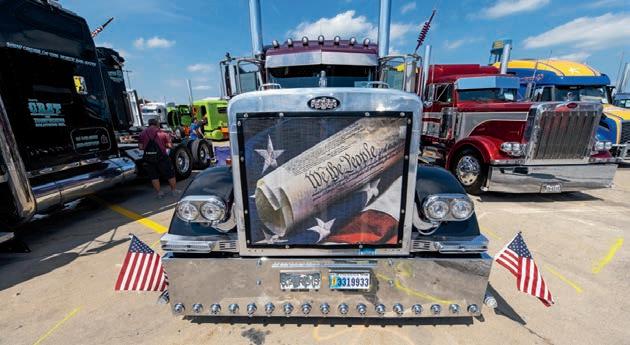
One of the nicest young blokes I met over there was young Mike Harbison. Having recently lost his father, Mike still made the journey to display his family’s legendary Mack trucks. They were packed full of character
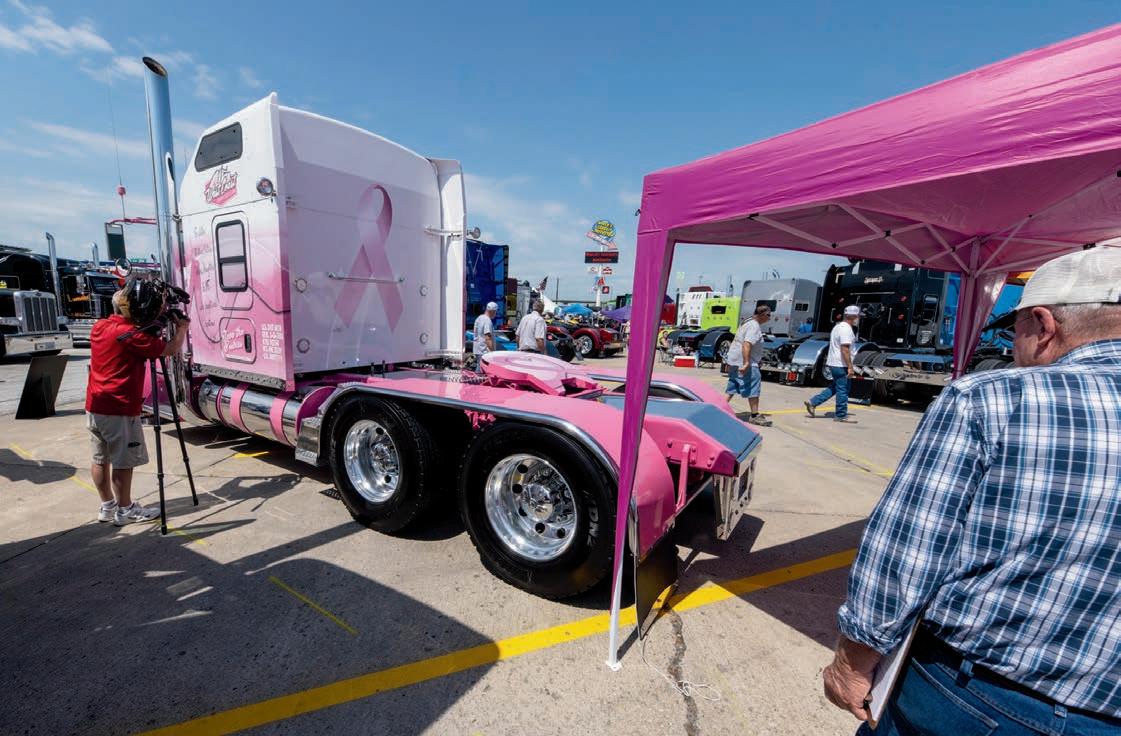
They take their judging pretty seriously over in the states. Even taking a film crew along to interview each driver

I didn’t just chase down Steve Landry because we rarely get to see the International LoneStars in Australia. I was also keen to talk to him about his bunk. Which, as you can see here, is no slouch
The inside of Carmen Anderson’s Volvo is closely guarded by her two guard dogs, Rodney and Otis. Once again though, this is an ‘average sleeper’ at 70-inches. Average?
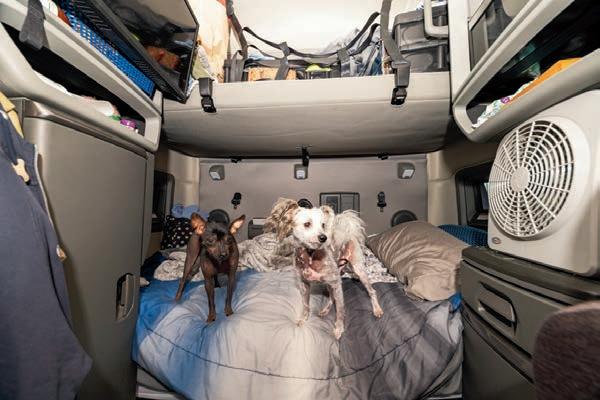

Just showing you this inside of another ‘standard’ sleeper. This time we are inside Eva Knelsen’s W900 Kenworth. Yep, 72-inch here. Imagine if we were allowed that

Along with the TV room the Iowa 80 Truckstop also has two dedicated movie theatres. Your 24-hour break can be done in comfort
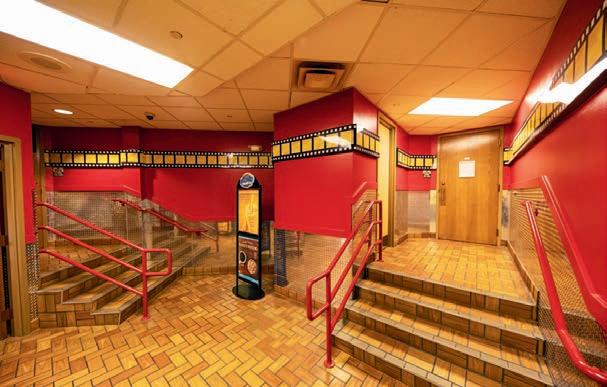
The Thursday and Friday night fireworks show is always a crowd pleaser, especially with the backdrop of such stunning trucks
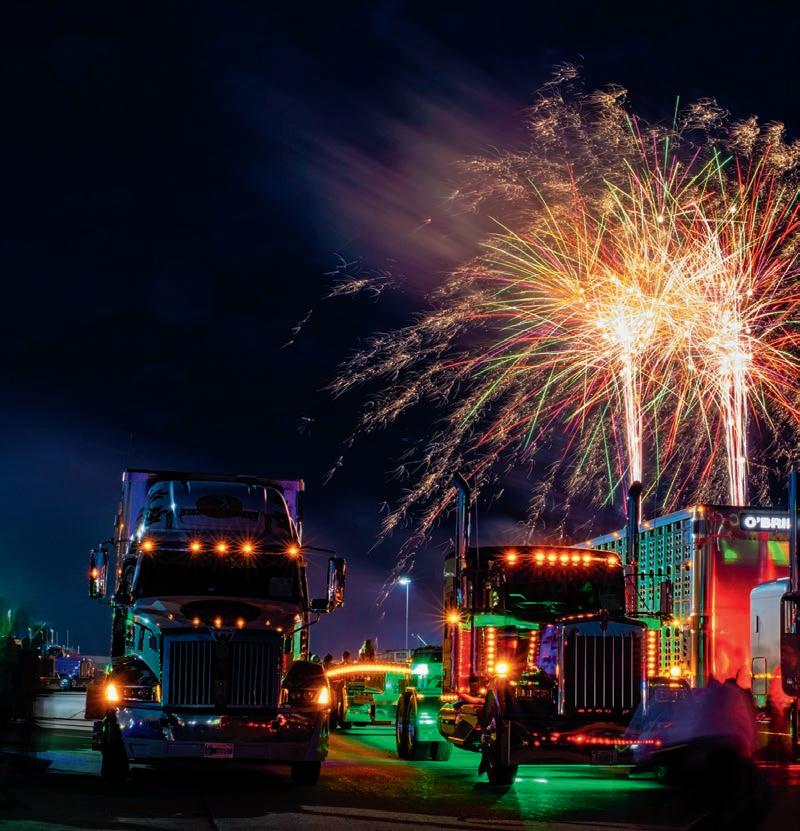
the end result is drivers can have a truck they can
Even the display trucks take your breath away. I don’t know how Trux Accessories expected to talk to anyone when they all just hovered around this stunning 1951 Pete
Yep, this is a working truck! A working truck where the boots obviously never get inside, but still a working truck
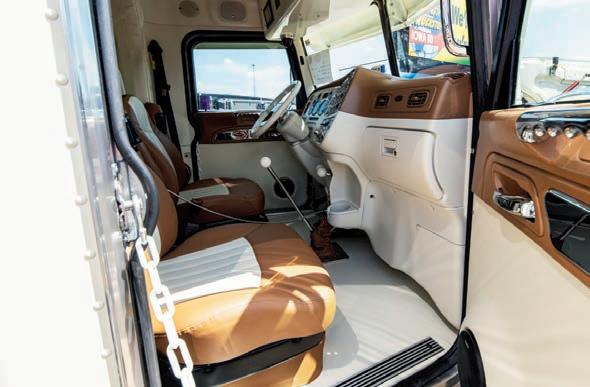
With such a big occasion the Iowa 80 team had recruiters on hand to pitch the truck stop as a great place to work. Here lovely ladies Cathie Lienen and Tina Turner (I’m not making that up) were looking to add to the company’s 1,100-plus workers over three giant truck stops
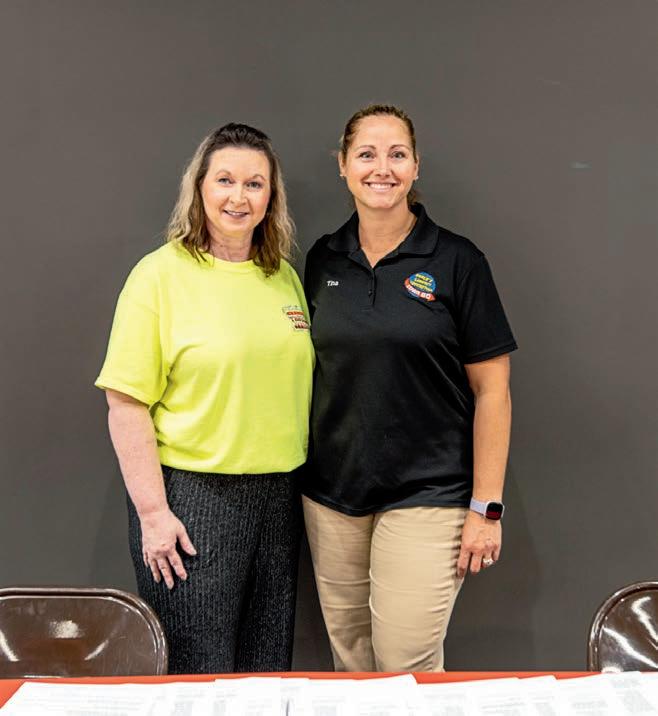
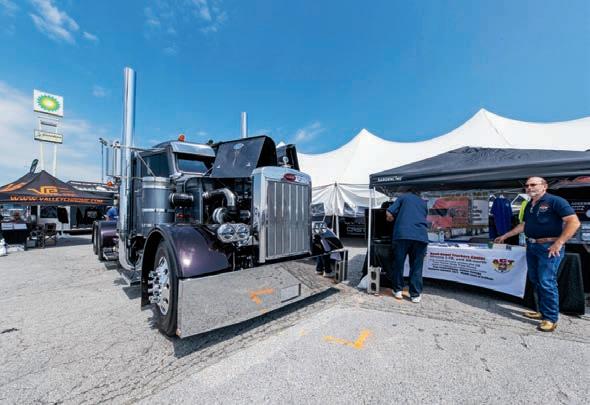

Once again, this is the standard of the trucks that just call in to visit the Iowa 80 Truckstop. This W900L was one of the coolest trucks passing through

Not only did I get to pose up Kim Jakes’ Freightliner for some fireworks photos on the Thursday night, she also just threw me the keys and sent me off in it

What happens when a chemist with a history in the fashion industry gets into the cleaning business. Bull Snot, that’s what
Just to give you an indication of how big this place it, the truck stop sits on a 220-acre block … or 89 hectares. That’s a lot in case you didn’t
gather that. It is a massive place. The main building, that’s the one that caters for around 5,000 daily travellers, is over 6,000 square metres and caters for all your needs. Not only that, but it also caters for the needs you didn’t even know you needed.
I was able to get a great feed at the Iowa 80 Kitchen. That’s the truck stop’s dine-in buffet restaurant. I was also able to get an extremely rich and oversized ‘medium’ sundae from the in-house Wendy’s. Then, before I went
down to the chrome shop to buy some chrome brake buttons and hood ornaments, I popped in to have a go on the world’s largest Pac Man machine. Turns out I’m as crap at Pac Man now as I was when it first came out.
All of this is under the main building’s roof and on the first floor. When you head upstairs in the main building you will find all the driver amenities. Chiropractor, dentist, gym, hairdresser, movie theatre, minister and a hell of a big laundry. Don’t get me started on the showers – OMG!
Once you leave the confines of the main building you have the huge Truckers Museum to entertain you. There is a plethora of classics under this roof, and I almost feel guilty whinging about us not having big enough sleepers after looking at the gear the Americans used to run across the country. There are some icons of US trucking beautifully restored in this massive museum.
Alongside all the stuff to refresh and revitalise the drivers you will find equal number of facilities to refresh and revitalise your ride. From a 24-hour service centre to a multi-bay wash facility. There are the certified CAT scales and even a multi-bay wash facility for your pet. It really does have it all.
For the past 43 years around early July the Iowa 80 Truckstop has blocked off many of the 900-odd parking spots and hosted the Walcott Truckers Jamboree. This year it
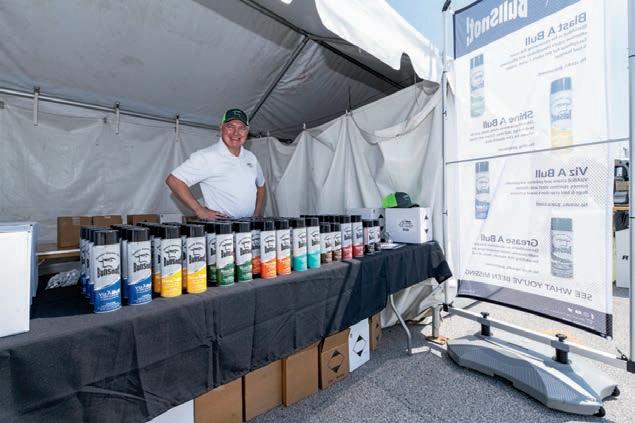
coincided with my investigative trip to the US. Lucky me!
As I mentioned this was my second experience of Iowa hospitality and, even with lower numbers, the three-day event was bustling. It kept me highly entertained with fireworks closing out the Thursday and Friday night activities. It got a little damp on Friday morning for a few hours, but it didn’t put paid to any of the intensely competitive Trucker Olympics, nor did it spoil any of the concerts that were organised throughout the entire event.
Truth be told, you don’t need to hear about it from me. You really should experience it. The local Mid-West warmth is worth the visit alone. Add in some amazing trucks and it is a great week away. Have a look through the photos and get a feel for the fun they put on over there when they host a jamboree.
Before finishing, I did say was doing some investigative work in the US and I was telling the truth. I wanted to know what they class as a decent sleeper setup over there. In Australia in seems any alteration to the length laws is a chance to put bigger and longer trailers on the road. Anyone wanting a decent sleeper needs either a master’s degree in permit interpretation and a bottomless piggy bank, or they can only tow a single and can’t compete in an increasingly aggressive industry.
We can tow 42-pallet super B-doubles, or pocket road trains, that seem to stretch out longer than a politician’s promise. However, we can’t put a bonneted truck, with a bullbar and a 60-inch bunk, in front of a 34-pallet B-double.

What did I learn over in the land of aircraft carrier wheelbases? I learnt a 60 to 70-inch sleeper is practically a given. What we class as a sleeper is here is basically a day cab over there. The reason being they really have no length limits on their tractor units. Their regulations are measured from the kingpin back. This puts the restrictions on the trailers
I had to snap this cool Kenworth on its way out. Strikingly similar colour scheme to some very cool Kenworths back here in Australia
Inside the 2019 International Lonestar’s average-sized 72inch bunk. What we wouldn’t give for that to be average

Where do old Macks go when they retire?
To a crazy American’s workshop where they end up like this
that are being towed rather than the overall vehicle length, like we have here.
The end result is drivers can have a truck they can live in.
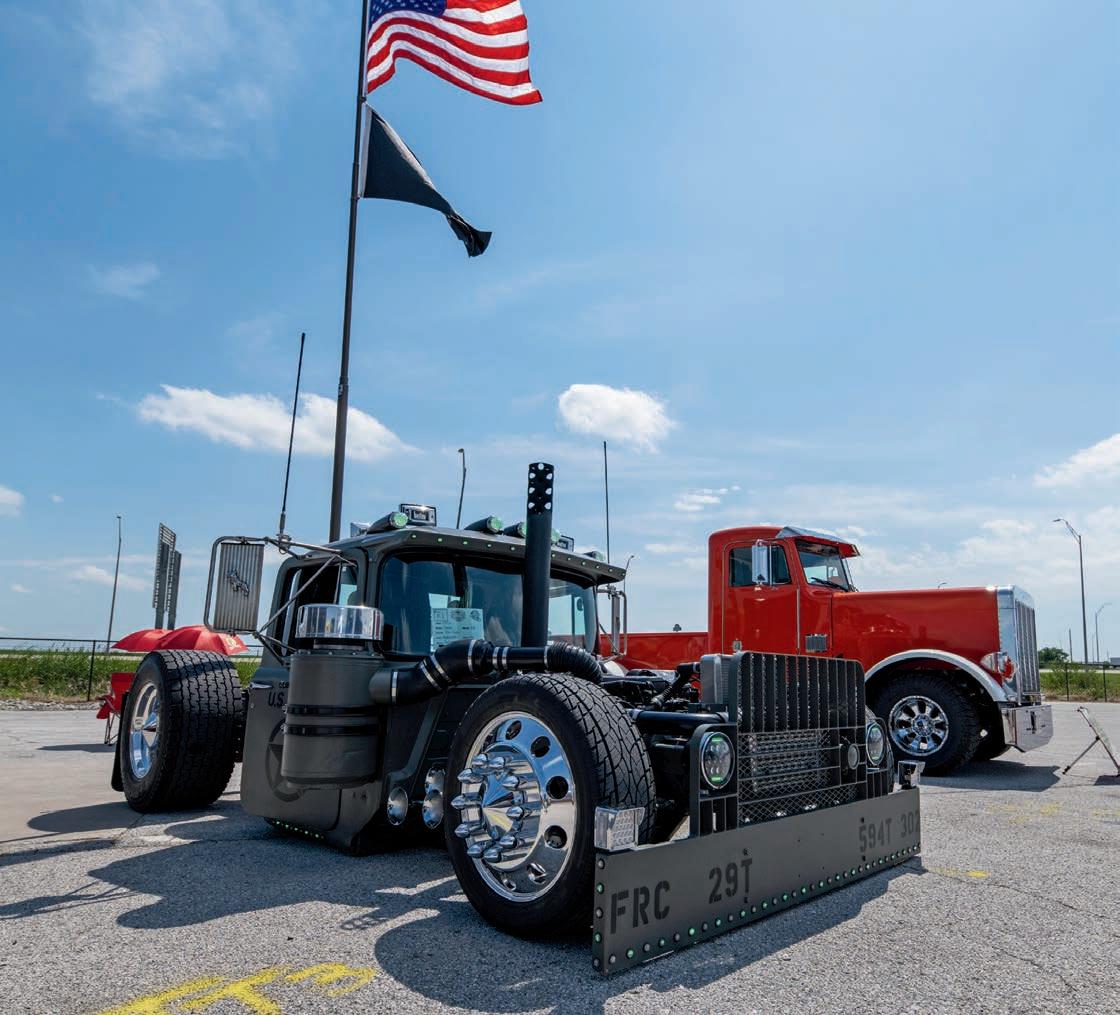
I know there are much smarter people than me making the decisions around truck lengths. I’ve never worn a suit, discussed dividends with shareholders nor ordered a Venti 7 pump vanilla soy 12 scoop matcha, or no foam green tea latte, while flying business class. I have, however, spent a lot of time on the road. I reckon that does allow me to have some insight into the situation.
It’s about time the decision makers appreciate how much of an impact confined spaces have on a driver’s mental health and fatigue. The advantages of a decent sleeper extend past the obvious things like more storage space and a larger area for fridges, microwaves and luxury items like that.
Think of the drivers that are regularly spending 10 to 12 days on the road. All that time on the road, away from home, can be
very isolating and, under current conditions, it is rather cramped.
When you pull up following 14 hours of driving and can separate yourself from that work environment, it is like a huge mental relief valve. That’s an indulgence that shouldn’t be restricted solely to trucks running west with road trains or those who can afford the time and money to navigate the complicated permit system.
I’d love to have a massive whinge about those that are tasked with deciding the working conditions of a job they have never experienced but you guys have better things to do.
Let’s just summarise it this way. The Americans have worked it out. If they can do it, surely we can.
Now go and enjoy some quality US iron, take note of the sleeper cab photos I did while impersonating an investigate journalist and let’s hope one day we learn from those bloody yanks.
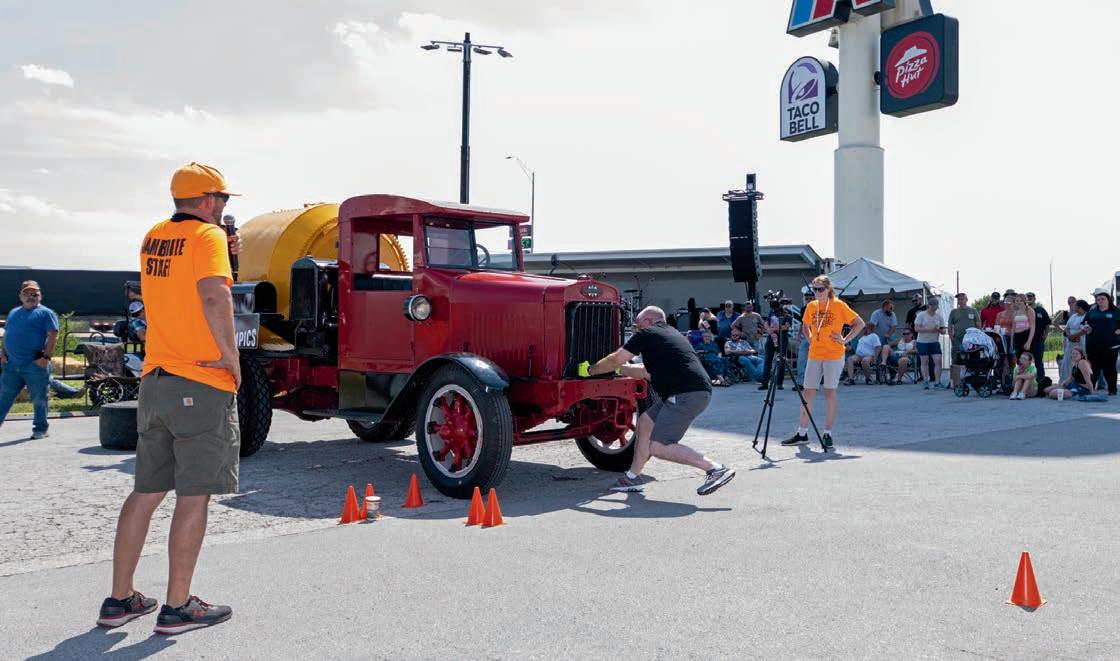
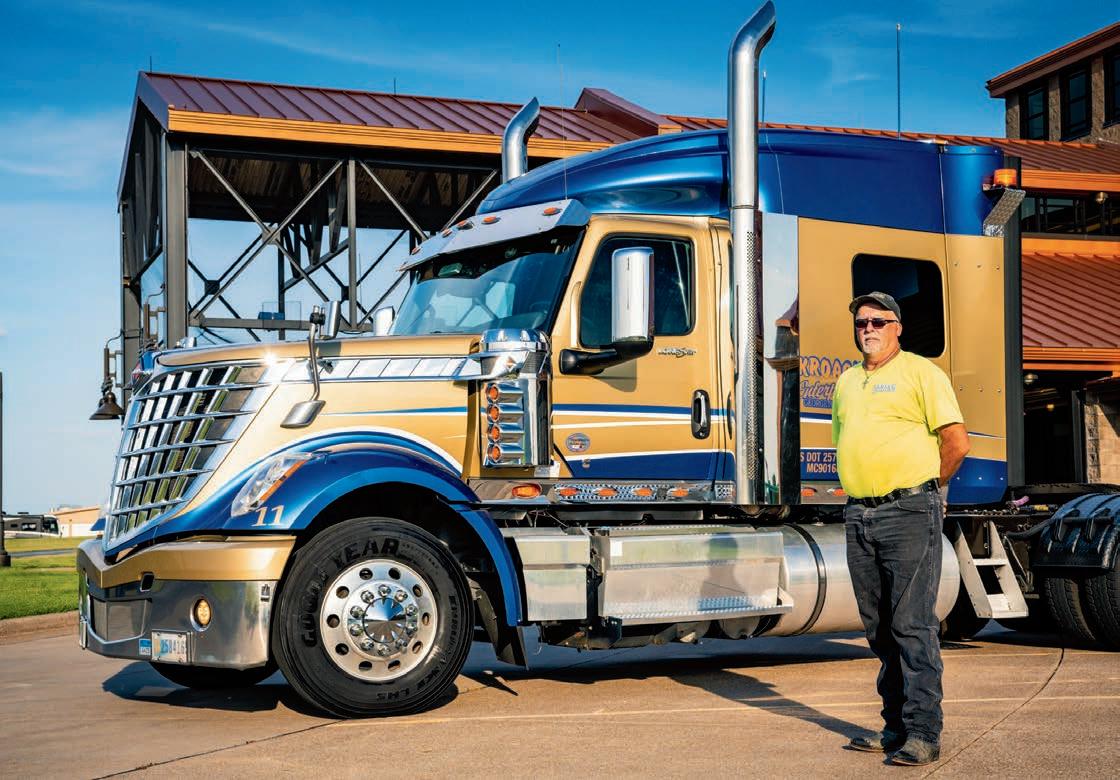 Steve Landry was happy to let me shoot his Lonestar, even happy to let me shoot inside it. It took a little more convincing to get him to pose with it, though
One of the glamour events of the Truckers Olympics. How far you can pull this old girl and how quickly? A few of them got her rolling pretty quick
Steve Landry was happy to let me shoot his Lonestar, even happy to let me shoot inside it. It took a little more convincing to get him to pose with it, though
One of the glamour events of the Truckers Olympics. How far you can pull this old girl and how quickly? A few of them got her rolling pretty quick
 Words & Images | Warren Aitken
Words & Images | Warren Aitken
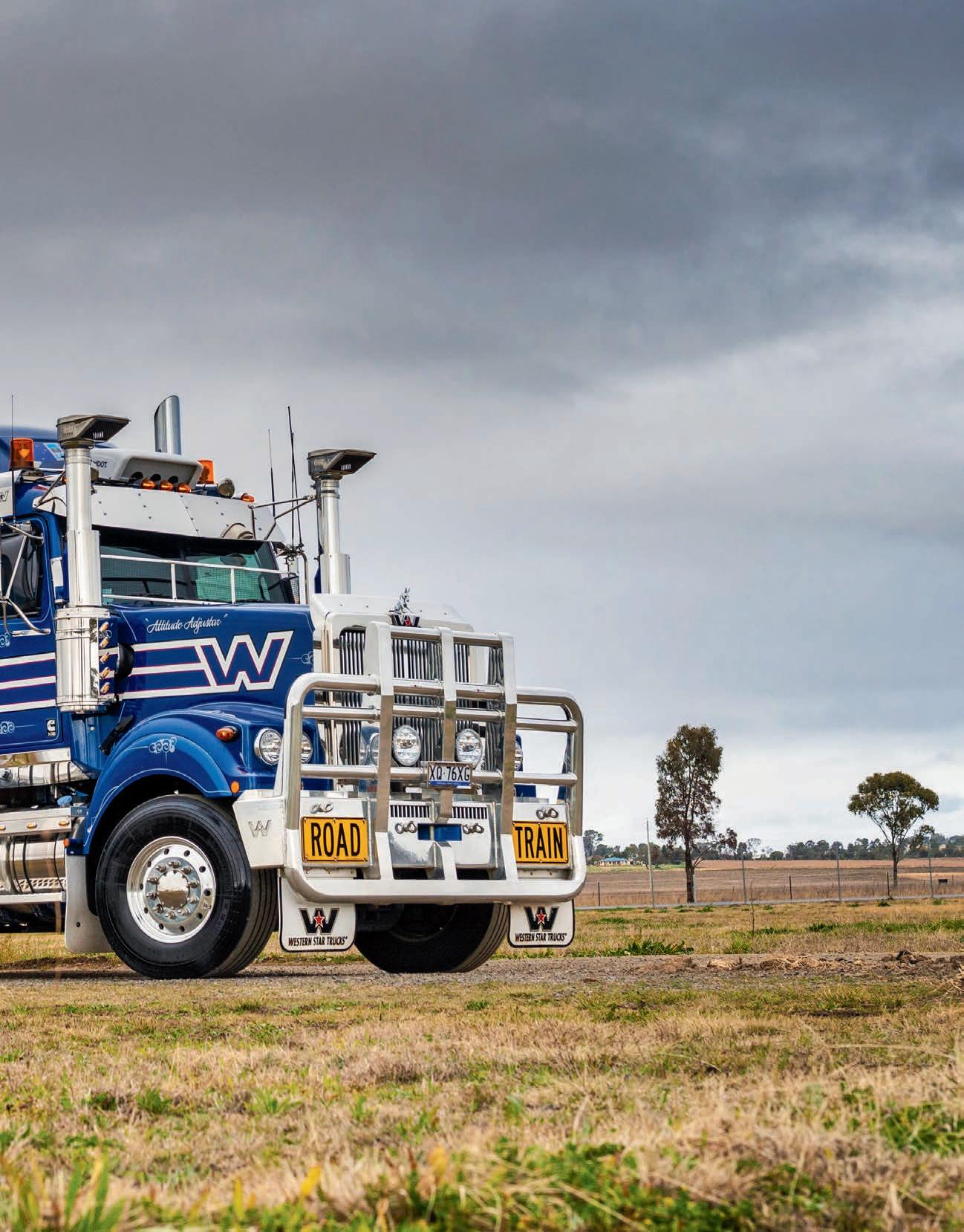 It was lucky number 11 for Brenden Cook of Dalrymple Landscape Haulage, who is the proud owner of the last of a limited edition set of Cheyenne Western Stars
It was lucky number 11 for Brenden Cook of Dalrymple Landscape Haulage, who is the proud owner of the last of a limited edition set of Cheyenne Western Stars
Welcome to number 11 of the fantastic, limited edition Western Star Cheyenne series trucks – number 11 of 11 actually. They are a throwback to the birth of Western Star trucks here in Australia and a tribute to the ‘built tough’ trucks that have been gracing our Australian roads since the early ’80s.
I’m going to start today with a little history lesson because the Western Star story is far from a simple one. It was known as a Canadian truck, though it was a division of a US company. It is now owned by a German automotive conglomerate, although, for almost a decade, it was actually an Australian-owned truck manufacturer.
Western Star Trucks Australia built Australia’s first RTL (road transferable locomotive) that could run on public roads and also jump on the rail network and pull up to 900 tonnes. In the 1980s you could get customised packages with native Americaninspired names. Hence why we are here. Let’s take a closer look at Western Star’s history.
In 1967, White Motor company added the White Western Star brand to its existing White and Autocar resume. The idea was to operate
the headquarters from White’s existing Ohio base but build the trucks up in Canada at a new factory in Kelowna, British Colombia.
While the new Western Star trucks would incorporate influences from the current White models, like the Road Boss, it would also use features from the Autocar stables. The first Western Stars were built around the Autocar cab. The idea was to build a lightweight, tough as hell truck that could withstand the rugged conditions of the USA’s west coast and the unforgiving backblocks of Canada. The trucks rapidly grew a substantial following, earning respect for the solidness of their lightweight build.
This is where things get a little tricky and, if I haven’t pieced this together correctly, I would love someone to fill in the caps. In 1980, White Motor Company, which had started the century as a sewing machine company, filed for bankruptcy. In 1981, Volvo bought the majority of the company. The Western Star division, however, was not included in the White sale. In fact, it was bought by a couple of Canadian energy resource companies, believe it or not. They purchased the Kelowna plant and the Western Star range.
 Brenden Cook (left) and his brother Mitch stand proudly with the new addition
Brenden Cook (left) and his brother Mitch stand proudly with the new addition
Jump ahead a couple of years and, back home here in Australia, White had quite a foothold in the Australian market, especially with the Road Boss and Road Commander. However, the sale of the company saw the White production facilities closed down and all that equipment and expertise left floundering. This abundance of skill and ingenuity saw the creation of Western Star Trucks Australia.
A large group of ex-White workers, including the former head of White Trucks Australia Bob Shand, put their skills and knowledge to use and began assembling and distributing Western Star trucks out of Brisbane’s Wacol factory. The trucks were built from kits sent from Western Star’s Kelowna plant and then assembled here in Australia. The countries’ first Western Star was completed in March of 1983 and went to work in July of 1983.
Now we start getting closer to what makes this amazing truck so much more relevant. When Western Star first began here in Australia, it was mainly producing two models – the 4864 and 4964 Heritage. These particular trucks were offered with customised packages, named Apache, Comanche, Chinook, Mohawk, Pawnee, Navajo and Cheyenne.
Jump to nearly 40 years later and Western Star is about to launch its new exciting range of heavy vehicles that will see the end of the traditional 4800 and 4900 series – the ones that started it all. On such a momentous occasion the brains trust at Western Star Australia decided to acknowledge and celebrate an icon of Australian trucking.
It was decided that it would produce a limited-edition range of ‘Cheyenne’ Western Stars, with the throwback Cheyenne Western Star signage, custom steering wheel, badging and interior. The company may have started in Australia with just the 4800 and 4900s but the Cheyennes would be available in Western Star’s full range, including the 5800 range and the bigger-than-Ben-Hur 6900 series.
Organising a limited edition like this isn’t easy as Western Stars aren’t built here in Australia anymore. Let’s jump back into our history lesson again. We were up to 1983 right, when the first Aussie built Western Star hit the road? While Western Star was building a solid reputation here in the southern hemisphere, ironically for being a solid truck, over in Canada and the US the company wasn’t doing so well. In fact, by 1991, the company was in major strife.
The two big cheeses at Western Star Trucks Australia, Terry Peabody and Bob Shand,
The ‘Attitude AdjuStar’ heads out of the Allora yard on Monday morning, ready for another week of big loads and trying to maintain that Western Star shine

arranged to buy out the Canadian parent company, turning the Canadian truck brand into an Australian Truck enterprise.
A year after the purchase it was decided to shut down the plant in Brisbane and, with the addition of several Australian design applications, they would produce Australian bound Western Stars out of the Kelowna plant, along with all the other worldwide orders.
For the next eight years this was where all Aussie Stars would get shipped from, until Western Star Trucks Australia was sold to DaimlerChrysler in 2000 and became part of Freightliner Trucks. By 2002, the production and distribution of Western Stars moved from Kelowna in British Columbia to Portland, Oregon. Then, in 2015, some of the Western Star range was also being produced from Daimler Trucks’ North Carolina plant.
That’s about it for the history lesson, though we should note that, in 2020, Western Star Trucks Australia was purchased by international automotive retailer, Penske Automotive Group. At this point in my story, it is a significant change as now I no longer have to keep typing out Western Star Trucks Australia, I just need to type out Penske.
With everyone caught up and aware of the scale of the company, you can appreciate how difficult it is to produce a limited-edition commemorative truck. Penske Australia wanted to acknowledge the long history of the Western Star trucks in Australia before the new model release. What better way than to go back to the Cheyenne packages that were
available on the original Heritage models.
The Penske salesman contacted a lot of its customers to inform them of the upcoming Cheyenne trucks and deposits flowed in. The problem was the ‘Limited Edition’ release would become even more limited. With Daimler gearing up for the new Western Star range there was only a select number of slots on the company’s production line. Turns out there would be only 11 spots available for the Cheyenne tribute trucks. This is where I would add in one of those sad face emojis that younger hipper people would do.
Now we can start focusing on the fantastic rig you see before you – the Dalrymple Landscape Haulage 4964 Cheyenne, owned by Brenden Cook. As mentioned, it’s number 11 of the 11 Cheyenne Stars.
Cook has been a Western Star man for most of his life. Firstly, through his role in the parts allocation side of the industry, then later in his life as a transport owner and driver.
While trucks have always been a part of his life, he hasn’t grown up solely in the driver’s seat. His father, Eric, and family had trucks but only as a means to an end. They were sawmillers and logging contractors in the New South Wales’ Northern Rivers area and used trucks to cart their logs.

“Dad was a very old school trucker; he ran a lot of old tough Macks,” Cook recalls, adding: “I used to do some driving for dad when I was younger.”
Cook’s older brother, Mitch, left school and
Meet Justin ‘Donk’ Donpon, the young driver that gets the privilege of steering the new CheyenneAnother load goes on the Big AB triple and another week on the road for Donk. He has the perfect truck for the job
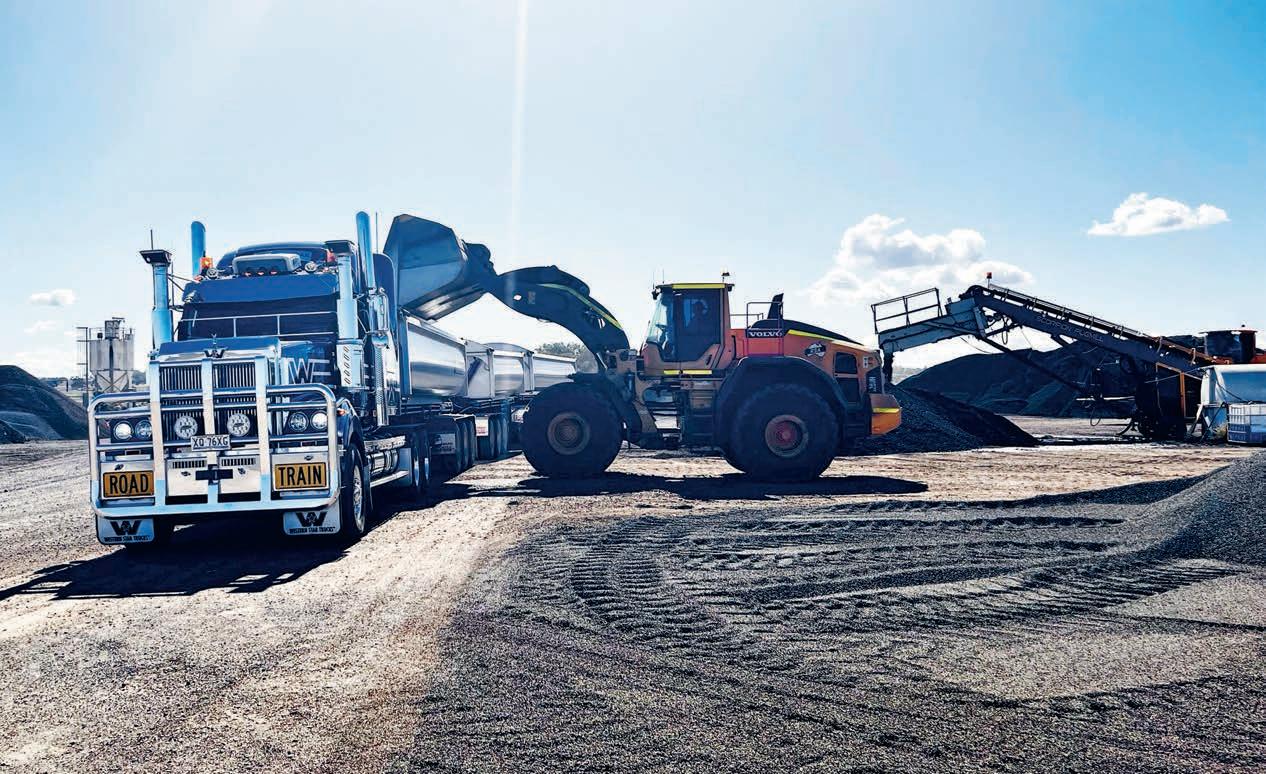
The Cook family: Brenden, his son Jackson and his wife Wendy with the new star and one of the family’s recognisable silver Western Stars
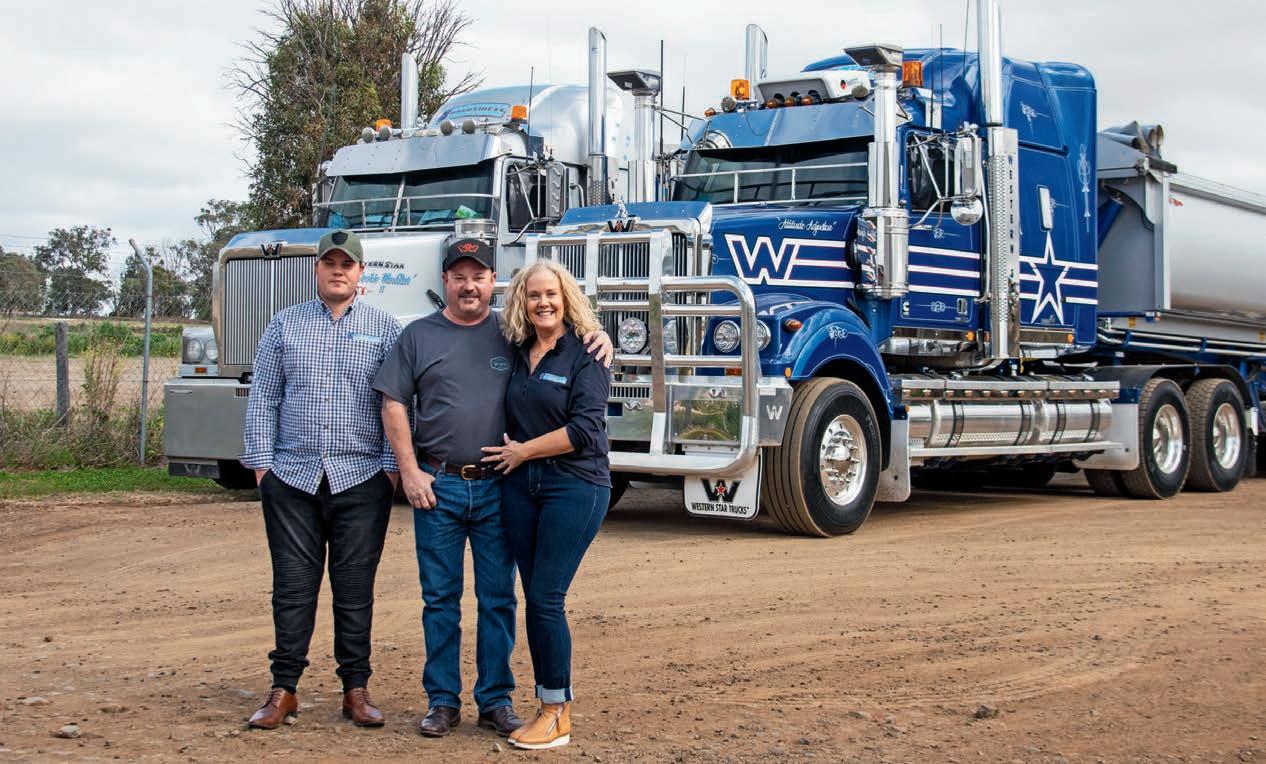
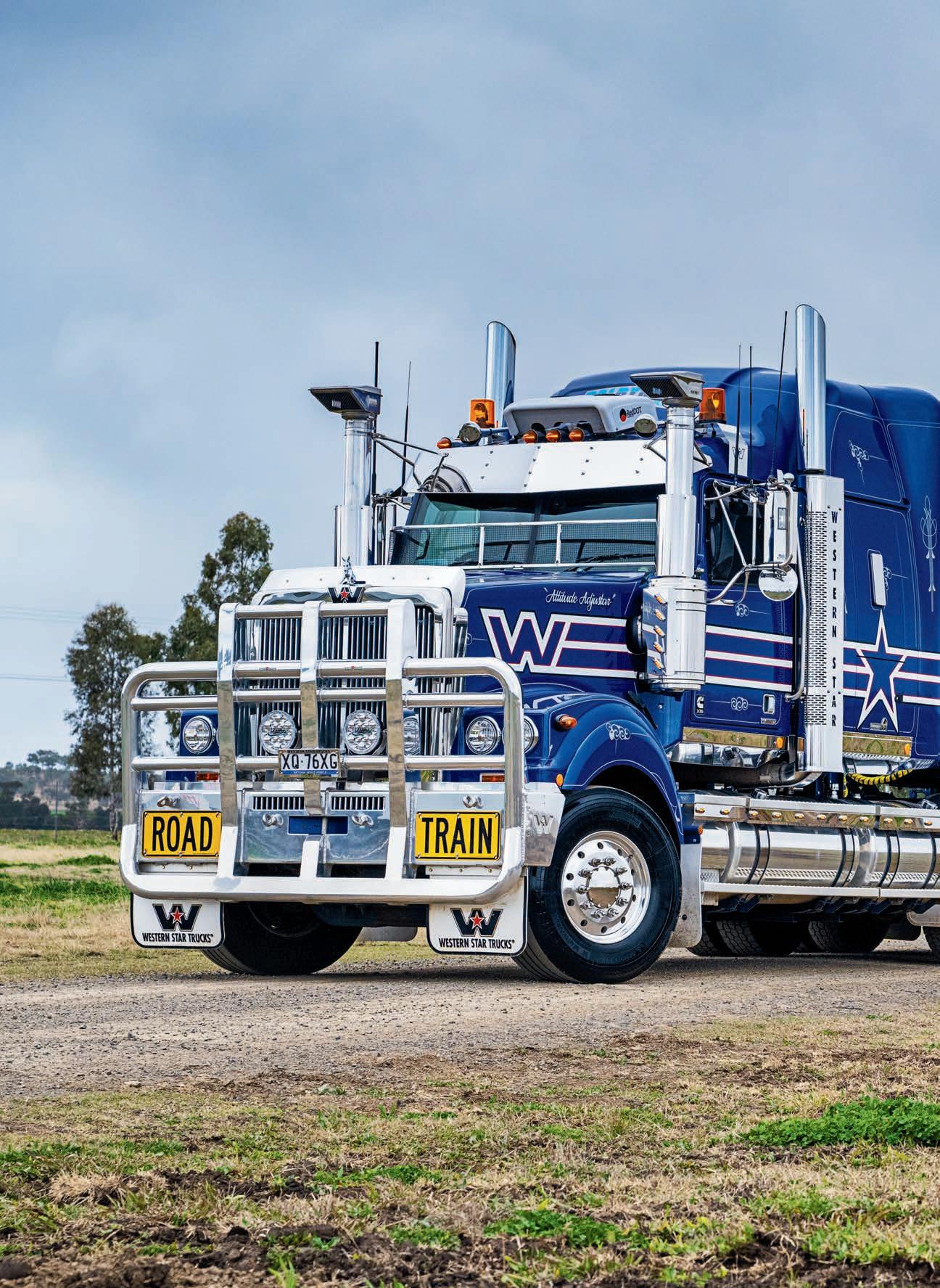
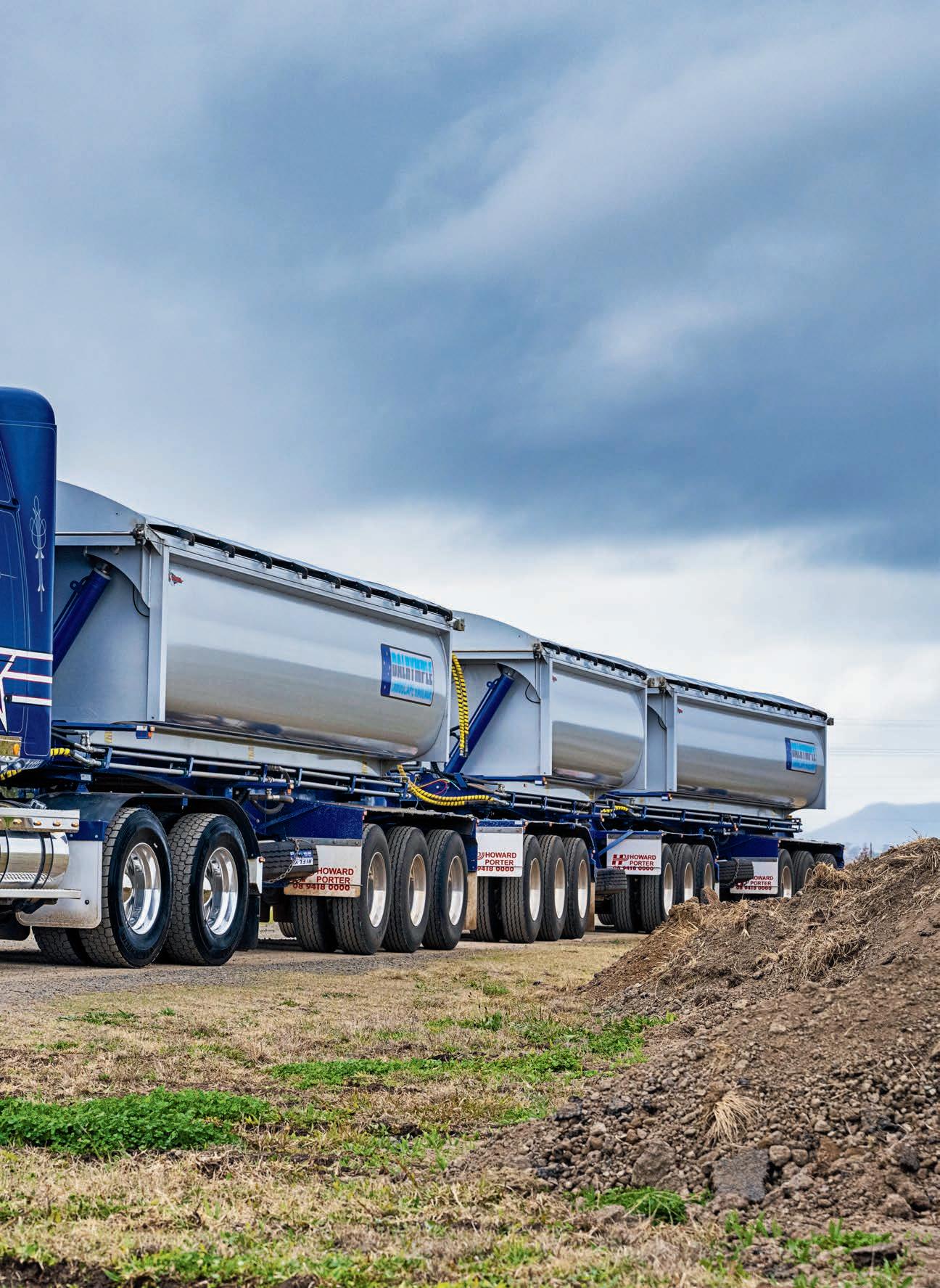
Donk is the guy that and he loves it
Did we mention Brenden’s project truck? This stunning Heritage Star was meant to be a restoration job but it’s still out there working
A little added donkey decoration to recognise the man behind the wheel of the new Star– Justin ‘Donk’ Donpon
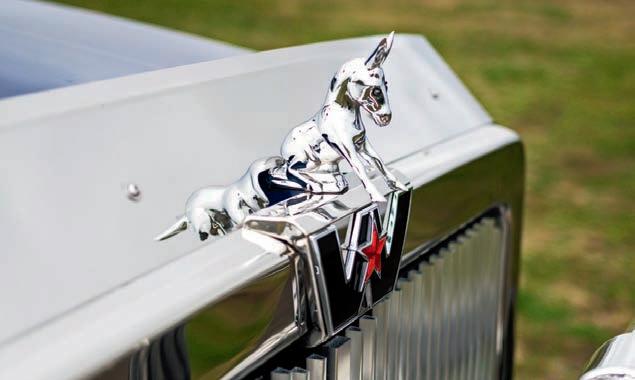
followed the truck driving route, although he went into carting stock rather than timber.
Brenden on the other hand followed neither his dad or brother, instead he took on a role working in parts allocation when he left school, getting to know the behind-thescenes side of the transport industry.
This area of work would see Cook form his affiliation with the Western Star brand as he took on a parts role for the Western Star dealership in Toowoomba, eventually heading up the parts and service department when Brisbane Truck Centre was built in Rocklea, Brisbane.

Working so closely with clients and
technicians, Cook was able to appreciate the workmanship and quality of the Star brand.
“They are a very well-built truck. You open the bonnet and everything is there, easy to get at,” he says.
His role in the company also gave him the chance to spend some time behind the wheel to appreciate more than just the truck’s practical advantages.
In 2006, after a decade of working in parts and servicing, an opportunity arose for Cook to buy his own truck.
“The construction industry in Brisbane was booming and they couldn’t get enough truck and dogs,” he explains.
“So, I decided to put a truck on the road.”
Cook bailed up his old friend and Western Star icon Errol Webber and set about speccing up his first truck and dog tipper.
“I didn’t want to just do what everyone else was doing, I wanted it to look a bit special to attract a good operator,” Cook says.
“Something people would want to drive.”
Seeing a truck and dog tipper back in those days that had a big bumper, shiny tanks, drop visor, air intakes – well, it just wasn’t the norm. Add in a stunning silver paint job and Brenden’s first truck set the benchmark, not just for his trucks but for a lot of the local tipper trucks.
A month after Cook put that first truck on the road, he also took on a new role himself.
Leaving the Western Star uniform behind and with a good operator behind the wheel of his shining Star, Cook began a position with Arvin Meritor as the commercial vehicle aftermarket account manager.
This role would see him looking after clients in northern NSW, Queensland, Northern Territory, Papua New Guinea and New Zealand. As if the new job wasn’t busy enough for Cook, he was also reaping the rewards of the effort he had put into his first ever truck. The silver Western Star wasn’t just eyecatching, it was also business-creating.
Within two years he had grown to three trucks and, by 2010, his business, Cookhaul, was running five trucks. With mounds of work and his regular day job seeing him all over the world, often with multiple phones ringing, something had to give. Cook opted to throw himself into the world of trucks full time.
By this point his Peak Crossing-based company in southeast Queensland was running five truck and dogs as well as a prime mover and deck widening quad axle low loader set up.
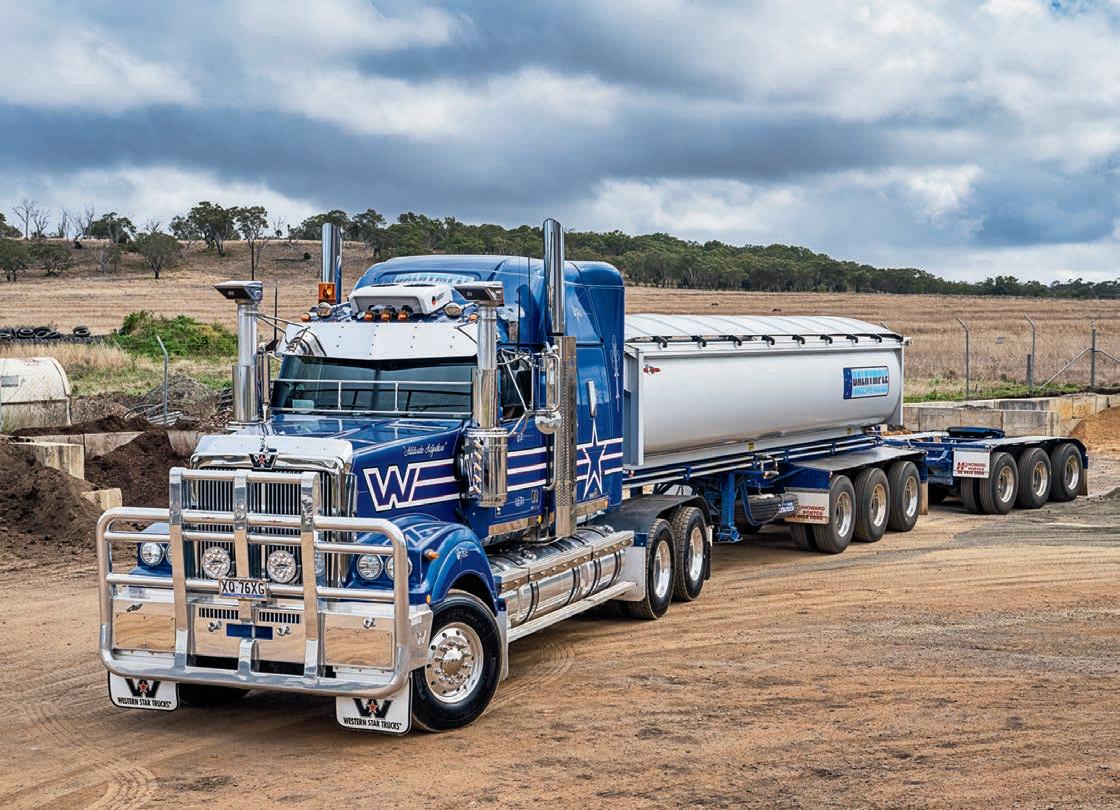
The business survived the booms and
busts of the fluctuating construction industry on the back of the solid Western Stars that ageless Errol Weber kept sending Cook’s way.
However, in 2012, six years after he first started Cookhaul as a side gig, Cook decided it was time to get out of the rat race and scale back. He built a house up in his old stomping ground of Allora in the Southern Downs and aimed to settle down.
Brenden sold off CookHaul’s established contracts and its supply agreements, as well as a couple of the truck and dogs, and moved up above Cunninghams Gap to quieten down. Yes, time to settle down a little, more time at home, a much more relaxed lifestyle, time for his lovely wife Wendy and their son Jackson to see a bit more of him – all those cliches awaited Cook and his family.
Unfortunately, Cook only ‘slowed down’ long enough to move house. His attempts to take it easy were hampered by the fact his trucks looked good.
“People were booking us because our gear looked clean and professional,” Cook explains.
The Dalrymple Landscape yard makes for a great spot to grab some shots of the new Cheyenne Star before Donk heads west to grab his other trailers
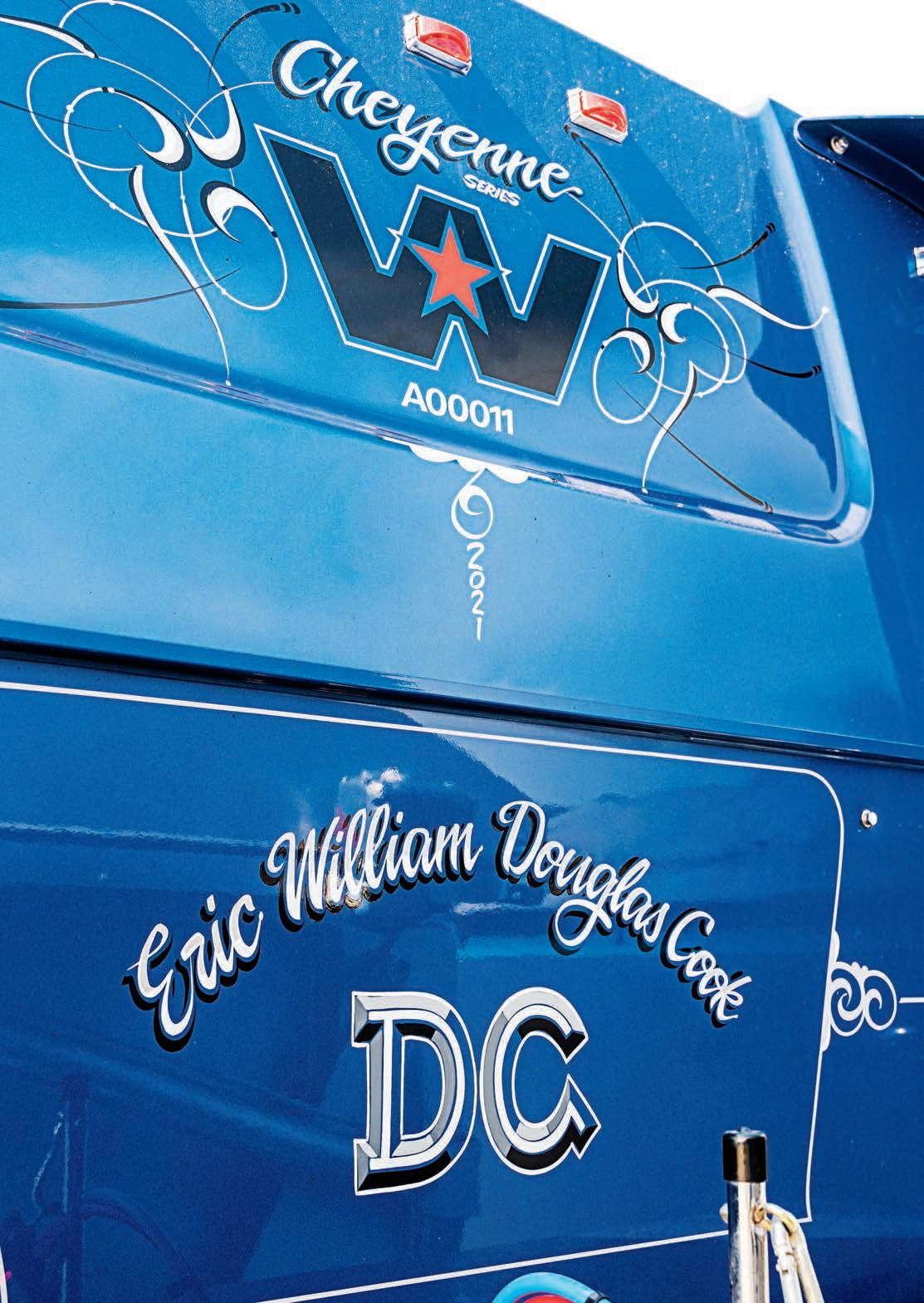
He found himself working with long-time mate Tony Roche. This meant not just Cook’s truck and dogs were flat out, but Roche’s units were as well. Next thing you know there’s a road train getting added to the Dalrymple Landscape fleet, followed closely by Cook’s first AB Triple. Let’s not forget that, as well as the contract work, Dalrymple Landscape Supplies was started from its Allora base.
Cook was doing a terrible job of ‘slowing down’. While the number of trucks in the newly named Dalrymple Landscape Haulage was kept at a minimum, the size of the ones he was adding were huge. I refer to the road train and AB-triple. It was a necessity though.
“Truck and dog drivers are harder to find this side of the hill,” he says, “so we started running AB-triples as there were more road train drivers and they were getting more work done.”
There are still a couple of truck and dogs in
the Dalrymple fleet of four, but the main focus is on running the AB-triples. Which leads us to the fleet’s latest acquisition.
“I am always talking to Errol and he knew I was looking for another setup,” Cook tells me.
“So, when these Cheyennes were being talked about, he let me know and I was straight onto it.
“I had said to Errol if they are going to be numbered could I get number 11 as that’s my lucky number. As it turned out they cut the orders off at 11 and I got that one.”
The 4964FXT is a big truck for a man that left the city to ‘slow down a bit’ but Cook is lucky enough to have a good man behind the wheel, not just looking after the truck but getting the most out of the big girl.
“’Donk’ is the guy that drives it and he loves it,” Cook says. With its AB-triple in tow, the truck carts all manner of product. Currently Justin ‘Donk’ Donpon spends his weeks over
Each Cheyenne Star comes with special artwork and limited edition number on the back of the cab. A tribute to Brenden’s father Eric Cook was added to the rear wall of the Cheyenne, too.
The Heritage models are just a classic-looking truck. Brenden’s Western Star roots meant he couldn’t pass up the opportunity to add one to his fleet when this one came up for sale

in the Western Darling Downs region, living out of the Star’s 54-inch bunk. Along with all the extra storage of the custom Cheyenne interior, Brenden had the truck fitted out with an RTE sleeper air, microwave, fridges … all the necessities. With the big 4900 series wheelbase and the Cummins X15 motor underneath, the Cheyenne Star really hooks into its work and has impressed Cook.
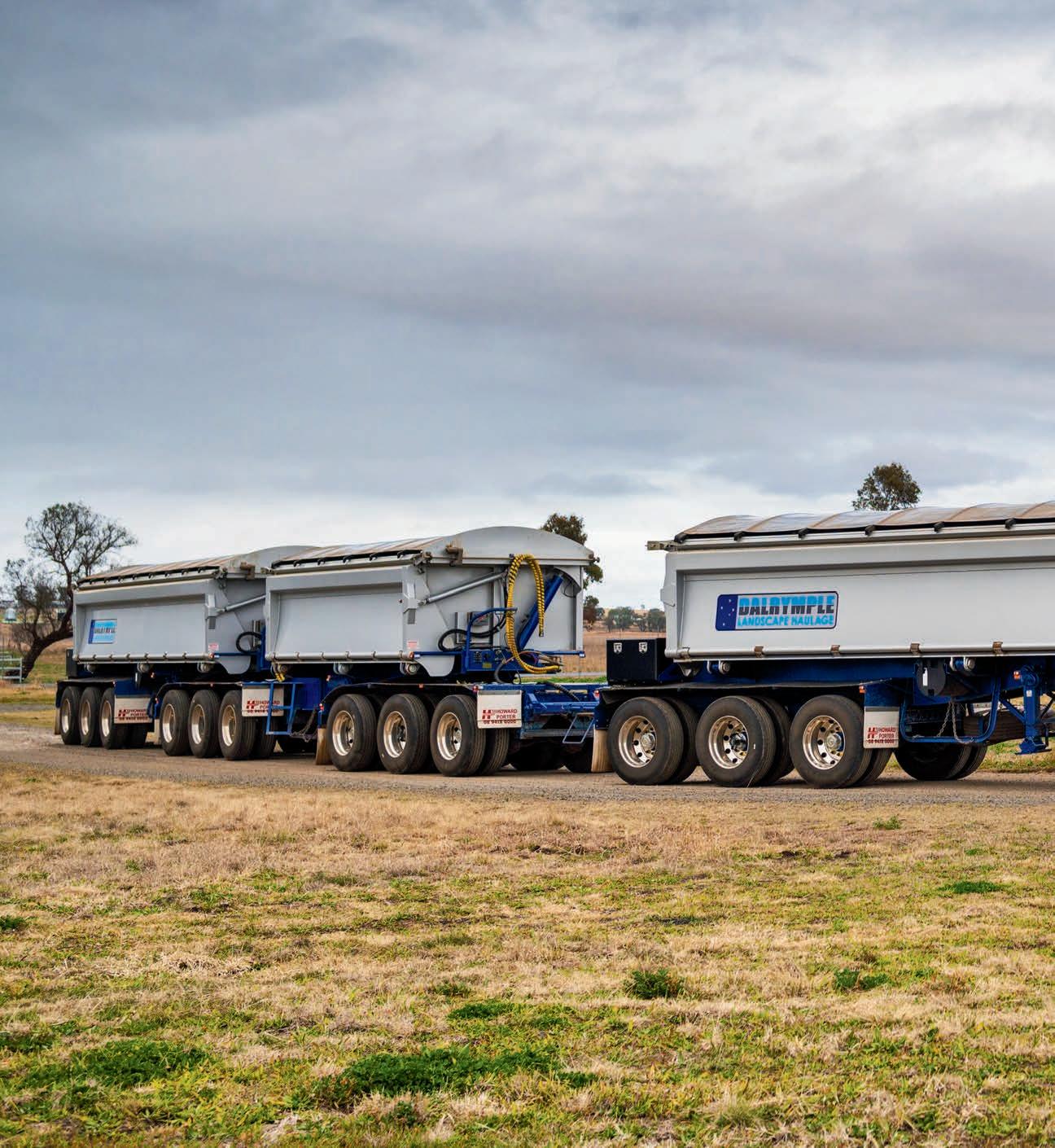
“Like any new truck there’s always a few minor teething issues but it really is a great truck,” Cook exclaims.
“It’s not in my traditional silver, though. When they first talked about the Cheyennes they were only available in the traditional blue or maroon. But I really like the look.”
Before I sign off and let you all enjoy perving at this sexy Star, I think a special
Cook has been a man for most of his life
congratulations should be awarded to Cook. He started a trend with his very first Western Star that he has managed to continue throughout the ownership of 17 trucks, 13 of which were brand new Western Stars. That trend is a term known as ‘nesting’. No that isn’t a reference to clucky first-time mothers, it’s the act of accentuating a word inside a word. For every truck he has named, Cook has
managed to ‘nest’ the Western Star name.
His first truck was ‘Cookie MonStar’. That was followed by ‘SilverStar’, then ‘WincheStar’, ‘GangStar’, ‘Hasta La ViStar’, ‘Rock MobStar’ and on it went. It culminated in the new Cheyenne – ‘Attitude AdjuStar’.
It’s no easy feat, so well done on your creativity Cook and well done on your latest ‘Super Star’.
Rather than go with standard colours for his new AB-triple side tippers, Brenden Cook opted to raise the bar again. The whole unit looks on point
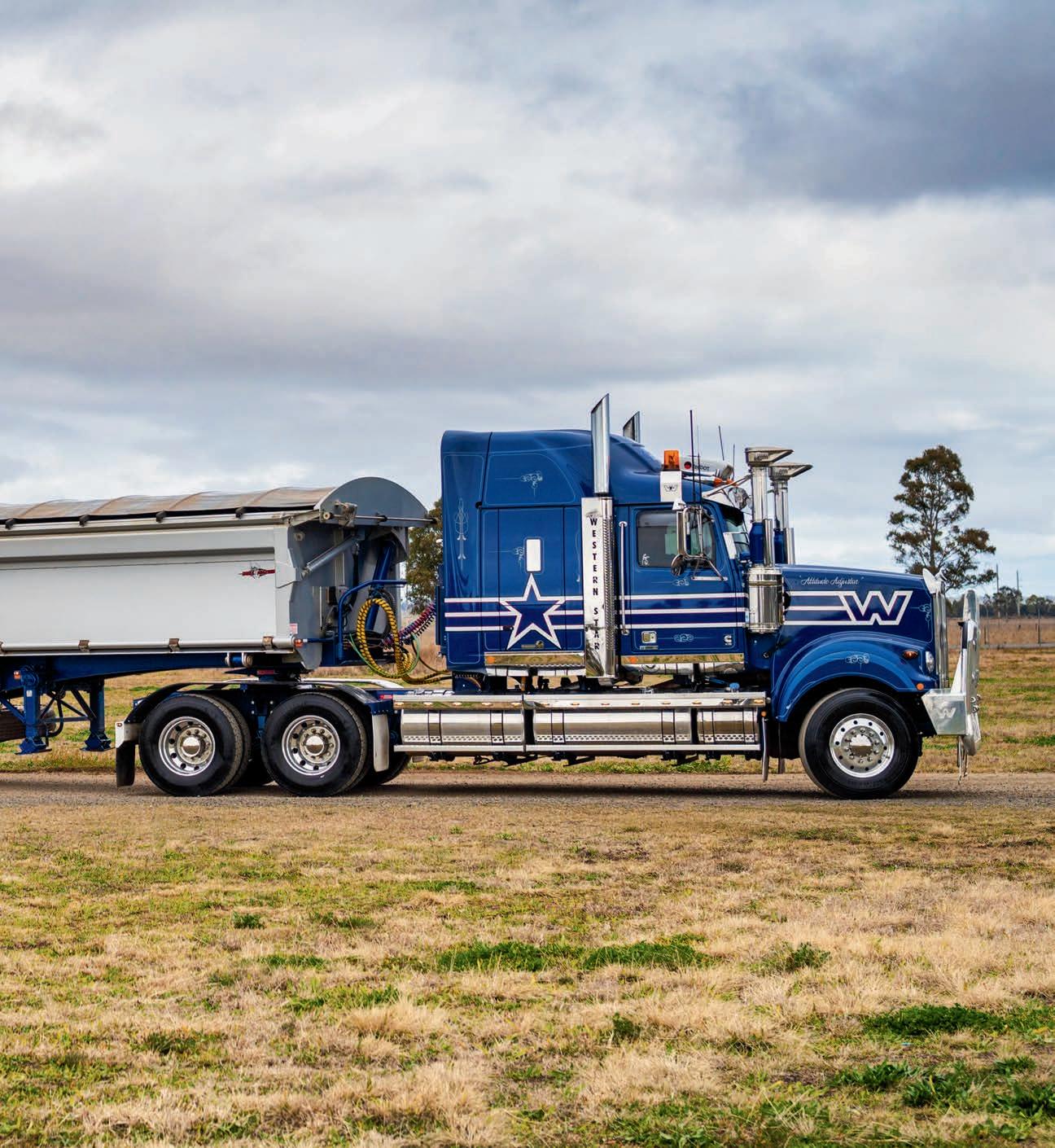
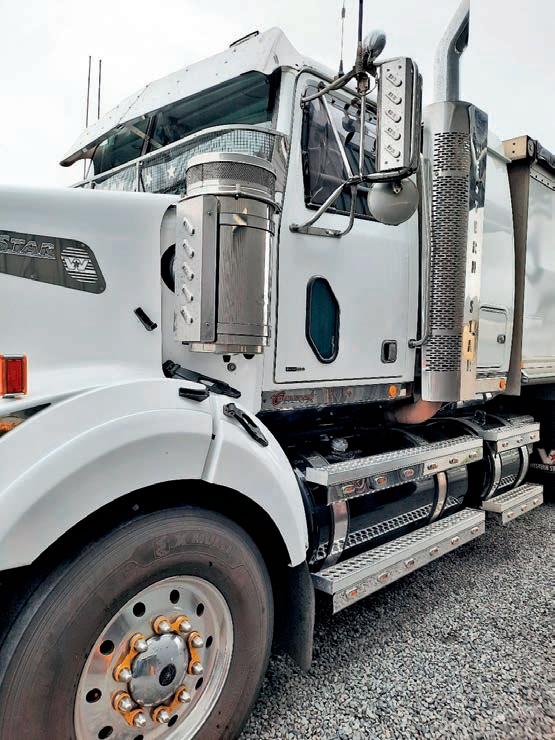
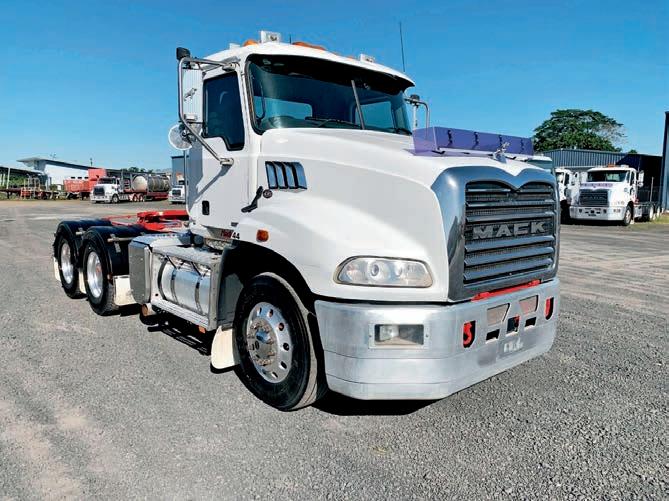

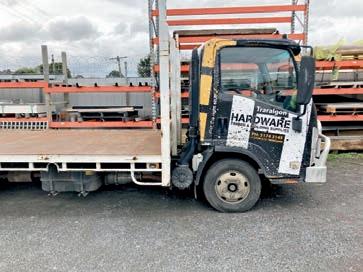



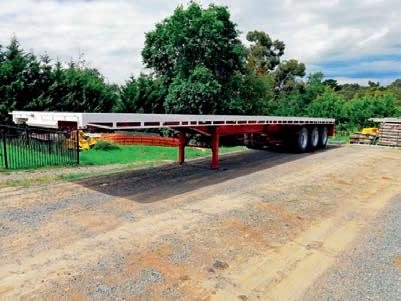
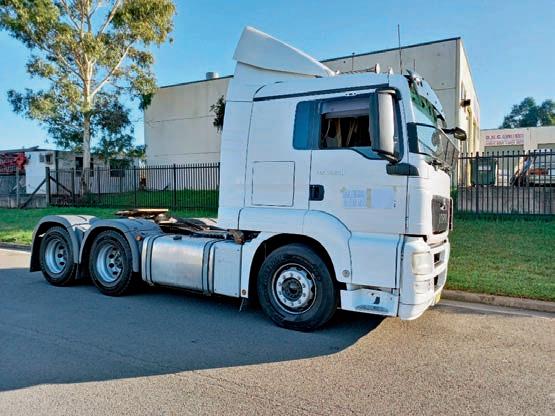
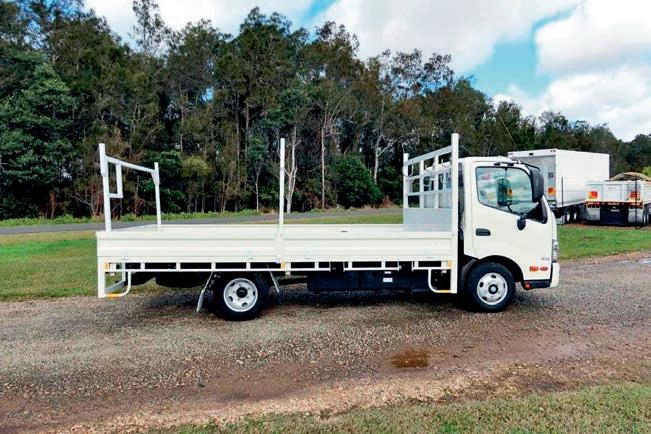

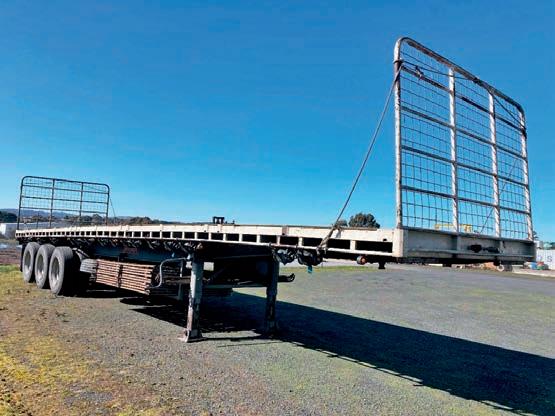



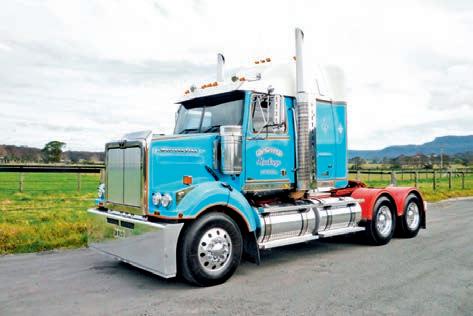
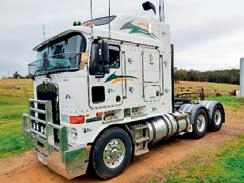
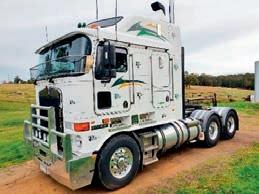
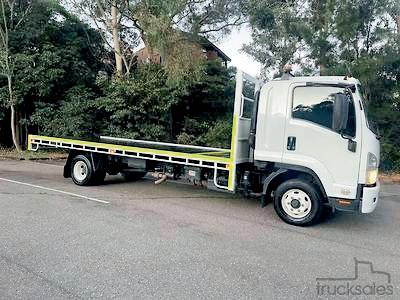
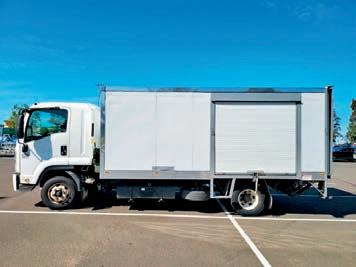



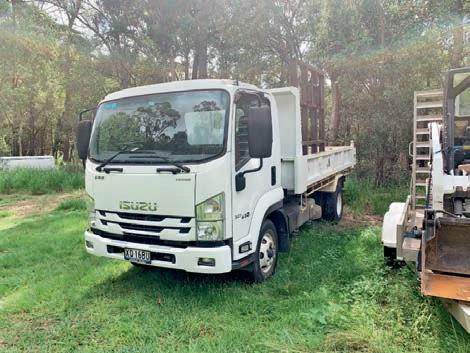
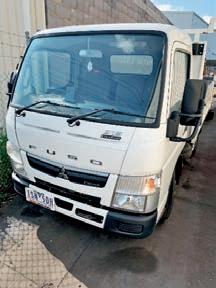


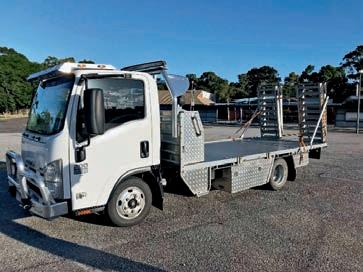

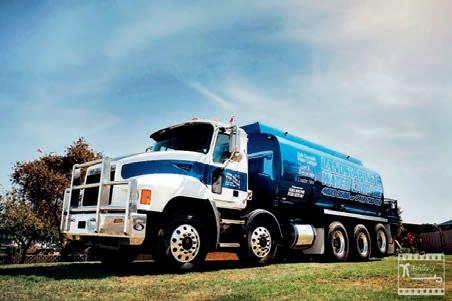


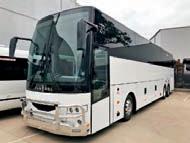
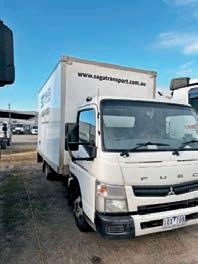

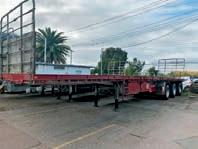
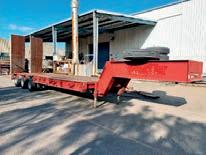
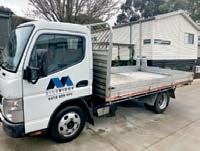
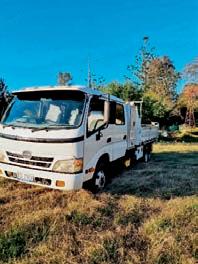


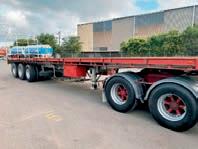
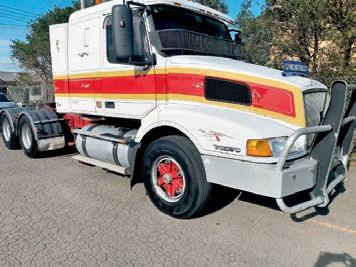
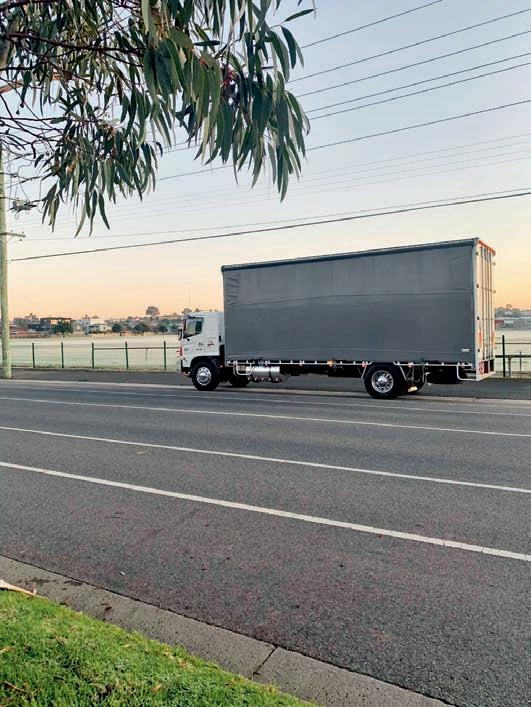

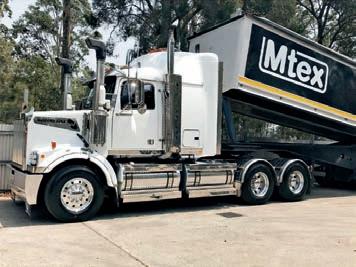
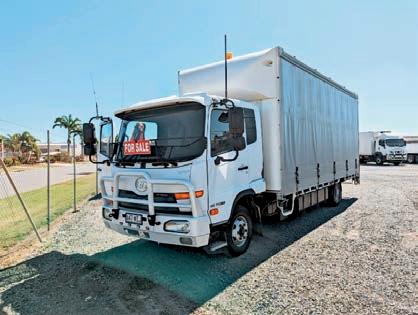





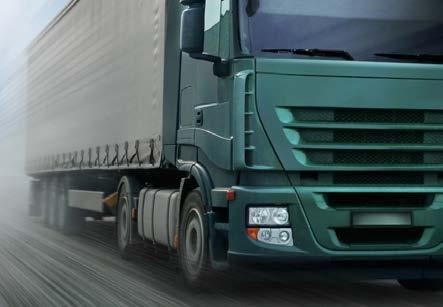
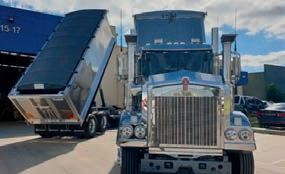

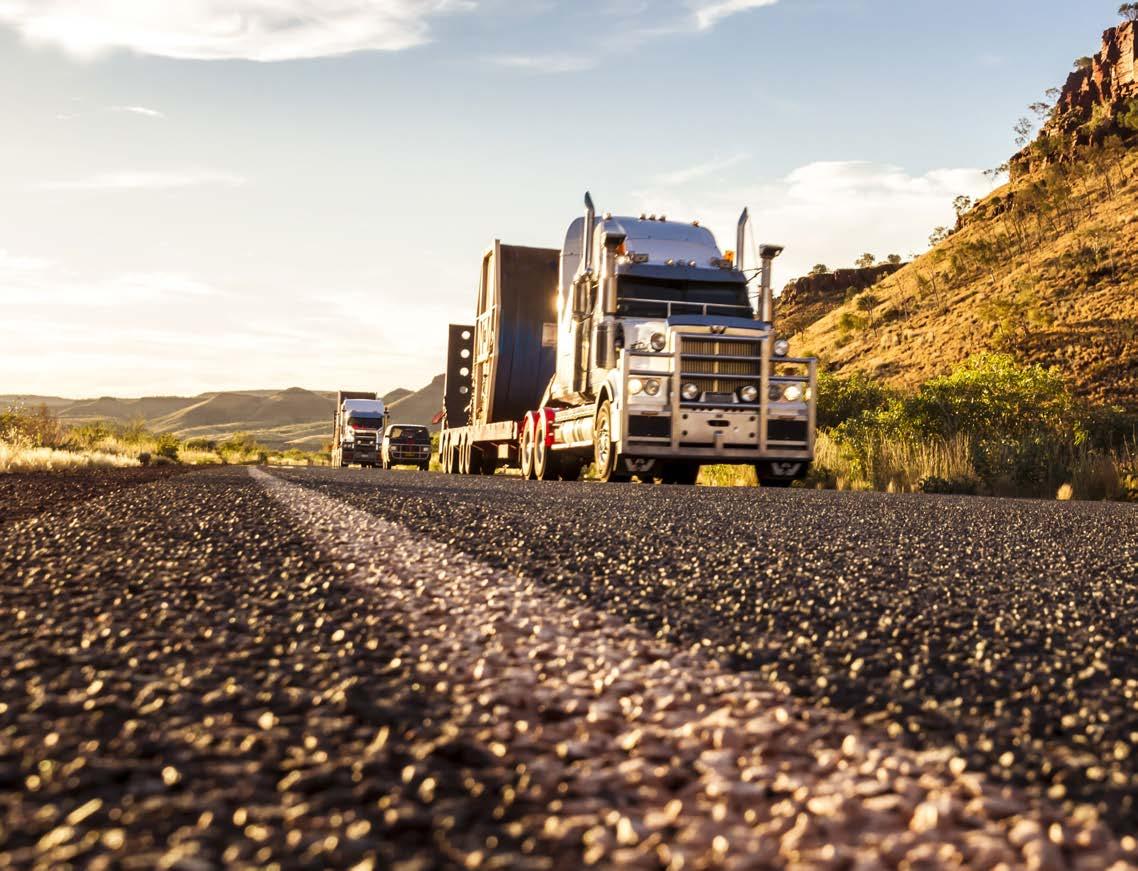


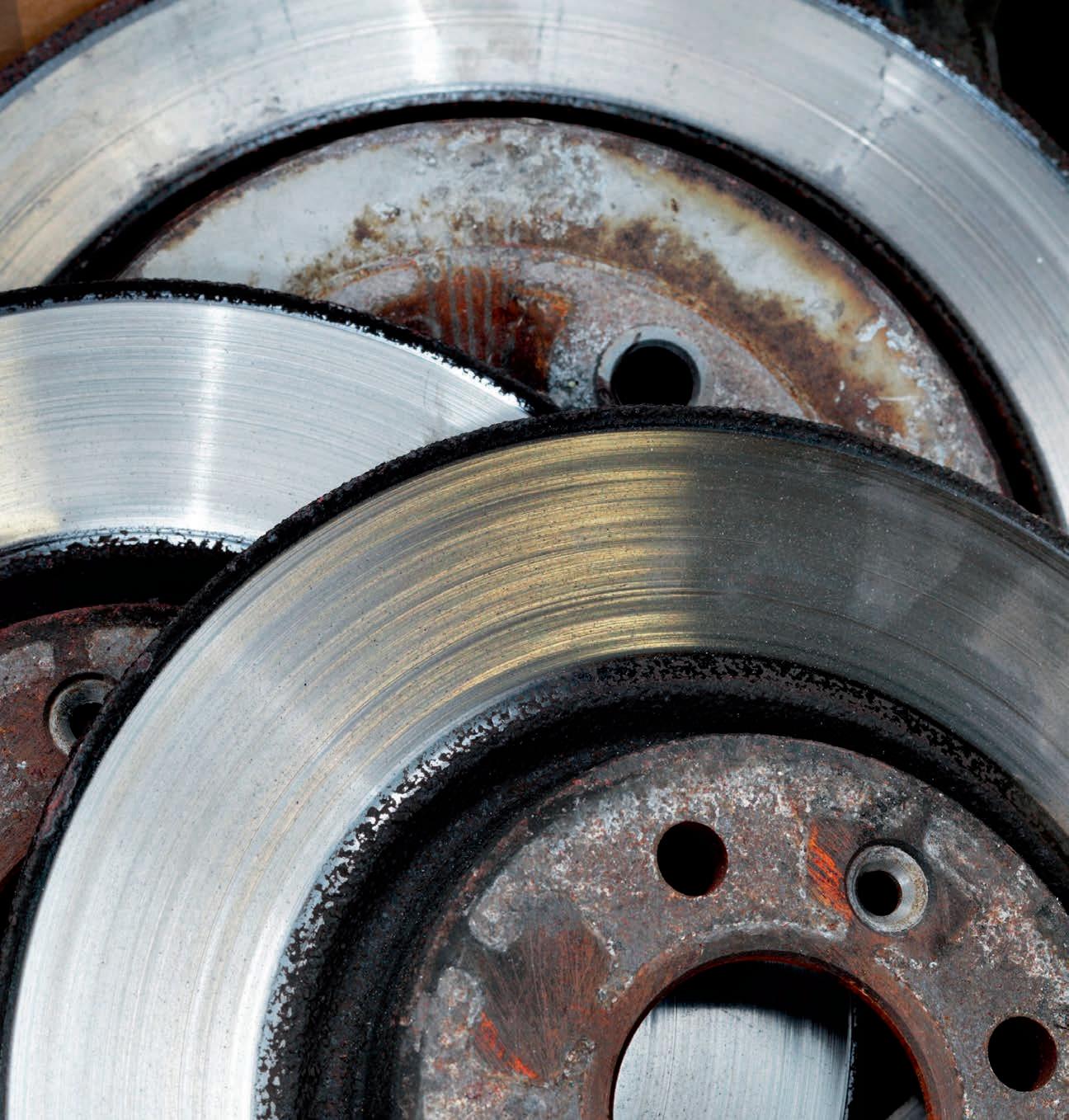


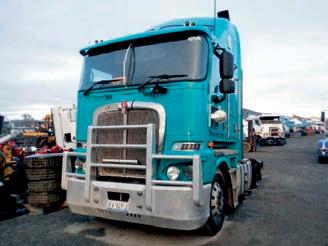



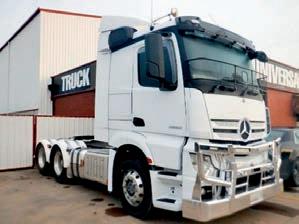
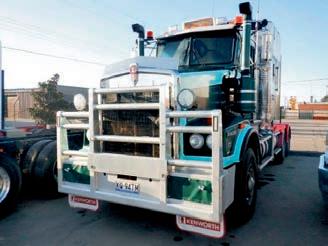
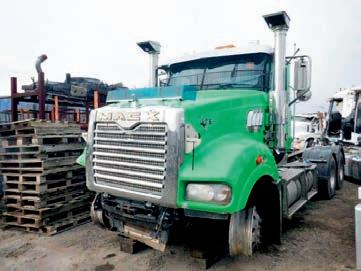
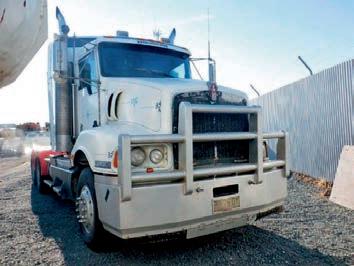
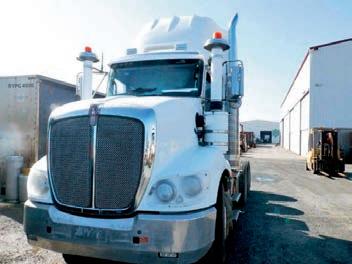

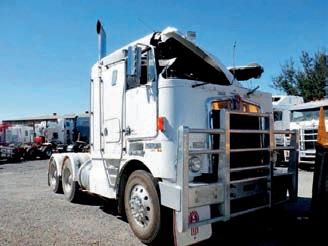

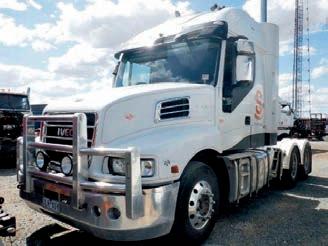
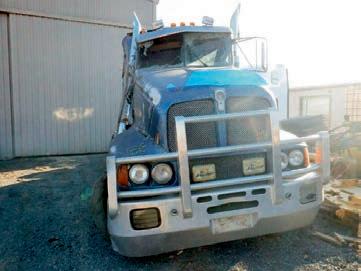


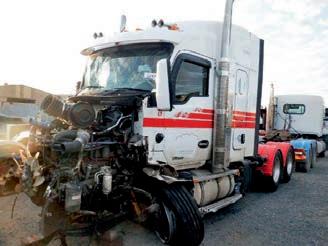
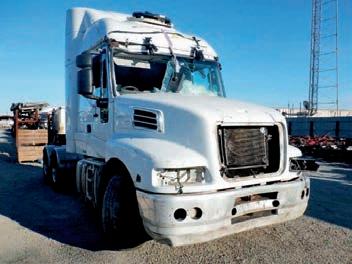

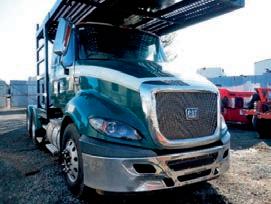



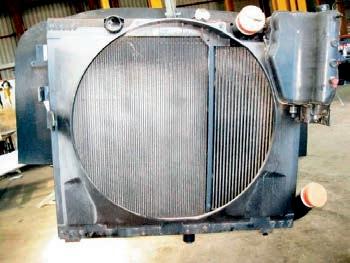
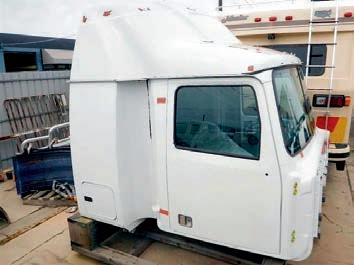
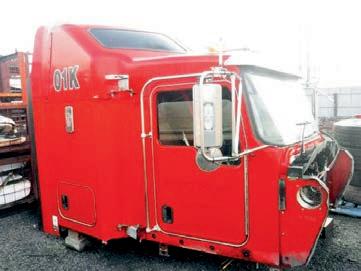
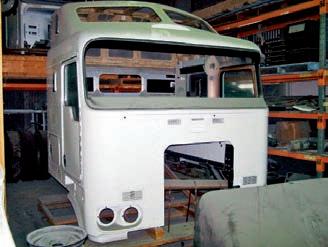
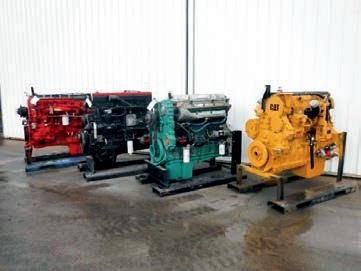
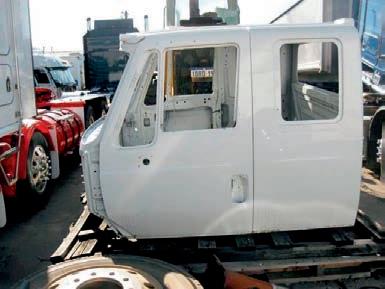
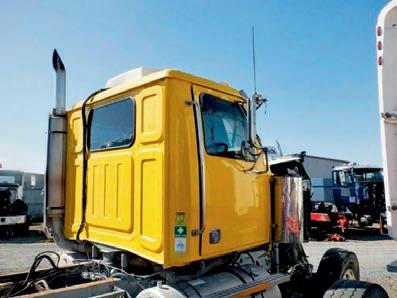

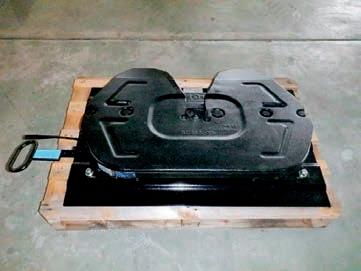
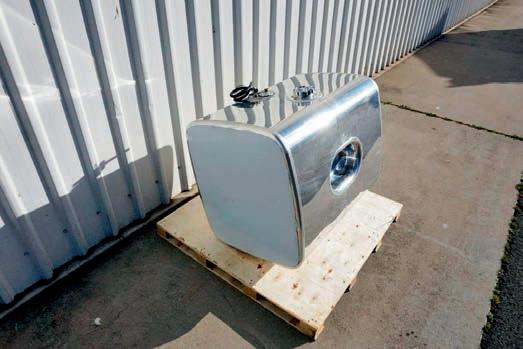

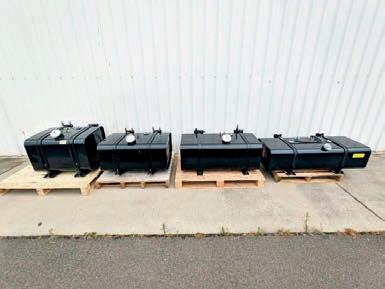
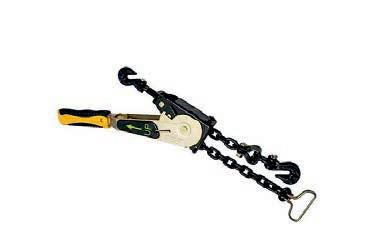
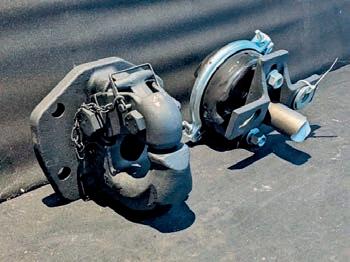

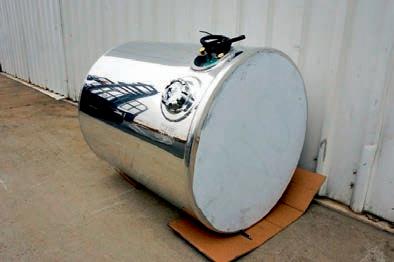
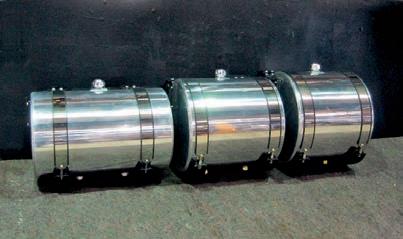

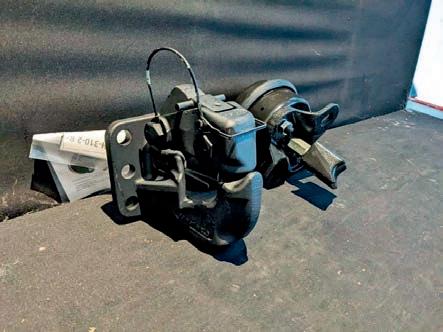
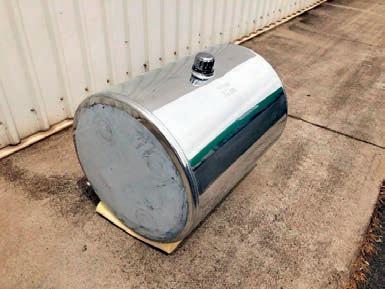
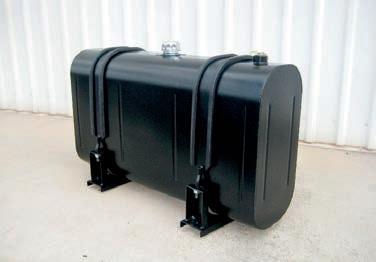
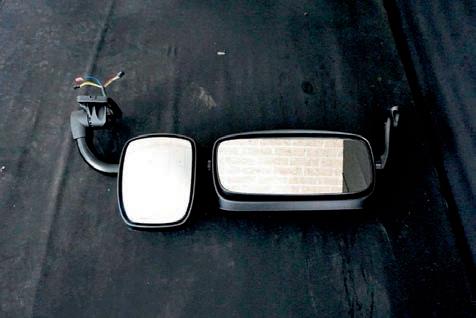
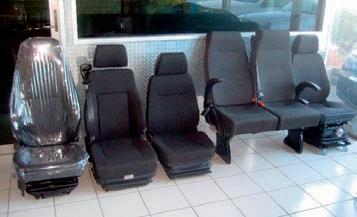
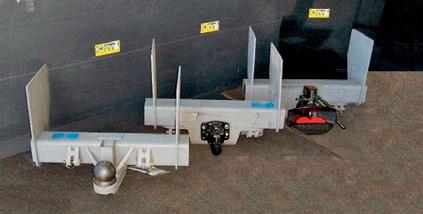



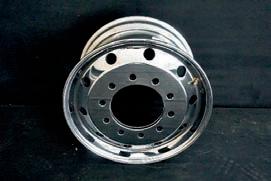

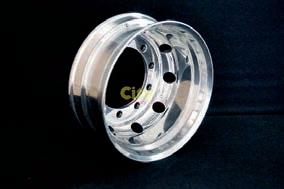
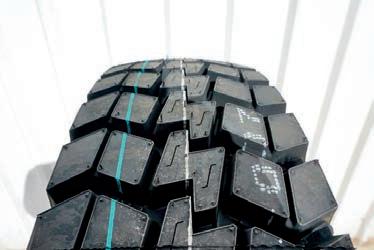

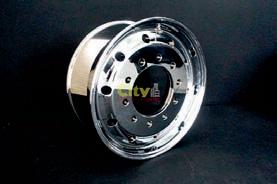
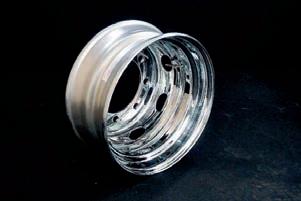
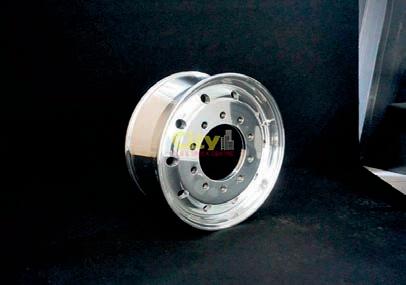
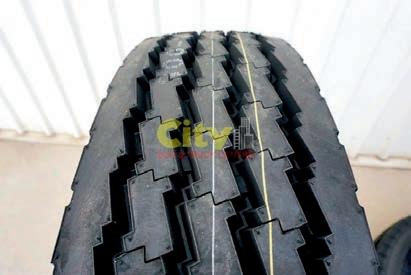
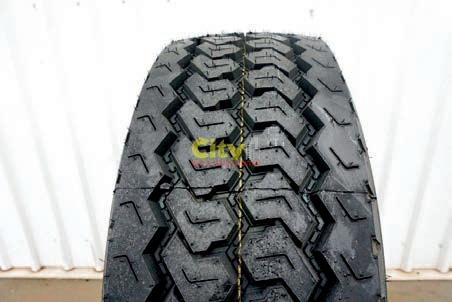
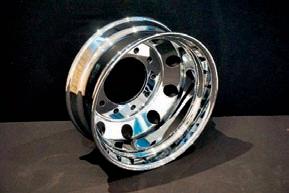

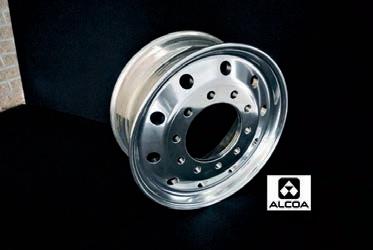


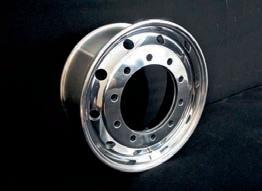

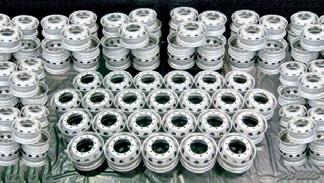




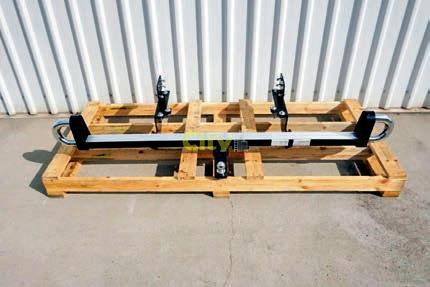

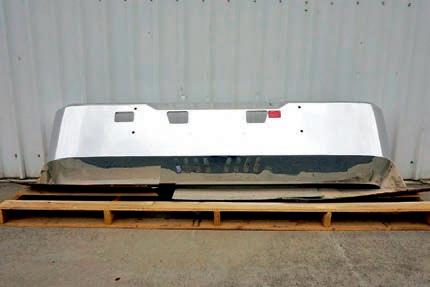
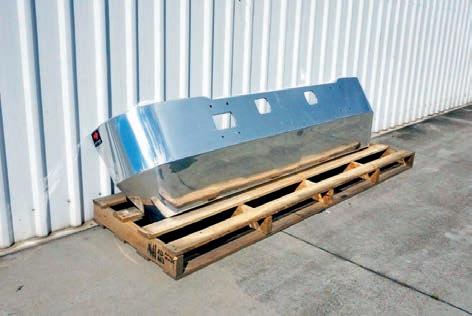

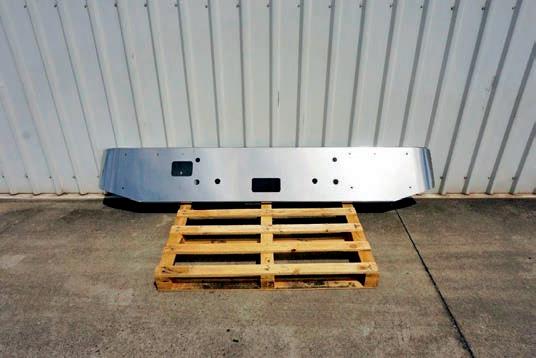
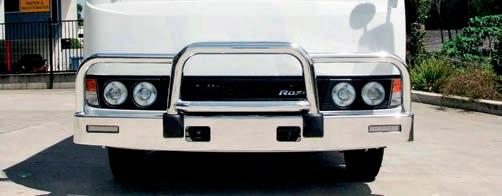

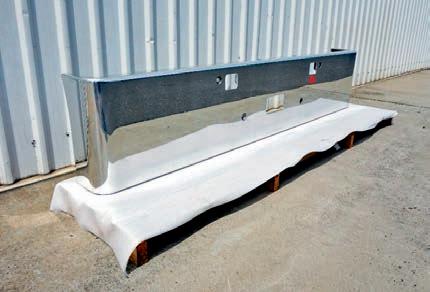
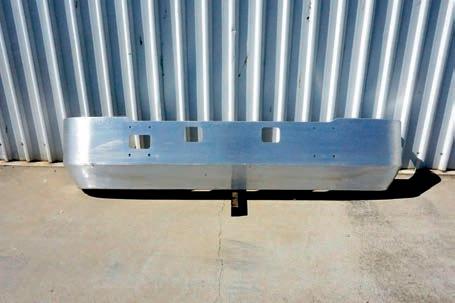




WESTERNSTAR4800FX



2007,CATC15engineRTLO 20918BRoadRangergearboxon AirlinersuspensionwithRockwell 46/160diffs4.1rationow wrecking.234. TA1126266.
POA
FREIGHTLINERCORONADO122
2012,DD15engine,RTLO20918B RoadRangergearbox,Rockwell 46-160diffs@4.30ratiowith rearlockeronAirlinerHeavy suspension,sleeperairbunk cooler.Sellcomplete.220. TA1112541.
POA
FREIGHTLINERARGOSY 2013,CumminsEGRDPFengine RTLO20918BRoadRanger gearboxonAirlinersuspension withRockwell46/160diffs4.3 rationowwrecking.230. TA1121902.
POA
KENWORTHT408SAR 2010,CumminsISXEGR SignatureengineRTLO20918B RoadRangergearboxonAirglide 460suspensionwithRockwell 46/160diffs4.1ratios.Now wrecking.s/n223. TA1117238.
POA
KENWORTHT401 1998,CATC-12engine, RTLO16718BRoadRanger gearbox,Rockwell40-145diffs@ 4.33ratiowithrearlockeron Airglide400suspension.Alloy bullbar.Hydraulics.NOW WRECKING!.207. TA1091352.


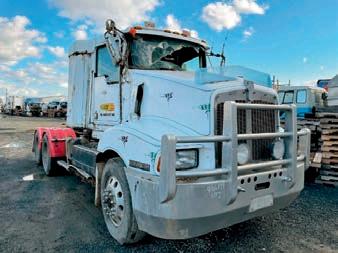

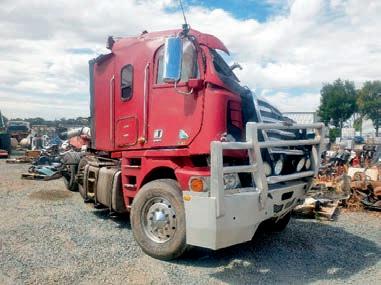

POA
WESTERNSTAR4964FHERITAGE
1996,CATC15engineRTLO 18718BRoadRangergearboxon HendricksonHAS400suspension withRockwell46/1604.10ratio duallockers.Cabincompletesale withaircleanersalsocomplete
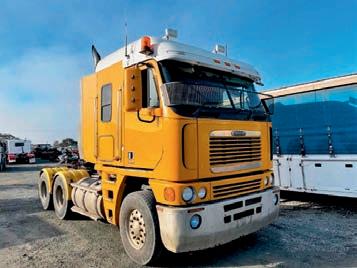
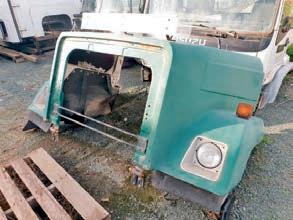
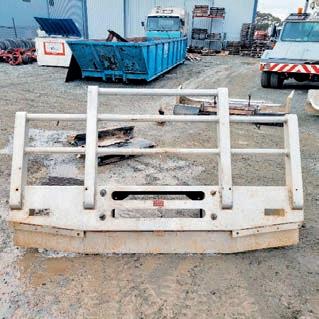
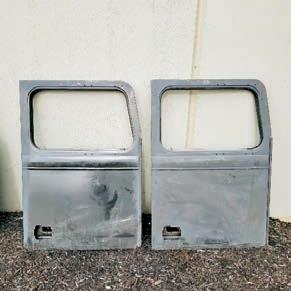


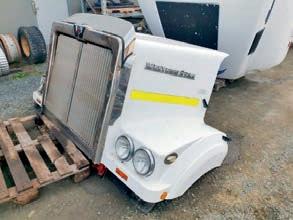


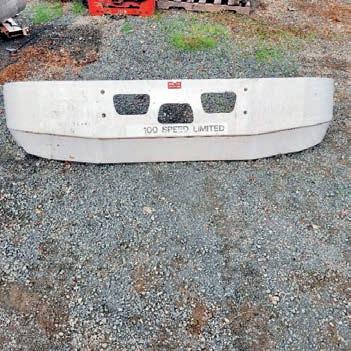
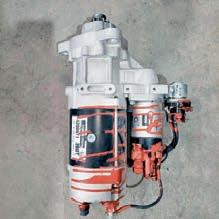

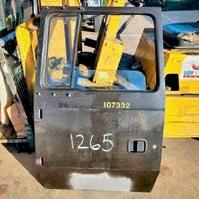
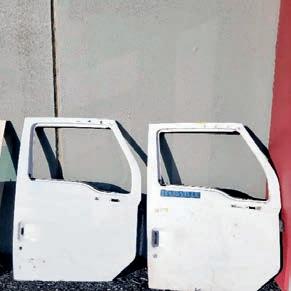
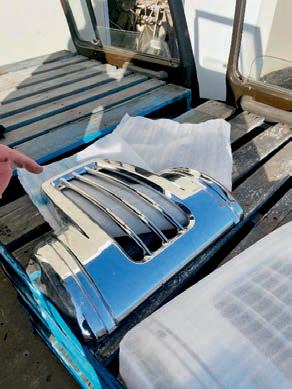
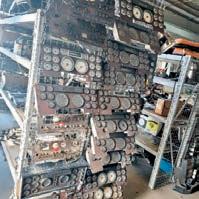

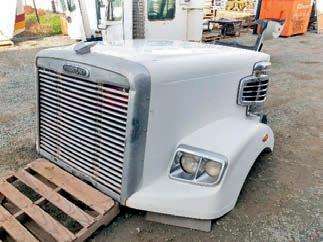
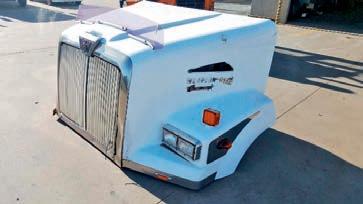
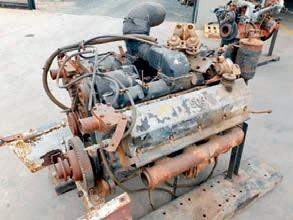
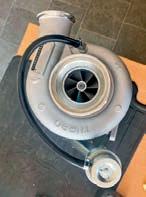
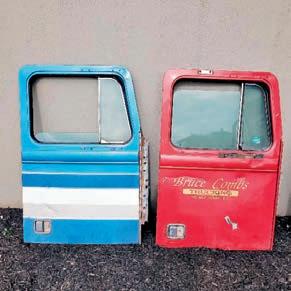
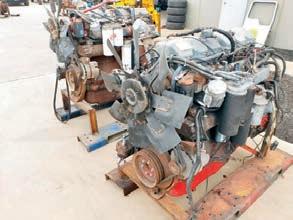
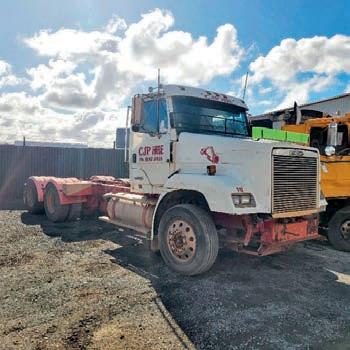

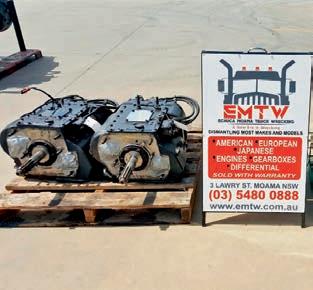

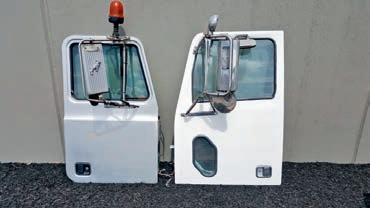
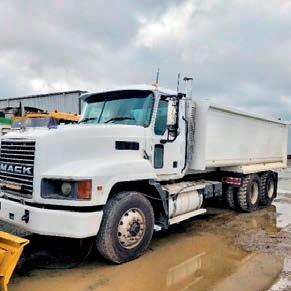
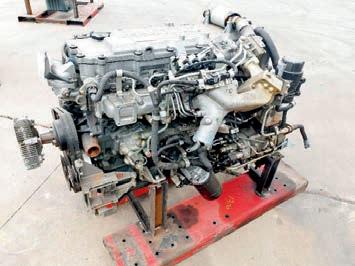
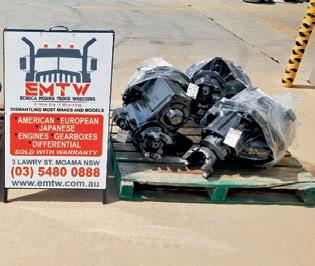
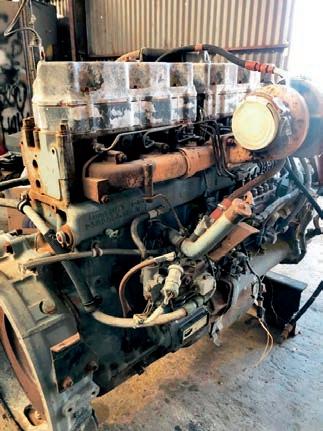
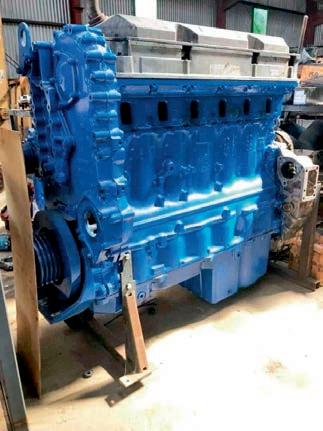
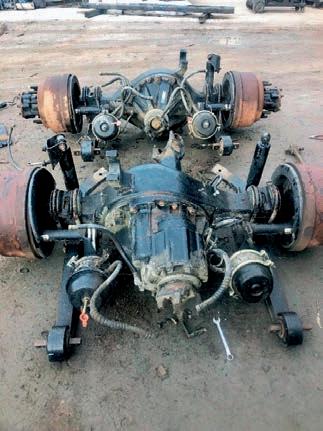
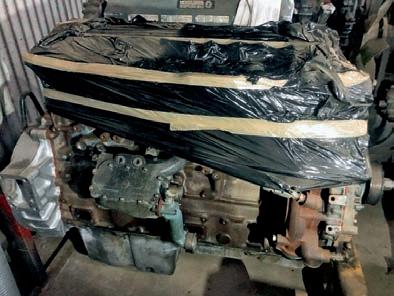

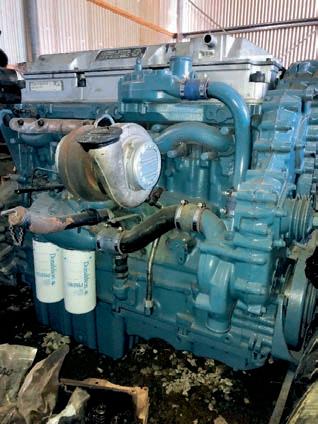

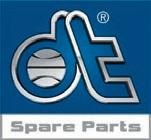
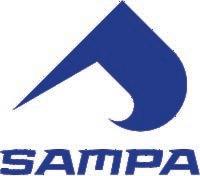

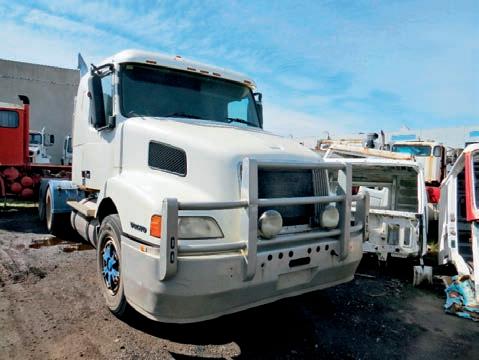

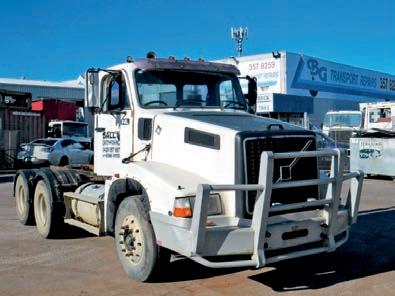



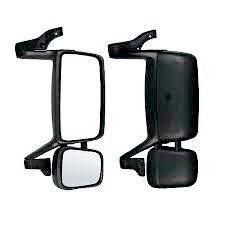


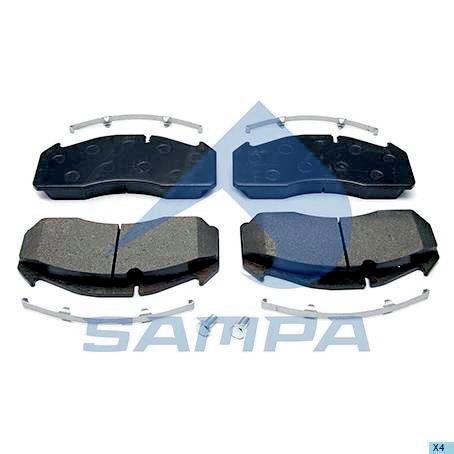
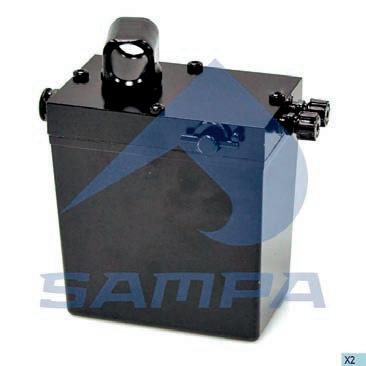
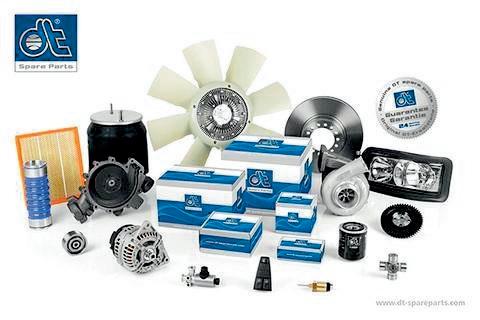

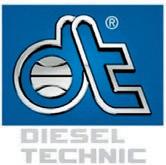
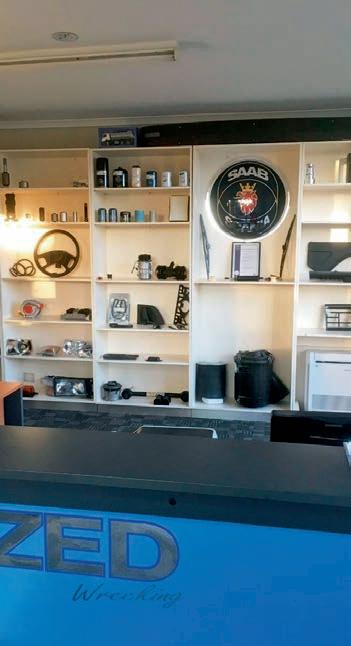
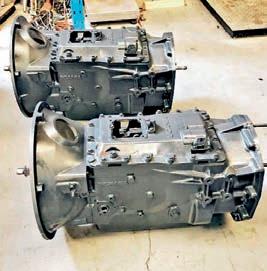

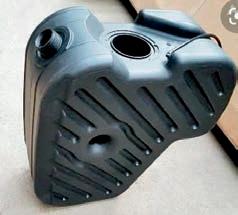
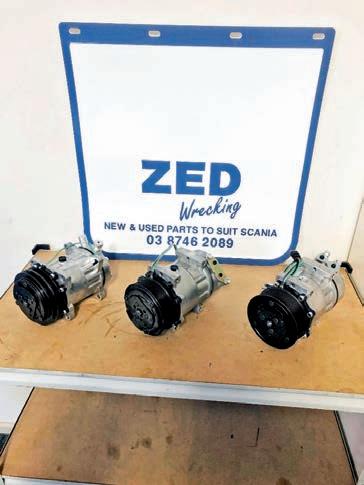

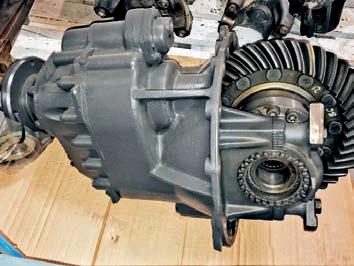
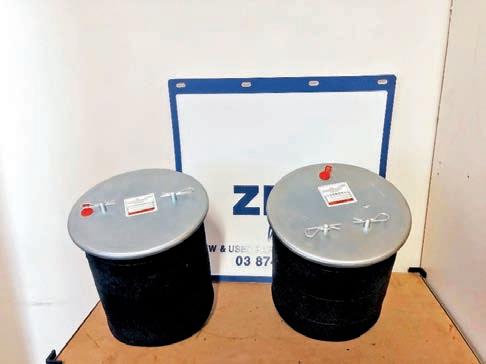
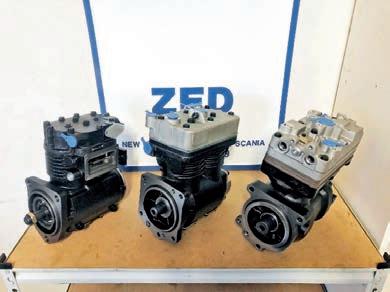





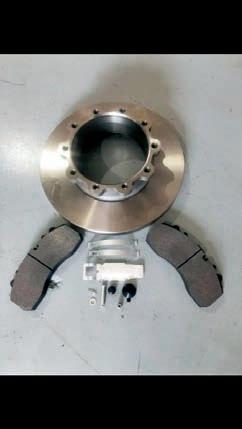

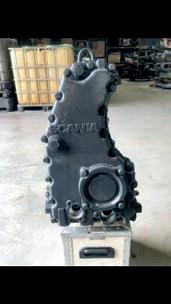

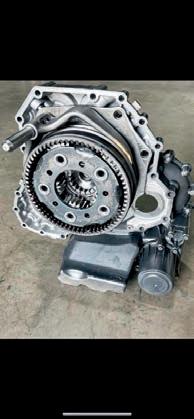
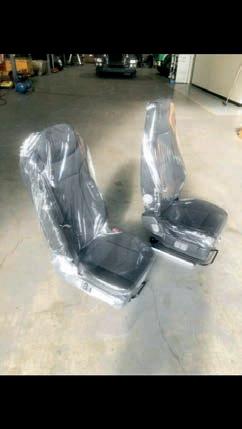
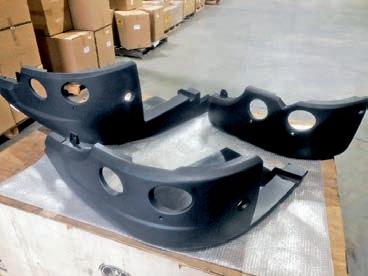
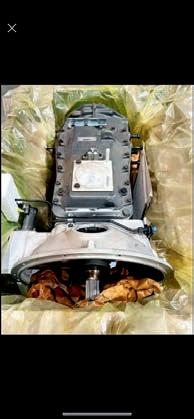
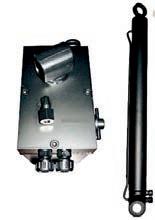

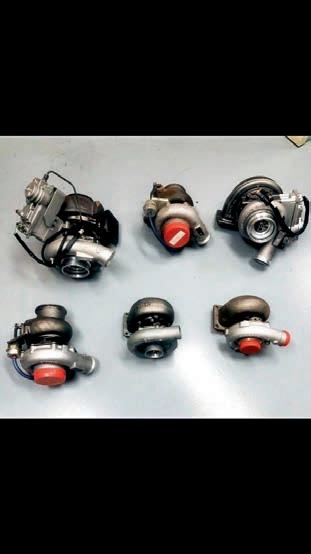
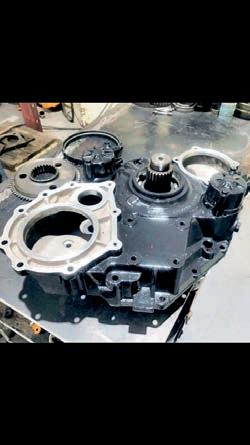
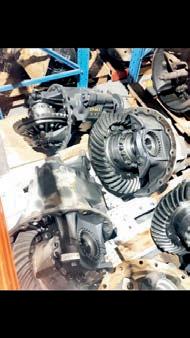



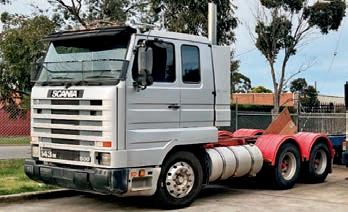
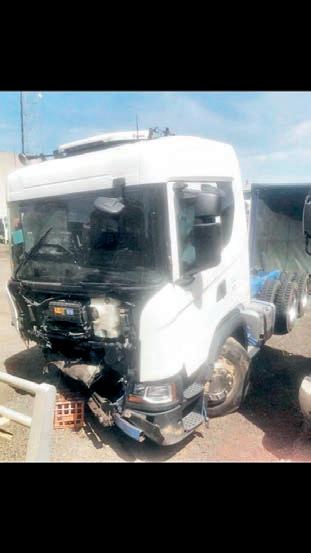


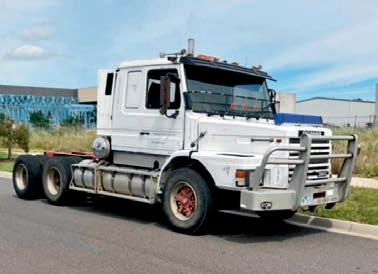
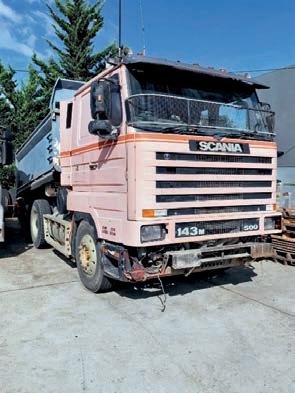
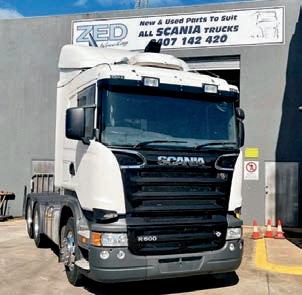
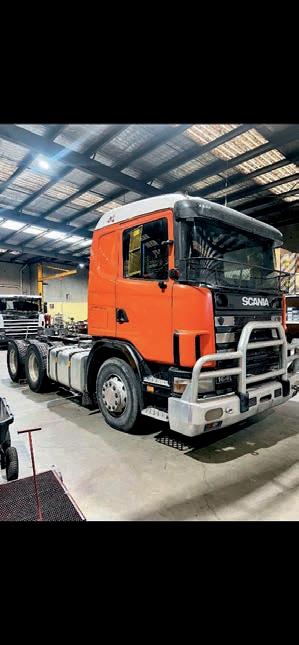

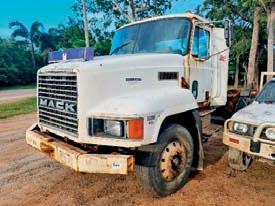
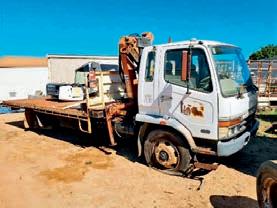
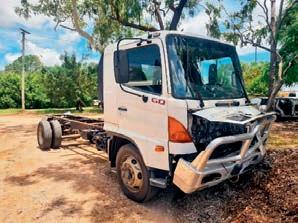
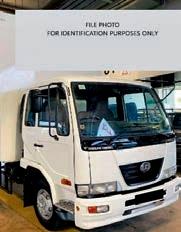
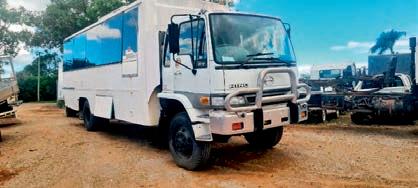

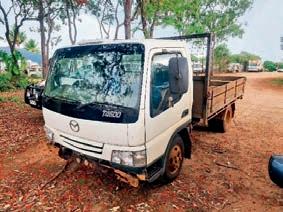
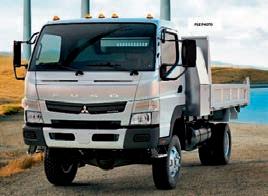

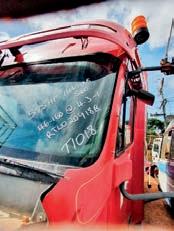
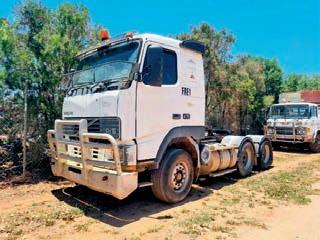
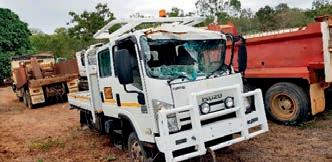

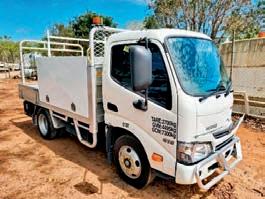

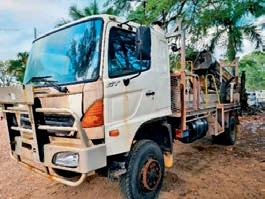


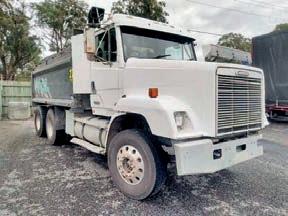
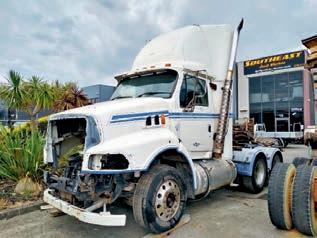
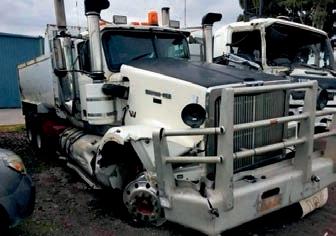

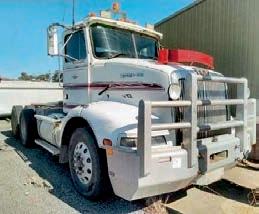
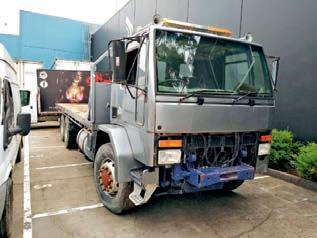
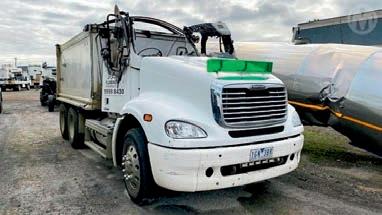
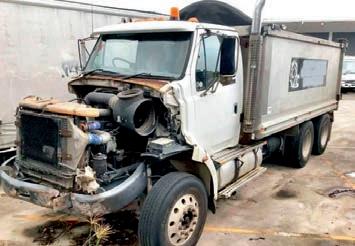
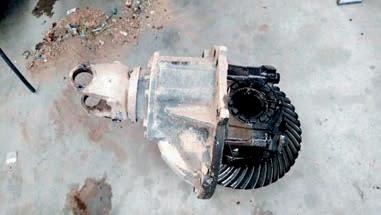
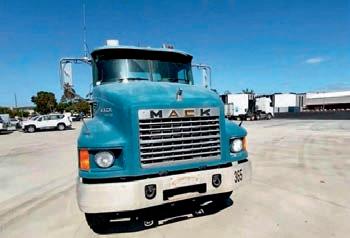


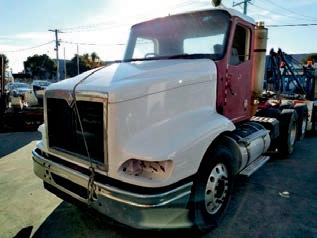
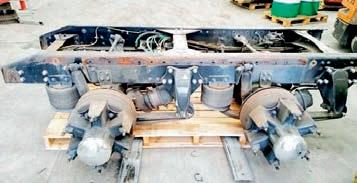

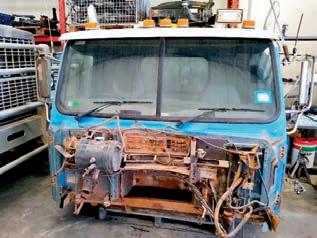


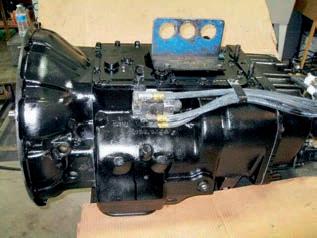

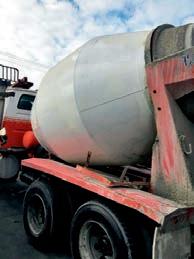
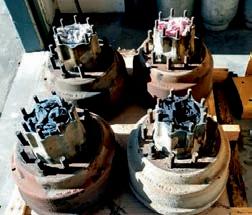


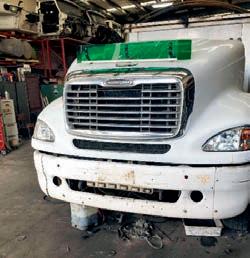
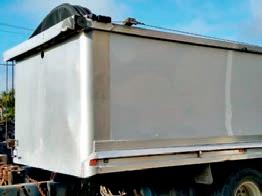
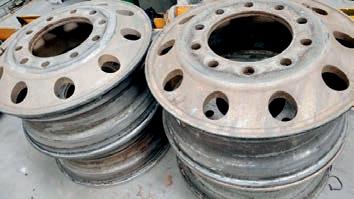
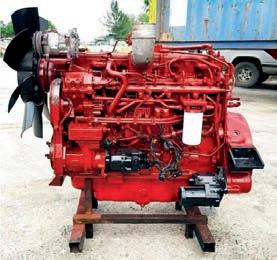
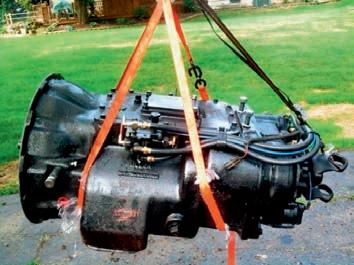

Brand New Left and Right Sterling or Ford HN80
Brand New Sterling or Ford HN80 Combination Door Handles. $125.00 Each Switch’s, Wiper and Indicator. $495.00 Each
Brand New Sterling 9500 or Ford HN80 Header
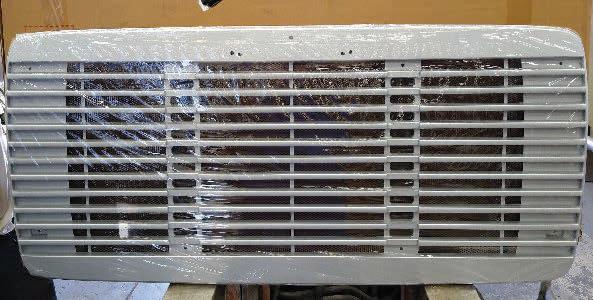
Brand New Left and Right Sterling or Ford HN80 Tanks, Coolant Reservoirs. $595.00 Each Indicator assemblies. $95.00 Each
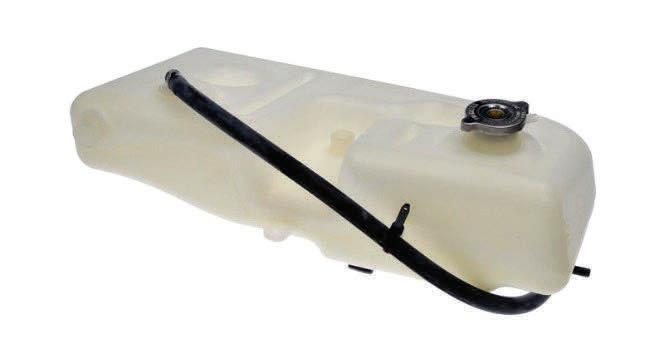
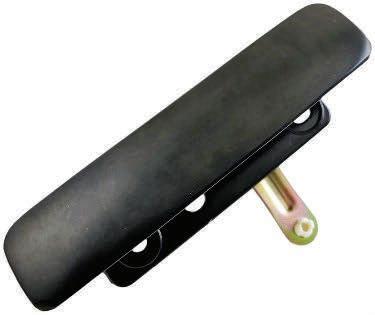
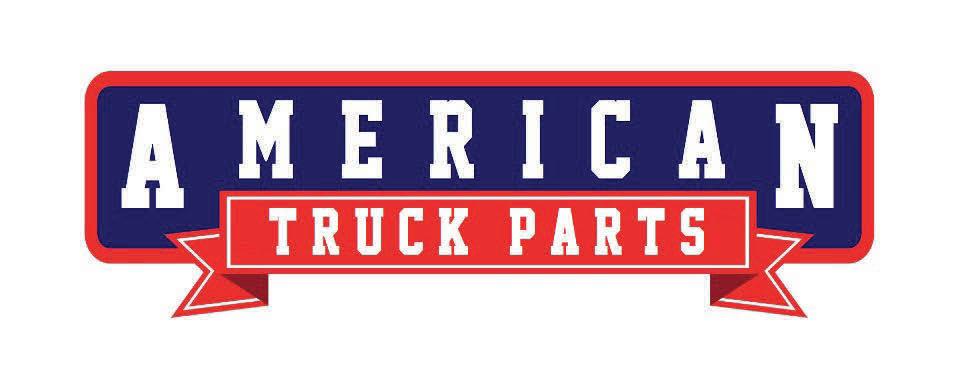
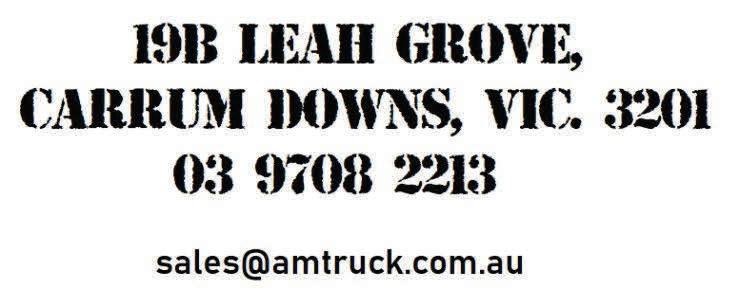
Brand New FL80, FL106,
Grilles.
Brand New Drivers Side Argosy, Century Class $695.00 Each Columbia Window Regulators. $395.00 Each


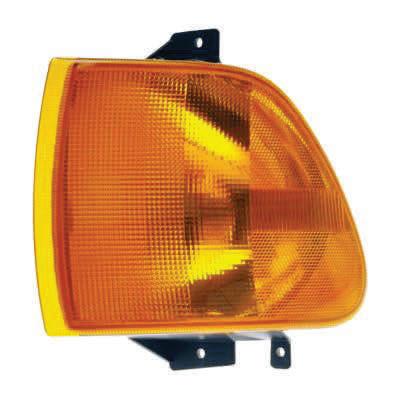
Brand New Freightliner Combination Switches Argosy, Century Class, Columbia. $295.00 Each

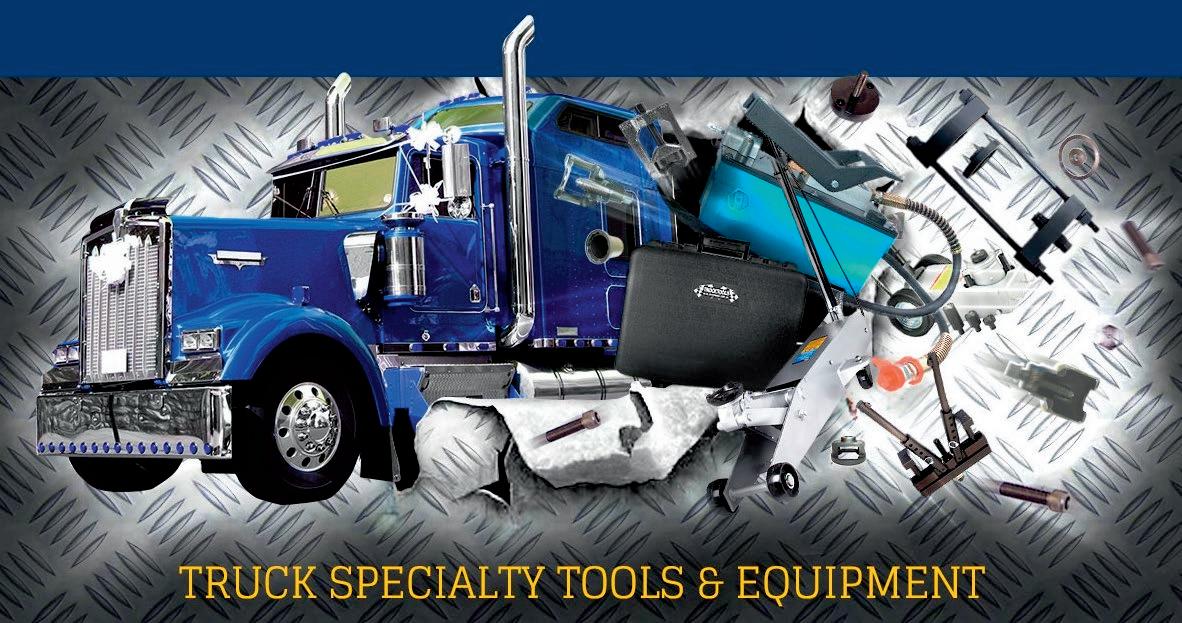
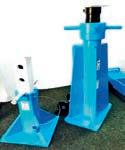
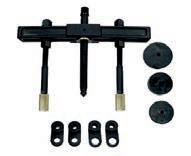
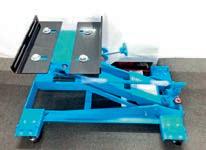

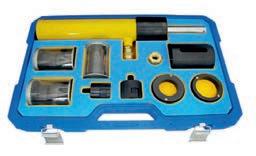


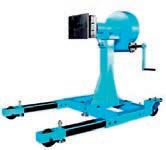




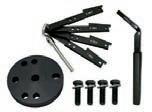
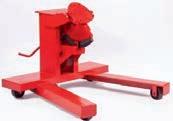




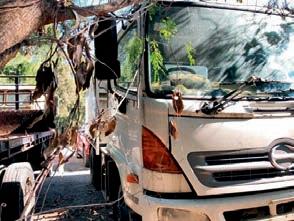
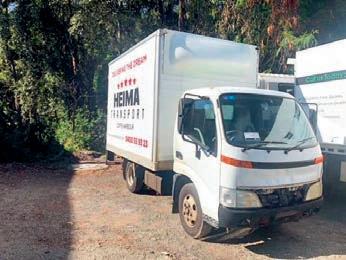
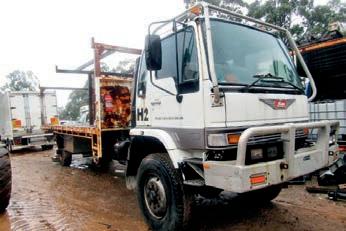
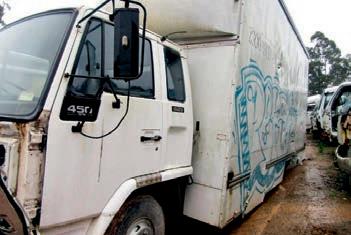
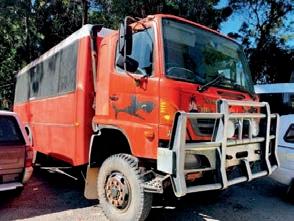
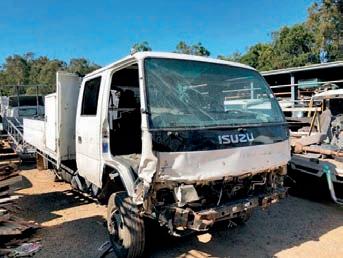


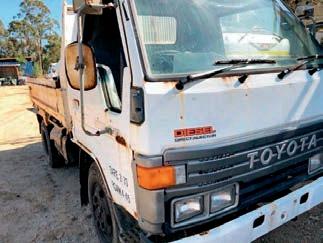
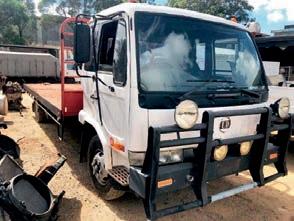
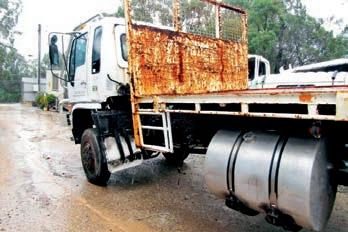
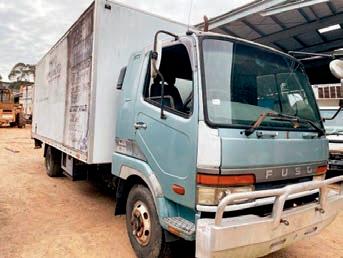
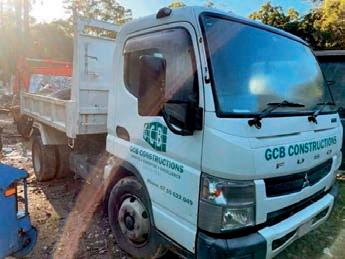
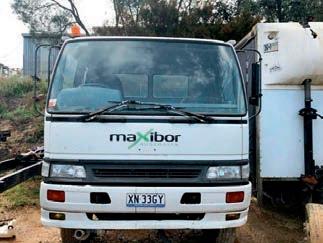
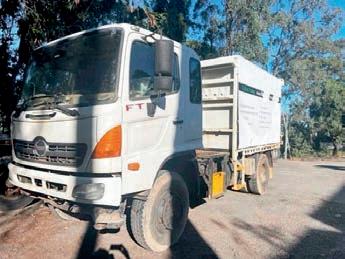
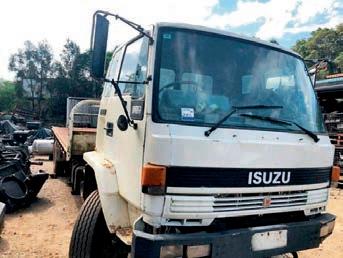

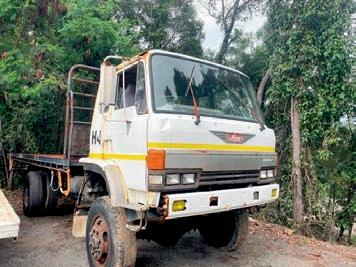
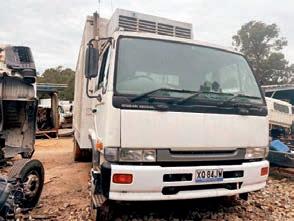

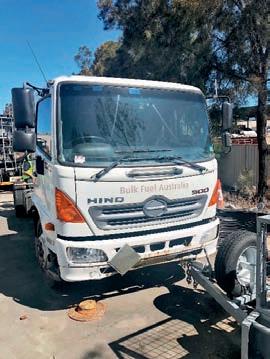
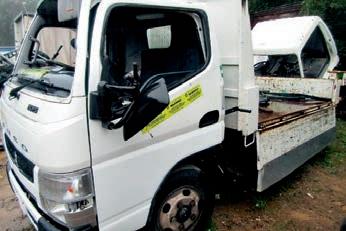
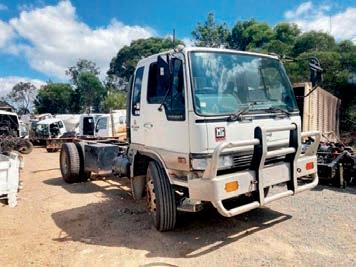
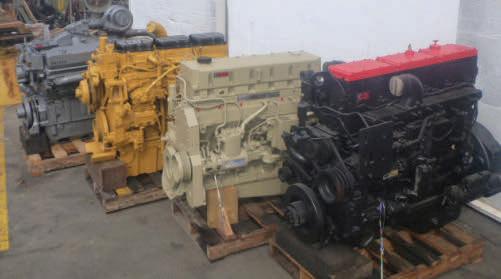
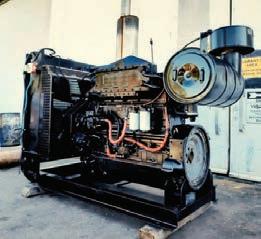
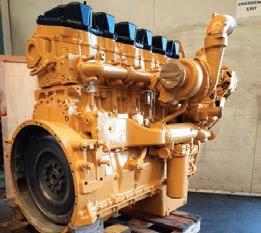
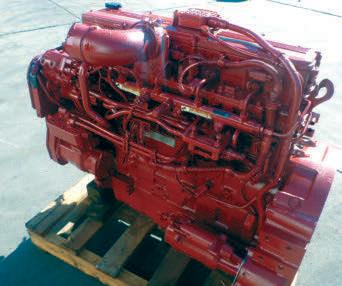
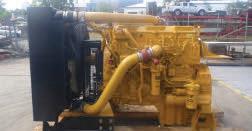


OM902LA
$9,350
$11,000
$13,750
$CALL
$14,000
OM906LA From $11,000
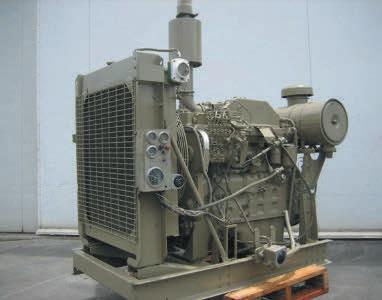

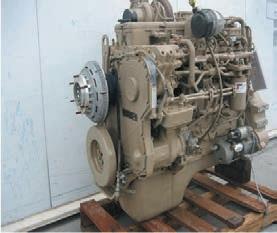

OM926LA From $13,750
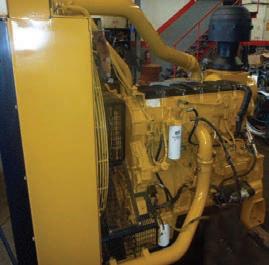
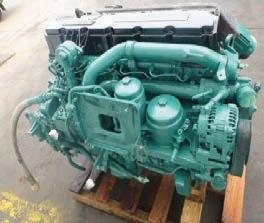
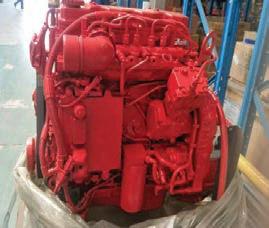
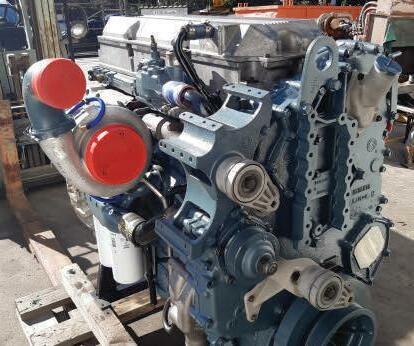
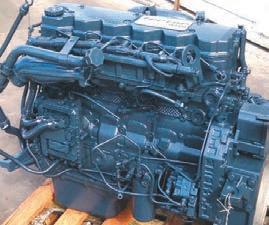
OM457
OM460
$17,050
$13,750
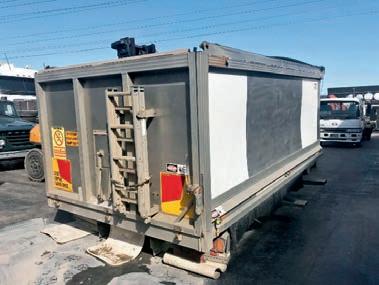
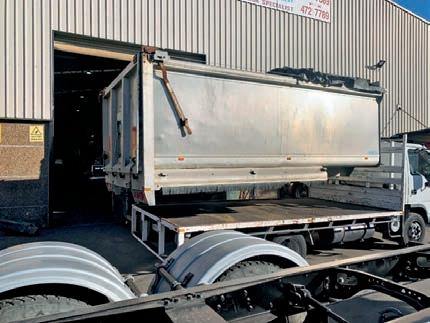
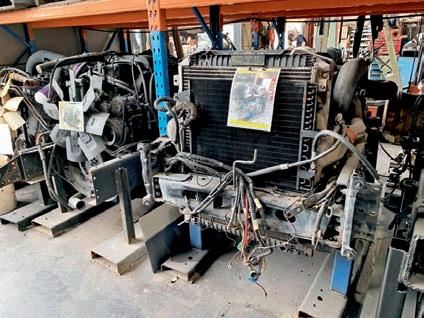
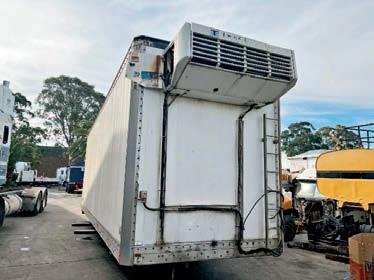

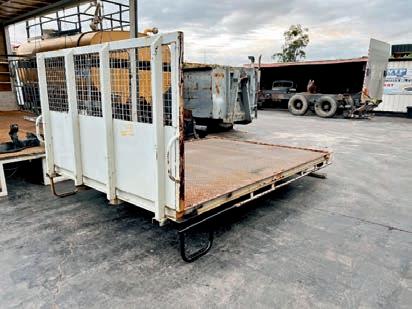
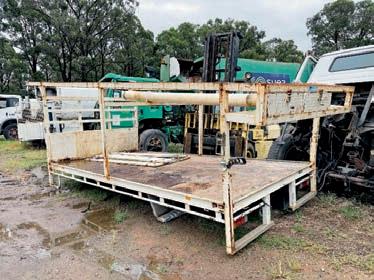
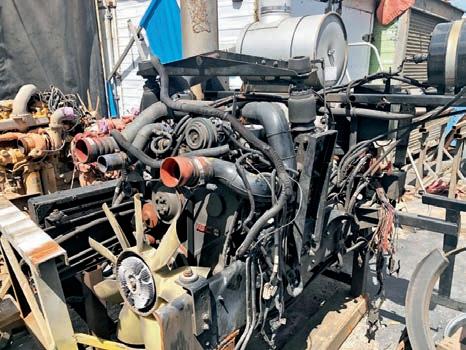





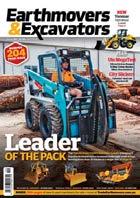





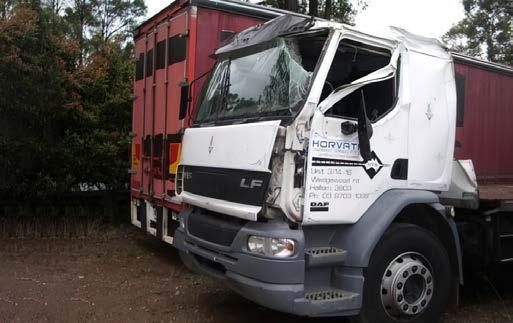
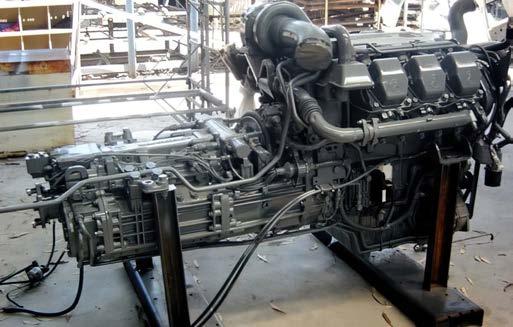
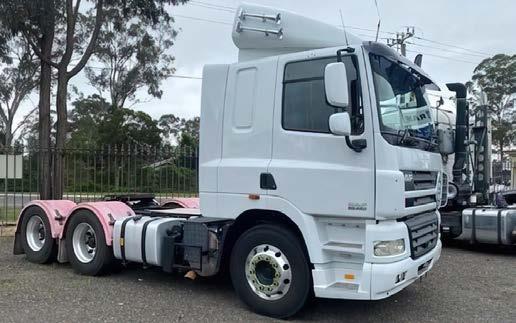

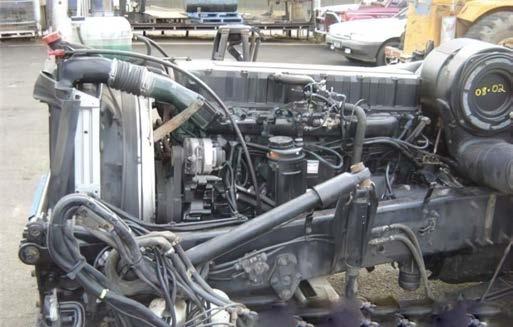

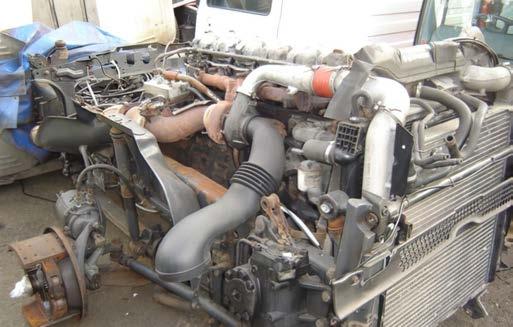
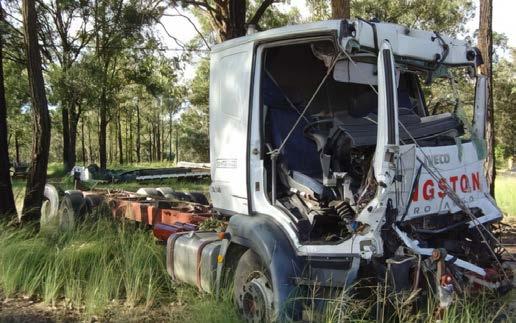
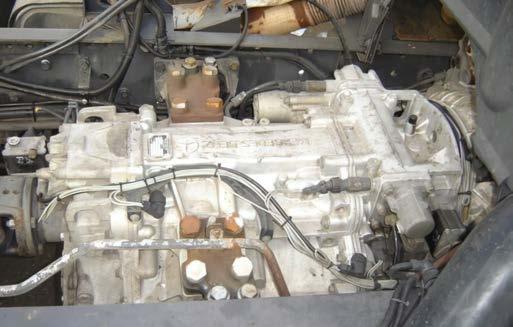


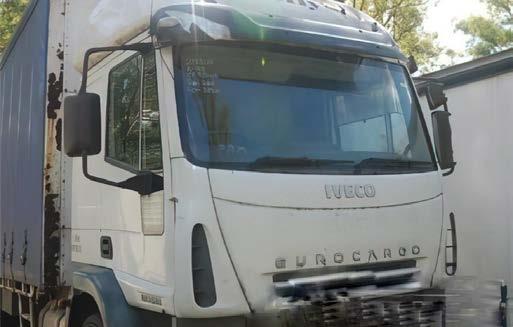
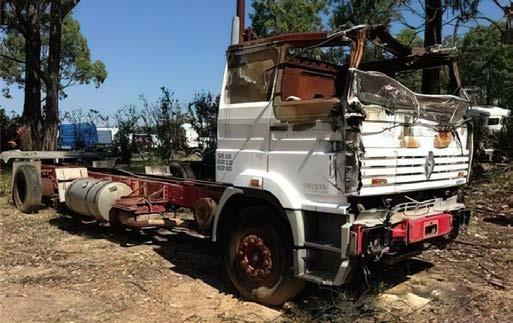
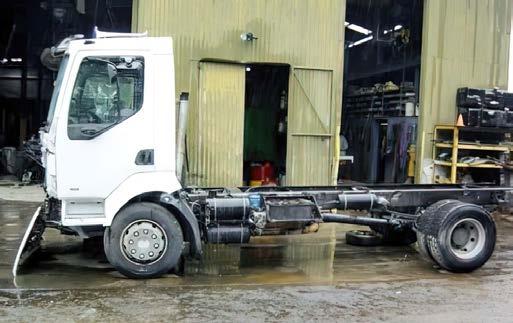
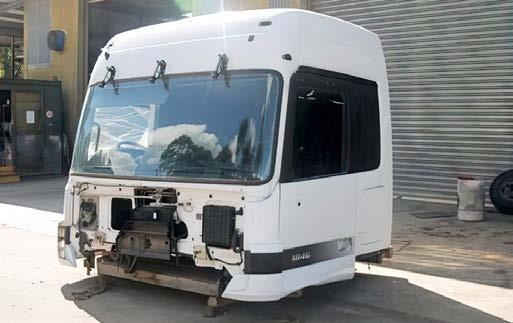
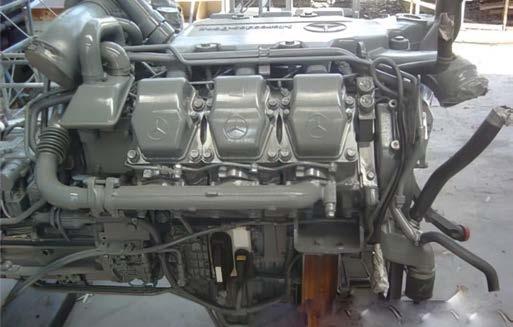

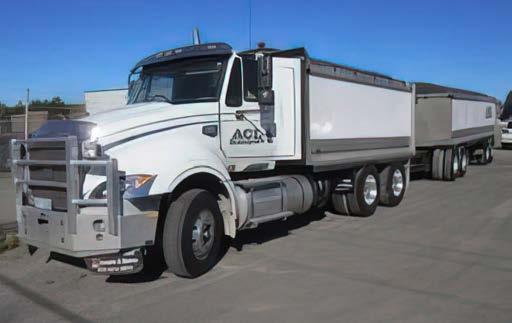
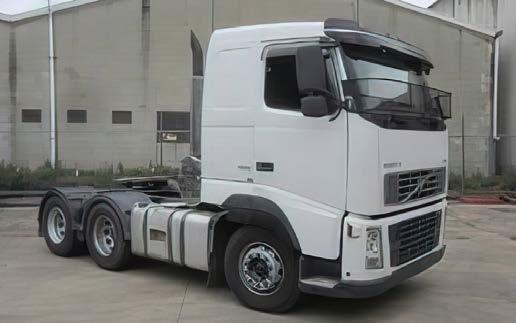
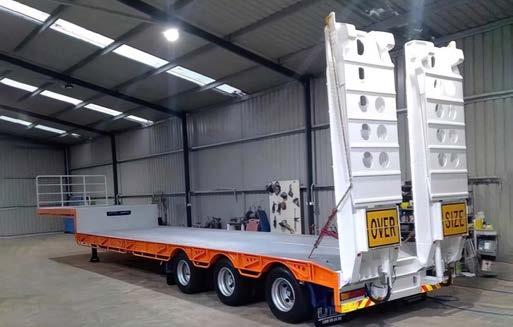
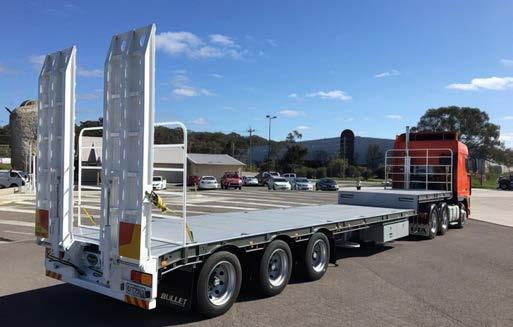

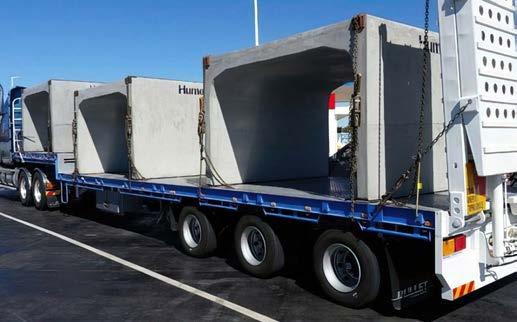
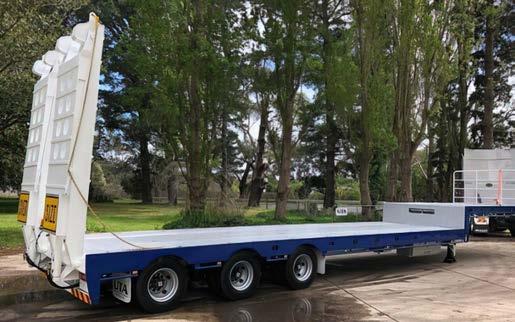
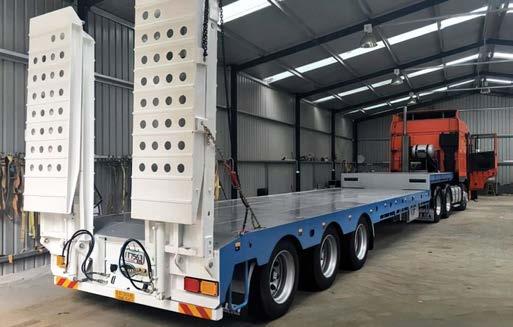

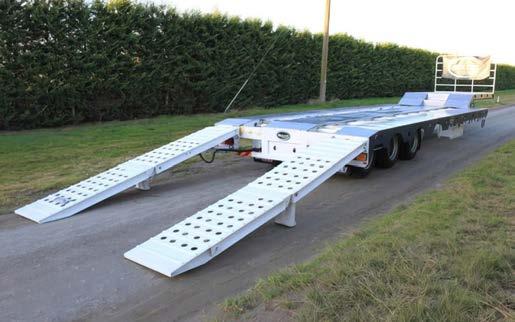


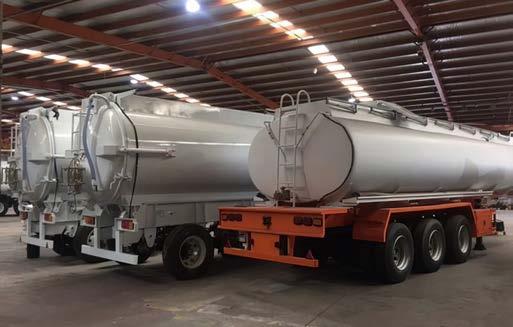
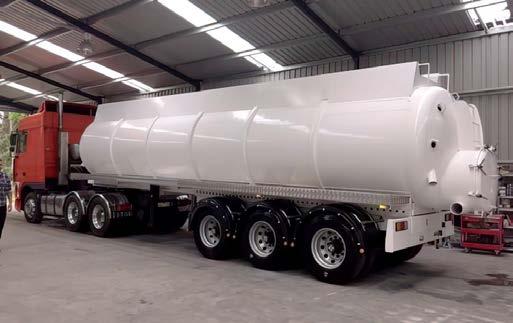
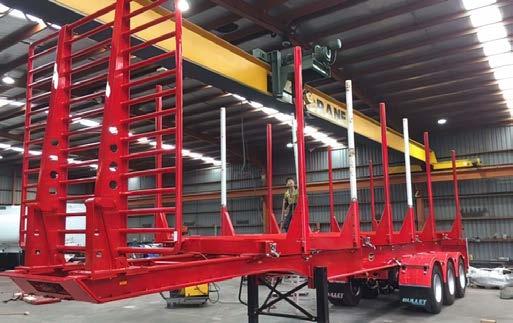
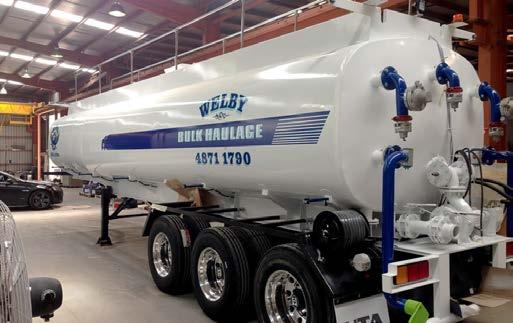
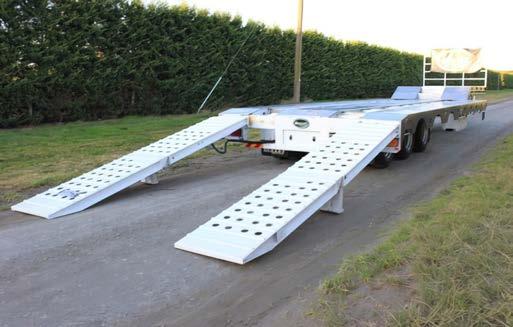
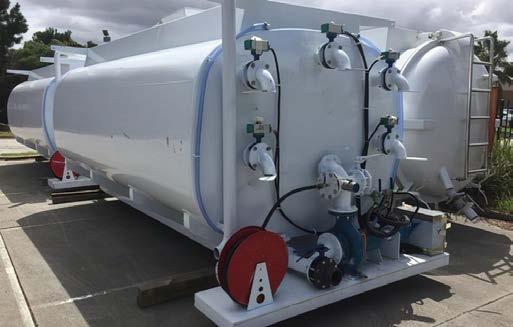
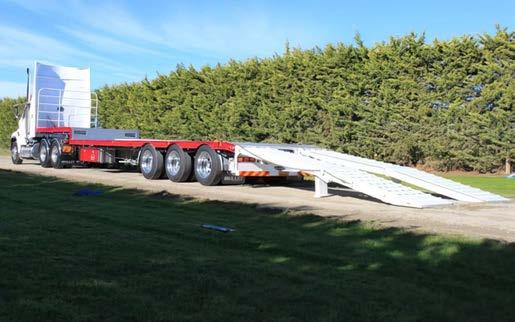




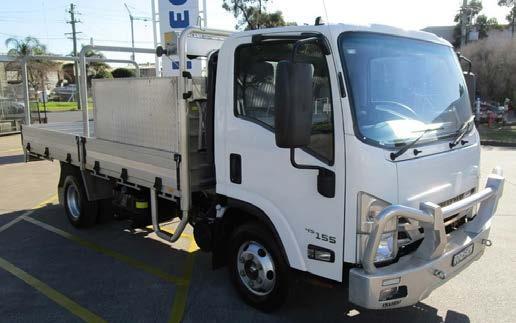

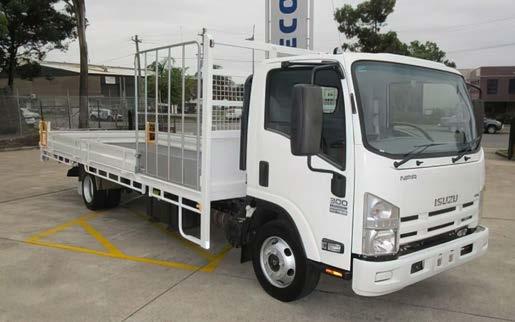
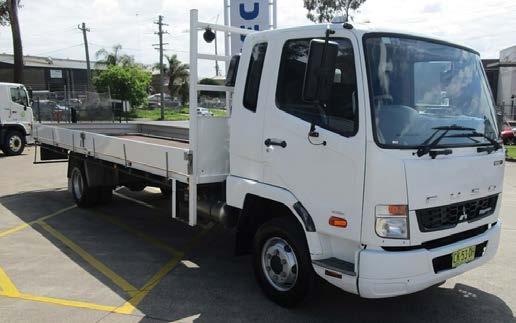
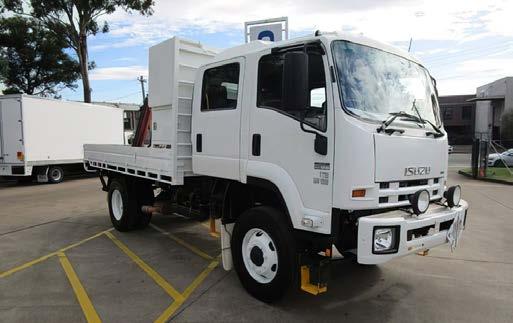

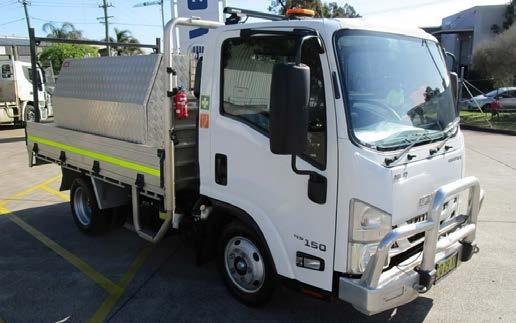
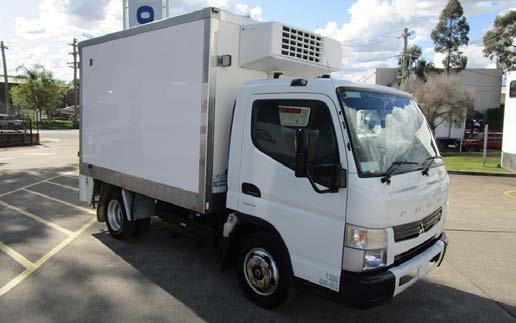
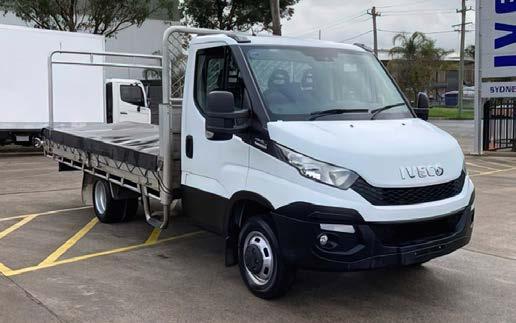

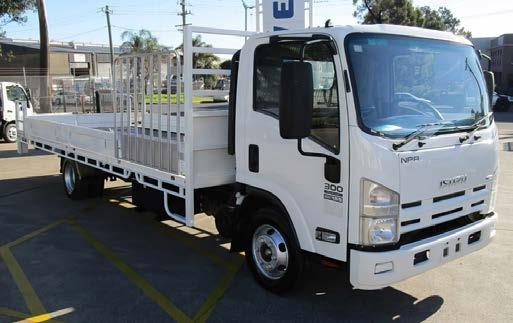
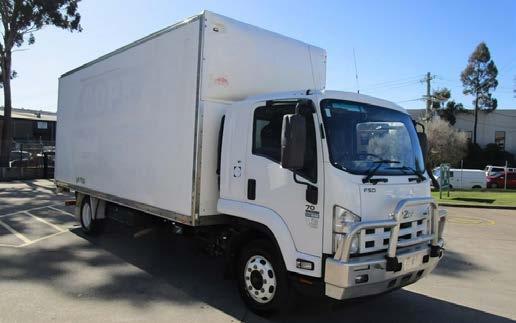
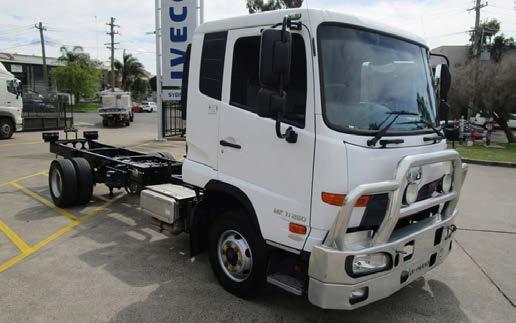
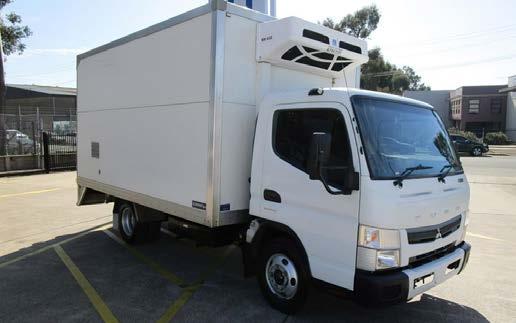



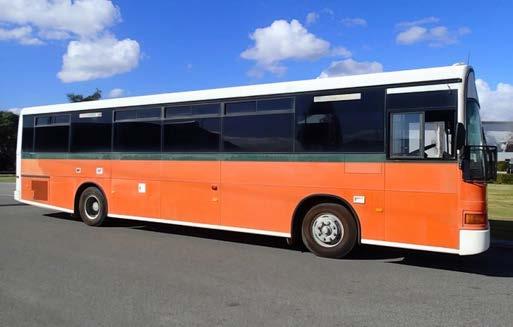
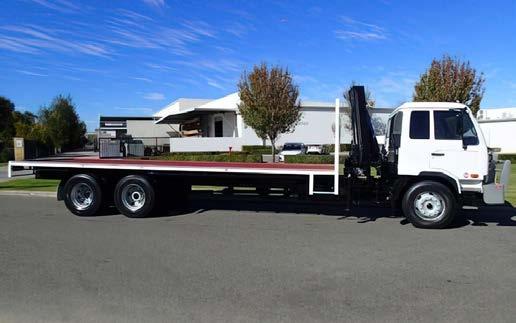
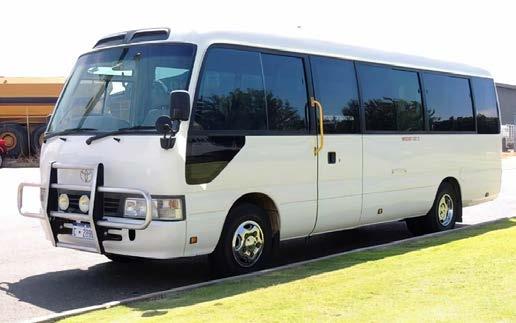
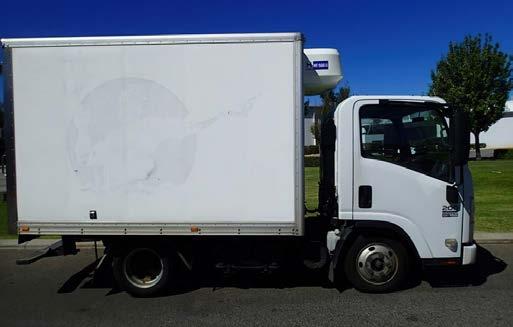
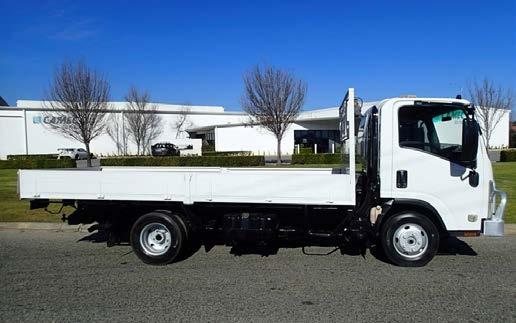
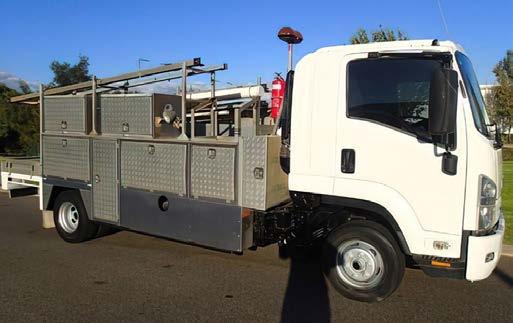


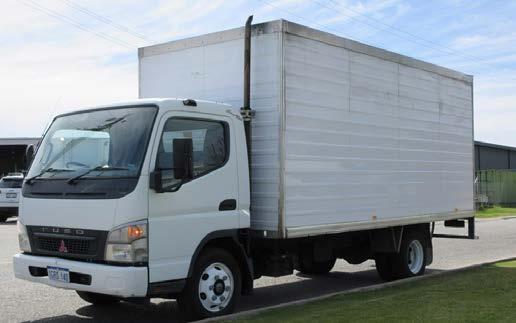

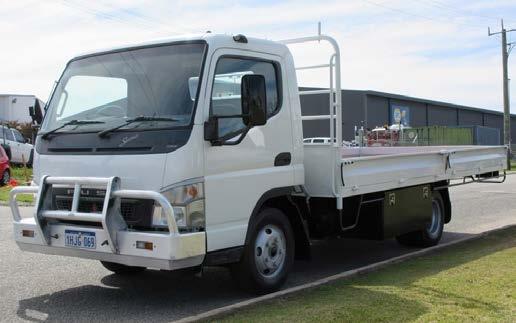
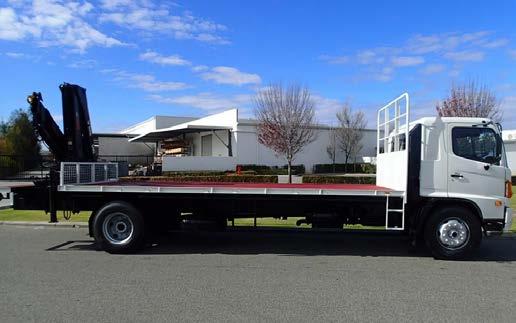




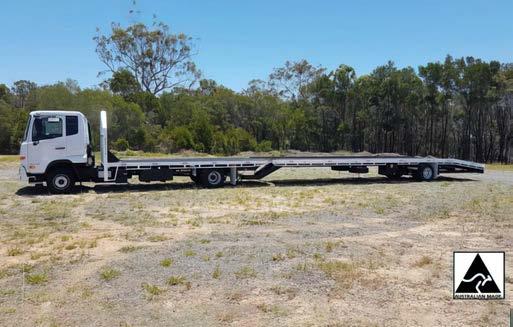
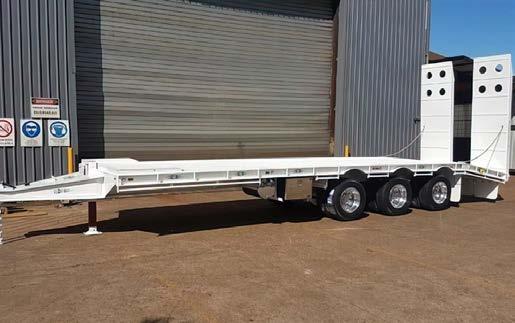
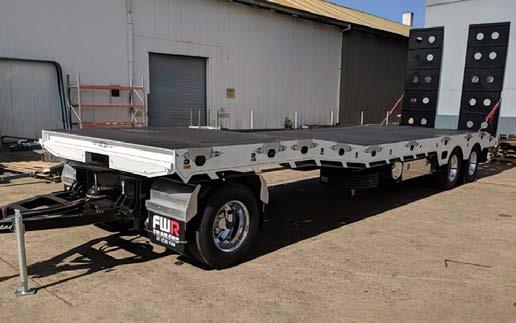
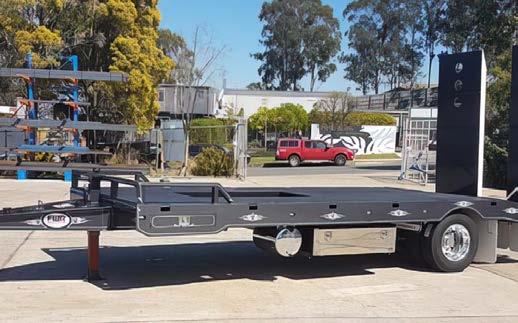
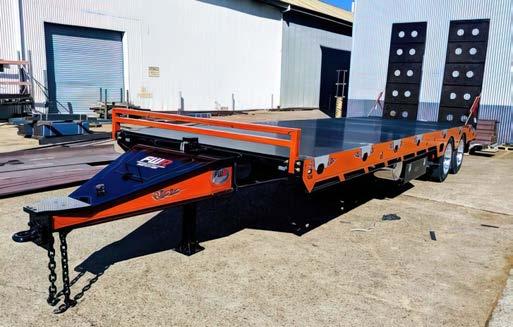
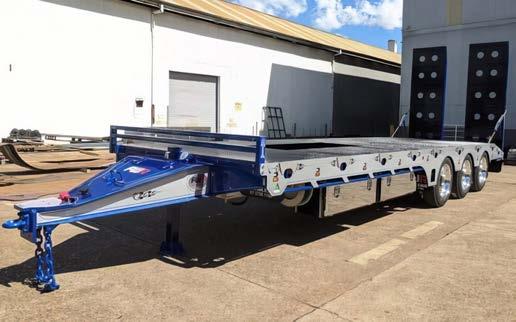
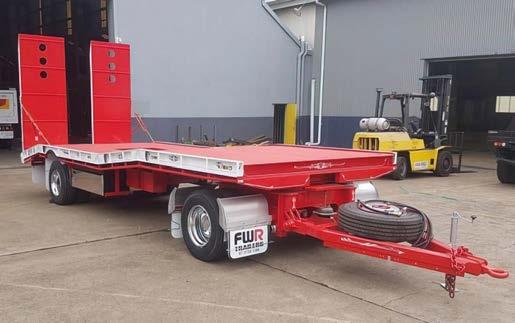



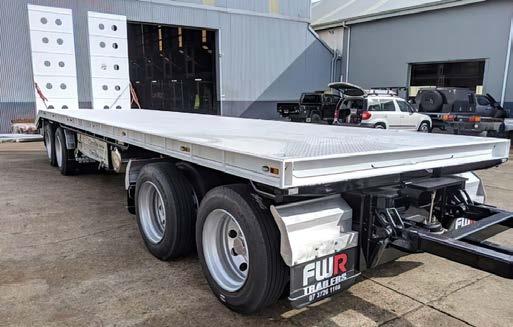
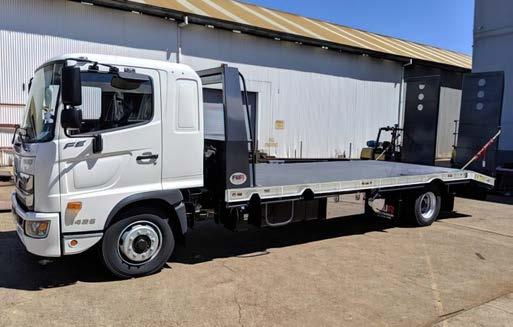
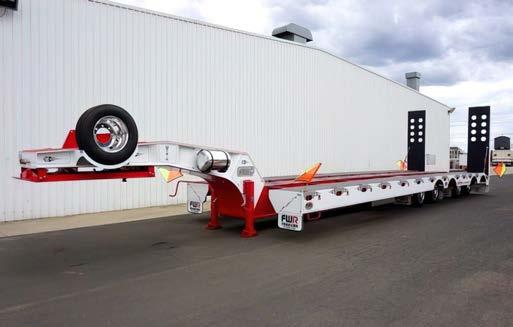
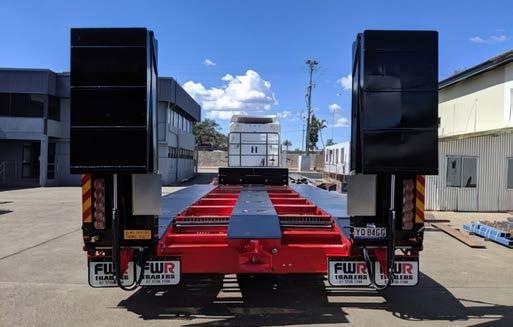
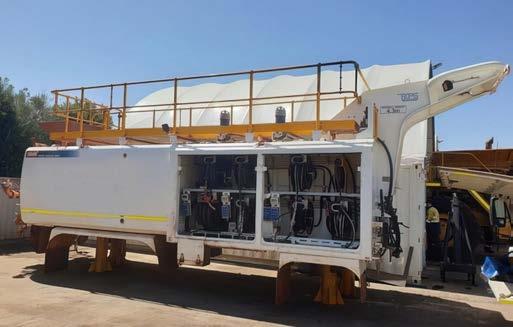
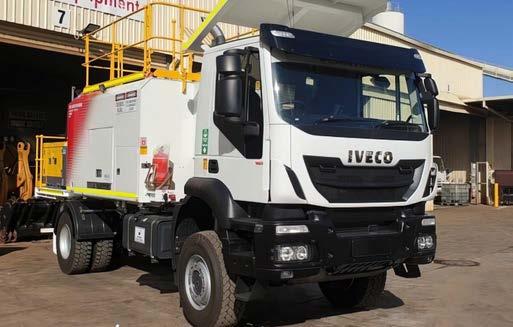
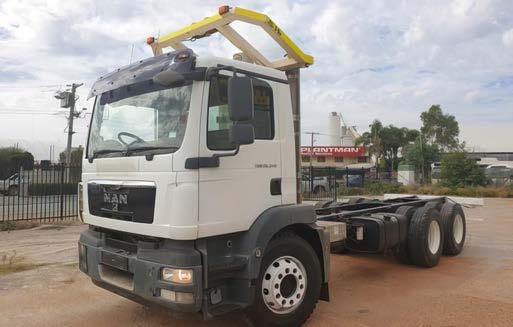
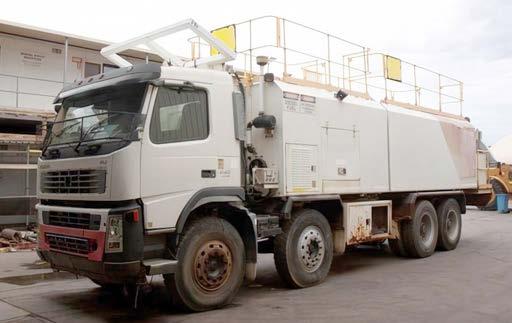

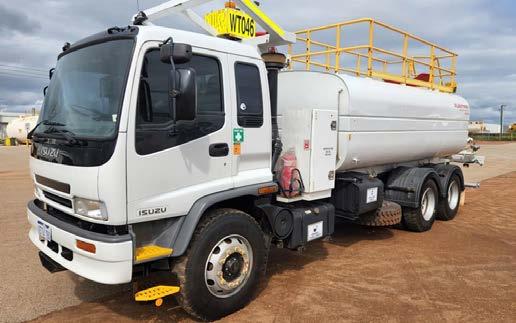
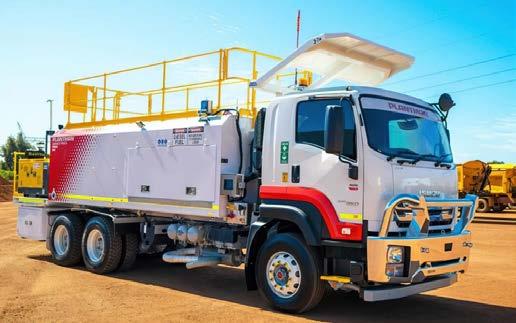
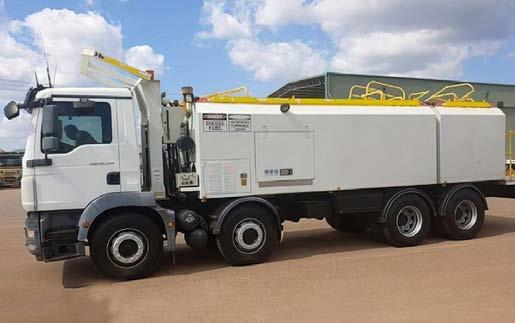
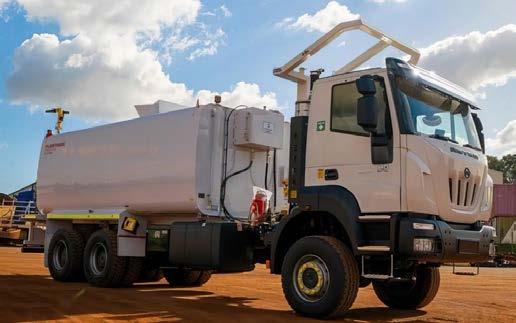
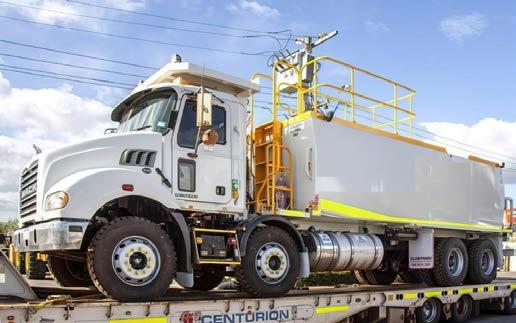
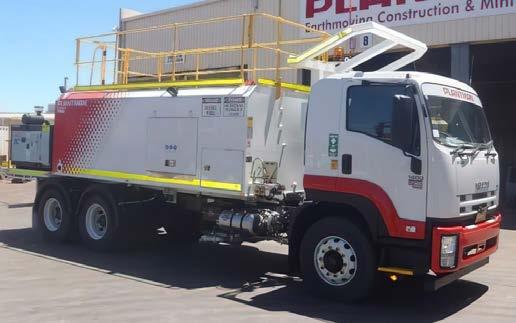
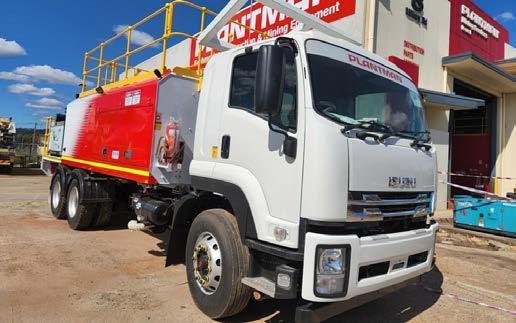


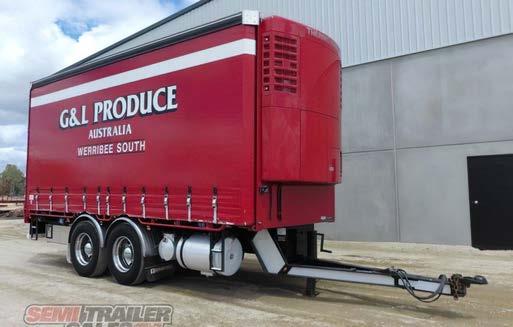

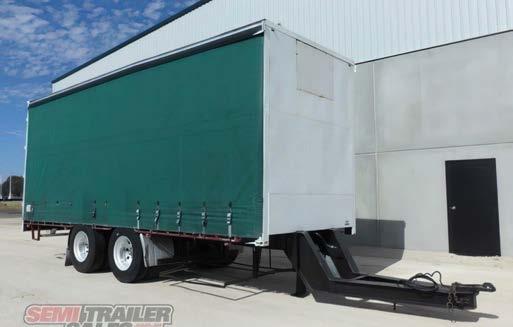

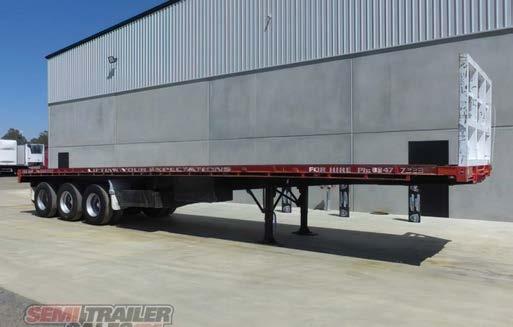




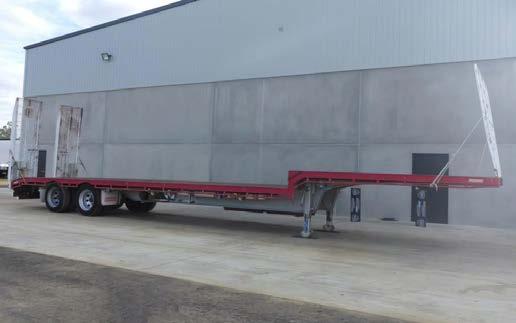

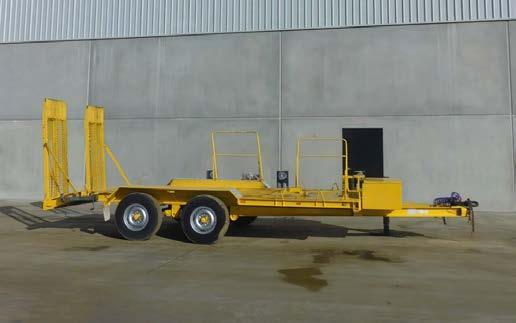

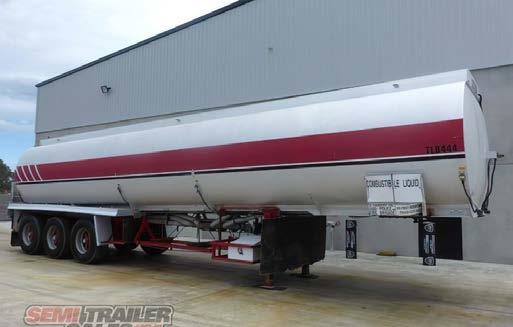
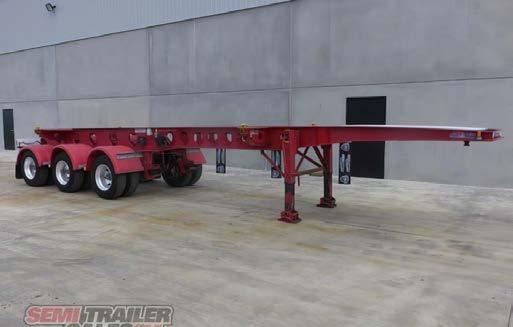
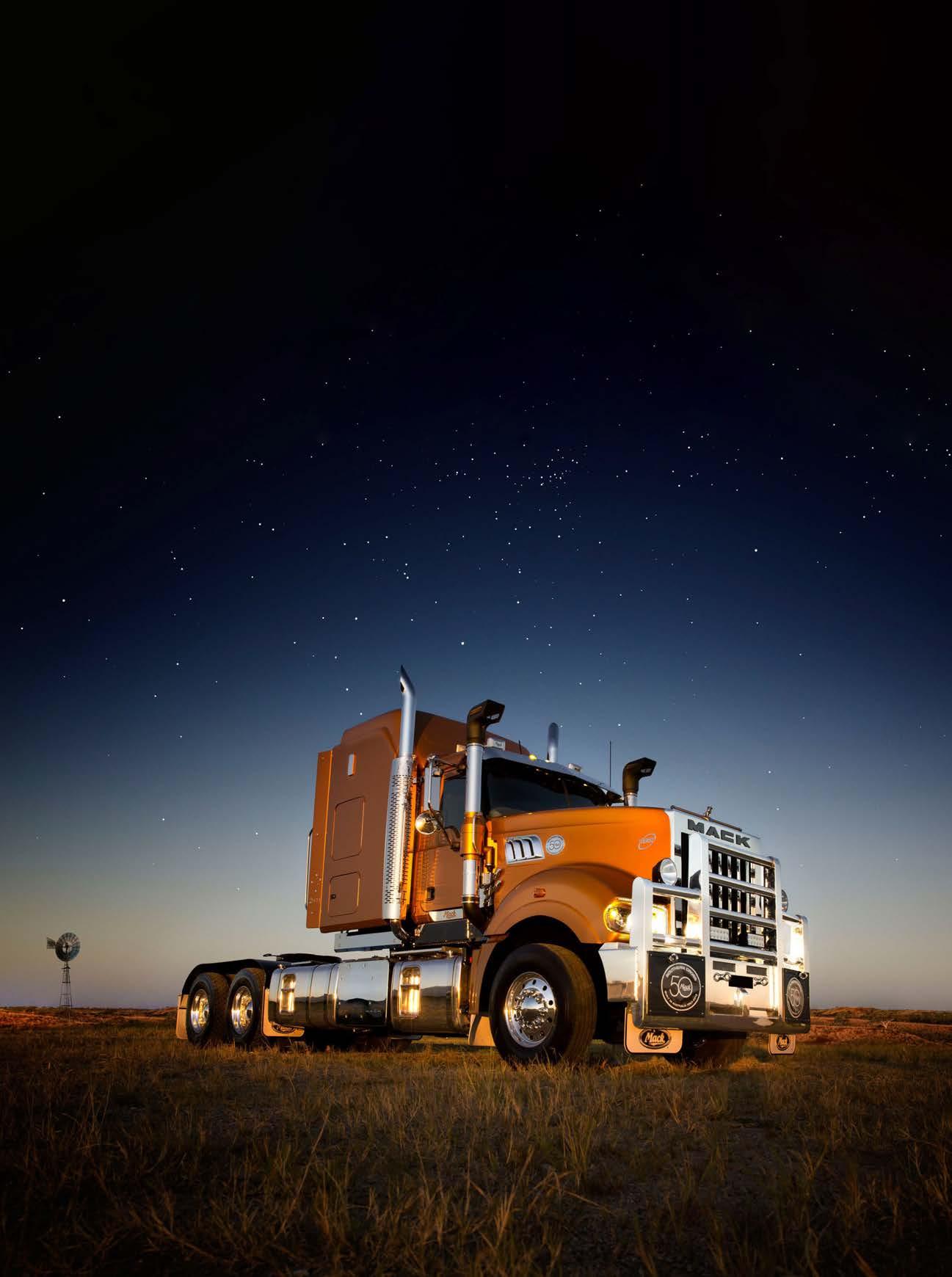

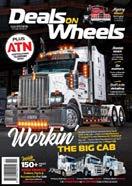





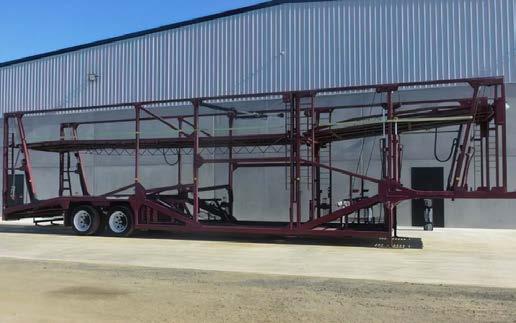
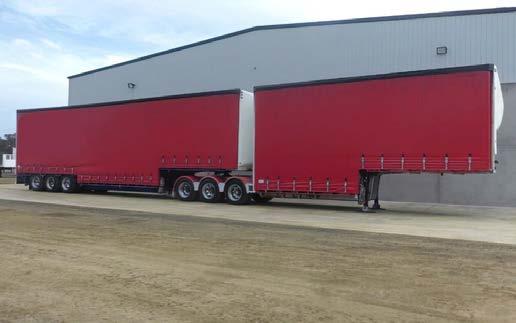
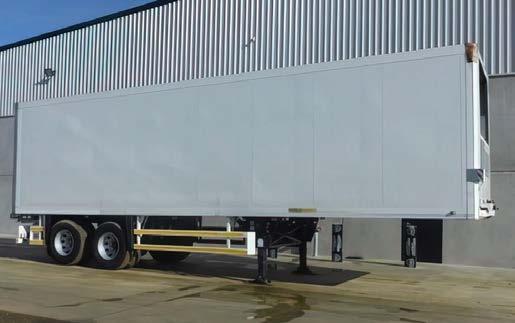
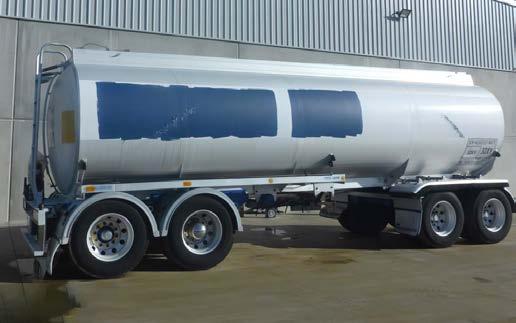
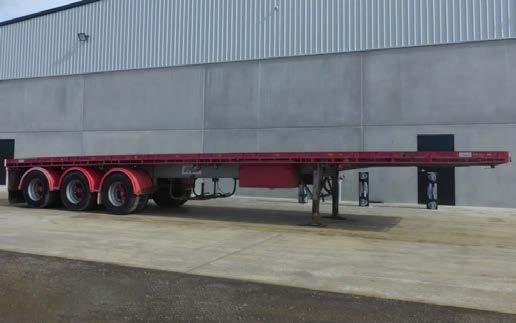
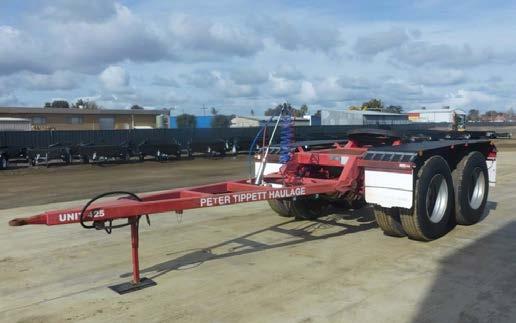
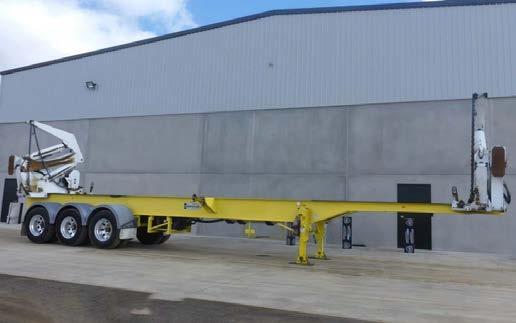
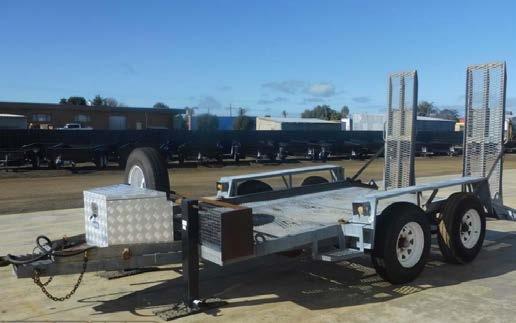
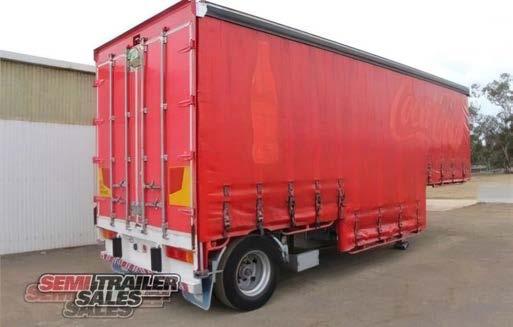

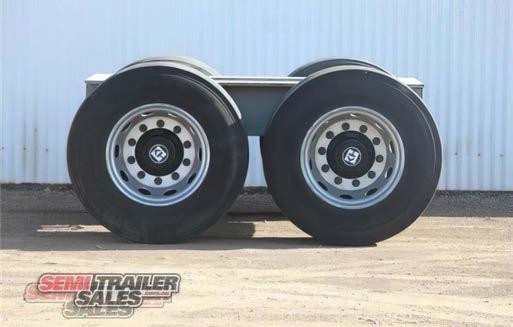

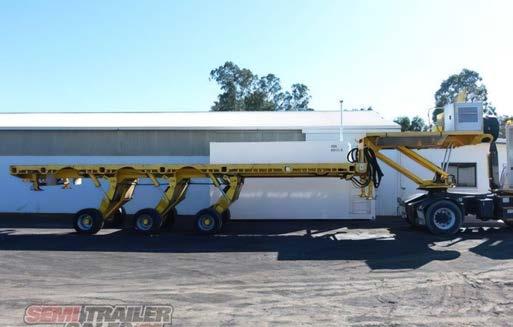

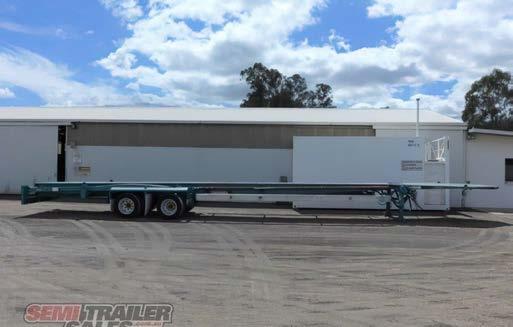

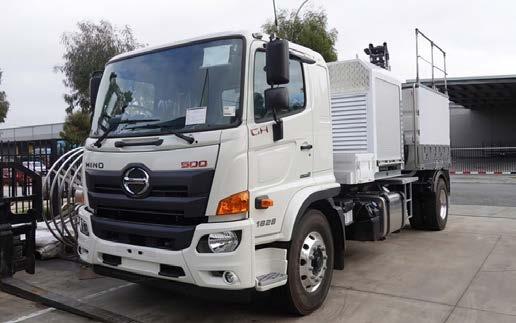
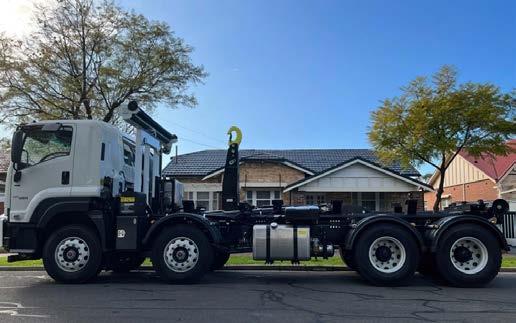
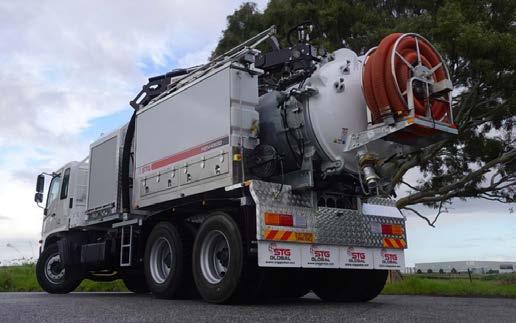
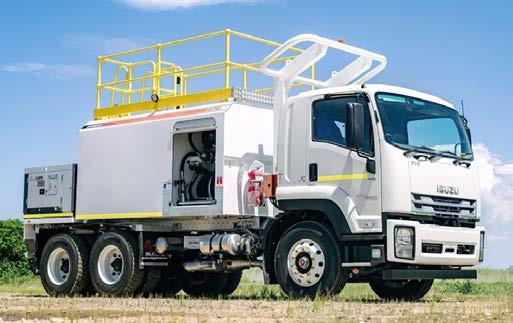
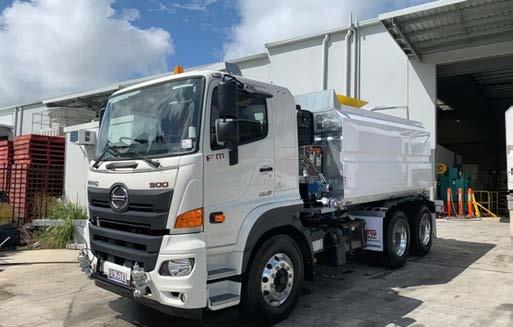
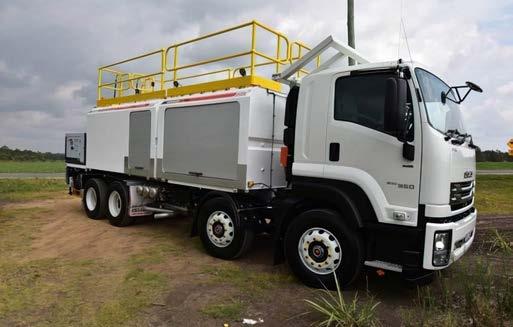





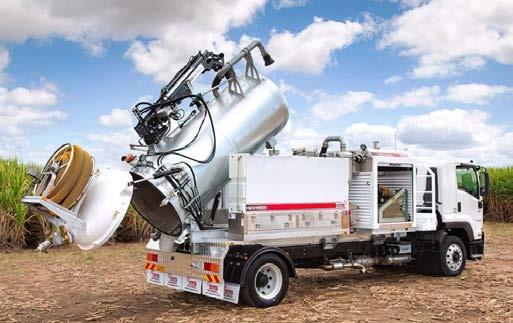

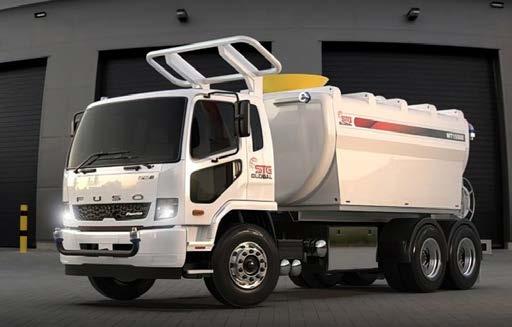
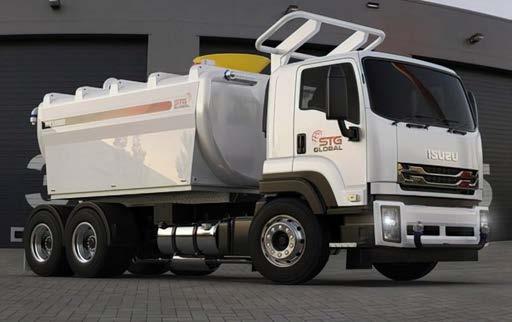
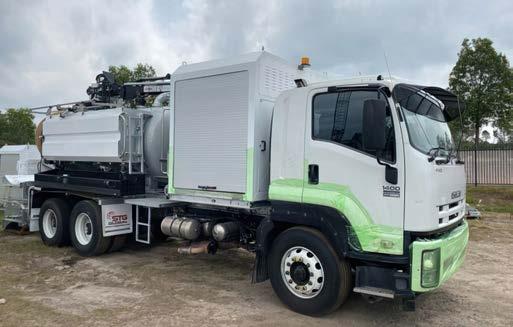




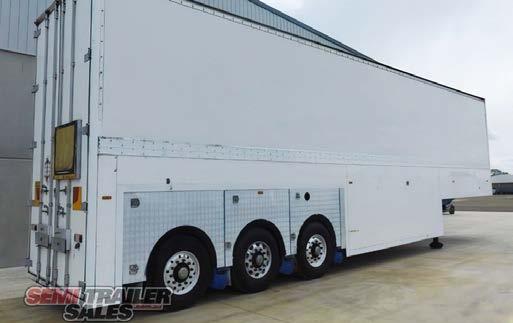
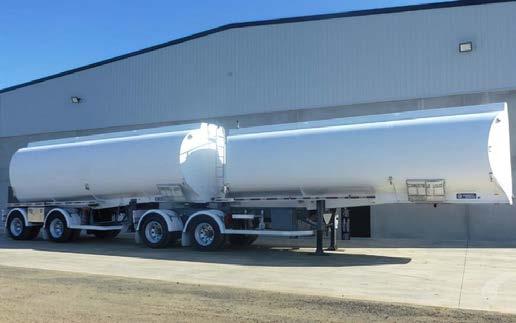
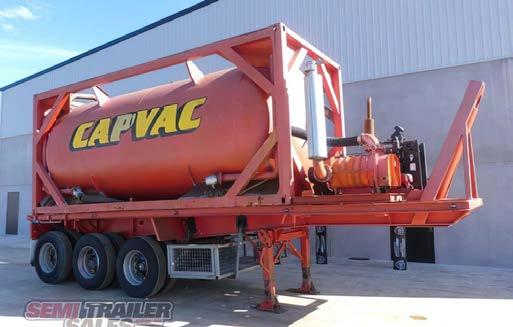


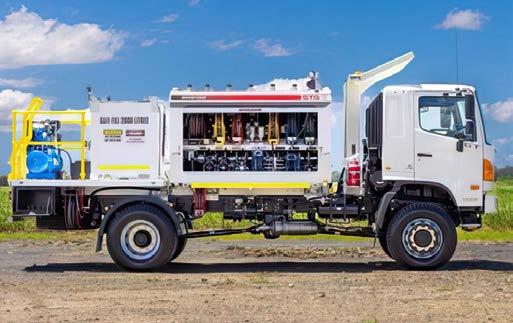
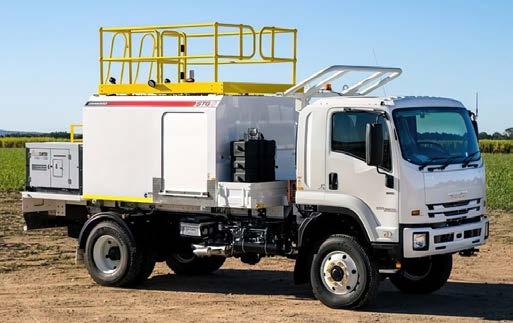

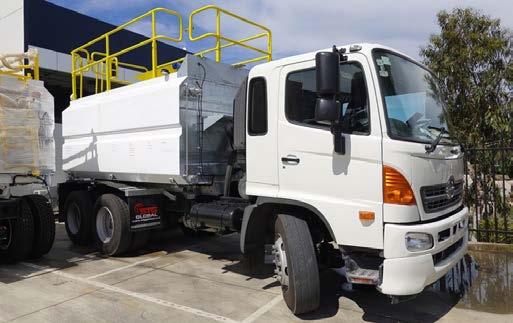
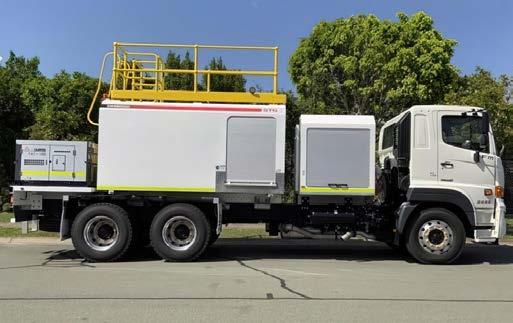

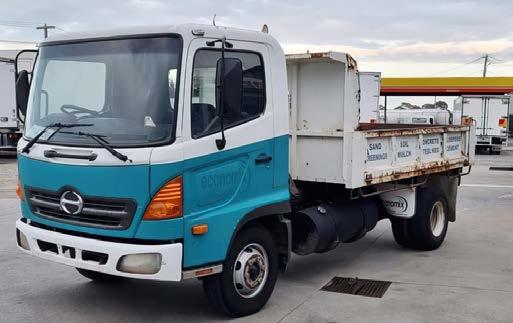

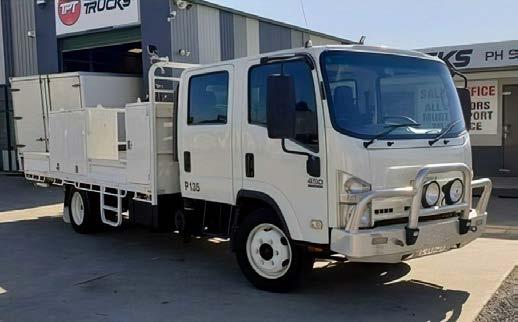
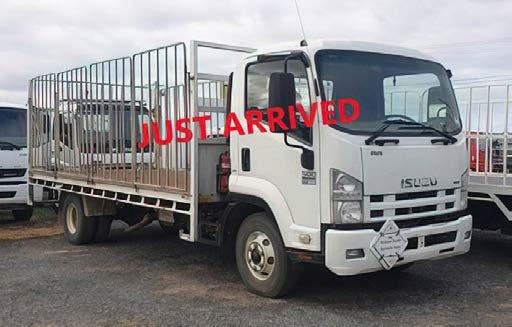
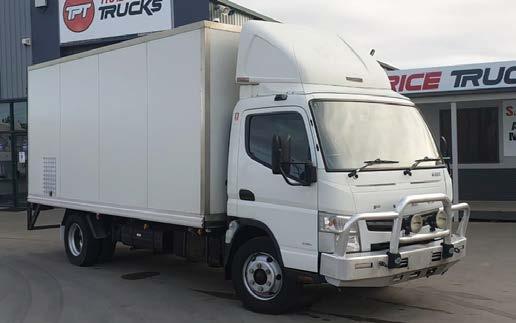



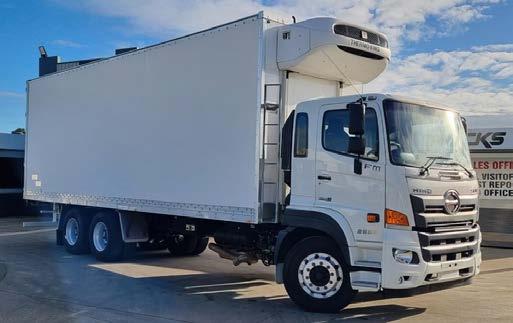
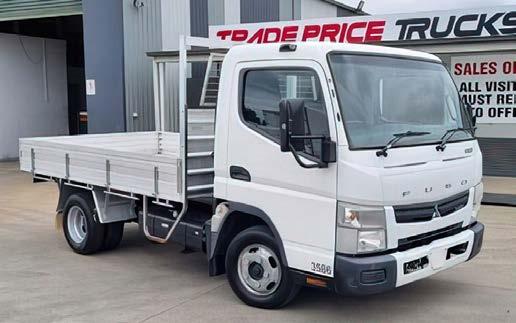
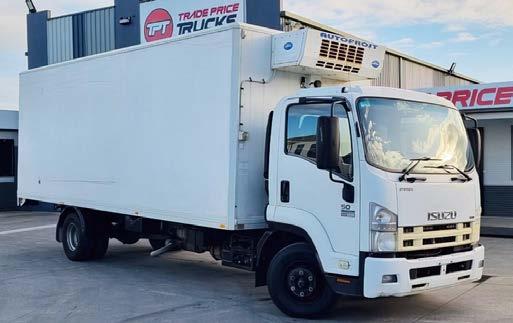
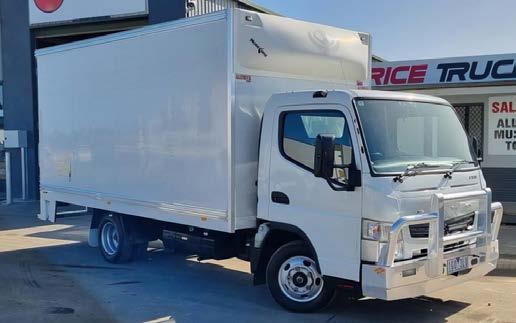
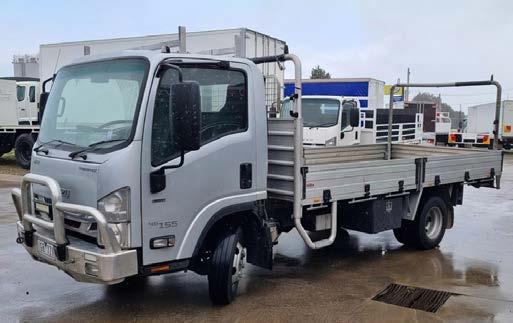
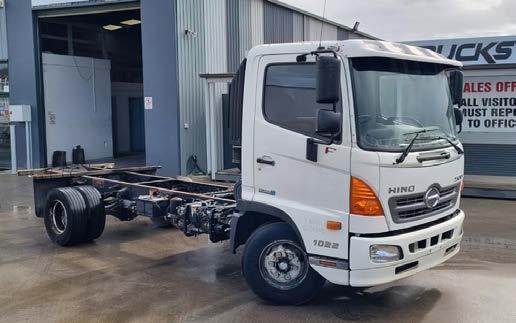
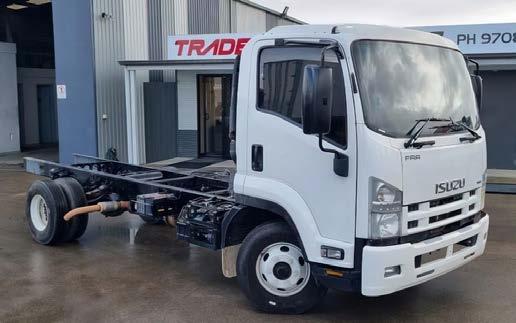

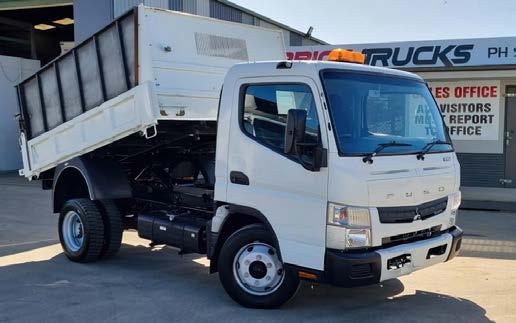
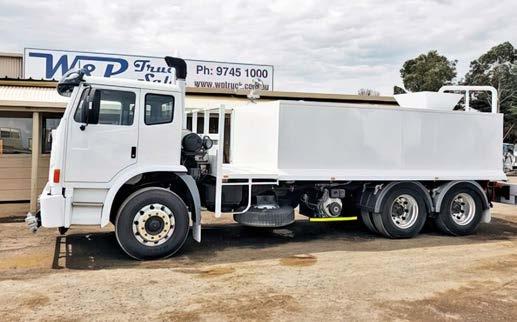


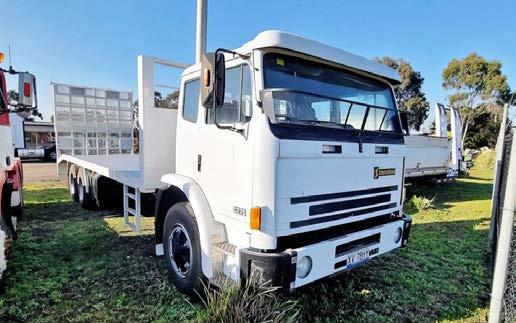
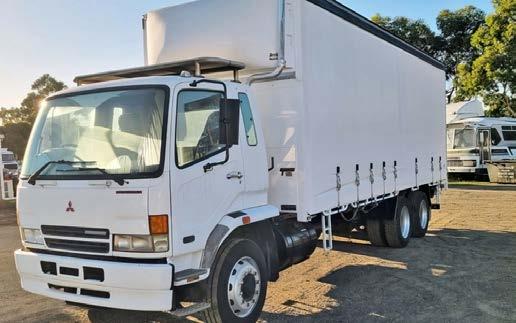
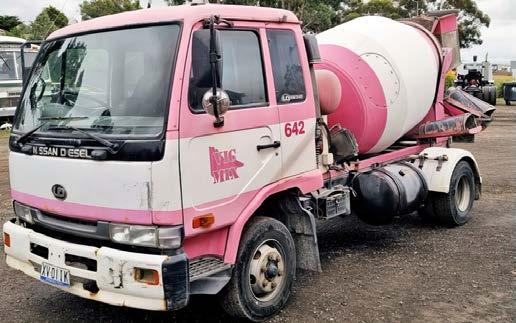
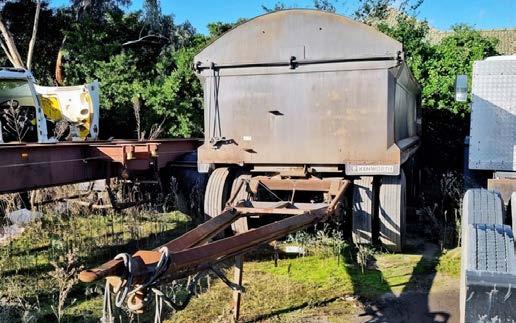
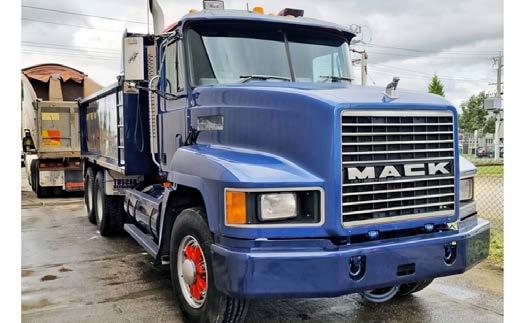
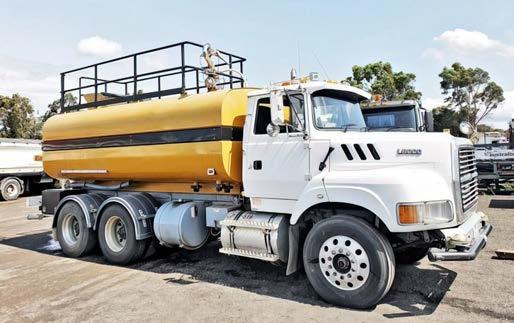
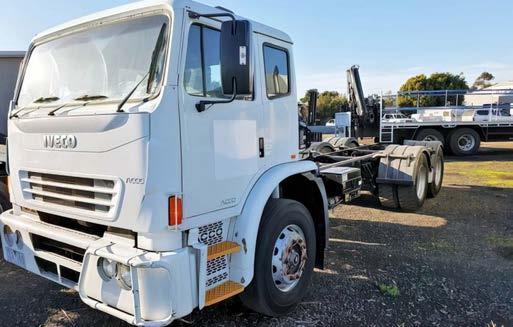
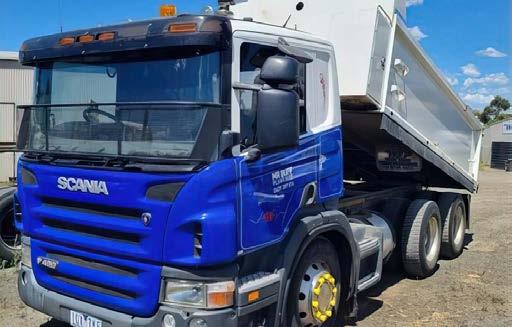
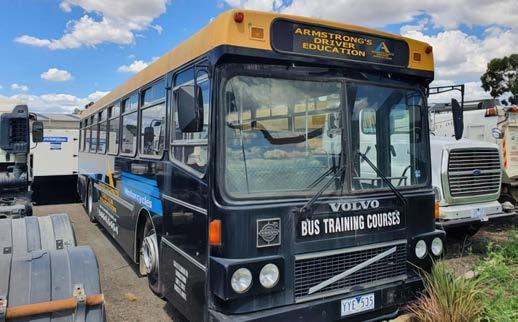
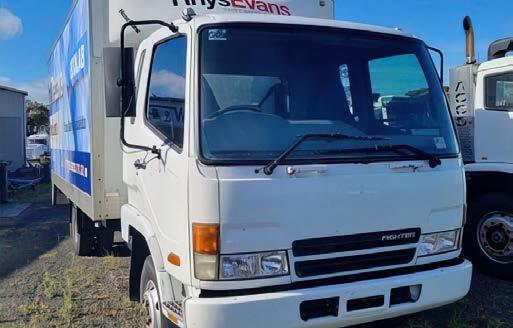
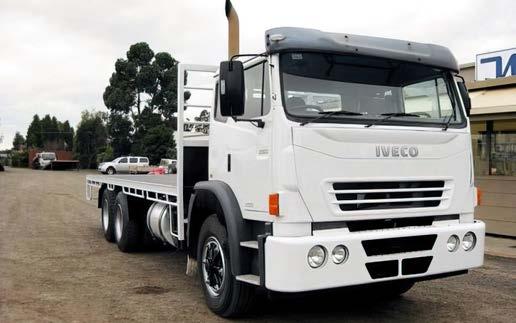

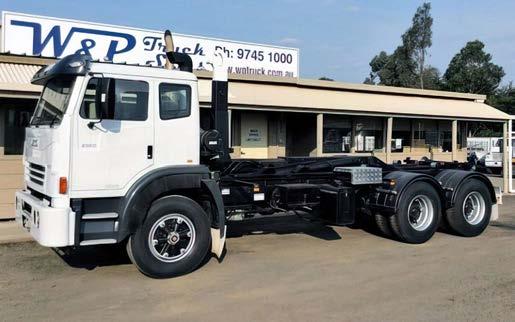

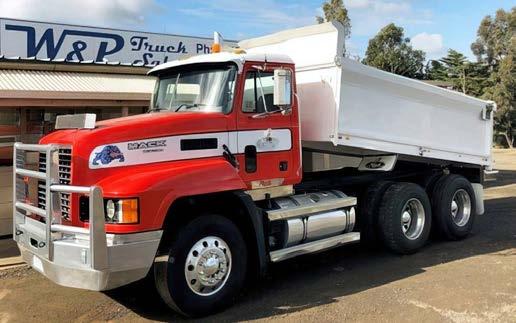


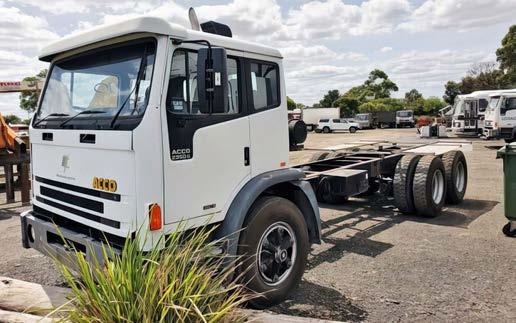

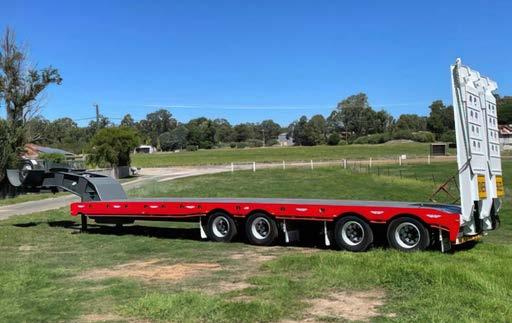
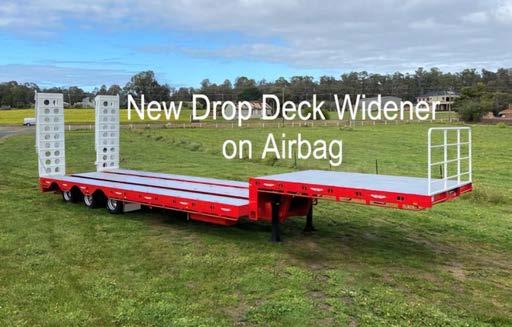
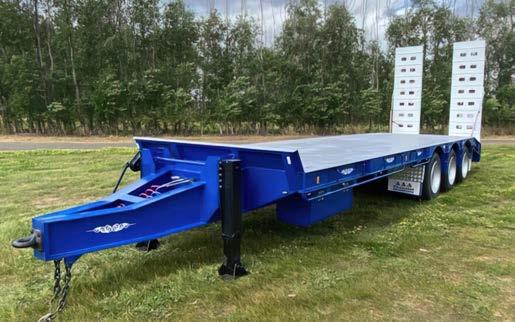
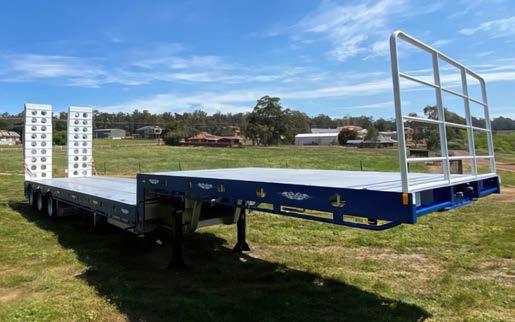
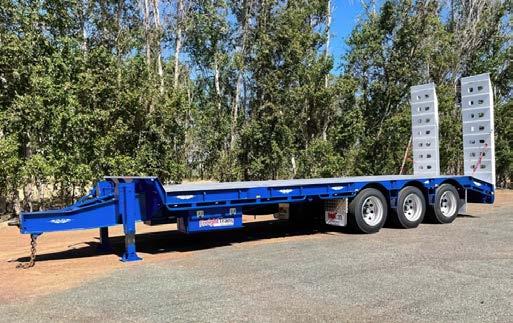

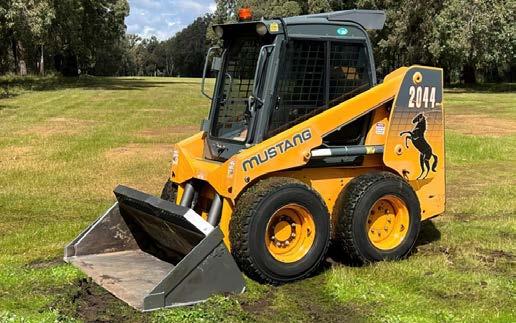
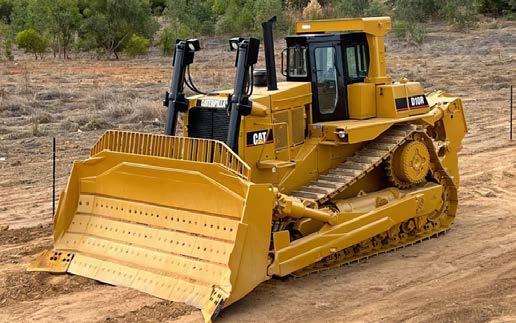
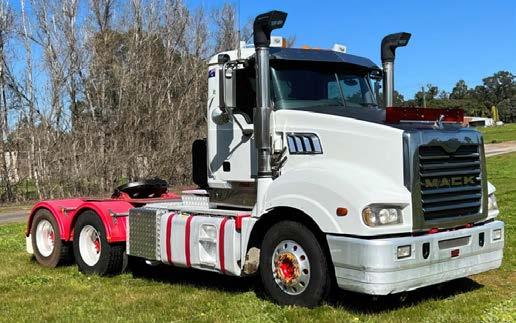
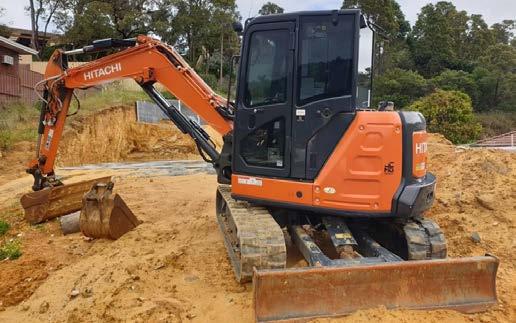
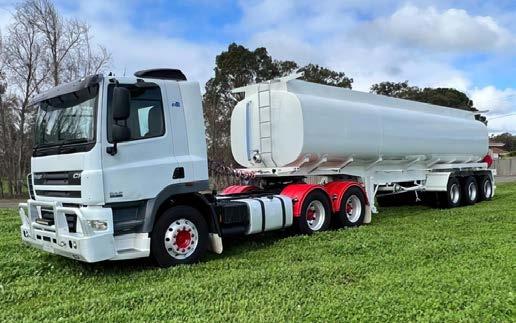
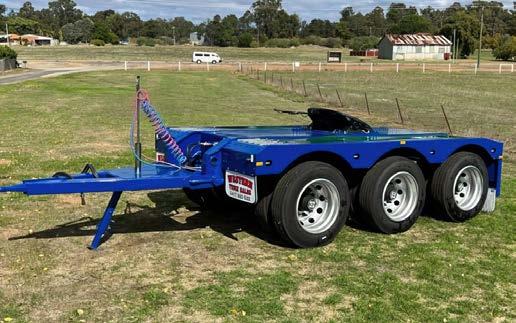

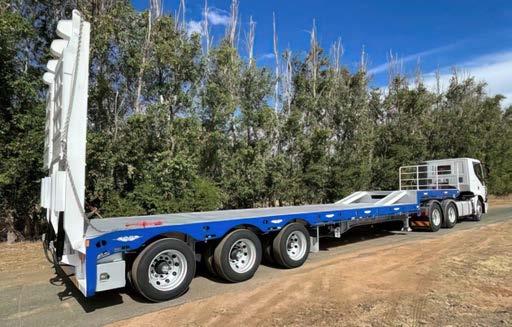
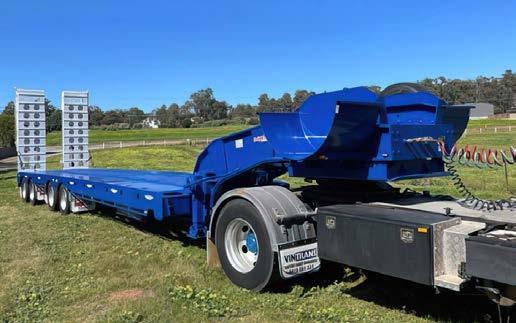

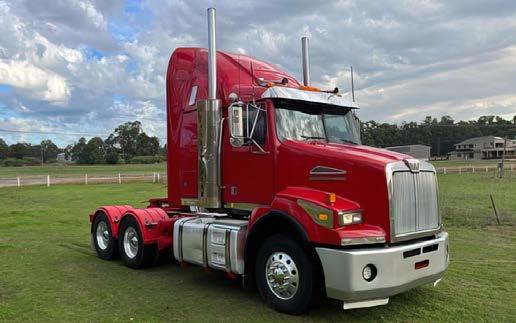
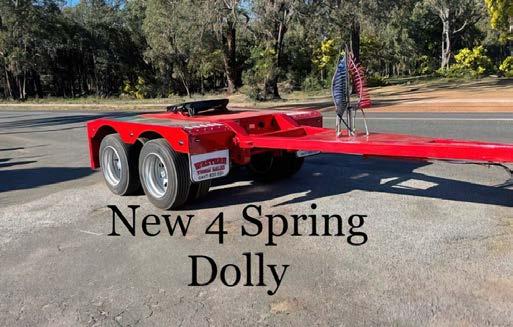
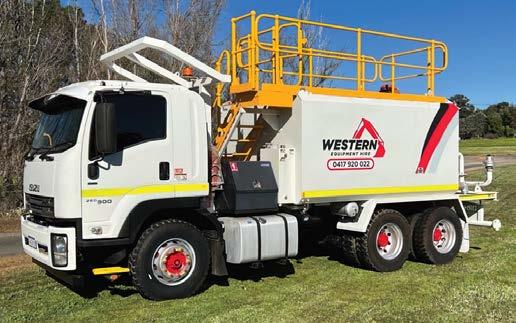
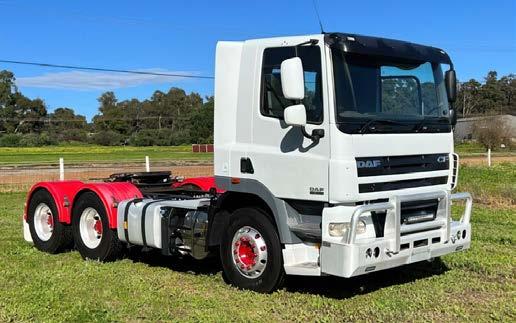


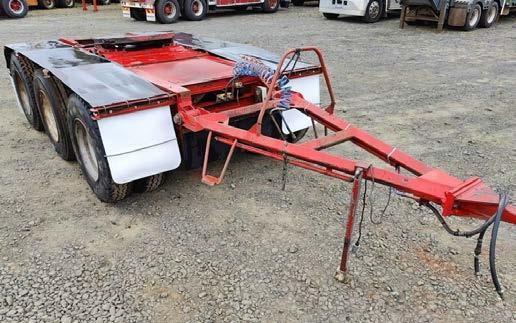
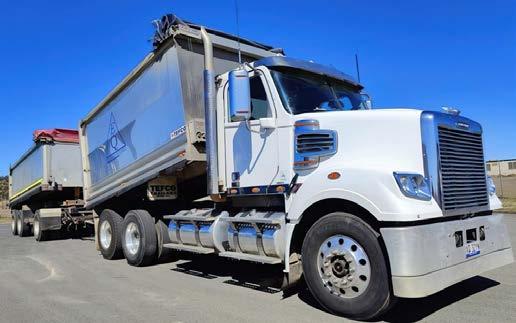

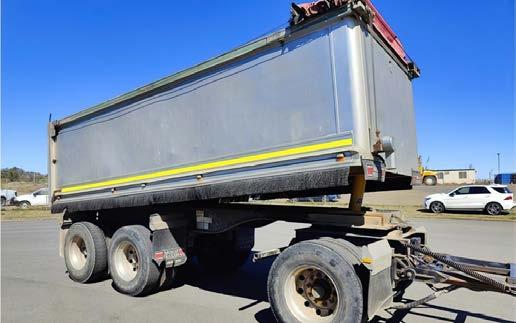


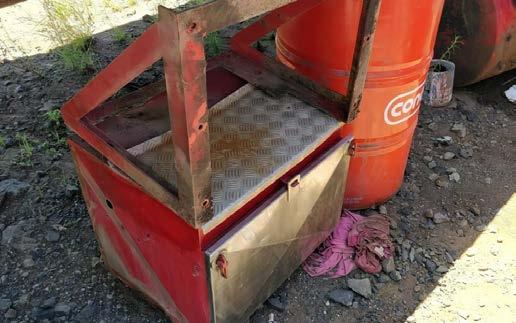





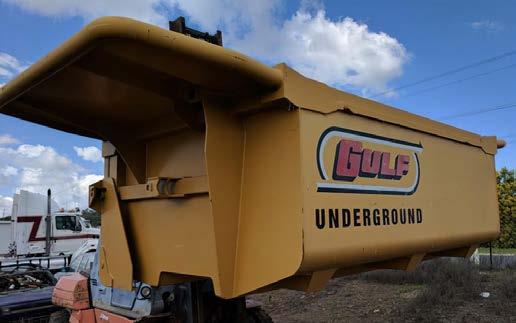








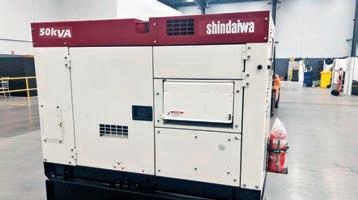


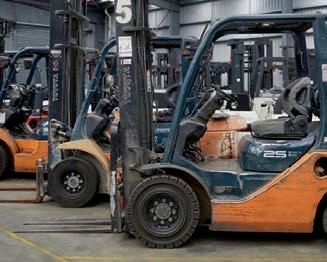
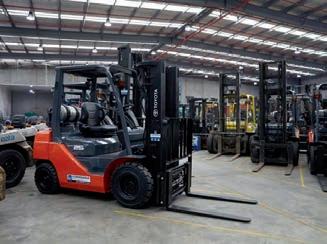
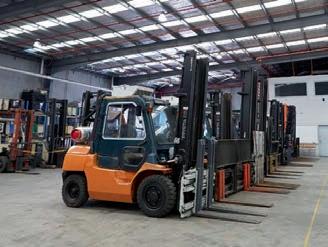

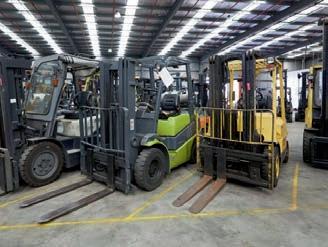
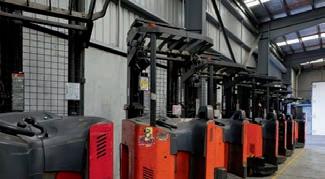

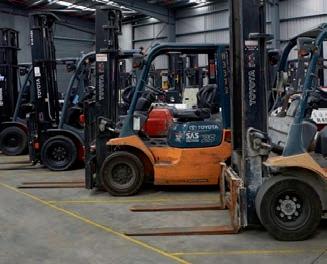

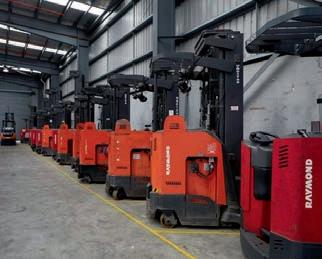

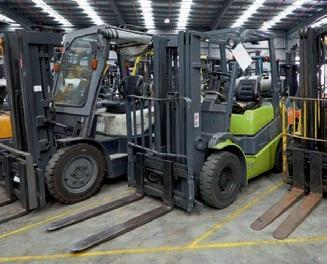

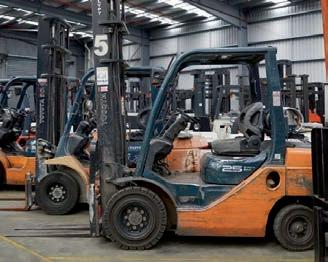


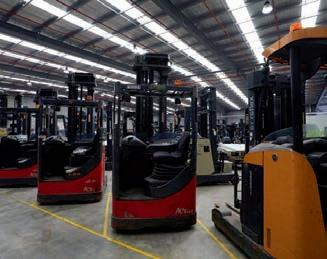

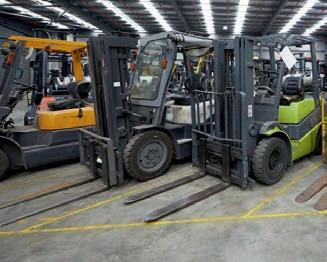

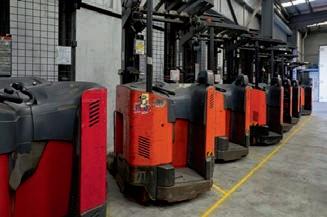


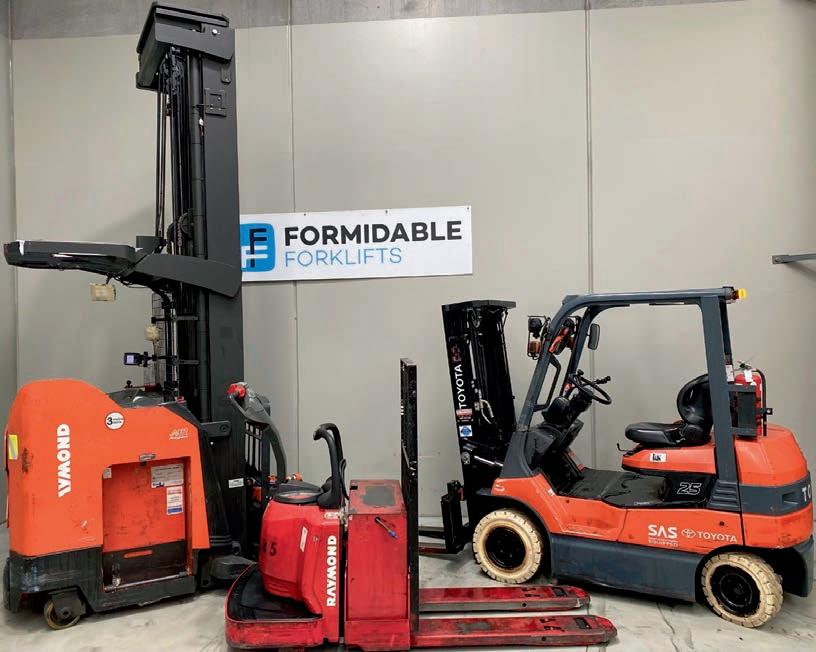
Growing Solutions Australia, based in Cabarlah, just north of Toowoomba in Queensland, recently purchased a new Toyota 8FG18 counterbalance forklift from Toyota Material Handling Australia (TMHA).
However, the nursery’s owner Jamie Currie is now also the proud owner of a new LHE150 electric pallet jack after winning TMHA’s Growers Prize Giveaway.
“We don’t win a lot of things, but it was brilliant to get the phone call,” says Currie.
“Sometimes you’re just happy with the meat tray at the pub, but this time we won an electric pallet jack which is great!”
Having started Growing Solutions Australia five years ago with his wife, Currie had previously been using an old forklift that came with the Cabarlah nursery when he purchased it. However, the need arose for a replacement.
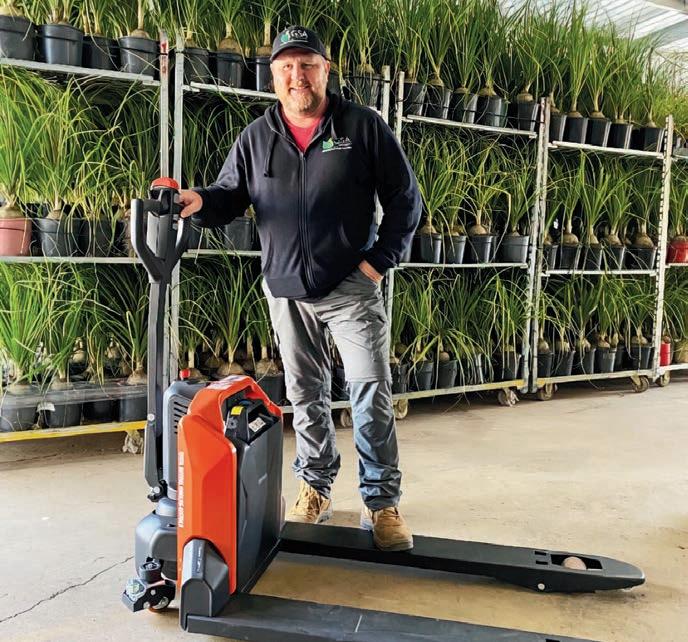
“One of my mates who also owns a forklift bought it through the same salesman, Max Reindl,” Currie says.
“Knowing that a colleague also purchased one through Max, knowing that it was a Toyota and knowing the Toyota comes with all these different benefits and its reputation, it was a simple decision for me.”
Having moved from an older competitor’s forklift, Currie says the
Toyota 8FG18 machine offers a significant step up in features and usability, making for a simple-tooperate machine.
“I’d just say that from the machine that I’ve moved from, from a business owner’s point of view, there’s obviously the safety features, and it’s just a very smooth and easy machine to operate.”
The prize of the LHE150 electric pallet jack was an added bonus as it features a compact design perfect for light applications, and a maintenance free lithium-ion battery for fast charging.
When asked if he would recommend TMHA to others in the industry, he didn’t hesitate to say that he would “100 per cent” encourage others to jump on board.
“My response is very clichéd but if you look at people sharing their positive experiences in the media, mine is pretty much the same,” he says.
“From making contact with the rep, to the rep coming out and responding straight away, to delivering and having the machine, it was all made very simple.
“And with the quality of the product –in my opinion, if I compare it to the quality of other products out there, it was a no-brainer for me to go with Toyota.”
Sandvik has signed and completed an agreement to acquire 100 per cent of the equity interests in the Switzerland-based Sphinx Tools Ltd and its wholly owned subsidiary P. Rieger Werkzeugfabrik AG.
Sphinx Tools’ offering primarily consists of precision solid round tools (micro tools) and surgical cutting tools. The customers are mainly within the automotive, aerospace and medical segments. The company will be reported within Sandvik Coromant – a division within Sandvik Manufacturing and Machining Solutions.
“With the acquisition of Sphinx Tools we continue to execute on our shift to growth strategy,” CEO and president of Sandvik Stefan Widing says.

“Strengthening our position in round tools is one strategic priority for our machining solutions business and with this acquisition we will expand our product portfolio in the high growth area of micro tools.”
Sphinx Tools enhances Sandvik Coromant’s product offering within solid round tools and is an established player in the adjacent surgical cutting tools market. The company is present in Europe with three production sites in Switzerland and has global distribution.
“The acquisition of Sphinx Tools fits very well with our strategy to strengthen our position in round tools. With Sphinx Tools we will have the opportunity to take a global leading position in micro tools, a premium niche of round tools, expand our product portfolio and enter an adjacent area of surgical tools. We are very pleased to welcome Sphinx Tools to the Group,” president of Sandvik Machining Solutions Nadine Crauwels says.
Sphinx Tools was founded in 1994, has around 115 employees and is based in Switzerland. In 2021, the company generated revenues of approximately 292 MSEK. The EBITA margin is neutral to Sandvik Manufacturing and Machining Solutions. Impact on Sandvik’s earnings per share will be limited, yet slightly positive. The parties have agreed not to disclose the purchase price.
Growing Solutions Australia has enjoyed a welcome bonus after becoming a customer of Toyota Material Handling Australia for the first time Growing Solutions Australia owner Jamie Currie with his TMHA LHE150 electric pallet jack prize CEO and president of Sandvik Stefan Widing Swedish engineering company Sandvik has acquired precision tools manufacturer Sphinx Tools























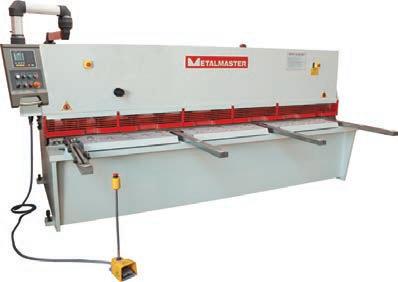




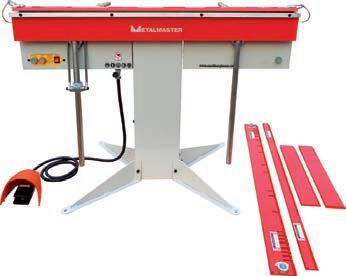












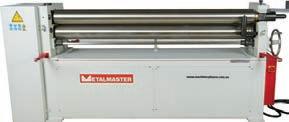





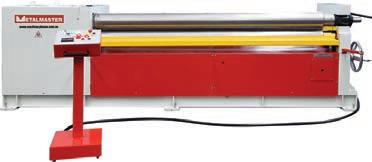




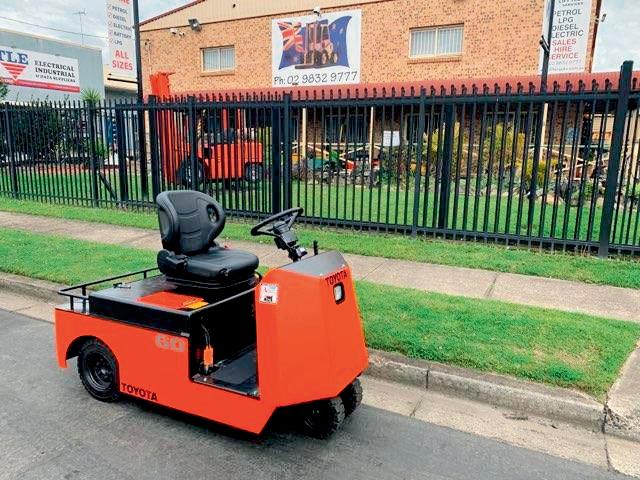

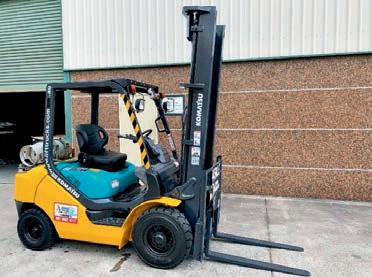

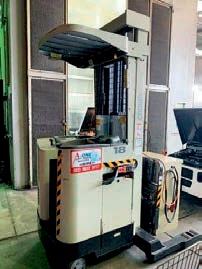
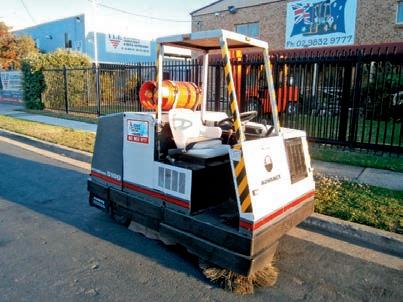





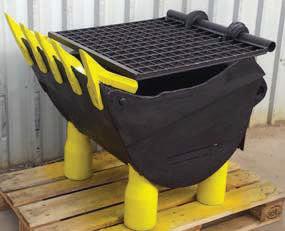
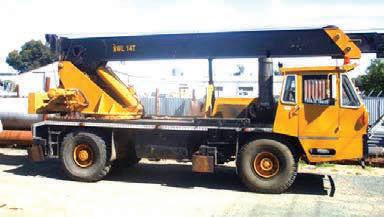


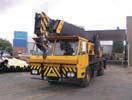



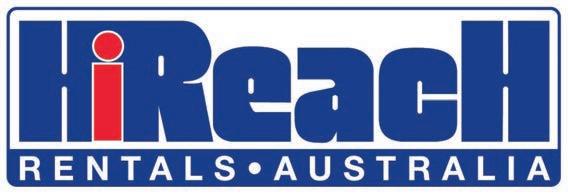
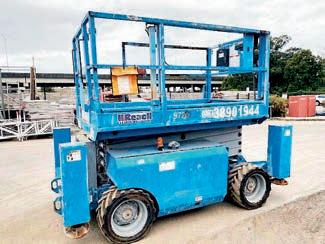

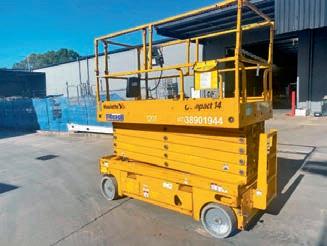
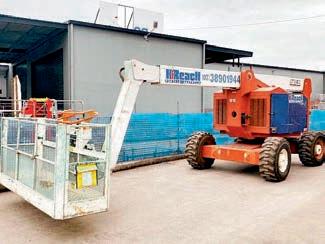

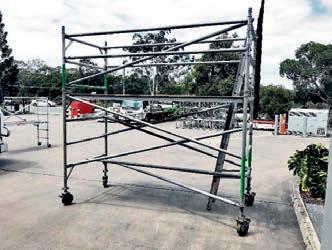

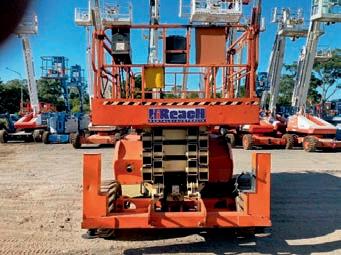
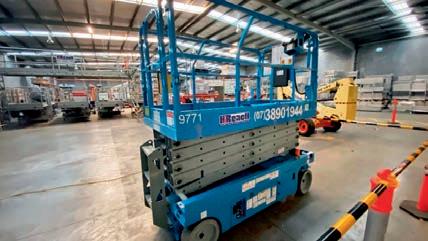

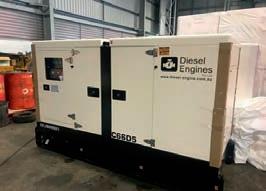



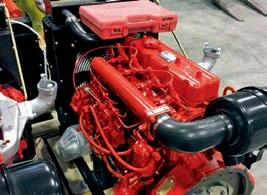
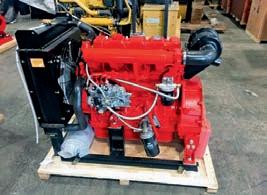

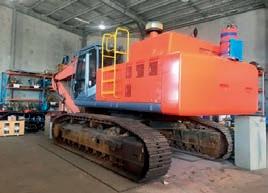
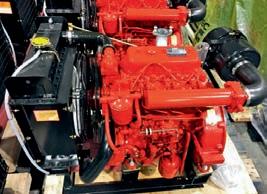
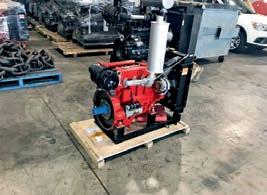
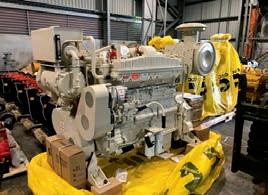
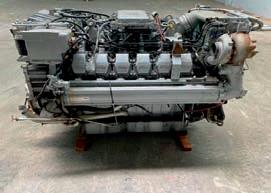

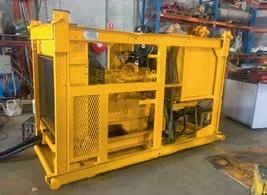
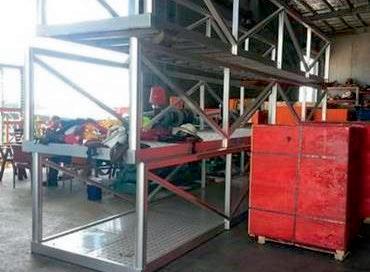

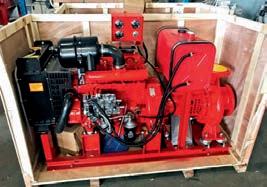

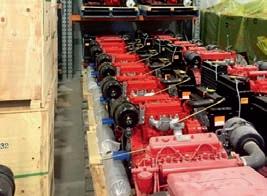

































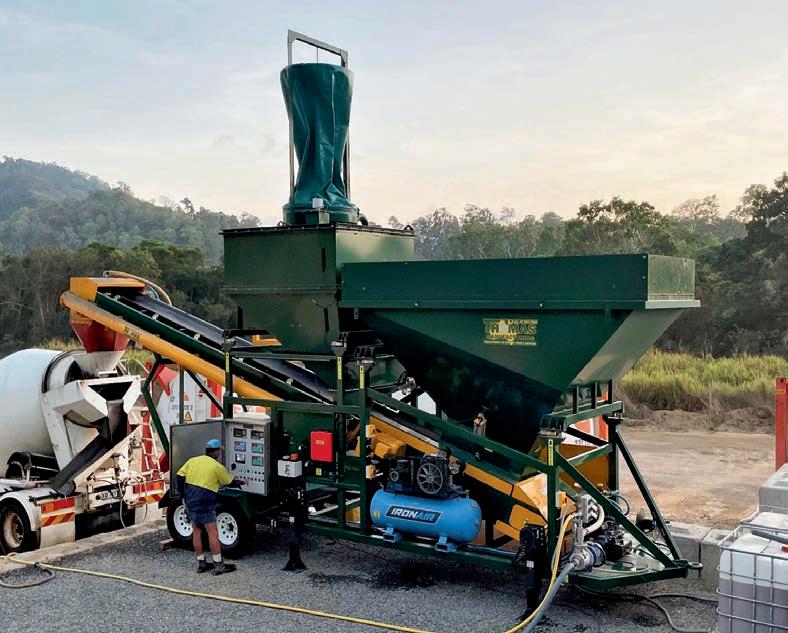
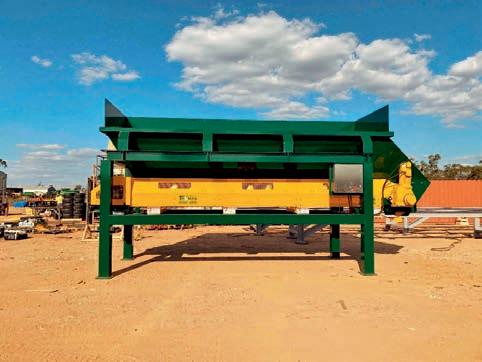
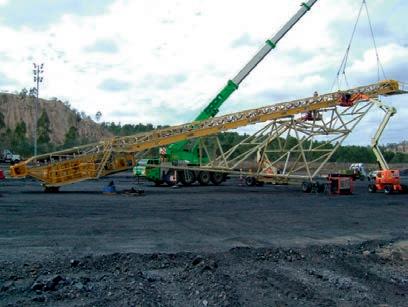
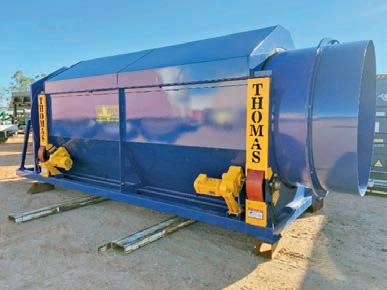

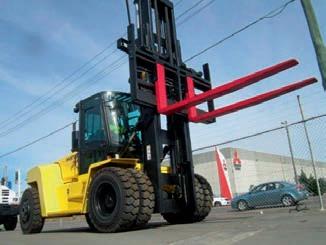
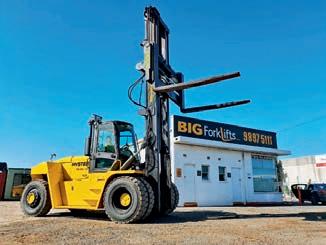


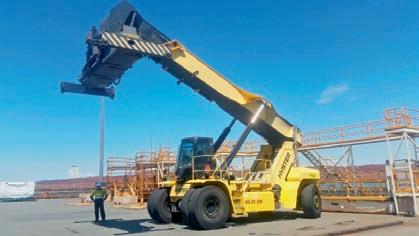
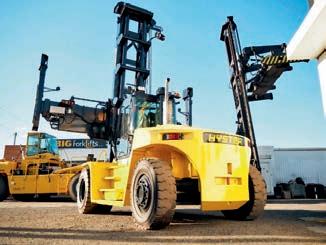

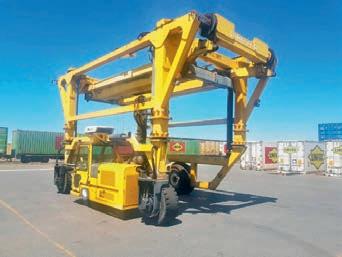
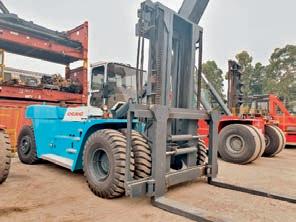
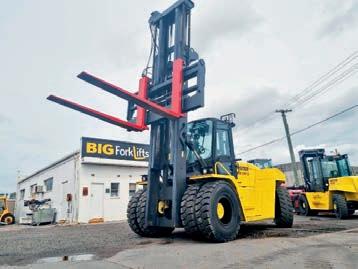
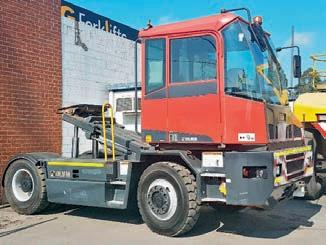
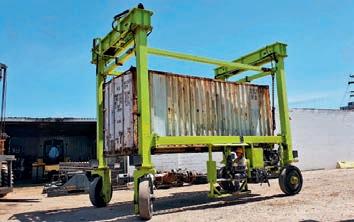
ALLIS-CHALMERS/HANOMAG/MASSEY
JOHN DEERE INDUSTRIAL
PARTS FOR Dozers, Loaders, Drotts, Graders, Scrapers
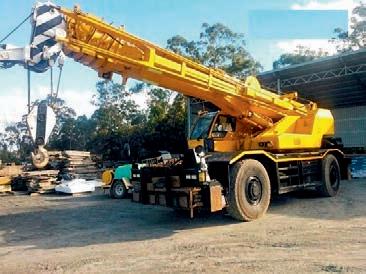

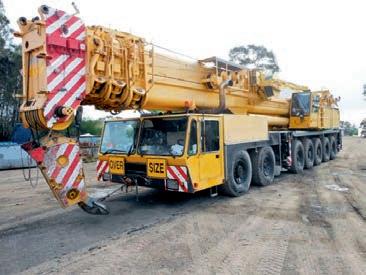
ALLIS-CHALMERS: Model “M”, HD5, HD6B,E, HD7W, HD7G, HDIIB, EP, HD15-16, HD16DC, HD16DP, HD19-21, HD41B
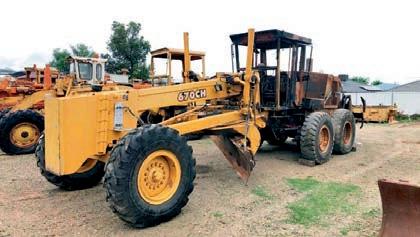

FIAT: 451C, 555, 605, 50CI, 70CI, AT7C, 8B, BD10B, FD10E, BD20
HANOMAG/MASSEY: 2244, 200, 300, 3366, 400, 500, L400C, L600C, D600D Super, D700C
JOHN DEERE : 1010C, 850
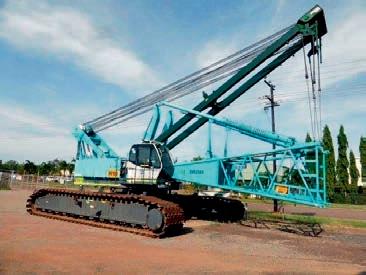
ALLIS-CHALMERS: TL12D, TL14, TL20, 545, 605B, 645, 745B,C
FIAT: FR20B LD3, LD5, LD7 & LD9 Scoopmobile HANOMAG/MASSEY 22,33C,44, 55, CL55C,66C-D, 77
ALLIS-CHALMERS: D, DD, M65, 65B, AD30-40, 45, 145, M100A, B, FG95

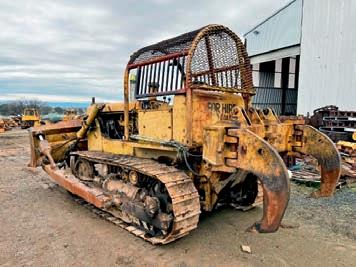
DRMCO/CHAMPION 562, 600, 720, 740
JOHN DEERE 570, 570A, 670A, 770, 770A, 772A
ALLIS WHEEL TRACTORS AC D17, D19, D21, XT190, 7000, 7010, 7020, 7040, 7060, 7080, 8010, 8050, 8070, 7580, 8550, 440
Track
FIATAD12 Justinfordismantling,angletiltblade,Milanorear ripperassy,verygoodundercarriageallround,powershift transmission,allpartsavailable,phoneBrendan0267624466. S170. TA1140724. Justinfordismantling,hydraulicbulltilt blade,swiveltynerearrippers,turbo11,000seriesrunningengine, FIATALLISHD16B Justinfordismantling,bullttilblade,Milanorear rippers,treepusher,excellentunderacrriageallround,powershift transmission,17,000MKIIengine,allpartsavailable,phoneBrendan 0267624466.S171. TA1140725. POA JOHNDEERE670CH Justinfordismantling,12footmoldboard,front counterweight,DF180transmission,6068Tengine,allparts available.S161. TA1116745. POA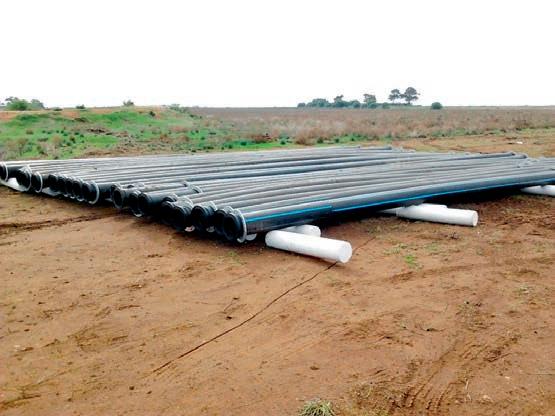
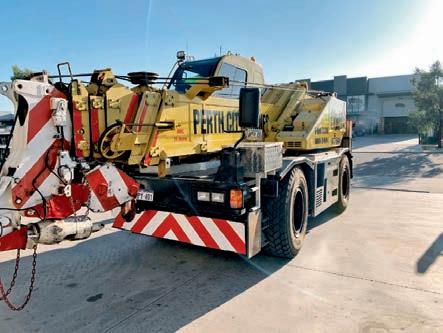
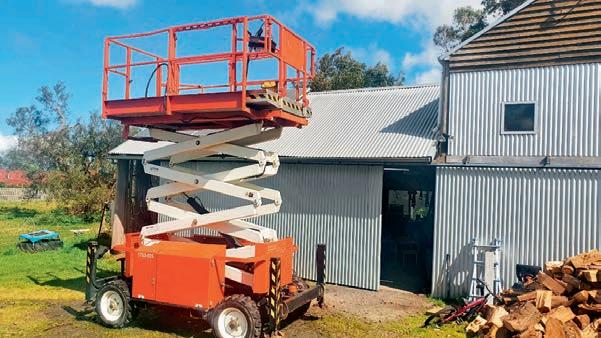
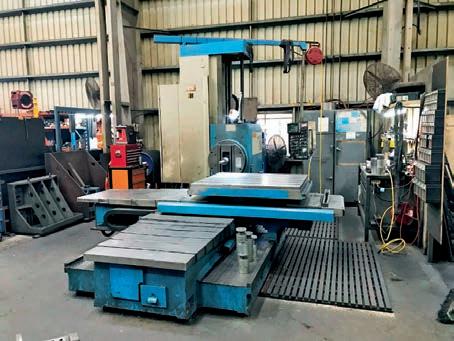








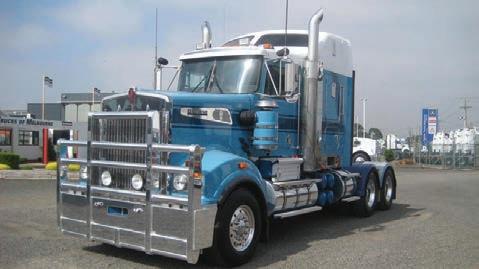












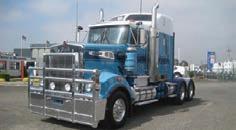



 Powered
Powered
AAA


Chevron (QLD) 35
Complete Equipment Sales Pty Ltd (VIC) 55
CTR Used Trucks (VIC) 30
All Diesels (QLD)
Allfreight Finance Brokers Pty Ltd (VIC) 6
Anda Trailers and Equipment (VIC) 99
Andersen Gearbox and Diff (QLD) 84
Ballarat Isuzu (VIC).........................................................................................33
Barnsey’s Trailer and Truck Sales (QLD) 76
Bincorp Equipment (NSW) 275
Bonaccord Ingram (VIC) 76
Camilleri Tarps (VIC)
Canfred Engineering Pty Ltd (VIC) 168


CMV Truck & Bus - Clayton - New (VIC) 37
CMV Truck & Bus - Clayton - Used (VIC) 34
Echuca Moama Trucking Wrecking (NSW) 176
EPJ Trading Company (VIC) 57
Fleet Plant Hire Pty Ltd (VIC) 48
Freightmore Transport (SA) 22
Geelong Isuzu (VIC) 32
Gerard Elliott (VIC) 179
Gibbs Truck & Trailer Parts (QLD) 44
Hino Australia (NSW) 29
HRS Trailers (NSW) 67
City Bus and Truck Centre (VIC) 2 , 16,
Carroll Motor Group Pty Ltd (QLD) 25
Castrol Australia Ltd (NSW) 21
Hume Highway Truck Sales (Aust) (VIC) 26
Hyundai Commercial Vehicles Austrralia (NSW) 93
Isuzu (NSW) 276
Just Jap Truck Spares (QLD) 97
Lionel Moore Trailers (QLD) 95
Loughlin Transport Equipment (QLD) 86
McGhie Truck & Machinery (VIC) 274
Modern Transport Engineers Australia Pty Ltd (QLD) 47
Mount Gambier Isuzu & Iveco (SA) 34
MTP QLD Pty Ltd (QLD)...............................................................................36
Natroad (ACT) 59
North Side Trailers - SA (SA) 61
NQ Truck Wreckers (QLD) 185
Private Advertising Coupon 271
Richlands Equipment Sales (QLD) 89
Sammut Agricultural Machinery Pty Ltd (NSW) 63
SelecTrucks of Melbourne (VIC) 38
Southeast Truck Wreckers (VIC)...........................................................186
Start Fresh Finance (QLD) 13
Stonestar (VIC) 11
Trucktool (VIC) 189
Universal Truck Wreckers (VIC) 176
Volwreck (VIC) 180
W & P Truck Sales (VIC) 49
WACME Pty Ltd (VIC) 86
WTP (NSW) 42, 194
Zed Wrecking (VIC) 182







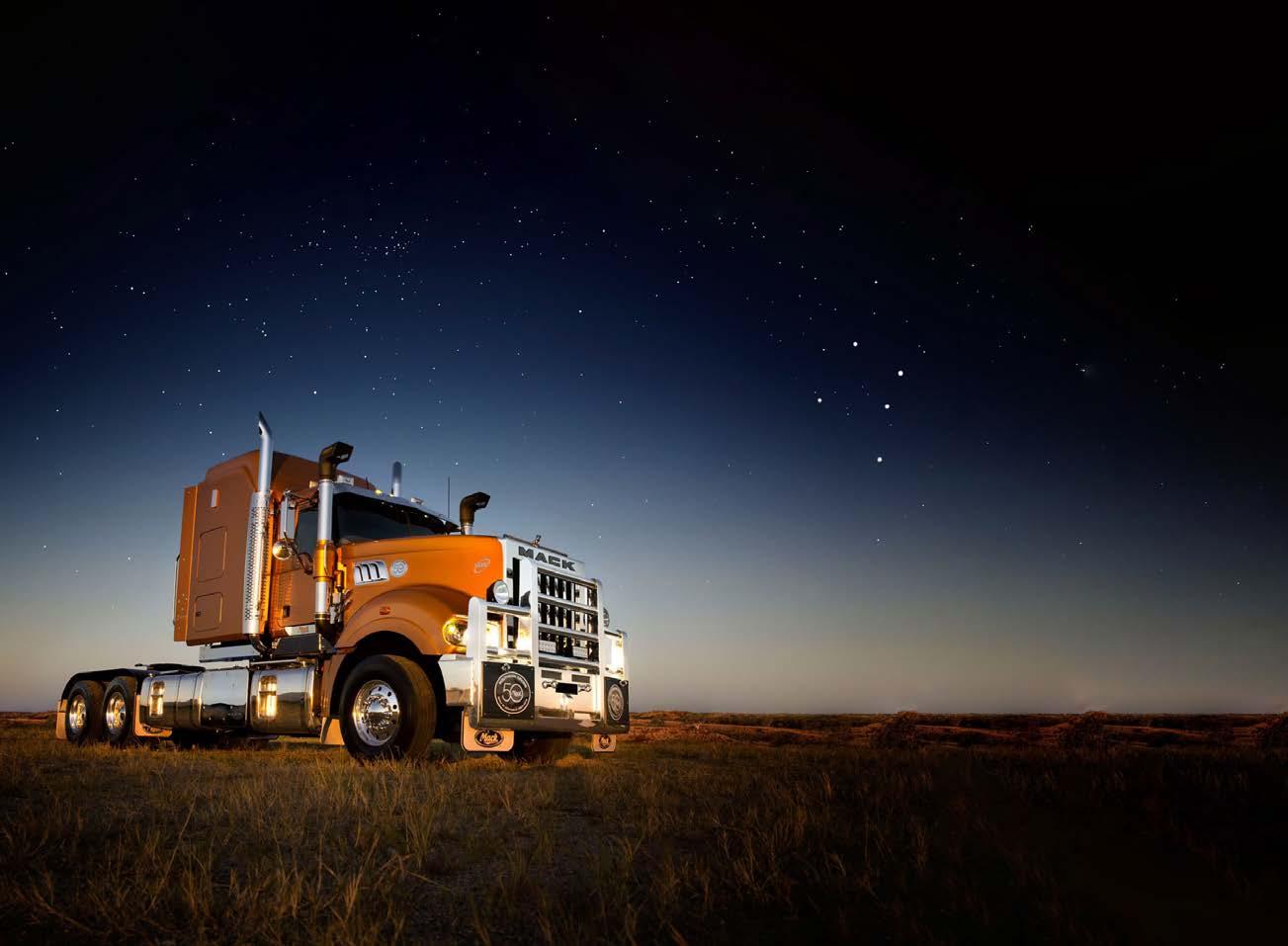
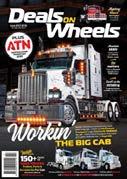





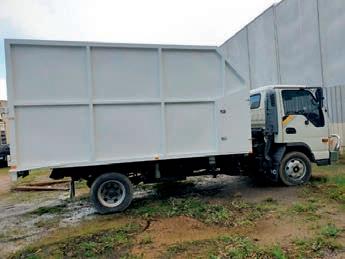
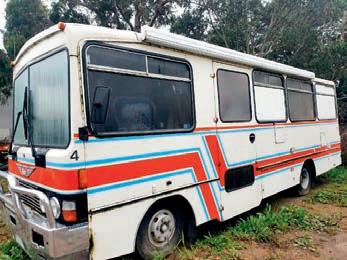
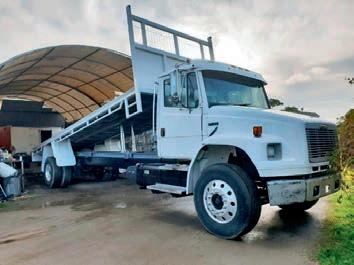
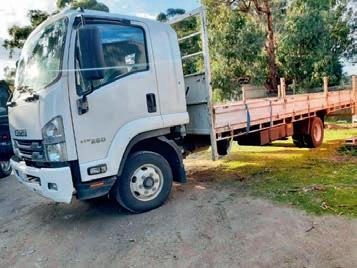
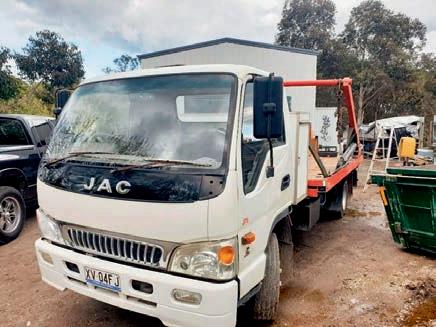
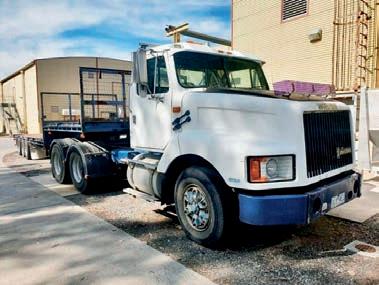
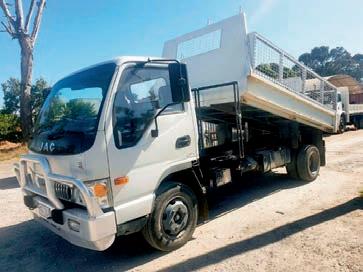
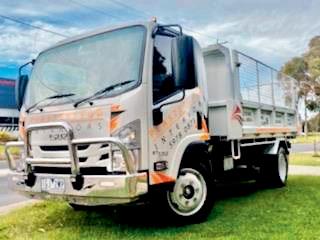

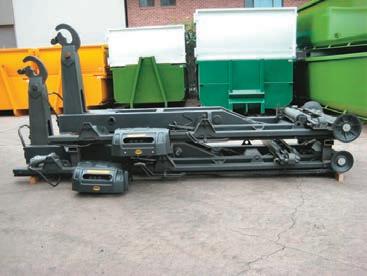
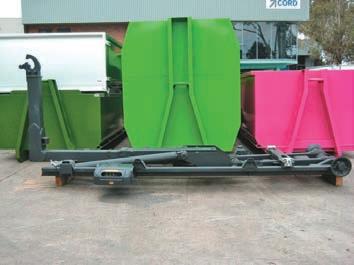
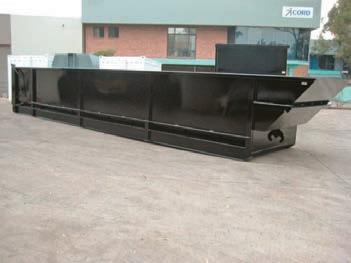
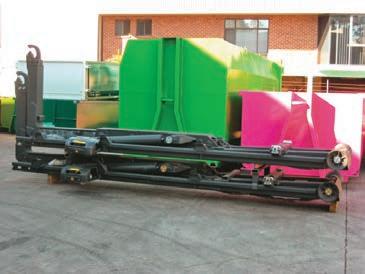

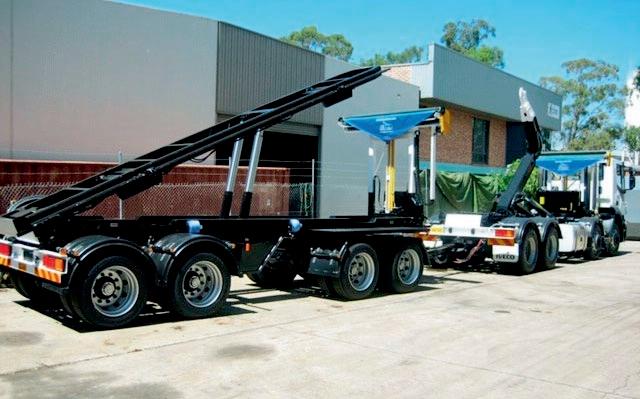
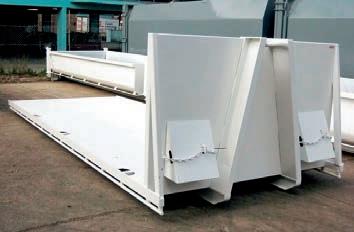
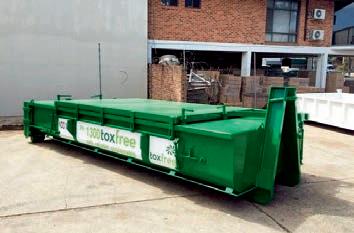
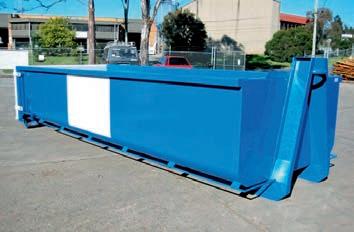
Since Isuzu Trucks launched in Australia half a century ago, generations of businesses have relied on our trucks to deliver, day-in and day-out. As they’ve grown, we’ve grown along with them to become Australia’s number one truck brand. And we’ll be right here helping build businesses for a long time to come, because we know that reputations are riding on us. To find out how Isuzu can help you grow, visit isuzu.com.au
